December 2021
This chapter is all about trekking and wildlife that abounds all around Uganda. My friend Debby and I were traveling with Natural Habitat (Nat Hab), a company I have traveled with, and written about, before. We were joined by Matt M from Pennsylvania. The main raison d’etre for this trip was to see the mountain gorillas of Uganda, and that, in fact, is the main reason most tourists come to Uganda. We were originally scheduled to do two treks in Uganda and two in neighboring Rwanda, but COVID shut down the border between the two countries, so we were to do 4 gorilla treks all in Uganda.
We started out in Entebbe, made our way to Kibale National Park, then Queen Elizabeth National Park, and then to the north and south of the Bwindi Impenetrable National Park.
During the two weeks we also saw all sorts of beautiful birds and other wildlife. But first, we would get our feet wet (almost literally) by doing slightly easier treks to see the chimpanzees. The photographs are mine, but the videos are mostly Debby’s and sometimes Matt’s or Paul’s and every once in a while, mine.
Our team
Our guide was Paul Kirui, one of the most distinguished safari guides and photographers, ranked as one of the highest guides. Paul is from Kenya, but his knowledge about Uganda, Tanzania, Congo, Rwanda and other parts of Africa was astounding. He has also worked with the BBC Natural History film unit since 2006 as a leopard tracker and as a consultant for the BBC’s Big Cat Week and Big Cat Live programs. He was the wildlife still shots photographer for BBC’s Big Cat Diary, and his photos were featured on the DVD cover of the Big Cat Live program in 2008. Paul also took part in shooting the BBC documentary The Truth About Lions in 2009, as well as helping DisneyNature during the filming of African Cats in 2009-10. I have more about Paul in other chapters, but this is just an introduction to tell you how lucky we were to have Paul with us. You can view some of his work on Instagram at @paulonsafari.
Our driver was Sulai Iga, born and bred in Uganda. Given the condition of the roads in Uganda (very few are paved and most are rough, dirt roads – more on this later), Sulai was the consummate driver, keeping us safe, and conquering the crazy roads. But Sulai was so much more than just a driver. His knowledge of everything Uganda, from the lifestyle, the people, the history, the vegetation, the animals and birds – was astounding and he added so much to our journey. Not to mention his beautiful smile…
Paul and Sulai have worked together for years and made a great team.
Entebbe Botanical Garden
We landed in the morning and after going through all the official checkpoints, we arrived at Hotel No. 5. There is more about this is the chapter on Life in Uganda. We met with Paul and Matt and headed off for our first outing to the Entebbe Botanical Garden or as it is officially called, The National Botanical Gardens of Uganda.
The Botanical Garden, established in 1898 (everything in Africa is old!), sits on the equator right on the north shore of Lake Victoria. What makes this garden special is the large collection of different species of plants and trees, about 200 indigenous to Uganda and 122 with known medicinal value. It is also filled with birds and monkeys. But what the gardens are also famous for is that the movie Tarzan, starring Johnny Weissuller was filmed here in the 1957.
We arrived and parked our car and were met by Richard who has been guiding here for many, many years and was incredibly knowledgeable. He taught us about all the trees, spotted birds and monkeys for us, as we walked all around the gardens.
- Richard
- Cannon ball tree
- flower from Cannon Ball tree
- Pitanga Cherry
- Pitanga Cherry
- Jack Fruit
- Warburgia ugandensis
The most interesting part was all the medicinal plants and trees. There is one tree, the Warburgia ugandensis or Ugandan greenheart, that has been discovered as a good treatment for Covid. Many locals come to the park and strip off the bark to take home and boil and drink.
There was an area for swimming and having lunch, with picnic tables. There were two statues there, one of a Uganda woman with her hoe and carrying sticks on her head. This turned out to be a very typical sight in Uganda. The other statue was of a gorilla, a very important animal in Uganda.
There were not many people around, perhaps because it was the middle of the week, or perhaps because of the pandemic. There was one young girl trying to sell candy but Paul taught us not to buy anything from children so as to not reinforce working instead of going to school. There were a few families with their children, there were two boys with a tire and a stick (which I would see over and over again during the trip), there was a woman collecting branches for firewood, there was a young boy carrying bricks that he found somewhere in the garden and perhaps was taking to build a house.
It was a good introduction to Uganda, but it wasn’t until later that I appreciated much of what we saw.
On the road
The next morning we hit the road to start our adventure, heading to Kibale. It took us all day to get to the Ndali Lodge, our home for the next few nights. As described and pictured in the chapter about Life in Uganda (please see that post), the roads were red dirt, rough, full of large, large potholes and we bounced around as we drove by local villages and tea plantations.
The following morning, we were on the road by 7am for our first chimpanzee trek.
Kibale National Park
It was about a 45-minute drive to the Kibale Chimpanzee Center within the Kibale National Park, where the main activity is the Kanyanchu Primate Walk. The park is just east of the Rwenzori mountains and 307 square miles of it are protected forest. It is primarily a moist evergreen forest and is one of the last remaining spots with both lowland and forests. It was formally established as a protected area in 1993, and as it connects with Queen Elizabeth National Park (which we would also visit), it is one of the largest wildlife corridors. And not only do you find chimps there, you can also see 70 other species of mammals (including elephant, buffalo and giant forest hogs) and 370 species of birds. But it is most famous for its chimpanzees, the largest population in Uganda.
While there are chimpanzees (Pan troglodytes) all across Africa, it is estimated that there are about 5000 in Uganda, second only to the Democratic Republic of the Congo. The chimps have been tracked in Kibale since 1993 so the guides know how to find them and the chimps have been habituated to humans. There are treks staring at 8 am, when the chimps are most active, searching for fruit and eating, and at 2pm, when they are more sedentary. We did both. The duration of the treks vary, of course, depending on where the chimps are at any given moment, but in general can last between 2 and 5 hours – one way!
We parked our car and were invited into a room set up with theater style chairs for our briefing. We learned that before every trek, you have to sit through a briefing. Don’t feed the animals. Wear your masks. Don’t get too close to the chimps. Our group of four were placed into the capable hands of Gordon, who has been guiding here for six years. He had on fatigues, wore bright blue rain boots and carried a rifle. Why a rifle? In case we ran into an elephant that had to be scared away; he would only shoot into the air. When asked, he told me he had seen 3 elephants in the last six months. Gordon welcomed us in a speech clearly memorized and off we went. At first there was a path that we followed, but before long we began climbing through the forest, over logs, some almost a foot high, over and through plants. There was no path, just follow the leader. The air was pungent with the smell of figs. That’s what the chimps like to eat. We went uphill. We went downhill. There were butterflies everywhere, but rarely did they land for more than a few seconds. We saw the most beautiful green butterfly, but just could not grab a photo.
At first the only sounds were the birds and the insects. After about 1.5-2 hours of searching, we began to hear hooting and grunting and barking and screaming. It was chimps so we knew we were close. We were hot and sweaty as it was very, very humid (this is a rain forest after all). We were tired. The forest got more and more dense. But suddenly a chimp ran right by us, followed by a few others and all of a sudden, I was energized again. So we quickly started following them downhill. And then we came upon a whole community.
Unlike gorillas, who live in families, chimps live in communities which can range in size from 15-150 members. As long as they stay within their community, they are safe. It is only if they wander away on their own that they are in danger of being killed. Their main predators, for the babies, are eagles and snakes. For the adults, the main predators are humans. They are a male-dominated hierarchy and, unlike many humans, disputes are often settled without violence.
They travel in smaller groups, on the ground, using their knuckles which keeps their hands clean for eating. We saw quite a few knuckle prints in the mud. They prefer to find fruit on the trees. But if they find fruit on the ground, they will clean it off first before eating it. We also saw remnants of poop, which looked very orange from the fruit, and dung beetles enjoying their feast. The dung beetles eat the poop (i.e, the dung) and then spread the seeds around the forest. And thus the forest continues to grow.
Cycle of life
We learned something else about the cycle of life. There was a huge fungus, a bracket fungus, high up on a tall tree. Gordon taught us that when the fungus gets so heavy, it falls to the ground, leaving a big hole in the tree. Bugs and beetles enter the trunk through that hole, slowly eating away at the tree until it falls over and dies. The fungus is actually killing the tree so new growth can start.
Cousins
DNA studies have shown that chimpanzees are our closest living relatives. And they are so smart. For example, if they are ill, like with stomach problems, they will find the Warburgia ugandensis tree, also called the Ugandan greenheart. This is an evergreen tree that is believed to be antimalarial, antifungal and antibacterial.. And the chimps eat the fruit to cure their diarrhea. This is the same tree we saw in the Botanical Garden in Entebbe which has been found to be an effective treatment for COVID. The guides watch them for a few days, and if they are not better, they call the local vet. They have to follow the sick chimp until he is alone, and then they dart him and treat him with antibiotics. If they dart him in sight of the others, the rest of the community will think he was killed and would attack and they would lose all trust of humans. And almost all chimps have been seen using tools, such as sticks (which they sharpen), rocks, grass and leaves for hunting, getting honey, catching termites, ants, nuts and water.
We found our chimp community deep in the forest, deep in the trees. They were covered in coarse hair, mostly black but sometimes more brown or reddish. Their faces were hairless, except for what looked like a straggly beard. We learned that as they age, just like us, their hair can become gray in spots and they can lose their hair and develop bald spots.
- Our first view
Their fingers, toes, palms and soles of their feet were also hairless. And their hands and feet were large! Their hands had long fingers but short thumbs. And they used their feet for grasping things like tree branches when climbing. Their arms were longer than their legs and often reached below their knees. Their heads looked rounded but with a prominent face and a pronounced brow. Their eyes were relatively small, as was their nose. But as they ate, we could see their upper lip moving and their sharp teeth.
The family we found consisted of some males, females and a few infants, many grooming each other. They regularly pick lice off each other. Some were really large as males can weigh 90-150 pounds and females 60-110 pounds and can be 4-5 feet tall (as an example, I am just a bit over 5 feet tall myself!). There were others just sitting and eating, or stretching, or picking their noses (they seem to do that a lot).
The babies were climbing around and having a great time with each other. Although the babies are weaned at about 3 years, they stay with their mothers for quite a few more years and we saw them clinging to their mother’s belly which they do when they are very young, or riding on their mother’s back which they start doing at about 5 months. The adults were also wresting and fooling around.
Sometimes I would just see an arm stretching up from the ground. Other times a face would pop up. They were oblivious to us, to our cameras clicking, our heavy breathing (we were hiking for hours in an altitude of about 4000 feet). We were watching their faces and if they could observe us, I’m sure they would see awe in our eyes. They were magnificent creatures, so human looking, like old men with wrinkled faces full of wisdom.
I should mention that although this trek is supposedly easier than the gorilla treks we would be doing, by the time we found the chimps, I felt weak and faint. Gordon and Paul sat me down on a raincoat placed in a shady spot under a tree, on top of the vines and leaves. I drank some water, as likely I was dehydrated (and jet lagged and hot). I did start feeling better, but I also missed some of the action of the chimps. But, while sitting there recovering, one chimp ran right by me. And why was he running? He was off to mate with a female chimp. And the baby clung on to the back the entire time, although copulation between chimps is very quick.
- Mating
We watched the chimps for our allotted 60 minutes, then headed back to the car.
The Grey-Cheeked Mangabey and other primates
On the way back to the Ndali Lodge, we passed a beautiful coral tree filled with grey-cheeked mangabeys. These monkeys, also called the white-cheeked mangabey, are dark monkeys who look a bit like a small, hairy baboon. Their fur is thick and dark brown with a slight golden mane around their neck. They were silhouetted against the sky and often all we could see was their backs and their long tails. They would sit and eat for a bit, then fly through the sky to another branch or tree.
Throughout the trip, as we would drive from one place to another, we often saw other primates, including the red colobus monkey, a black face vervet monkey on the side of the road, black and white Colobus monkeys everywhere (including at the botanical garden as seen above), the red colobus monkey, the red-tailed monkey and the blue monkey, and the rare L’hoest monkey.
- grey-cheeked mangabeys
- grey-cheeked mangabeys
- Grey-cheeked mangabey
- L’Hoest’s monkey
- L’Hoest’s monkey
- L’Hoest’s monkey
- L’Hoest’s monkey
- Blue monkey
- Blue monkey
- Blue monkey
Baboons
A bit further down the road we ran into our friends the olive baboons (the only type of baboon found in Uganda). We had seen baboons along the road the day before as well and would continue to see them during the entire trip. Sulai called them “the bad boys.” We closed our windows as they can be very aggressive, having learned that humans have food. There are signs everywhere about not feeding the baboons, but we saw people throwing bananas out the windows for them. This is so dangerous, as the baboons quickly learn to wait for cars rather than foraging for food in the forest. And then their offspring never learn how to find food. This is one way that animals become extinct. People can be stupid. Usually baboons are selective eaters, preferring insects and sometime fish, rabbits, fowl or even monkeys and antelopes. They forage for their food, and as mentioned, can be very aggressive when it comes to eating.
They are usually found in troops made up of family units of females with their infants and juveniles. The females are the leaders, unlike in gorilla or chimp troops. The males often leave the troop when they mature, returning to troops only when it is time to mate. The olive baboons are very social and as we saw, the troops can be quite large with 20-50 members. We often saw them sitting at the side of the road, grooming each other while the little ones played. But this group today was spread out across the road, keeping the cars at bay. There were lots of mothers with babies, either riding on their backs, or clinging to their underbelly. We watched them for a while, and then made our way past them very slowly and carefully.
You never know what you will see
In addition to baboons, we saw something quite unusual on the road this time. From the distance, we couldn’t tell exactly what it was, but as we got closer we realized it was balloons. Lots and lots of balloons being carried by two men. That was a first for both Paul and Sulai. We of course have no idea where they were taking them, but I would venture to say they were hoping to sell them to some appreciative kids.
And that was the end of our first trek
It was a long full day. We were exhausted and it was only 4:00. As we drove back over the dirt roads, making our last turn towards our lodge, a group of young boys, carrying bright yellow bananas, ran towards our car. Usually Sulai would not have stopped. But this time he did, although I have no idea what compelled him to do so. But what a treat that he did. The boys came up to our windows, holding out their wares, and what faces! What smiles! Such exuberance. Paul couldn’t resist, and even though he told us we shouldn’t buy things from kids, he made an exception this time. And I must say, those bananas were delicious, but not as delicious as the look on the kids’ faces.
And then we got to rest and relax, enjoy a wonderful candlelit dinner (tonight’s menu was mushroom soup, beetroot salad and tilapia), a brief lecture on photography by Paul, and then we collapsed in our beds.
Ndali Lodge
This is a good time to tell you about the Ndali Lodge. The Ndali is a family-owned estate that dates back to the 1920s. Aubrey Price and his wife Claire were there to greet us, along with a gaggle of dogs, as we jumped out of our car after a long, arduous ride. We were served a wonderful juice from locally grown fruit, and given a warm towel.
Over the next two days, we learned about the family history which parallels the history of Uganda. Aubrey’s grandfather, Trevor Price, a Major in the British Army, was stationed in Egypt. After the end of the World War I, he and his buddy decided they did not want to go back to chilly Great Britain, and so, in their model T-Ford, they headed south, finally arriving in Uganda and falling in love with the country. He bought property, first planting tea and then expanding to a full producing estate. Life was good until Idi Amin came into power and their land was appropriated. They had to abandon their life here and return to England. Major Trevor passed away soon after.
Fast forward many years to 1992. Idi Amin is thrown out of power and Milton Obote becomes the head of state (for more history on Uganda, please see the chapter on Life in Uganda). He went to the World Bank asking for a loan to help stabilize the country. The World Bank said yes, on one condition: former landowners must be allowed to return and reclaim their land. Trevor’s son, Captain Mark Price, did just that. He returned to Uganda with the deed in hand and in 1993 started building the Ndali Lodge. It finally opened three years later. Mark passed away in 1998, but his son Aubrey, and his niece Lulu Sturdy, came to Uganda and thus the next generation took over, with Aubrey primarily responsible for running the lodge and his cousin for running the tea estate which had turned into a full, large farm.
The lodge and grounds are beautiful, on one side overlooking the Rwenzori mountains on the border with the Congo (with beautiful sunsets) and on the other overlooking Lake Nyinambuga (with beautiful sunrises), part of the Buyuruguru Crater Lakes. The grounds include a swimming pool (which I enjoyed daily), a sauna with a wood burning stove (which I also enjoyed), a ping pong table, full gym (the treks were enough exercise for me!), and access to the lake for paddle boarding or hiking or swimming. There were fruit trees, including an avocado tree with huge avocados which Sulai enjoyed picking.
- Sauna
- Sulai
The main public area consists of several rooms, including a dining room with large glass doors looking out to both views and a large veranda running the length of the house on the lake side. There is also a living room area where we enjoyed drinks on the night it rained. All charging of phones and computers takes place in the main lodge in a dedicated room and WIFI is just in the public areas. The public areas are lit by candle, which was very romantic and gave the place a feeling of long ago. But it also made it very hard to see our fabulous four-course meal or where we were going.
The 8 cottages are beautifully decorated, each a bit differently and overlook the valley. The bathroom had a fabulous, private view of the hills, same as from our front porch, and the water was heated via a wood burning stove. And the giraffe in the picture? You lift it to flush the toilet.
The food was fabulous, cooked fresh at each meal keeping our individual preferences in mind. Breakfast was outside on the patio, overlooking the lake. One morning they made donut holes filled with jam. The funny part is that we were there on Hannukah and that is one of the traditional foods, unknown to them! And they also made challahs for us.
And of course, the lodge gives back to the community, not just by hiring locals but by funding schools and helping in many other ways.
Aubrey and Claire were the ultimate hosts and made us feel welcome and at home. The place is idyllic, quiet, peaceful. I could easily have stayed here several more days (or weeks).
Our Blue Visitor
One morning, as I was walking around the Nkali property taking pictures, I saw a blue flash. It was so fast that I wasn’t even sure I really saw it. I mentioned it to Paul, who immediately said, “Yes, an agama lizard. They are all over here.” I then made it my mission to get a picture. I did see more, but they were so fast that I could never photograph their full body. But oh, what a color and oh what a head! They look like they are made of mosaics. As I keep saying, Mother Nature is the greatest artist of all.
Our second chimp trek
Saturday, December 4
Today was another trek, but this time in the afternoon. We had a lazy morning at the Ndali Lodge. Normally this would be the time we would visit a school, but the schools have been closed for two years due to the pandemic (while we were here, there was a decision to open the schools in January). Nat Hab supports a school in this area which we drove past.
We slept a bit later, I went for a swim in the pool overlooking the valley and mountains (with the Democratic Republic of the Congo on the other side), had breakfast on the deck overlooking the lake, and had time to write and edit pictures. I could hear a man singing down below on the lake. Matt was paddle boarding on the lake. The trees reflected in the water. It was quiet and peaceful.
After lunch we were back on the road to Kibale National Park. In the morning, the chimps are more active, looking for food and eating. In the afternoon, they are more likely to be sitting around resting. That is why we were doing this trek after lunch.
Chimpanzees trek part II
This time our guide was Jessica, who has been guiding in this forest for 15 years. She was incredibly knowledgeable, talkative, friendly, inquisitive. She is 48 years old which she says is considered old in Uganda. And it is, as the life expectancy is about 50 years.
We headed back into the forest, again starting on a path, but quickly veering off into the wilds of the forest. Jessica found a guinea fowl feather and proudly wore it in her hat. We trekked and trekked, at times over rotten wooden bridges covering deep mud. At one point, Jessica made a walking stick for me, which helped tremendously. She also pulled off a branch with lots of leaves on it and used it as a fan to cool me down.
The chimps can travel many miles each day, always in search for food. Each night, they build a new nest in the trees. Jessica demonstrated how they take the thinner branches and braid them to form a platform. They make a new nest each night and they are constantly wandering in the forest and never end up in the same place. But if they find someone else’s nest from a previous night, they may use it.
She also demonstrated how the chimpanzees stay in contact with each other by “drumming”, using their hands and feet to beat against the buttress roots of the ficus (fig) tree, also called the Balanites wilsoniana tree. We could hear them drumming and the other chimps responding with vocalizations. They sounded like they were saying “hoo” and the sound would get louder and louder, ending in what sounded like screaming or barking. The sound is piercing, and if I hadn’t learned otherwise, could be quite frightening. Jessica taught us that chimpanzees, in addition to sound, use facial expressions and postures to communicate. When they are frightened, what looks like a full closed grin tells the chimps around them to be fearful. When playing, they may exhibit an open-mouthed grin. They can pout (meaning I’m in distress) or sneer (meaning I’m threatened or afraid). When they are feeding or greeting each other, they grunt.
We found some chimpanzees, this time deep in the trees and bushes. Jessica would machete leaves out of the way to make it easier for us to see them. They were indeed less active than in the morning, but still eating. The babies were climbing all over the trees, hanging by one arm or the other.
Two youngsters were wrestling each other, grunting and screaming out. One started jumping on the other. We had trouble seeing them through all the trees, but we suddenly saw one jump straight up and clearly land on the other. He did this several times. The other youngster ran to his mother for comfort and it looked like she told him to go back and defend himself, which he did. And the playing continued.
We watched again for our allotted 60 minutes and then headed back. This trek seemed easier than the morning one, perhaps because it was shorter, perhaps because it was less humid, perhaps because we stopped to rest on a log while Jessica searched the forest. But the end result was the same, we got to observe, and listen to, these amazing animals.
And after each trek, we earned a Chimpanzee Trekking certificate.
Queen Elizabeth National Park
After our two chimpanzee treks, we left the Ndali Lodge and drove to Ishasha, where we spent the next 1.5 days. Ishasha is in the southern part of Queen Elizabeth National Park. Queen Elizabeth National Park (QENP) itself is in the Western part of Uganda, on the border with the Democratic Republic of Congo, and where we spent most of our time. It is a very large park at 764 square miles and is one of Uganda’s most varied and protected areas. The QENP, because of its location on the floor of the Albertine Rift Valley at the foot of the snow-capped Rwenzori mountain between Lake Edward and Lake George, is one of the most beautiful parks. It was originally called the Kazinga National Park but was renamed in 1954 when Queen Elizabeth II came to visit.
Oh, and on our way through QENP, we got to drive over the equator!
The conflict between wildlife and humans
There were 11 communities living within the perimeter of the park, when the park was established. Rather than kicking them out (as happened to the Batwa people in Bwini – please see that post), these 11 communities were “grandfathered” into the park and were allowed to continue living there. This is quite unusual in Africa, but the people in these communities continue their tradition of fishing, gathering salt, raising livestock, all of which could interfere with the park’s goal of protecting animals such as the lions, hippos and crocodiles. But the park gives part of its entrance fee to the communities and works with them to develop ways to protect their goats and cows from the wildlife.
One of the biggest problems in Ishasha is that, as there are no fences on the borders, elephants wander wherever they want, including into the communities fields where they eat the crops. One way to try to keep the elephants inside the park is a large trench which is miles long and 6-feet deep. The park has also places bee hives along the borders and plant chili. The elephants avoid the buzzing sound of the bees and the locals sell the honey. The chilis are unpalatable to the elephants and yet make a good cash crop. So it became a win-win.
Ishasha
The main reason to visit Ishasha is to see the wildlife there, especially the rare tree-climbing lions.
Tree climbing lions
Most lions don’t climb trees. They like to sleep in the shade of a tree but not climb them. But in Ishasha (and in one part of Tanzania), the lions climb the trees and sleep perched on the branches. There has been lots of speculation as to why these lions climb trees, but the true reason is not really known. One theory is that it protects them from the irritating insect bites they get on the ground. Another theory is that it is a way for them to escape the heat by feeling the breeze. Being up high also gives them a great place from which to look for their pray.
We drove around Ishasha in the afternoon, going from one fig tree to another, as that is the tree climbing lions’ favorite spot. At the first fig tree, we thought we saw a flash of yellow deep in the bushes under the tree. But no lions in the tree. We came back the next morning and drove for quite a few hours. Still no tree-climbing lions. Sulai thought that the males had wandered into the Congo and only two females with cubs where still in this area, and to protect their cubs, they were more likely to hide in bushes than to climb. We were ready with our cameras and binoculars, but we never got to see lions climbing trees.
- Somewhere here there is a tree-climbing lion
Other wildlife
Over the two days we spent in Ishasha, we saw lots of different birds (see below for pictures of all the birds we saw on this trip), lots of cape buffalo (who at one point were blocking the road), often with birds on their backs, a few warthogs, and an elephant family with a few babies (having great fun in the mud).
Topi
One of the first animals we saw was the topi, an animal I had never heard of. A topi is a medium sized antelope which is one of the national animals of Uganda. The topi is generally found in the North, but some made there way down here to the south. It is a stunning animal with a reddish coat, black patches on its face and forelegs, hips and thighs. Its legs are yellow making it look like its wearing stockings. But for me the most beautiful part was their ears which look like they are white fur with black markings that look almost like trees. Beautiful. It must have something to do with improving their hearing, but to me it was just another sign of how Nature creates beauty.
Kob
But we were really on search for the Ugandan kob. We didn’t see it until the next day. The kob is also a type of antelope found only in sub-Sahara Africa (South Sudan, Democratic Republic of the Congo and of course, Uganda). The kob is so important to Uganda that it appears on its coat of arms. We were driving all around Ishasha looking for the lions when Paul saw a kob. We were excited to finally see it as we had been searching for it for two days. The kob looked more amber colored than the topi, with white ears without the black “tree.” Its nose looked like a black heart on a white background. It’s antlers were not as large as those of the topi, and had fewer branches, but still it was an elegant, beautiful animal. And one had a baby it was protecting. They hide the baby while they go looking for food, and that is exactly what she did.
The sky
People come to Ishasha for the wildlife, but the landscape and the light in the sky were also worth the trip. The trees stood tall, often solitary or at times with a bird perched on a branch, against the blue sky. At times the puffy clouds, sometimes white and sometimes dark, drifted by, with the sun’s rays peeking through. We were out early that second day and watched the sun rise, turning the sky all different colors. We could see the volcanos in the distance, with the Congo just on the other side. They looked different shades of blue in the clouds, looking almost ethereal.
The vegetation
And then there was the varied plants and trees. Papyrus was growing everywhere. There was a tree with very sharp spikes, the acacia thorn tree – a tree that knows how to protect itself. Sulai told us that elephants will come and eat the top of the tree where there are no spikes.
- Acacia thorn tree
- Papyrus
- Papyrus
- water lilly
- Bird’s nest
- Papyrus
But the most interesting plant was the Lions Claw flower.
A new kind of comb
The Lions Claw flower, also called the Lions Tail or wild dagga, and officially called leonotis leonurus, is a semi-evergreen shrub in the mint family. It had the most beautiful rings of bright orange tubular flowers. And Paul told us that as children, they would use the flower as a comb.
Sundowner
In that first evening, Paul surprised us with a sundowner, which is what an African happy hour is called. We climbed out of the car, happy to stretch our legs and for the reprise from the bumpy ride. We washed out hands, in these days of the pandemic the first thing you always do, and were offered wine or African gin. There were all sorts of snacks and camping chairs were set up for us to relax, overlooking the valley and the mountains. There was even a private “bathroom” set up (a seat over a hole, surrounded by a tent), with a view from the “throne.”
We each took our drink of choice and sat down to relax, watching the animals in the valley and the sun setting over the mountains. Sulai climbed a rock with his binoculars for a better view, standing out against the dark sky like the papyrus that grows all over the country. I don’t know why, but it struck me as the epitome of Uganda. Tall. Powerful. Proud.
The smelly lake
Right before reaching the Kabatoro Gate that would take us onto the Mweya Peninsula where the Kazinga Channel, our next stop, we stopped for a photo op at Lake Nyamunuka, one of the crater lakes around the Rwenzoris Mountain range. Nyamunuka means “a rotten egg” and is so named because of the high sulphur content which makes it smell. We stood on top, looking down at Cape Buffalo and a solitary Water buck, all of whom were enjoying the smelly water. Luckily, we were far enough up not to notice.
A note about gates. All the parks had gates maned by a ranger. They would check our papers carefully before lifting the gate and letting us in.
Kazinga Channel
Queen Elizabeth National Park, as most of Uganda, is full of large and small beautiful lakes. Two of the lakes, Lake George and Lake Edward are connected by a natural 20-mile long channel, the Kazinga Channel, which is full of the largest concentration of hippos and Nile crocodiles and elephants and birds galore.
We checked in for our boat ride at the Mweya Safari Lodge, which itself had an amazing view of the water.
From there we drove down to the banks of the channel and boarded a small, private boat.
Hippos
Sometimes we motored and other times we drifted, watching one hippo group after another, sometimes just floating, slowly sinking into the water and then coming up for air, or frolicking with each other with water splashing everywhere, or opening their mouths wide, looking like they were yawning. In fact, the bulls open their mouths wide as a show of dominance, as one can clearly see their very large canine teeth, their only defensive weapon. One would think they huge size and power would be enough of a defense.
Cape Buffalo
The water was full of Cape Buffalo as well. Some were in the water. Some on the banks. Some with birds resting on them, or picking bugs off their backs. I posted some photos of cape buffalo from Ishasha, but here are some more from the channel.
Crocodiles
We also watched one Nile crocodile after another slither into the water from the banks of the river. We could easily see how large the crocodiles where and at times could also see their very sharp teeth. We didn’t need to be warned not to dip our hands into the water!
Birds
We also enjoyed the wide variety of birds found here. We saw lots of birds at other times, in the botanical gardens (those are above), in Ishasha, driving around Uganda or on another boat trip that Debby and I did in the Uganda swamps while looking for the shoebill (see below).
Sometimes we would see a sole eagle just sitting and posing on tree branches, or an ibis or a heron or bee-eaters, cormorants, and many, many more. We saw a tiny nightjar sleeping under a bush as they sleep during the day and search for insects at night. We saw spurfowls with their bright red beaks and legs. We saw crested cranes in a field by the side of the road. This is the national bird and appears on the flag of Uganda. Other times we would see whole flocks of different birds tolerating each other. They were majestic and beautiful. Rarely did our presence bother them. Rather, they went about their business, fishing, or just doing what birds do, quietly and elegantly, with a song bursting forth now and then.
These pictures are from the entire trip.
- Nightjar
- bee eater
- Eagle
- Eagle
- Eagle
- Eagle
- Eagle
- Eagle
- Spur Fowl
- purple heron
- purple heron
- Yellow billed stork
- Eagle
- Yellow billed stork
- Yellow billed stork
- Yellow billed stork
- Egret
- Egret
- Egret
- Egret
- Yellow billed stork
- Yellow billed stork
- Yellow billed stork
- gray crowned crane
- gray crowned crane
- gray crowned crane
- gray crowned crane
- gray crowned crane
- Yellow billed stork
- Black-and-white-casqued hornbill
- Great blue turaco
- Great blue turaco
- Great blue turaco
- Great blue turaco
- Great blue turaco
- Great blue turaco
We also saw lots of kingfishers, both here and on our last day when we took a boat trip through the swamps of Entebbe looking for the Shoebill (see below). But since the kingfisher is one of my favorite birds, it gets its own section.
Kingfishers
On all our travels in Uganda we saw two different kinds of kingfishers, the Pied and the Malachite.
We saw lots of Pied Kingfishers all along the rivers. They were easy to find as they are black and white and stand out against all the greenery and blue waters. We often saw two together as they often hang out in pairs. And given how small they are (just under 10 inches long), they were quite noisy, sounding like “chirruk chirruk.”
The other one we saw was the Malachite kingfisher, mostly in the swamps near Entebbe when we were looking for the shoebill. The Malachite kingfisher is also a river bird, much smaller than the Pied at only 5 inches long. But this was one of the most beautiful birds I’ve ever seen. From the top of its head down to its peaked tail it has a brilliant metallic blue stripe, surrounded by orange feathers on the side of its head and stomach, with a red beak and red legs. The colors seemed almost painted, and I guess they were by nature. Spectacular!
- Pied Kingfisher
- Malachite Kingfisher
- Malachite Kingfisher
- Malachite Kingfisher
- Malachite Kingfisher
- Malachite Kingfisher
- Malachite Kingfisher
- Malachite Kingfisher
Popcorn and nuts
Nat Hab makes sure we are never hungry. There we were on the river, enjoying the sounds and the sights, when suddenly Paul passes around a tray with little white dishes filled with popcorn or nuts. So we munched while gliding along.
Fishing
On the way back to the dock, we passed a fishing village with many boats on the shore. The locals were sorting out their nets. Since the hippos are in the water during the day, but out wandering at night, all the fishing takes place at night. And a bit further down, some of the locals were bathing and doing laundry in the river. And only a few yards away, we saw two elephants making their way down the hill to the water, people and elephants each ignoring each other.
Lunch
Of course Nat Hab had lunch for us. The lodges took orders every evening and had a bagged lunch for us each day. We ate in a gazebo right at the edge of the water, enjoying the view and the food.
Ishasha Wilderness Camp
We stayed at the Ishasha Wilderness Camp, which reminded me of a typical African safari lodge. We were greeted with fresh juice and a warm towel, and then sat in the common, outdoor, living room area to be briefed. The most important part was do not walk alone at night. One staff member always accompanied us to dinner and back as there could be “wild animals” like hippos wandering around. Trust me, you do not want to run into a hippo.
- Bathroom
- How you know if it is occupied
- View from toilet
- a hint that no lions…
The second most important message was how to use the bucket shower. We had to let them know when we wanted to shower, they would fill up a bucket with hot water, and then we would get to take a quick shower. Thus, a bucket shower. The beds were very comfortable, and were surrounded by mosquito netting, although we never saw a mosquito. There are only 10 units and there were hardly any other people there with us.
- See the bucket?
- See the bucket?
The food was plentiful and delicious.
It was sort of sad that we were only here for one night and it was a very serene and quiet place, overlooking the Ntungwe river.
- Sunrise
- Sunrise
- Sunrise
- Morning
- Morning
- View from our room
Ankole Cattle
Ankole was a traditional Bantu kingdom in southwest Uganda just east of Lake Edward which lasted the 15th century to 1967. The people of the Ankole kingdom were called Banyankile in Bantu. The Ankole cattle were probably introduced to Uganda between five and seven hundred years ago by nomads from more northerly parts of the continent.
The amazing thing about the Ankole cattle (besides their name…) is their very large horns. We saw them everywhere, on the road, being herded, in the fields.
Time for gorillas
But it was time to get to the main event. We left Ishasha and headed to the northern part of the Bwindi Impenetrable Forest, aptly named, we discovered. We were scheduled to do two gorilla treks in the North and two more in the South.
Buhoma Lodge
We arrived at our home for the next three nights, the intimate Buhoma Lodge, with 10 cottages located inside the Bwindi Impenetrable Forest. There was one central large log cabin with a lounge, bar and dining area as well as a fireplace and a living room area. The rooms are individual log cabins, often up many flights of stairs, as this is a forest and a mountain. Our room was comfortable and I’d say quiet, except we could hear a frog chirping all night long. Laundry was included so we took advantage of it. The food was delicious, and like elsewhere, they took our dinner order at breakfast so everything was made to order. There was even room service if you wanted a cup of tea delivered in the afternoon. But as wonderful as it was, we weren’t here for the hotel. We were here for gorillas.
- View from lodge
- Enjoying an evening wine bu the fire
- lounge area
- Our cabin
- Our cabin
- our room
- our bathroom
- tea and coffee
- hot water bottle in the bed
Bwindi Impenetrable Forest
Bwindi Impenetrable Forest is located in the southwest part of Uganda and they say it is more than 25,000 years old. It is a rainforest with steep hills covered in mist, making it feel hot and wet and humid. Some say the word “Bwindi” means darkness and others say that in Lukiga, the local language, it means impenetrable. Both would be quite fitting. I heard it described as an area of 126 square miles “of tangled plant life draped over a deep fissured landscape of steep, slippery valleys and high, draughty ridges.” And that is exactly what it was – dense ground cover of herbs, vines and shrubs that we had to climb over. As we drove towards the forest, we could see the delineation of where the thick forest began, meeting the coffee, maize and potatoes planted right up to the boundary, as if it had been cut with a knife. And I’d be lying if I did not admit that it was a bit scary to see how thick the forest was.
There are 10 protected mountain gorilla families here, for a total of about 320 gorillas, half found in the whole world, making them an endangered species. This forest is so spectacular that in 1994 it was recognized as a World Heritage Site.
Mountain Gorillas
I’m going to start this section with a quote from Dian Fossey, one of the great naturalists who did more for our knowledge about gorillas than anyone else. She said, “The more you learn about the dignity of the gorilla, the more you want to avoid people.” And having now met gorillas, I totally understand.
Mountain gorillas were first “discovered” by people in the very early 1900s when a German Captain, Robert von Beringe, climbed Mount Sabyinyo in Rwanda as a political move to consolidate control over the region. Here he was at 10,000 feet when he came across “…a herd of big, black monkeys which tried to climb the crest of the volcano…” He and his men killed two of “these big black monkeys” and upon closer examination, described them as “…big, human-like males…of one and half meters in height (5 feet) and a weight of more than 200 pounds. His chest had no hair, and his hand and feet were of enormous size…It could not very well be a monkey or gorilla…and besides the presence of gorillas had not been established…here.” But he brought one back to Berlin where it was identified as a sub-species of gorillas and named after the Captain, Gorilla berengei. And thus knowledge of the mountain gorillas was “born.”
But this of course started a frenzy of zoos from around the world trying to hunt and capture mountain gorillas to bring home. So in 1925, King Albert of Belgium established Africa’s first national park, the Albert National Park, where gorillas were protected. But it was only over 30 years later that a biologist, George Schaller, began the first scientific study of mountain gorillas and learned what gentle souls they were.
Dian Fossey began her study of gorillas in the 1960s, primarily in the Congo and then later in Rwanda. It was in Rwanda that she first habituated the four gorilla families which allowed her to study their behaviors and family dynamics. And thus began the study of these magnificent animals and the development of treks for people like me to spend an hour observing them. Today, rangers spend two years habituating gorilla families.
Our first gorilla trek
As with all gorilla treks, we had to be at the check-in center by 7:00am so it was an early wake up call. The staff at our hotel, the Buhoma Lodge, put knee-high gaiters on us to keep the bugs out of pants and the mud off our legs. They also handed us tall, wooden walking sticks which turned out to be a real necessity and really helped me climb up and down hills and keep my balance.
- Entrance
- Entrance
The center was just a few blocks from our hotel. But Sulai drove us as, depending on which gorilla group we were assigned to, we might have to drive there. We got out of the car, were immediately told to clean our hands and have our temperature taken, all of which was recorded along with our names. We were then invited into a large open reception area for our briefing.
But first, we were entertained by women from “Ride 4 a Woman” a local charitable organization for supporting women with HIV, experiencing domestic violence and struggling with poverty. They sang and danced for us, giving us a flavor of the local culture. They also invited us to join them. I’m the only one who did. It was fun but exhausting keeping up with them and I probably should have saved my energy for the trek.
For more information about Ride 4 a Woman, and for more videos of the dances, please see the post on Life in Uganda.
After the dancing, we watched a short video about gorillas and were briefed. Similar to the chimp briefing, we were told to keep our distance, wear our masks, no eating or drinking near them. They could approach us, but we could not get too close to them. We would have one hour to observe them. We were then assigned to a gorilla family group, Rushegura. As up to eight people are allowed per trek, three others joined us, Alice from South Africa, and her son Chris and daughter-in-law Tiffany who are both vets currently living in Hong Kong. We were briefed some more, stepped into a tub of disinfectant, and started our trek as we were starting right here at the center.
- Our guide, Peace
- Map of area
- Disinfecting our boots
- My porters, Jackson and Viola
Nat Hab supplies each guest with one porter to help carry camera equipment and help pull and push you through the forest. Debby and I each opted to hire an additional porter, at only $20 per day ($15 plus a $5 tip), nothing for us, but everything for them. It was a way to give back to the community as well as a way to ensure we could survive the trek. Our guide was Peace, and my porters were Jackson and Viola. And boy was I glad to have the two of them. They literally pulled me up the mountain. At times they literally pick me up under my armpits to lift me over trees or steps. At one point we had to cross a river and Jackson put me on his back and carried me across. Debby got carried across too. Some people tried to walk across and ending up slipping into the water. It was hard going. It was hot. It was humid. It was dark under the tree canopy. There was no path, just dense forest. There was one man whose sole job was to cut the branches and vines away so we could walk through. We literally had to whack our way through the forest. I had to be careful as at times my feet would get caught in the vines. I learned to pick them up high and slowly and carefully to keep from falling. Having Jackson and Viola there helped me survive.
Rushegura
Our gorilla family that we were looking for was the Rushegura. This family was once part of the Habinyanja family (which we would see on our next trek). But in 2002, the silverback gorilla, Mwirimu, broke away with 5 females and 2 males, with other gorillas joining them later. They became a stable family and grew in size to 19 members by 2010. Because the forest is continuous with no borders, the Rushegura would sometimes cross into the forests of the Congo, but they always returned to Uganda.
Silverbacks
The silverback looks just like its name suggests. He is a large mature male gorilla, usually over 12 years old, weighing over 200 pounds, with a streak of silver across his back. The silverback is the leader of the family, making all the decisions including where the group sleeps, mediating conflicts, determining the movements of the group, leading the others to feeding sites, and taking responsibility for the safety and well-being of the troop, including the infants.
My first viewing of a silverback was on this trek, as one sauntered past me. You could sense his power. He was elegant. He was huge and he was beautiful. It was hard to tear my eyes away, so I kept watching him until he disappeared into the forest.
Our gorilla family
We watched entranced for our full hour. There were gorillas lying around, babies playing, and others eating. Watching the babies was the best part. They were playful, climbing and hanging from branches. They looked just like little kids would look playing follow the leader or climbing on a monkey bar having the best time. So human. Or are we so gorilla…
We also heard lots of grunts and screams. Gorillas communicate with 25 distinct vocalizations. Grunts and barks are usually heard while they are traveling and let other members of the troop know where they are. Screams and roars signal alarm or warning, and are produced most often by silverbacks. Deep, rumbling belches suggest contentment and are heard frequently during feeding and resting periods.
One of the funniest things I saw was some juveniles pounding their chest, Tarzan style. They really do that! We later saw some older gorillas do it too. But I couldn’t catch any pictures. And why do they do that? They pound their chest when they feel in danger or perceive a threat, or just when they are communicating. The babies learn to do it from their role models.
The other thing we saw all the time on all the gorilla treks was flies. The gorillas are surrounded by hundreds of them. They don’t seem bothered by them and I assume the flies get something out of it. I didn’t notice any gorillas trying to catch and eat the flies.
Gorillas are vegetarian, mostly eating tree shoots and stems, espeically bamboo, and fruit. Having said that, they have been known to hunt for ants and snails. We saw lots of gorillas eating stems of trees. They would sit and just reach out and grab a stem or leaves. Then they would get up, saunter off, find a new place to sit, and start all over again. Sometimes they would climb trees to reach for food there.
And when they were climbing around, they looked like acrobats tightrope walking.
The name gorilla comes from the Greek word, “gorilla” meaning “tribe of hairy women.” And the gorillas are indeed hairy, everywhere but their eye/nose area, their hands and the soles of their feet. Their faces seem to be squished in with a pointed head. To me, the most expressive part of the gorilla was their eyes. They seem to be a radiant amber color (perhaps due to cataracts), that feel like they are just piercing right into you. Sometimes they look like they are grinning. Other times they look angry or pensive. Their eyes and their faces are so expressive. That was the best part of watching them.
Hard going
Once again on this trek, I felt weak and faint. My porters and Paul sat me down, made me drink more water, and I watched the gorillas as best I could from that position. In fact, some of the photographs were taken by Paul with my camera while I recovered. This trekking was hard and I guess I was not in as good a shape as I thought. The altitude did not help, as we were at 8000 feet above sea level. And yes, I know the pictures were dark, but it is dark in the forest!
But I managed to get some great pictures. And regardless of how I felt physically, both emotionally and spiritually I was exhilarated as this was a once in a life-time (or in this case once per trek) experience. The gorillas are the next closest thing to humans, second only to the chimpanzees, sharing 98% of our DNA and are highly intelligent. Just like the chimps, they have been observed using tools and communicate with vocalizations. They are the largest living primates and, as mentioned above, can be as tall as 5-6 feet, over 400 pounds. In the wild, they have been known to live 35-40 years. That’s a long time! But as large as they are, they are gentle.
Although we did not see any nests, gorillas, unlike the chimpanzees, construct their nests on the ground, using branches and leaves.
Gorilla Trek 2
Wednesday Dec 8
The next morning we repeated the whole thing again. We got to the center by 7:00am. The ladies from “Ride 4 a Woman” performed, we watched the video and were briefed and then assigned to our group. This time we were going to look for the Habinyanja group. Their name comes from the local word “Nyanja” which means water as this family was first discovered in a swamp. The family is made up of 17 members including two silverbacks, one of whom is the dominant one. We were joined by two couples from Key Larg o, FL. This time we drove to the starting point, which was at a village on the border of a tea plantation. There were kids everywhere watching us.
o, FL. This time we drove to the starting point, which was at a village on the border of a tea plantation. There were kids everywhere watching us.
 After the very bumpy hour ride, I decided a bathroom stop was in order before we started the trek. One of the village woman took me down towards their outhouses, but pointed me behind it, in what we call a bush toilet. When I was done, I peeked into their outhouse. It was a wooden structure with a small hole in the ground. Sanitation is yet to reach many of these villages. More about this in the chapter about “Life in Uganda.”
After the very bumpy hour ride, I decided a bathroom stop was in order before we started the trek. One of the village woman took me down towards their outhouses, but pointed me behind it, in what we call a bush toilet. When I was done, I peeked into their outhouse. It was a wooden structure with a small hole in the ground. Sanitation is yet to reach many of these villages. More about this in the chapter about “Life in Uganda.”
Bush Helicopter
Since I had so much trouble with the other treks, I decided to use a “bush helicopter,” sometimes called an “African helicopter,” this time. What is a bush helicopter? It is a sedan-like chair that is carried by the porters. That meant I did not have to walk the entire way to the gorillas and back. This bush helicopter was a car seat, with seatbelts, attached to poles. There were 12 porters who took turns carrying the chair on their shoulders. We went up steep hills and down again. My main porter was Caleb and he spent the whole trek talking to me and making sure I was OK.
- My sedan chair
- Debby and her porters
- Debby and her porters
It turned out that most of this trek was through the tea plantation with beautiful views and people gardening.
- Paul leading the way
We stopped at the edge of the forest where they set me down as the gorillas were right there. We took our last sip of water since we were not allowed to eat or drink around the gorillas, and made our way into the forest, one porter on each side of me holding me up and helping me through the foliage. The three of us were ahead of the rest of the group, and suddenly, there was a large silverback gorilla looking right at me. And then he started running, looking like he was going to run right into me. The porters yelled, “shoot, shoot” (the camera) but I froze and found myself backing away instead of taking pictures. The gorilla of course ran right past me and the moment was over. A bit scary? Yes, but in truth, gorillas are peaceful, gentle and very social. Was it exhilarating and understanding of this force of nature? Yes! A bit later a second gorilla did the same thing but this time I had the camera ready and took shots. And Paul was there to video the whole thing. Debby and I both got to be so close to the gorillas. Amazing!
- In the forest
- At the edge of the forest
We walked around the forest, and in and out of the forest, following the gorillas. They would wander off. We would follow. They would sit for a bit, then wander off again. We would follow. We repeated this over and over again and our hour passed quickly. They spent their time climbing around the trees looking for food, or sitting on the ground and grabbing leaves to eat. They totally ignored us but we sure enjoyed watching them.
As we finished, Caleb insisted I take a picture of this old tree. I insisted he, and Debby’s porter Nelson, be in the picture too.
Then I climbed back into my chair and the “helicopter” took off again.
When we got back to the village, the kids where all there holding up drawings of gorillas that they were trying to sell, as well as statuettes of gorillas. While we were trekking, Sulai spent time with these kids. One young boy told him he bought the gorilla statue for 10,000 shillings and was going to sell it for 3,000. Sulai had to give him a math lesson to explain why that was not good business. These kids have lost so much by not having school for two years. I would have bought them all, but Paul cautioned us against giving kids any money. If their parents felt they could make a living, they would never be sent to school.
Stretch break on the Congo border
At one point we stopped for a stretch break at the banks of a narrow river. Just on the other side was the Congo. If only we could have crossed over.
Southern Bwindi
The next day we packed our bags and left. As we drove through the town it became even more clear how everything rotates around the gorillas. The tourists that come to trek support the communities more than they will ever realize. And the men, now having jobs as porters, stopped poaching.
We hit the road for the seven-hour drive to the southern part of Bwindi. Seven hours on a bumpy, pothole ridden, dirt road. I felt like my body was in a washing machine. Not a good feeling. But as usual, Sulai was amazing getting us over these roads. We arrived at our most elegant lodge yet, the Clouds Mountain Gorilla Lodge, just as the skies opened and it began to pour and hail. We sat in the car for a few minutes until the staff came out with umbrellas to great us.
Clouds Mountain Gorilla Lodge
This lodge is set in the forest on the edge of the Bwindi Impenetrable Forest. Once the skies cleared, over the next three days, the views of the five Virunga Volcanoes of Rwanda and the Congo down below were spectacular.
We were welcomed again with a cold drink and a warm towel, and Des and his wife oriented us to the lodge. Since it was still pouring rain, we made ourselves comfortable in the living room, by the fireplace to wait it out. The rain finally let up and we were led down many, many steps to our cottage, number 5. There are 8 cottages in all, all at different levels. I think ours was the one with the most steps to it. Lucky us. But when we walked in, we were awed. We had a living room with a fireplace, which our butler lit for us, and two, identical bedrooms each with its own bath. Once again, WIFI was only in the public areas.
- main entrance
- main entrance
- Vegetable garden
- Common area
- Common area
- Common area
- Common area
- Common area
- Common area
- Our living room
- Firewood
- Bathroom
- Bathroom
- Bedroom
All the meals were made to order and the food was not only fabulously delicious, but presented in the most creative and elegant way.
- Pasta
- Fancy way to serve soup
- A fabulous hamburger
- Avocado salad
And like the Ndali Lodge, Clouds gives back to the community, with all local staff and with 40% of all its income going back to the community. In all, they estimate that 30,000 people benefit from the lodge. They are partners in survival.
On our last night there, some local women came and performed songs and dances for us. It was similar to the dancing we had seen before our treks, but enjoyable nevertheless. One woman had a baby on her back as she performed. As you will read in chapter on Life in Uganda, carrying your baby on your back is very common here.
Chameleon
The Ndali has its own vegetable garden where all our fresh food was from. One morning, as we were walking around the garden, a chameleon was pointed out to us. A chamelion is a type of lizard that can be found in many colors, but what is special about them is that they have the ability to change color to camouflage themselves. This chameleon was as beautiful as the blue lizard.
Gorilla Trek 3, Friday, December 10
The next morning we got up early again, put on our trekking clothes and knee-high gaiters, and set off for the to our check-in location. There were two rows of unmatched chairs and and we took our place to wait for our instructions. Once again there was a group of ladies, the Rushaga Community Handicraft Group, to entertain us. I guess this is a thing. And in the distance, we could see all the porters waiting to see if they would be chosen, if they would have work that day.
- Porters waiting to be chosen
We were assigned our group along with a young couple from Buenos Aires currently living in Hamburg. Our gorilla family group this time was Bweza, named after the dominant silverback.
Bweza
Bweza live in the Rushaga section of Bwindi. I used the “bush helicopter” again, although this time is was a low back seat that was very uncomfortable. The trek began at a narrow, wooden bridge that had definitely seen better days. We had to cross it sideways, side stepping across. Notice the second part which is just logs. On the other side, I boarded my helicopter and off we went, while Debby held on tight to her two porters.
The trek took us through beautiful hills with local villagers walking to their farms or other places of work. The path was very narrow and most of the time had a steep drop on one side. I decided not to look down. I knew in my heart that they would not drop me but found myself often holding my breath and clutching tightly to the bars of the seat. There was a muddy looking river below and high mountains covered in terraces of vegetables above. The going was rough and as uncomfortable as I was, I was grateful not to be walking. There were lots of ups and downs which makes the trek difficult. The porters were all talking and laughing amongst themselves, in Swahili or other local language. I started a conversation with one of them and tried to explain why I need to be carried. High humidity, high altitude, etc etc. I told him I was older, taking off my hat and showing him my gray hair. You rarely see gray here here, in part because we didn’t see many older people. I asked him how old he thought I was. He replied, “45.” He meant it as 45 in Uganda is getting old, with a life expectancy of about 50. When I told him I was turning much older (no need to tell all of you my age!), he could not believe it.
In the video, you can see how bumpy it was and the drop down.
They walked so fast, taking turns carrying me (there were 12 of them but only four carried me at any given time), that we would get way ahead of everyone else. They would then set me down and rest while the rest of the group caught up.
- Mining for gold
We got to a small bridge crossing the river, and I got out and walked over it. On the other side, I got back into the chair and before I knew it I was being carried into the forest. They turned me around and carried me backwards up through the vines and trees and leaves. I have no idea how they did that. The foliage was thick and once again, the front guide was using a machete, cutting the branches and vines trying to make a path. One of the porters used a walking stick to lift higher branches out of the way of my head. I was overwhelmed with awe at their ability to carry me like this. This is what they do to ensure that everyone, no matter their ability, can experience the beauty of the gorillas.
- Resting
When we got close to the troop, they set me down and I had to walk. The two guides led me up more hilly terrain that was difficult walking. The forest here was thick and not meant for people to get through. We walked this way, following the gorillas, for our hour. By the end we had to trek down a steep hill and I found myself slipping down more than walking. I was so grateful to have two porters holding me up and keeping me from falling.
But this group of gorillas was probably the best to watch. We saw the whole family hanging out together, mothers and babies, teens and fathers. And of course, the silverback. They sometimes just sat there posing for our cameras. Other times they would run off, as if playing hide and seek, or looking at us and saying, “catch me if you can!” But it was their eyes that once again took my breath away. Their eyes were truly “windows into their souls.” They looked at us with those amber eyes and it was as if they were also looking into our souls.
The Road Back
And then our hour was up. It seemed to have flown by, even with the difficult trekking through the forest chasing after the gorillas. I was put back in my chair and we headed back down the mountain, across the bridge and back along the narrow path. We did stop to rest, to catch our breathes, to have a snack and some water. We passed more people walking. And before we knew it, we were back at the car with Sulai waiting for us. There seemed to be more children this time, just sitting and watching us. After two years of the pandemic and no tourists, seeing white people must have seemed strange to them.
- Debby taking a rest
- The porters all resting
- Matt
- Mining for gold
- Writing our certificates
And after each of our gorilla treks, we also earned certificates.
- Handing out certificates
Gorilla Trek 4
Debby and I decided that 3 gorilla treks was enough. We had seen several families of gorillas. We got great pictures. We could not fathom what a fourth trek would add. And we were tired. So while Paul and Matt went trekking again, we took a trip to learn about the Batwa tribe. Please see that post to also learn about them.
And back to Entebbe
December 12, 2021
And then it was time to leave Bwindi and head back to Entebbe. More about that flight in the post of Life in Uganda. Once we landed, we had the rest of the day free, so Debby and I decided to take a behind-the-scenes tour of the Uganda Wildlife Conservation Education Center, also known as the Entebbe Zoo.
Uganda Wildlife Conservation Education Center (UWEC)
The UWEC was established in 1952 by the Ugandan government as a place to rescue and take care of injured or sick animals. Some are kept forever and others are released back into the wild. We opted to take the two-hour behind-the-scenes tour where we got to be up close and personal with different animals.
We started with observing the most gorgeous albino tiger. I had never even seen pictures of such an animal. He was breathtakingly beautiful. Of course, he was behind a fence, so the pictures had to be taken between the bars, but nevertheless, I think you can see that amazing face.
Next we went to see the two cheetahs who were outside in a large field. I have seen many animals in the wild, but never a cheetah. This too was not in the wild, but closer than I’ve ever been. The guides coaxed the cheetah into the cage by calling to him and holding a large piece of raw meat. At first the cheetah just didn’t care, but eventually he made his way into the cage and the guides closed the gate on either side. Debby and I then took turns squatting down to take a picture with the cheetah. But really I preferred to study he face. Such intensity in his eyes. What was he thinking? Perhaps, “What am I doing here and where is that meat they teased me with?”
Next where lions also in cages, two males and in a separate cage, their mother. They two, like all cats, were beautiful. And then there was the leopard who was sunning himself up on a ledge.
- The mom
But one of the best parts was getting to pet a white rhino. Rhinos are so endangered and here were two being saved and protected. The guides called them over by name (all the animals have names here) and enticed them with food. The two brothers sauntered over and started eating. That was our cue to walk over and pet them, on their back, or ear or on their horn. Their skin felt just like it looks – rough. But their ear was almost furry and the horn was not as hard as I thought it would be. I must admit, as you can see in the pictures, I was a bit hesitant. But the truth is the rhinos totally ignored us and just enjoyed their snack.
We were then walked over to see a turtle but only because it was next door to the shoebill. Please see below for more detail about the shoebill. I’ll just say that petting the shoebill, which I almost did not do, was even cooler than petting the rhino.
Next it was over to the chimps. We had just seen chimps in the wild so this was less exciting. They had us feed them by throwing eggplants at them. They were sitting across a moat since they don’t particularly like going into the water. But I’m not such a good pitcher and my eggplant often landed at the water’s edge. One chimp kept climbing into the water to get the food. One used a stick to bring the eggplant closer to him. Yes, he used a tool. They others just ignored me and the eggplant. Except for one chimp who sat on the side and clapped each time I threw the eggplant. I know he wasn’t really clapping for me, but it did give me a chuckle.
We also saw the grave of and the dedication statue for Zakayo. Zakayo was a 54 year old chimp who lived most of his life at the UWEC after he was rescued from the Semliki National Park in South Western Uganda. He was the ambassador for the center and was well loved by all Ugandan children (and adults).
- Zakayo’s statue
Feeding time was not over, as next we got to feed the giraffes. They called one giraffe over to us, but her two companions came along. After all, there was free food. Debby and I were handed some long grasses which we held up for the giraffe. The giraffe literally pulled it right out of my hands. I tried again and had to hold on tight with two hands. That was one strong giraffe.
All in all the UWEC does good work protecting and safeguarding animals. While it feels like a zoo, it really is a place for animals to heal. We enjoyed our behind-the-scenes tour. We got to see and interact with animals, something you can not do in most zoos. So it felt special.
Mabamba Swamp and the Elusive Shoebill
Monday, December 13
Our trip was coming to an end as this afternoon we were leaving Uganda. But we still had the morning free, so after saying good-bye to Paul and Matt, we were picked up by Emma and taken to the Mabamba Swamp for a boat and canoe ride to look for the elusive Shoebill.
We donned life jackets and boarded a small motorboat and sailed across Lake Victoria towards the marshy, swampy area. Birds were everywhere but there were few other boats. After about 15 minutes, we came upon a canoe with two men in it, Hamilton and one other whose name we never learned. We carefully climbed into the canoe and were seated on hard wooden benches. And off we went right into the marsh. At times we motored, but at other times, the men had to use their long stick to push the boat in and out of the vegetation. There were lily pads and papyrus everywhere.
We saw all sorts of beautiful birds, but suddenly, Hamilton pointed out a flying bird way in the distance. It was the shoebill, but I didn’t get to see it. But Hamilton now knew where to take us to see it.
The Shoebill
We motored for a bit, and then were pushed by the guys deeper and deeper into the marsh. They had me stand up on the boards and look far into the distance. At first I couldn’t see a thing, but then suddenly I focused on some gray sticking out between the green. It was a shoebill,
The shoebill is very prehistoric looking. Debby said it reminded her of Buckbeak from the Harry Potter movie, Harry Potter and the Prisoner of Azkaban. The shoebill, also called whalehead or whale-headed stork (which if you see the pictures, you will understand), is a very large (43-33 inches tall) stork-like solitary bird. Its name comes from its very large shoe-shaped bill. It likes to live in the swamp or marshes where it can easily find fish and water snakes to eat. We never saw it fly, but I was told that its wingspan can be over eight feet.
I picked up my long Olympus 100-400mm zoom lens and started shooting away. Mostly the shoebill stood still, like a statue, but sometimes it would turn its head, or scratch itself. At one point it opened its mouth wide. But mostly, it just stood there, very quietly and very patiently.
While the feathers of the shoebill are blue-grey, its bill looked almost variegated pink. And it was large, between 7-9 inches long with what looked like a hook at the end, but is actually more like a sharp nail. The shoebill has very large feet which enable it to stand on the aquatic vegetation while fishing.
We first saw the shoebill at the “Entebbe Zoo” and even got to pet it. His feathers were so very soft. And there must be some oil on them, as my fingers turned a light gray, just like the feathers. But the best part of the video below is that you can see their large feet and how they walk and you can hear their voice which to me sounded like a ratchet.
We canoed back to meet the larger boat, and then headed back to Hotel No.5 for a quick shower, lunch and back to the airport for our trip home.
Our Uganda experience was over. I have lots to say about Uganda in the post on Life in Uganda, but since this chapter was mostly about the wildlife, I will finish by saying that seeing the gorillas in the wild, as well as the chimpanzees and the shoebill and all the other wildlife, are experiences I will never forget. Especially the gorillas who as I said above, seemed to look into my soul, and I into theirs.
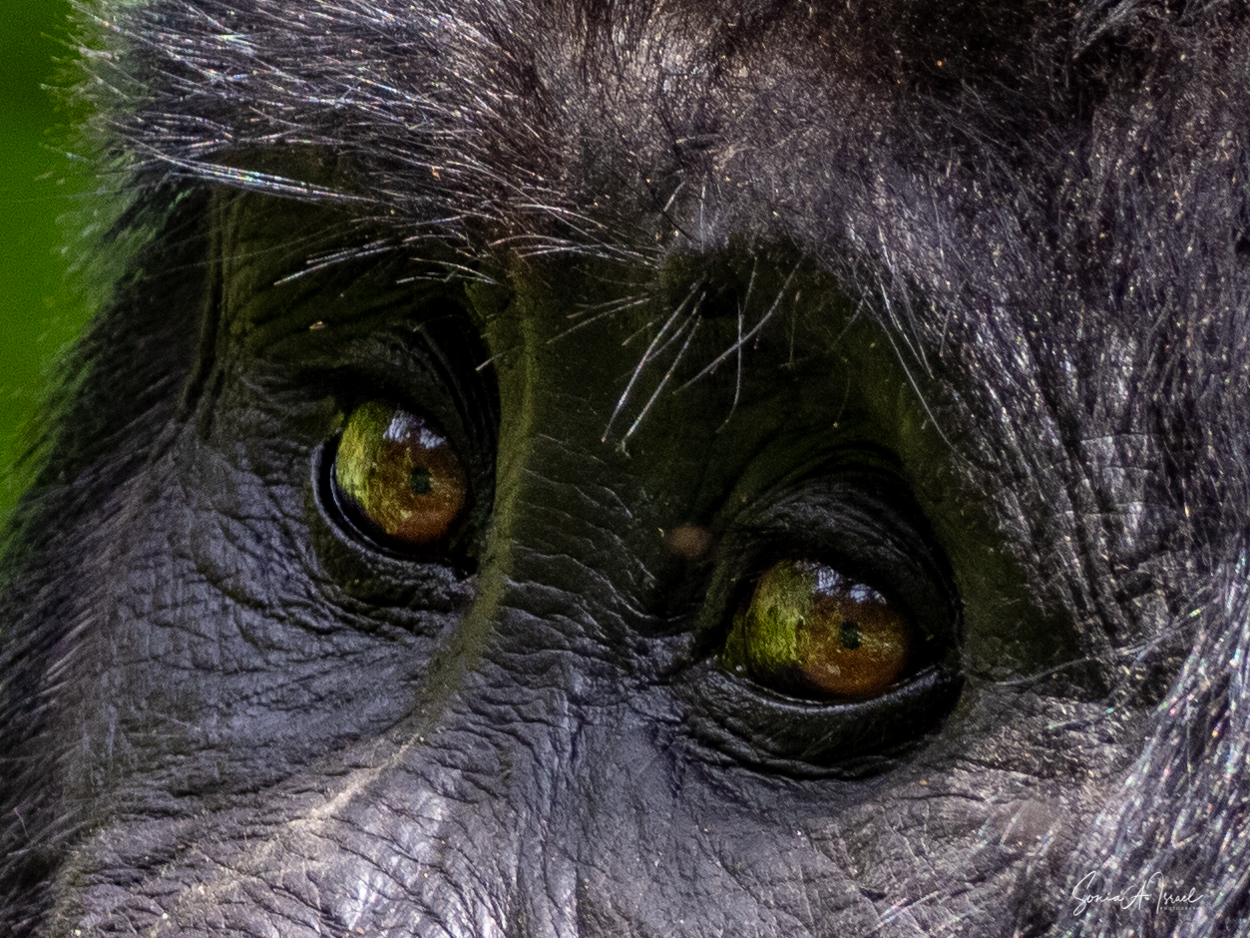


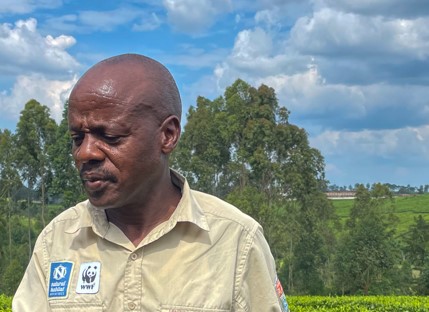
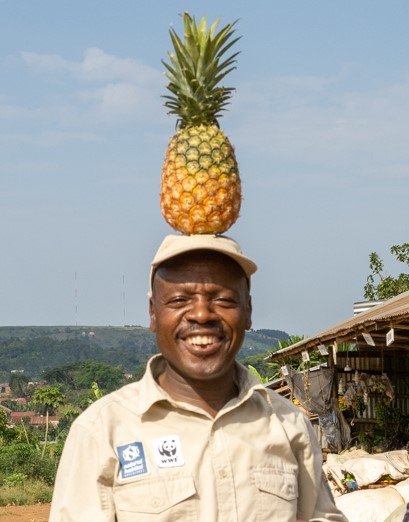
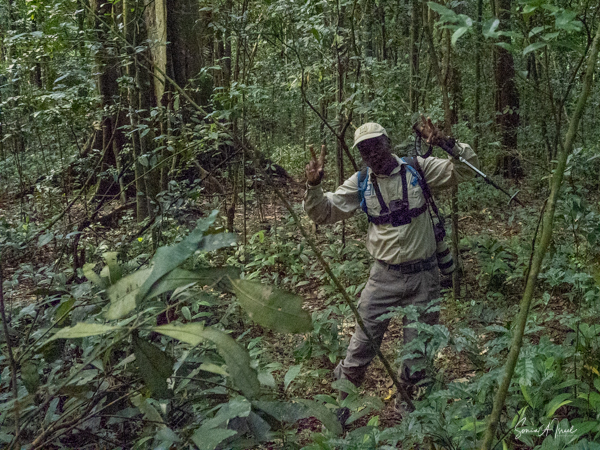




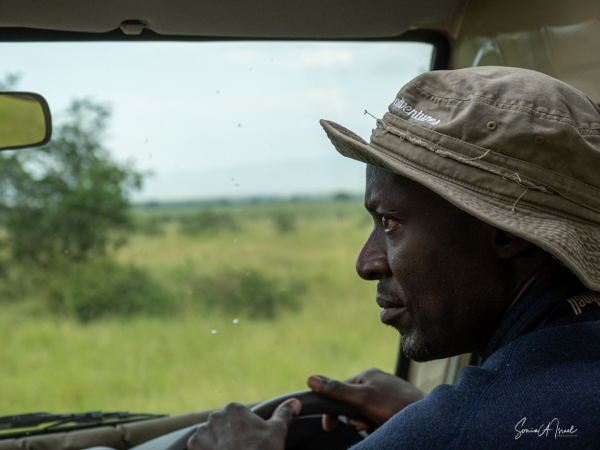
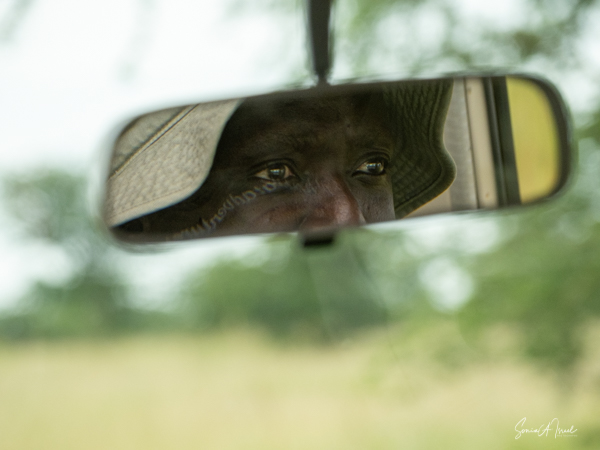
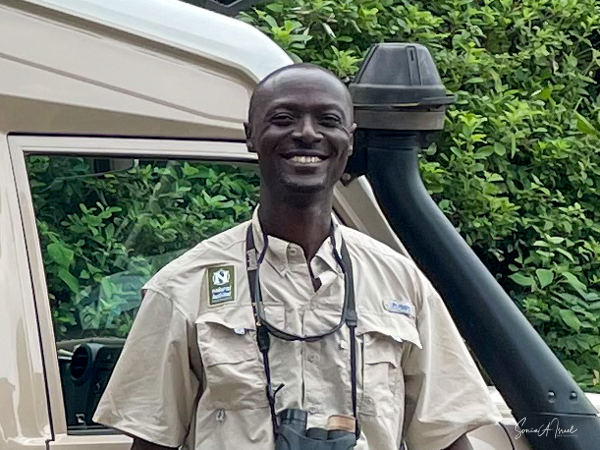


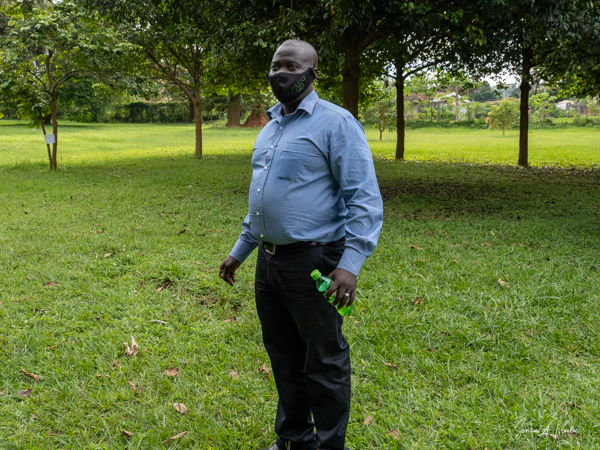
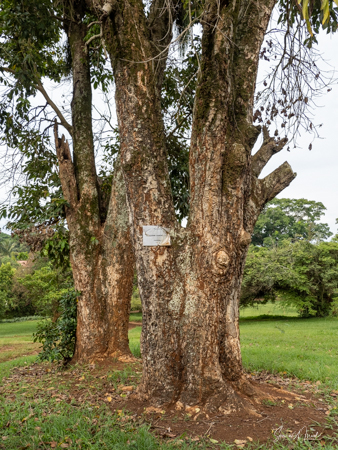
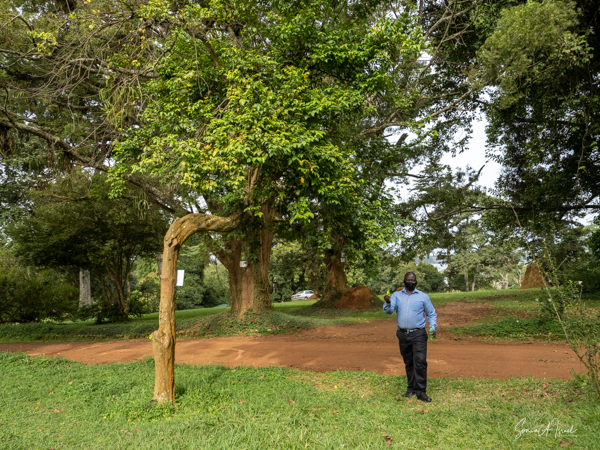
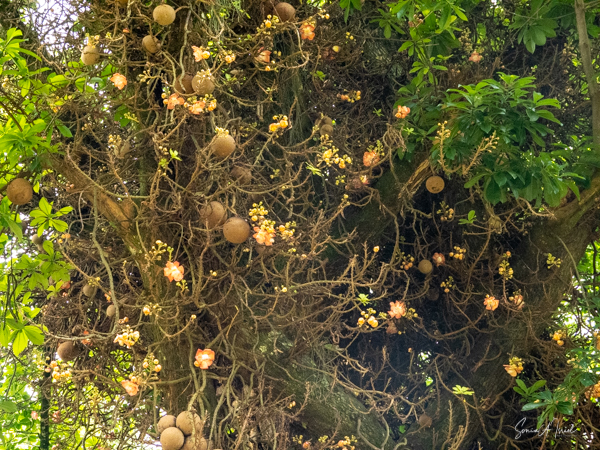
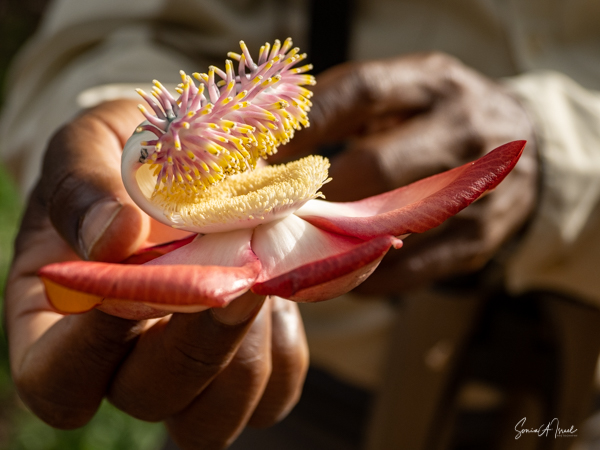
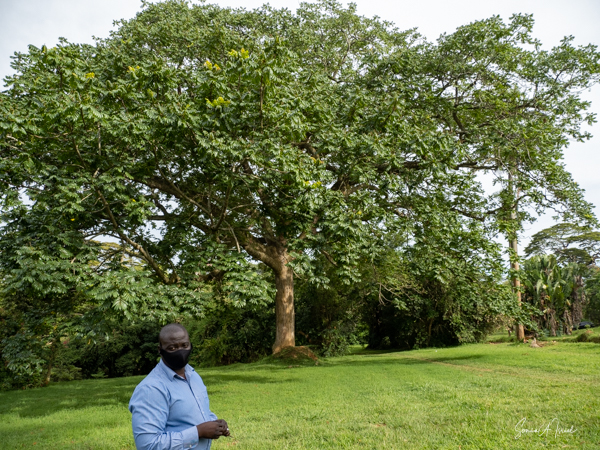
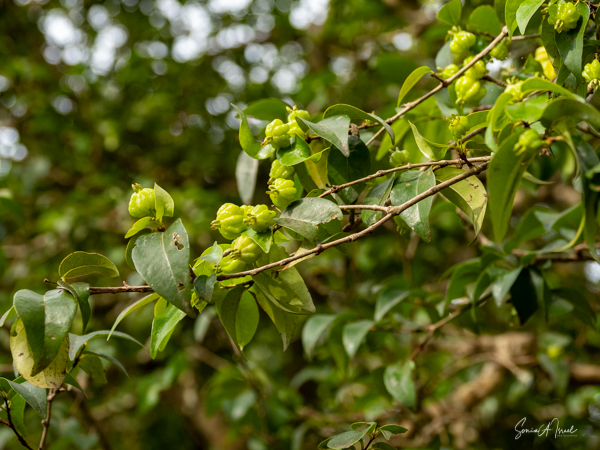
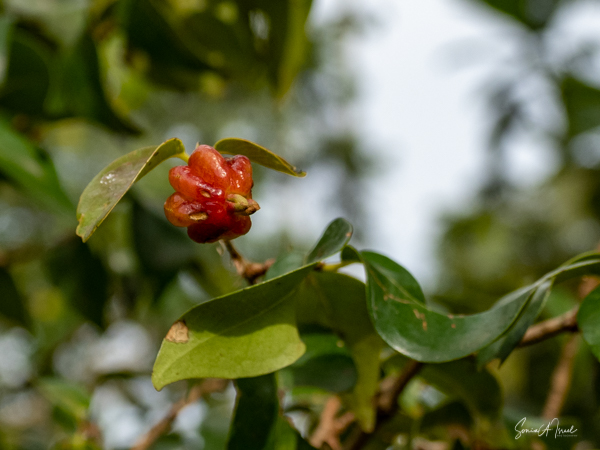
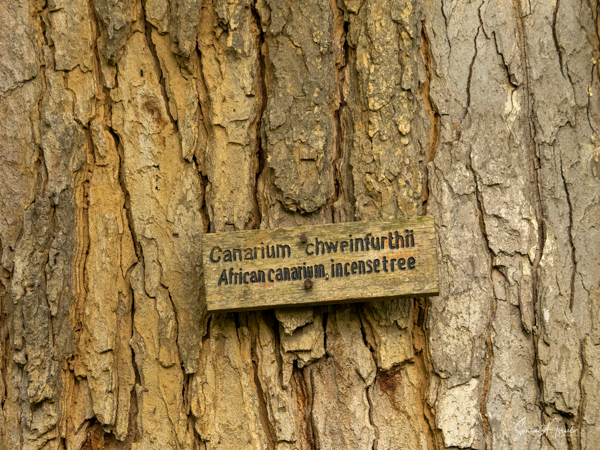

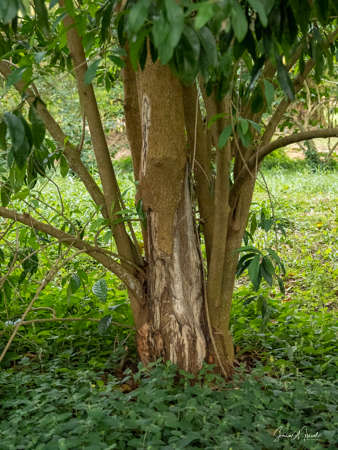
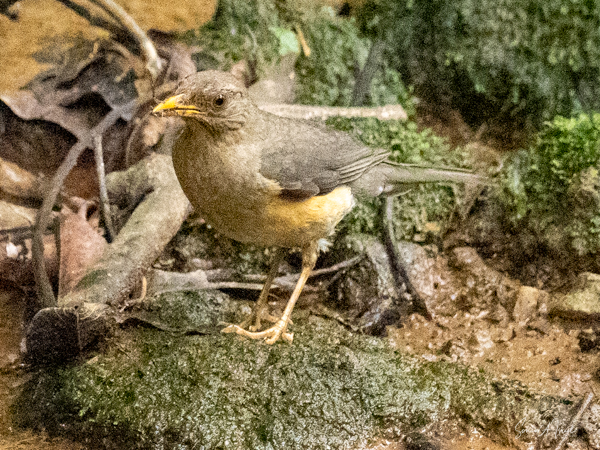
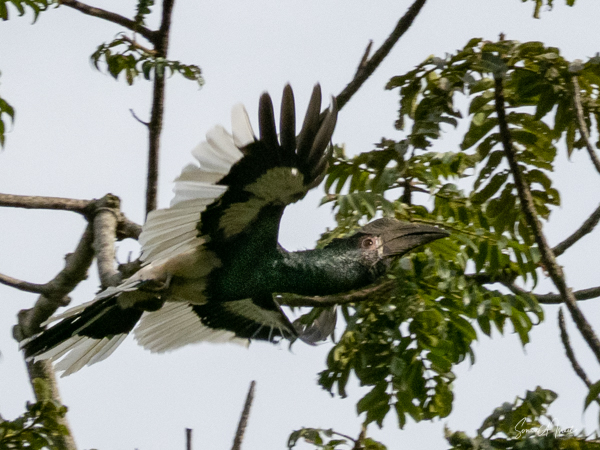
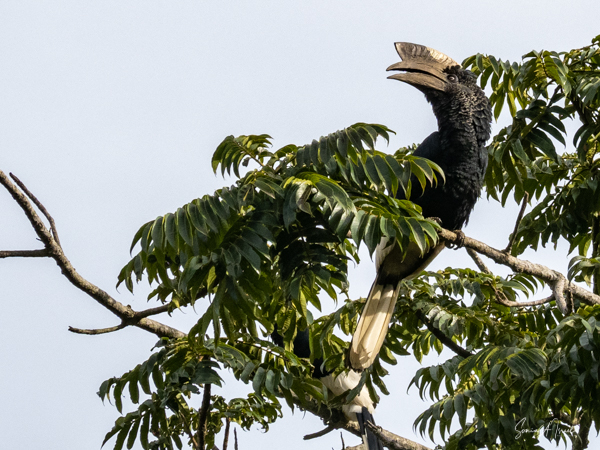
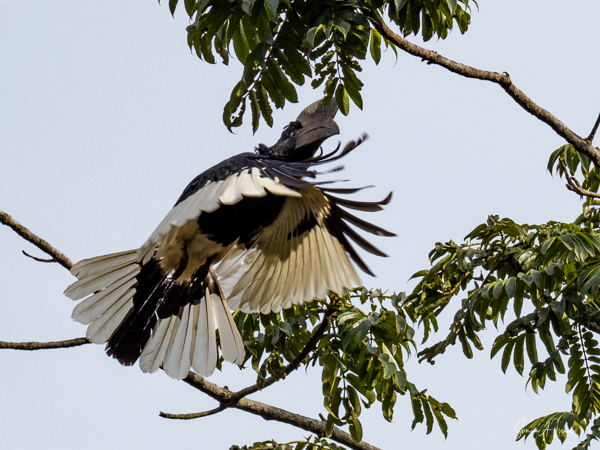
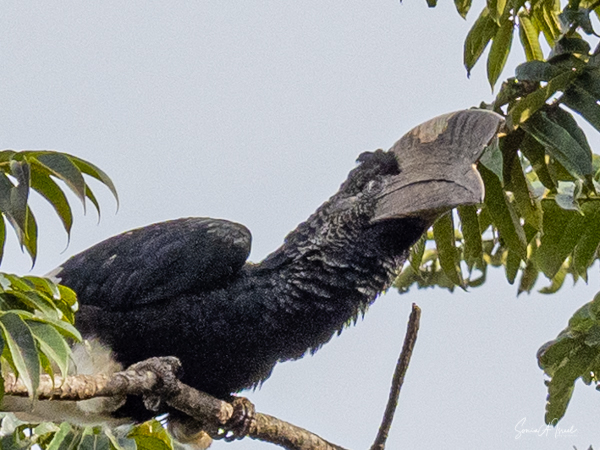
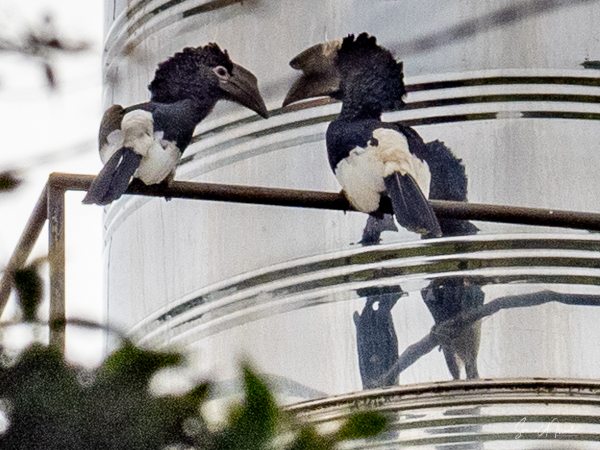
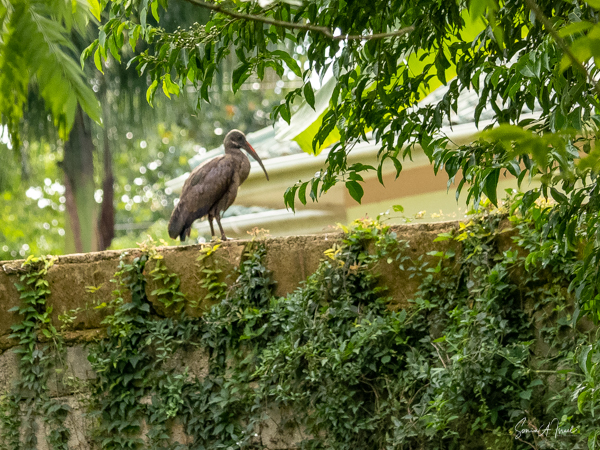
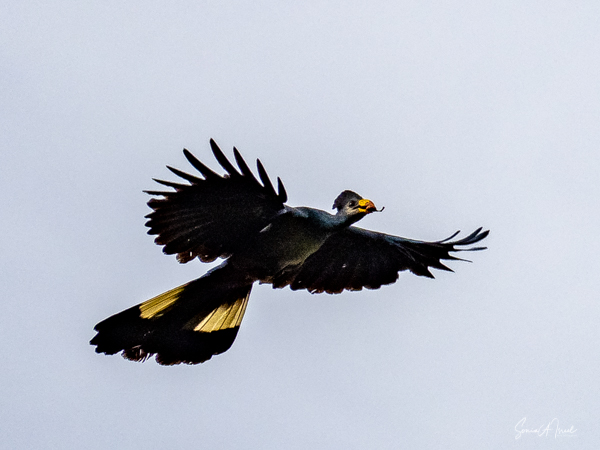
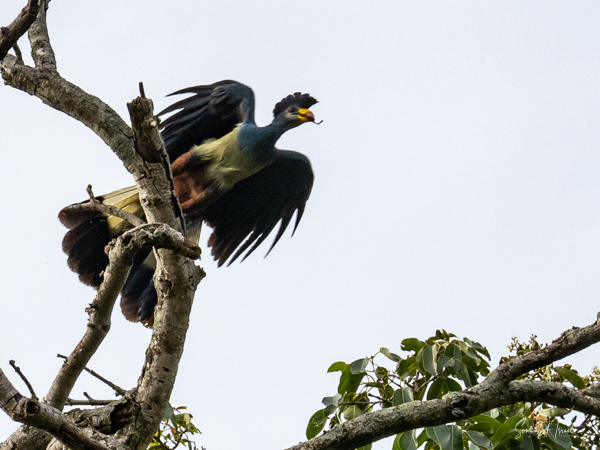
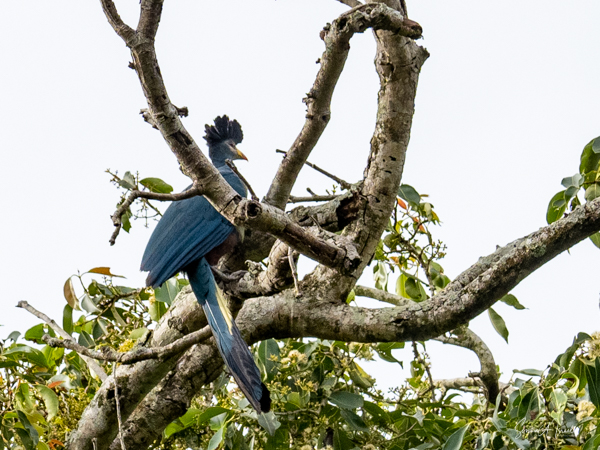
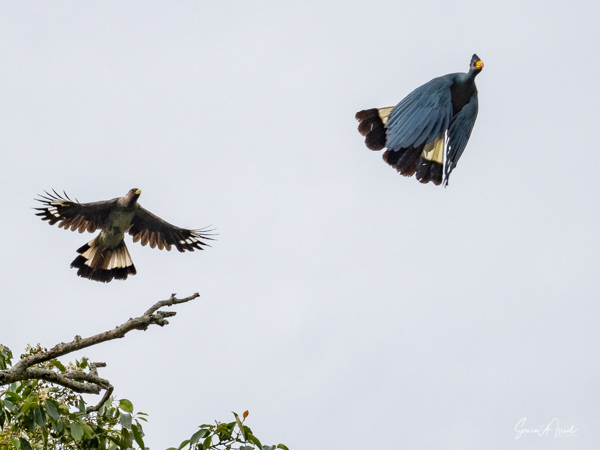
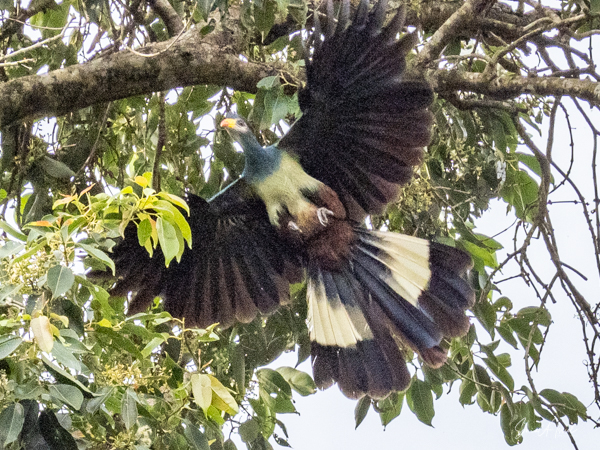
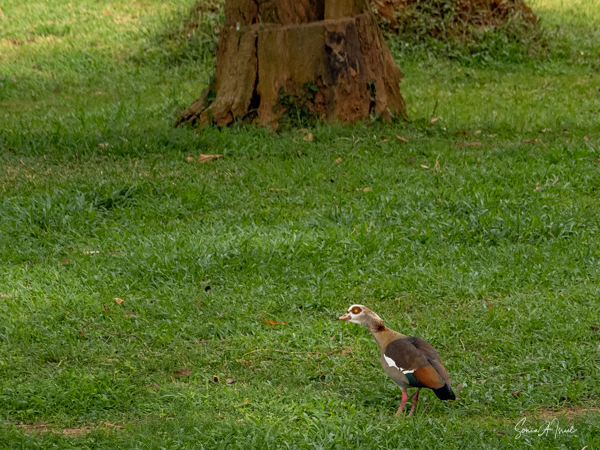
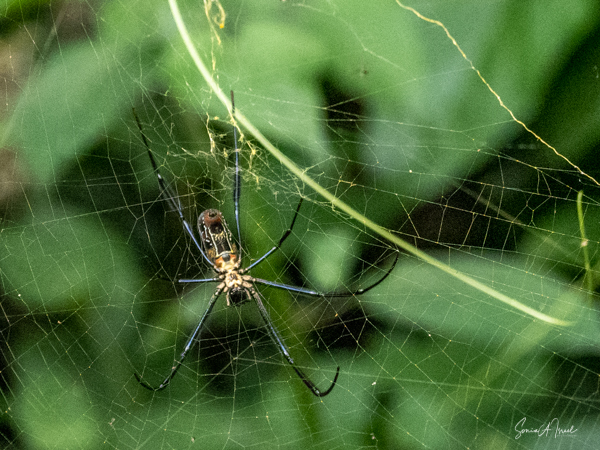
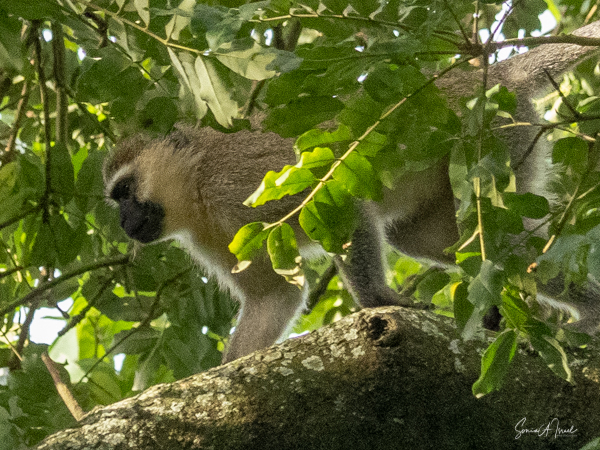
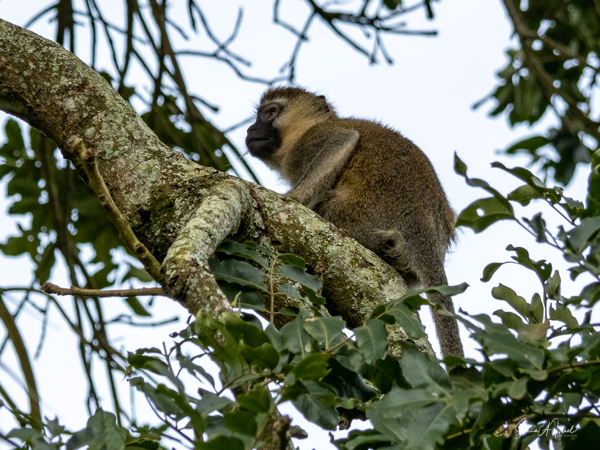
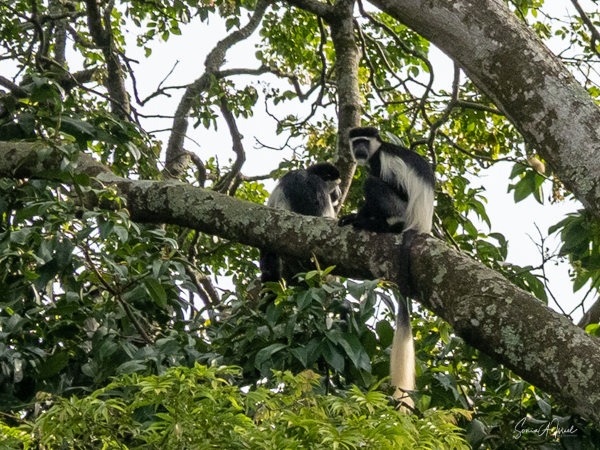
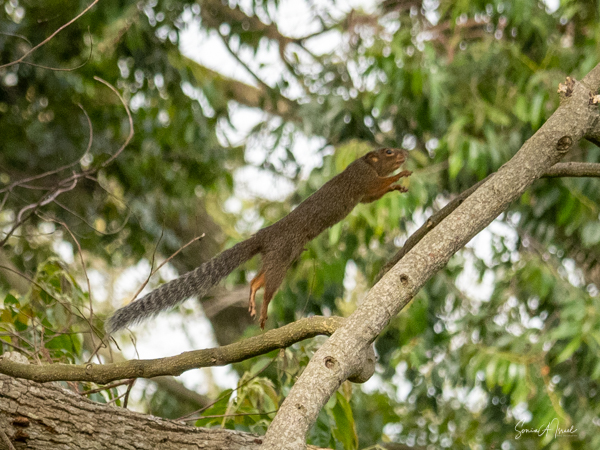
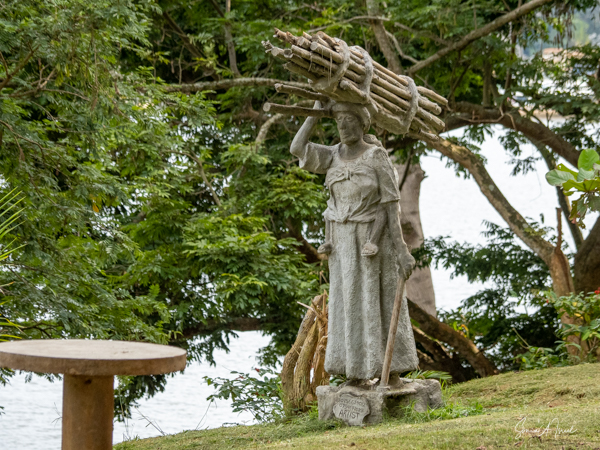
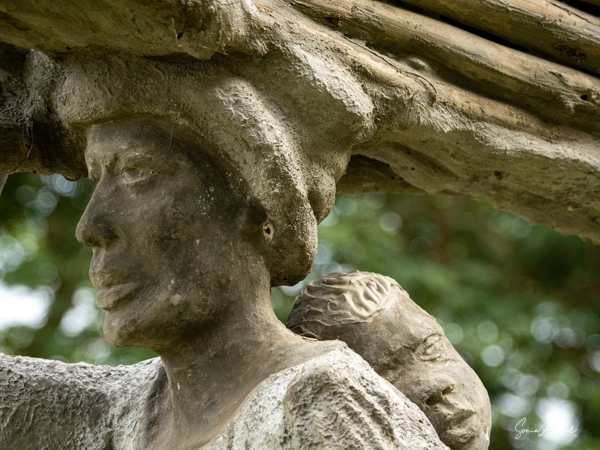
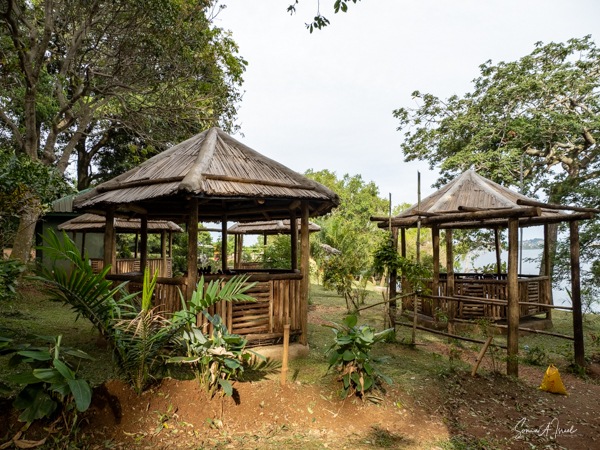

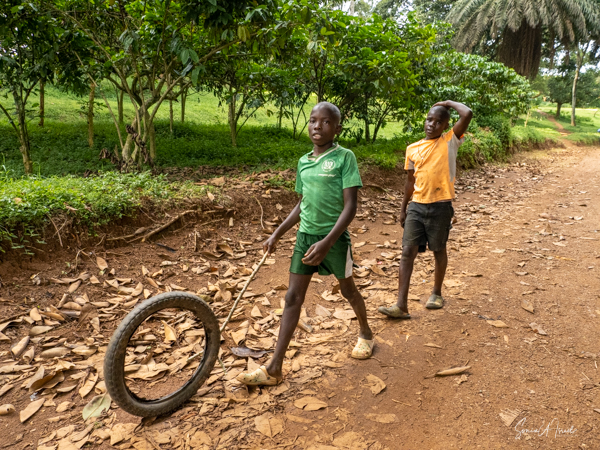
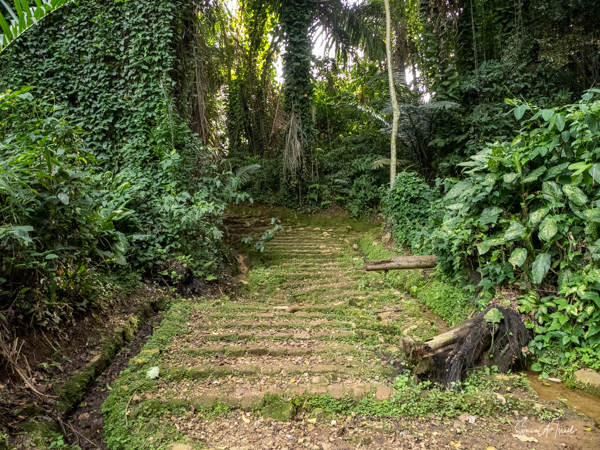
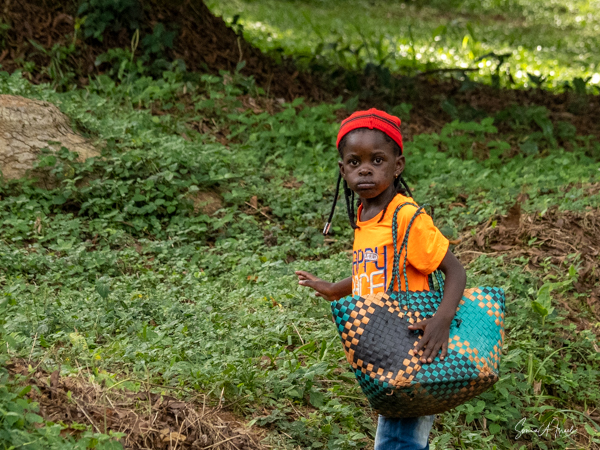
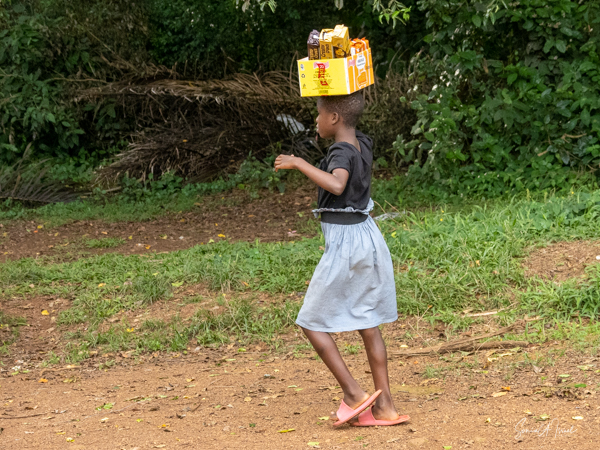
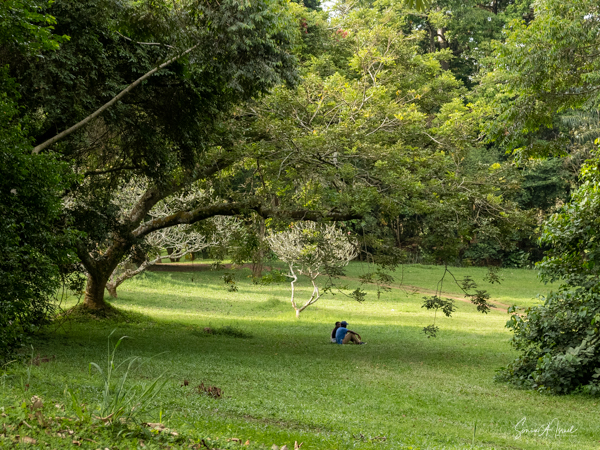
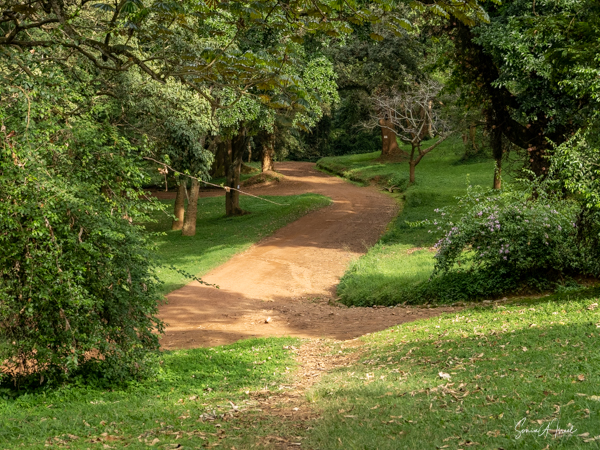

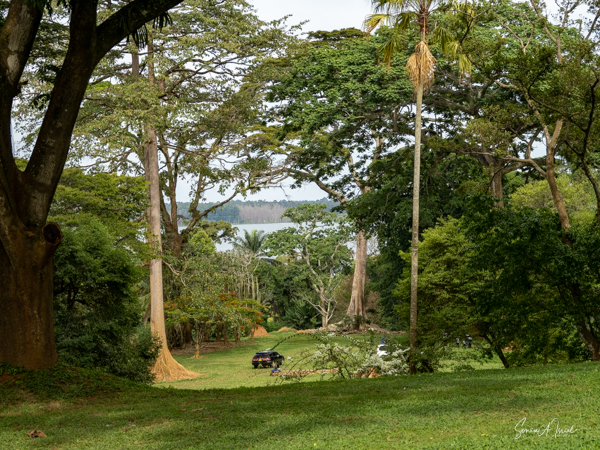
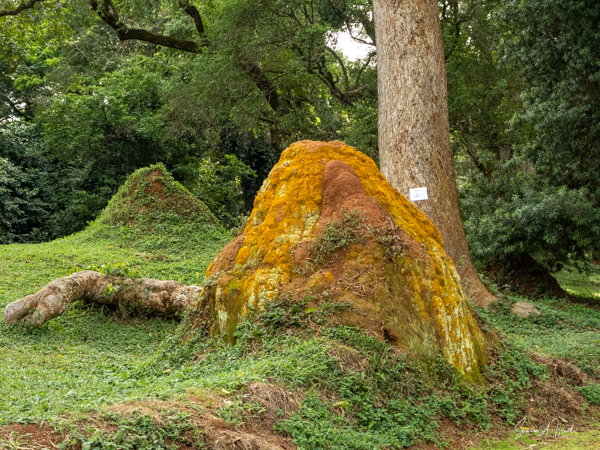
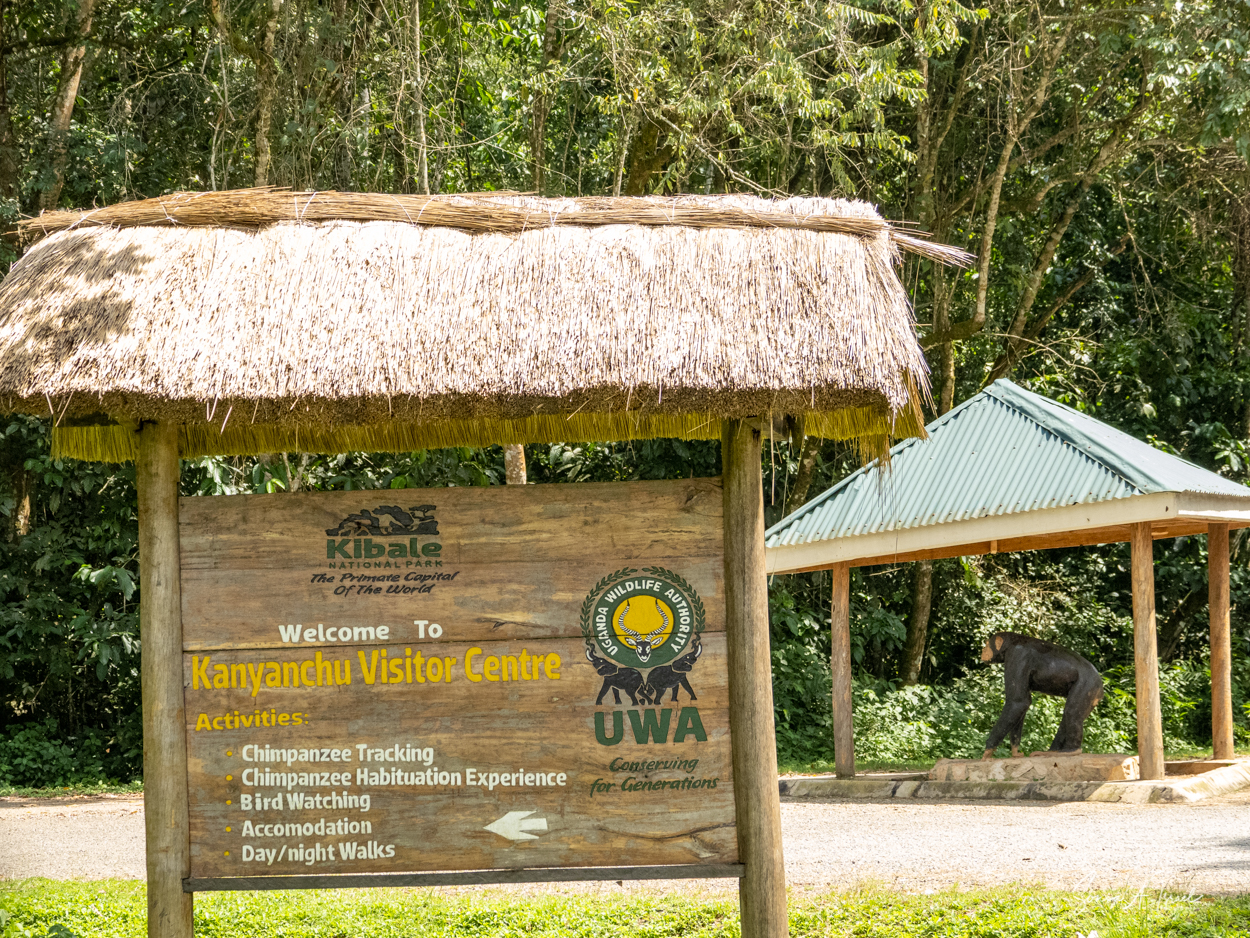
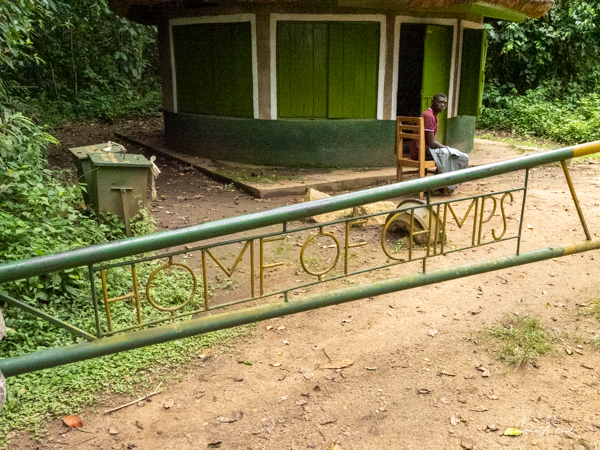
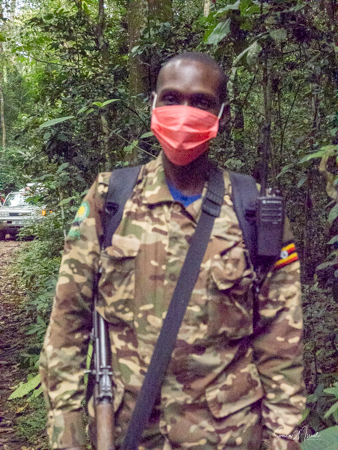
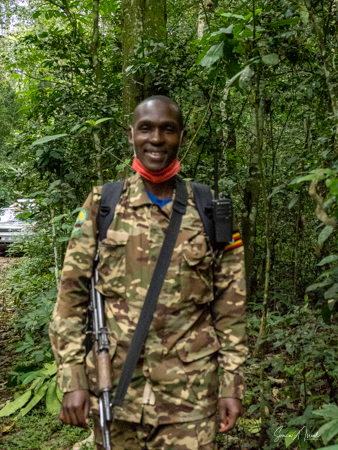
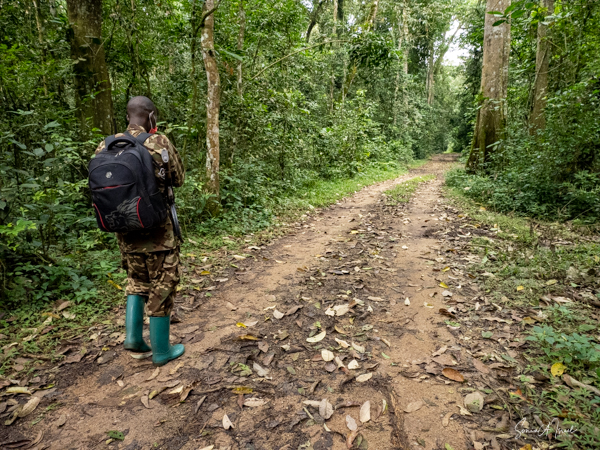
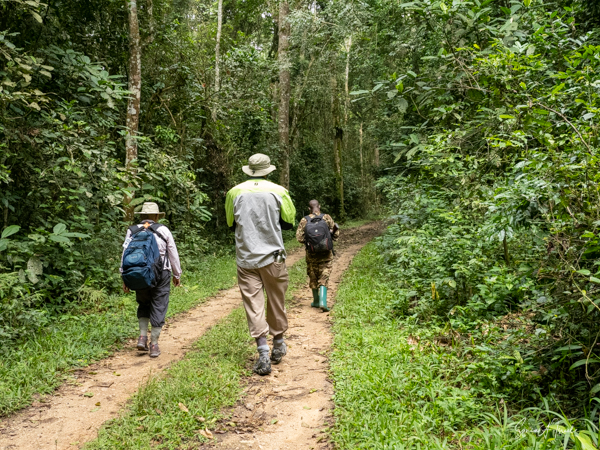
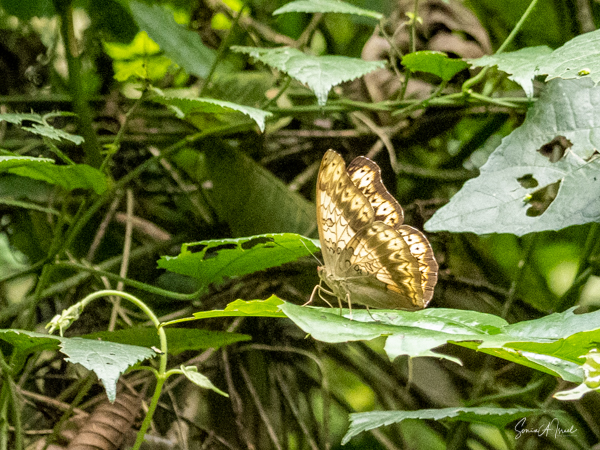
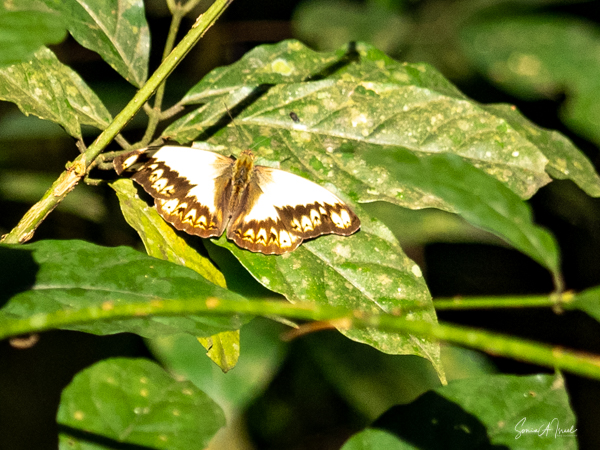

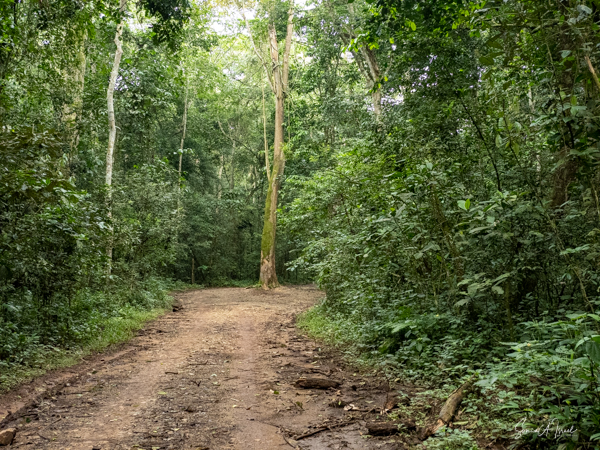

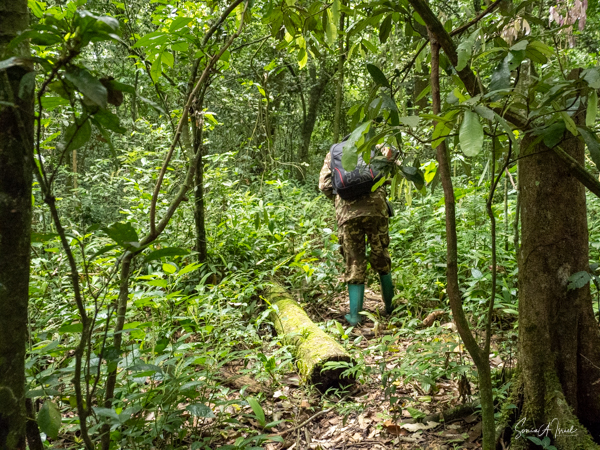
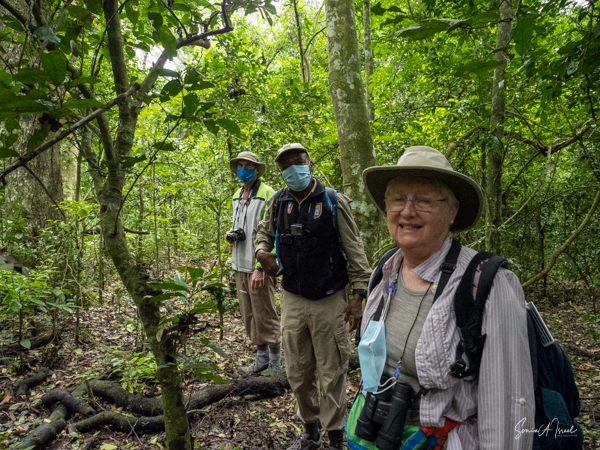
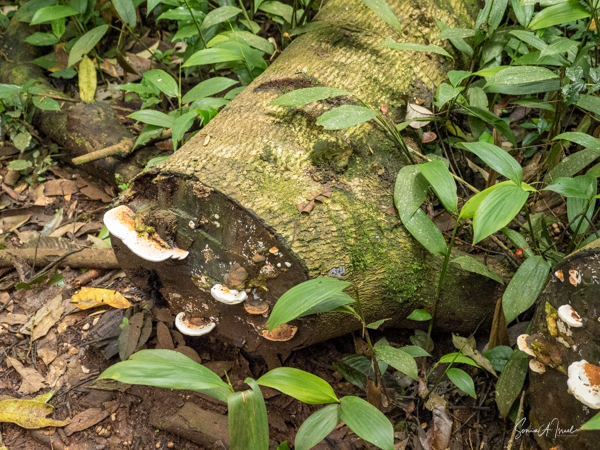
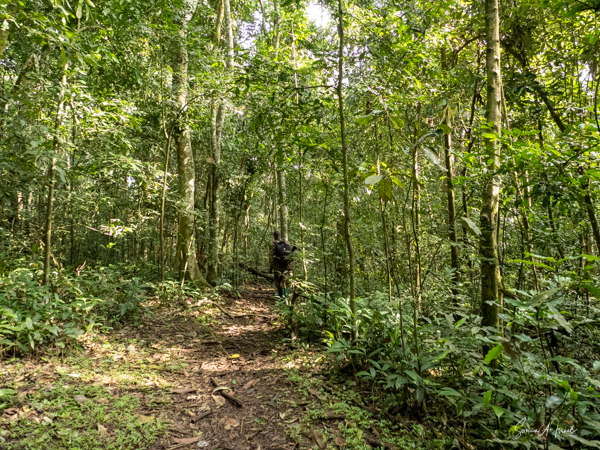
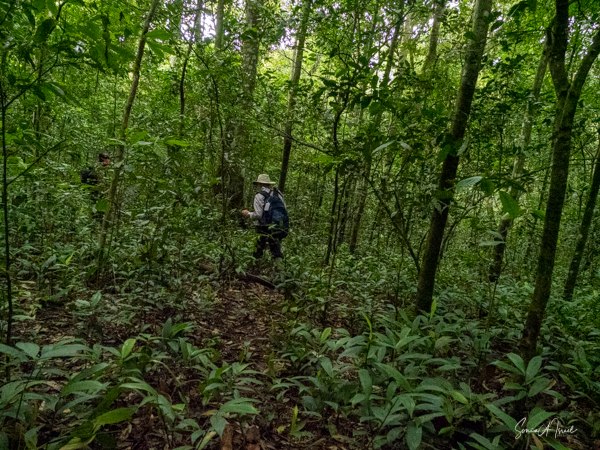
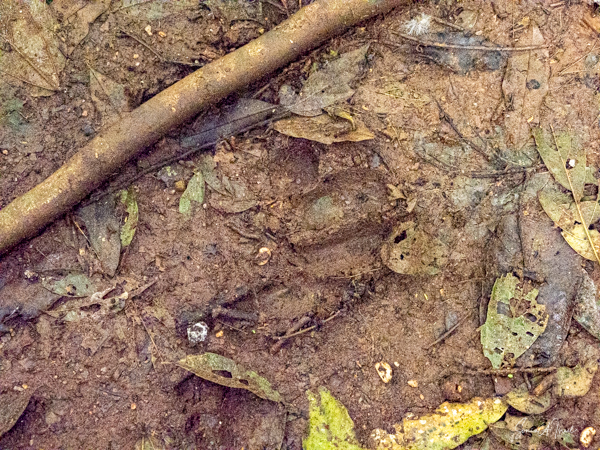
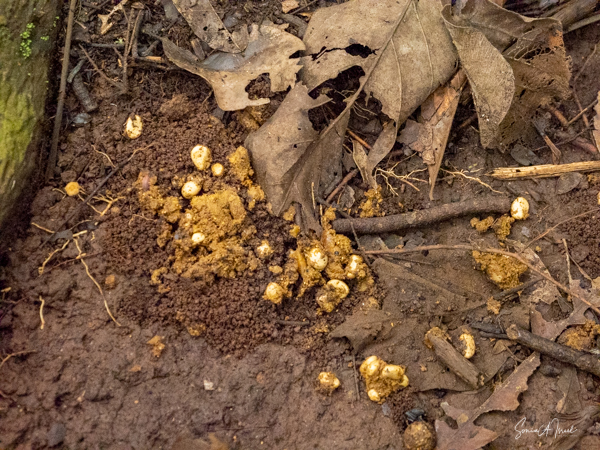
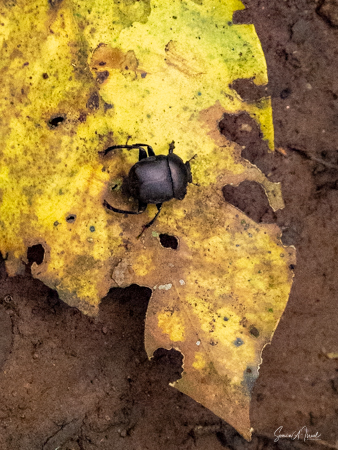

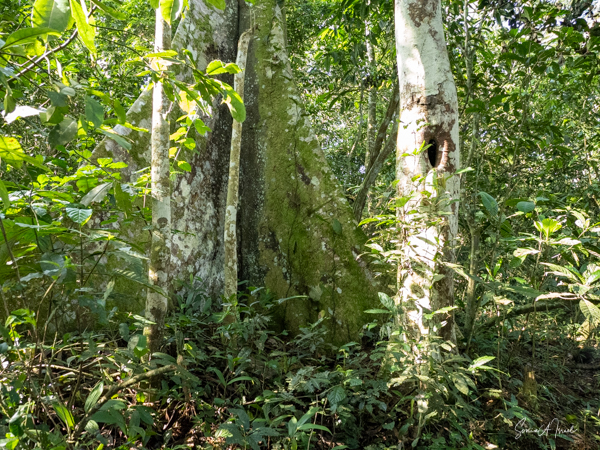
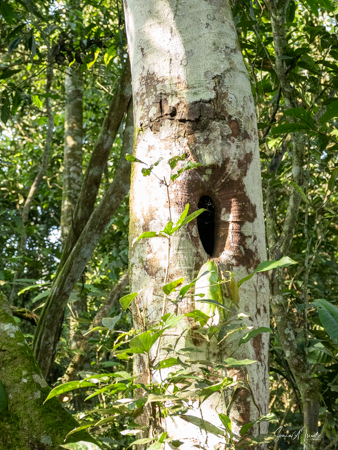
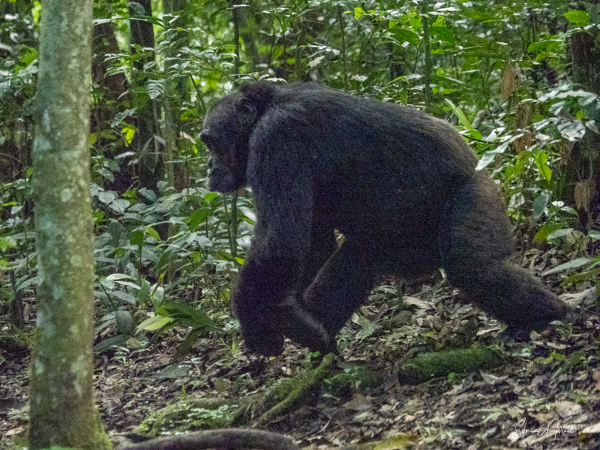
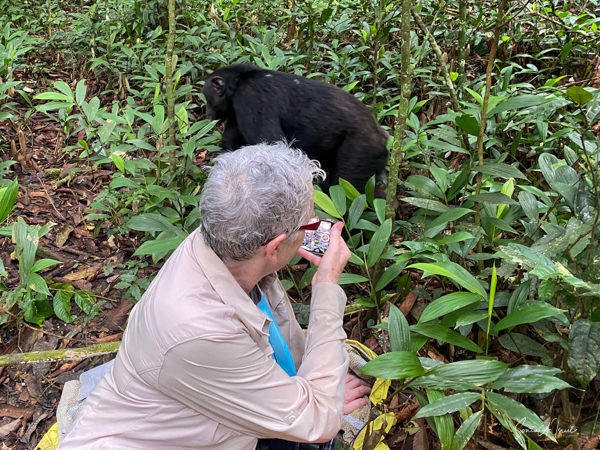
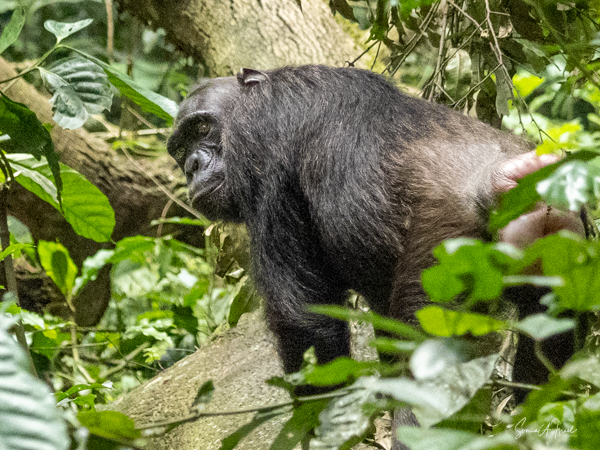
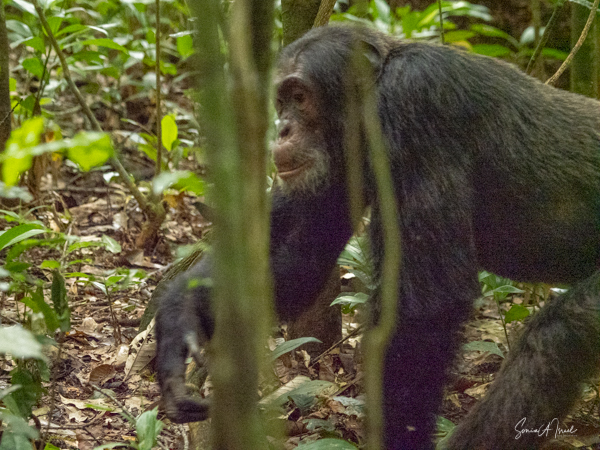
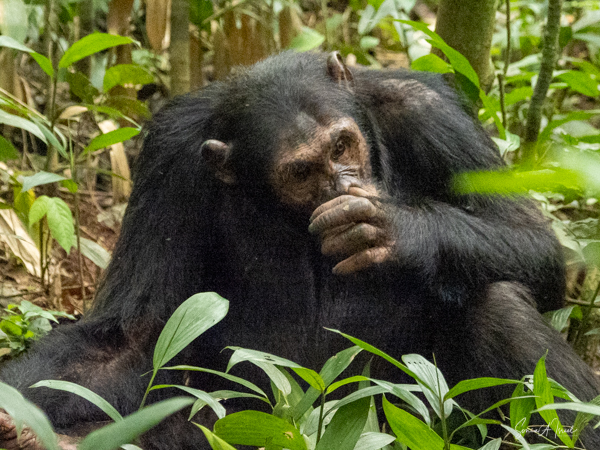
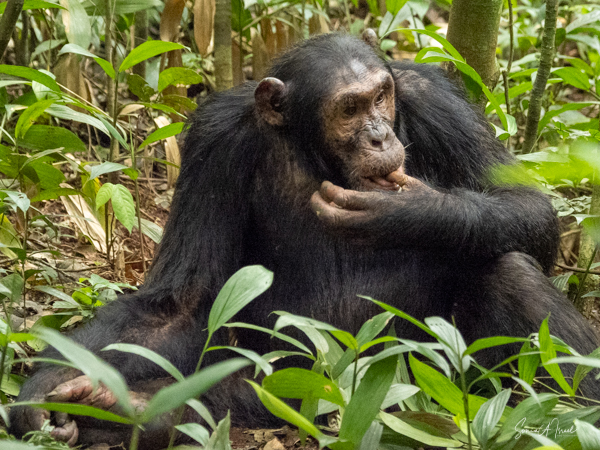
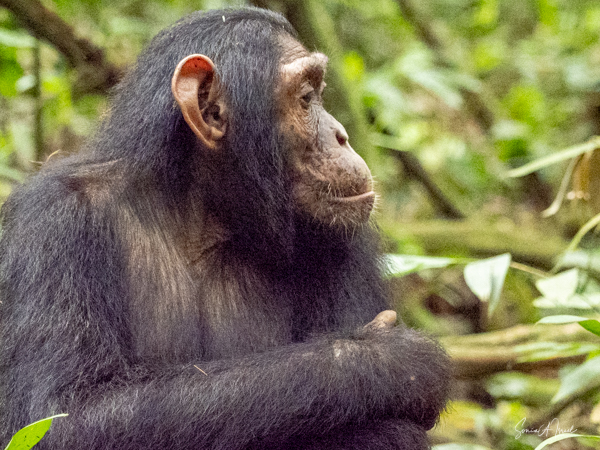

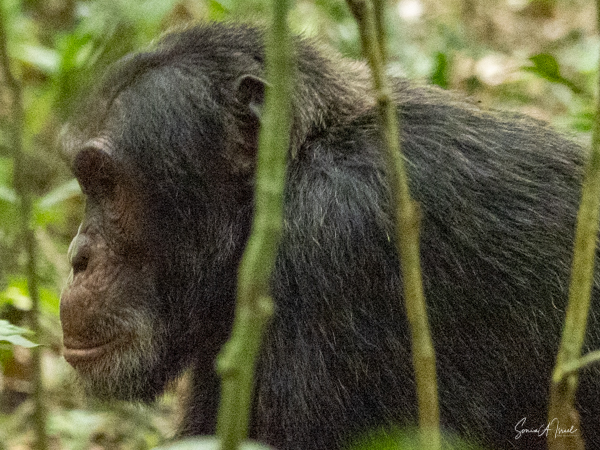
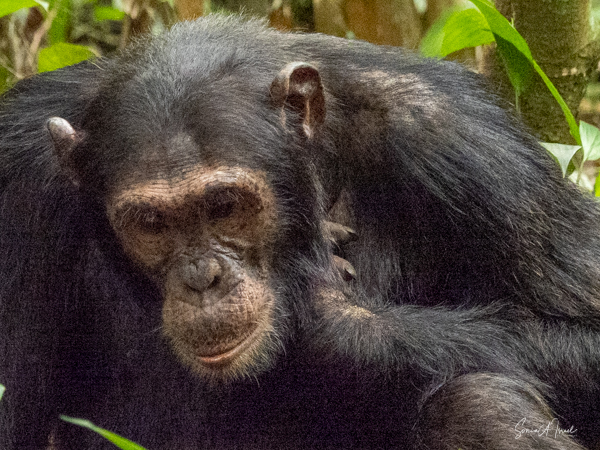
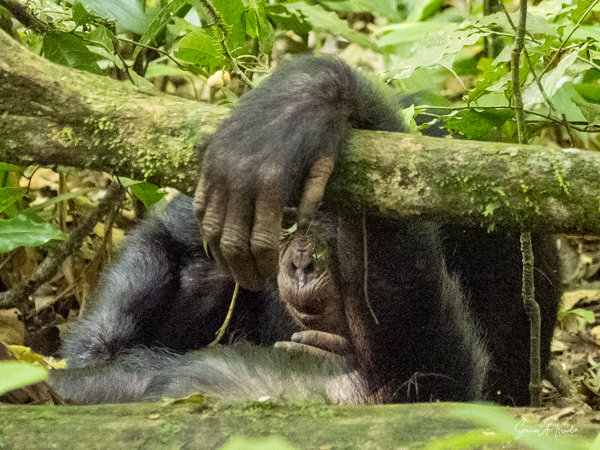
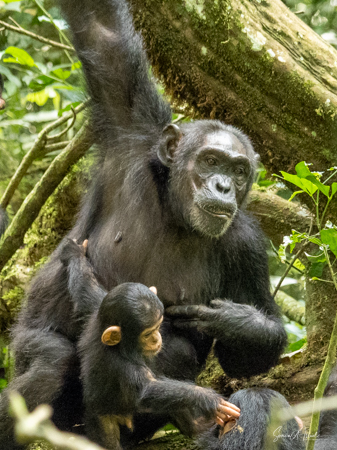
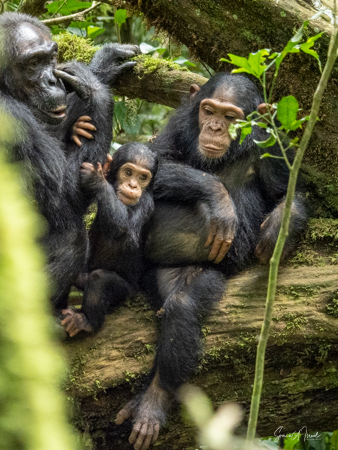
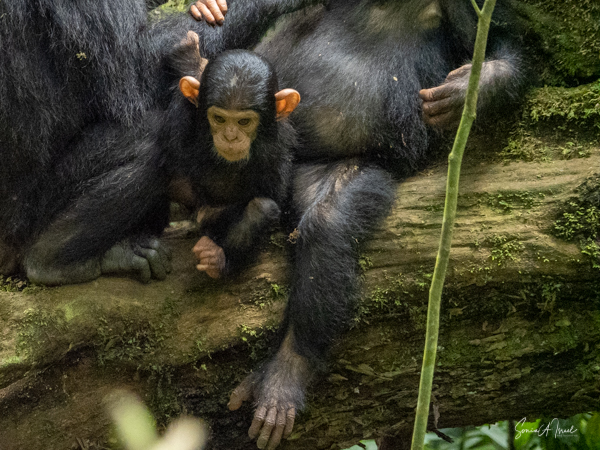
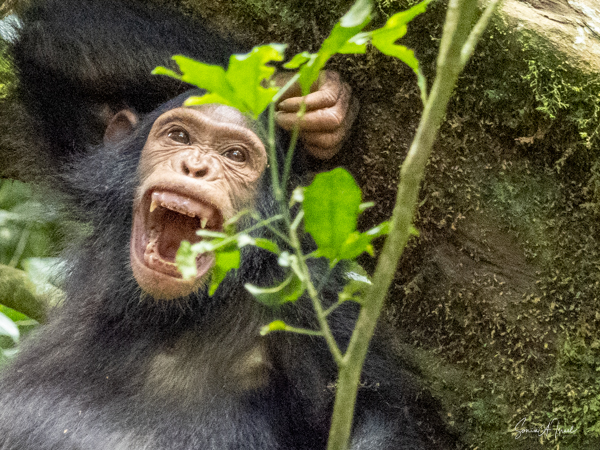
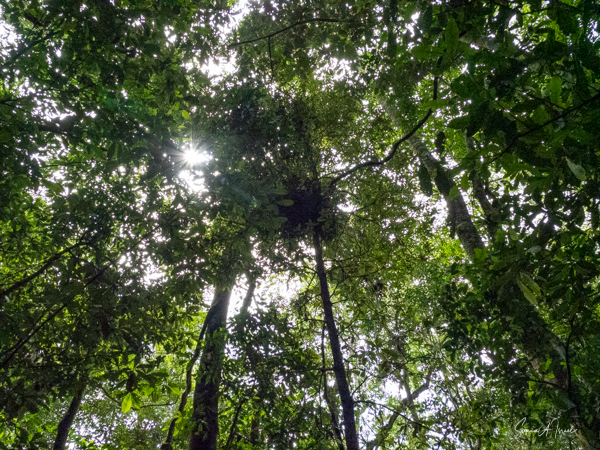
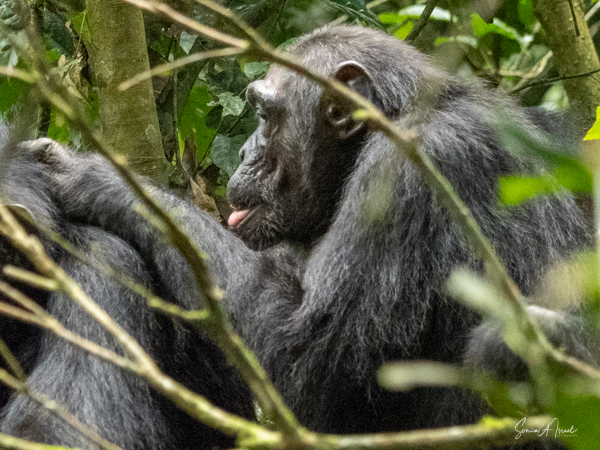
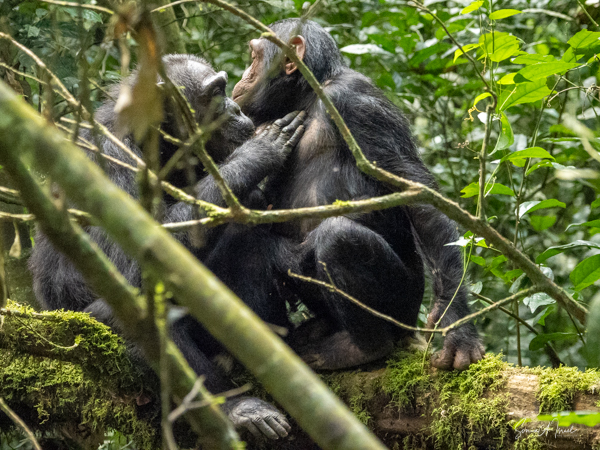
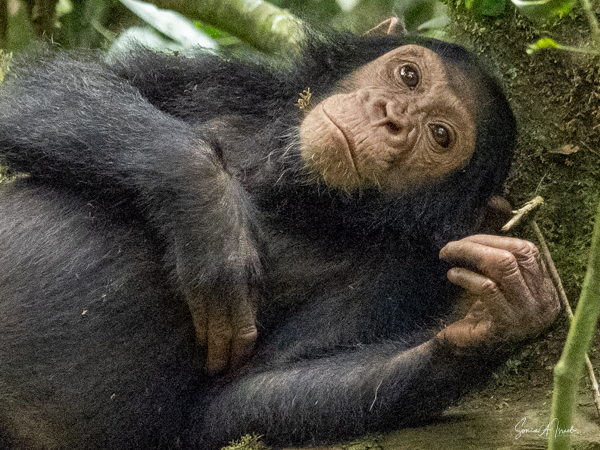
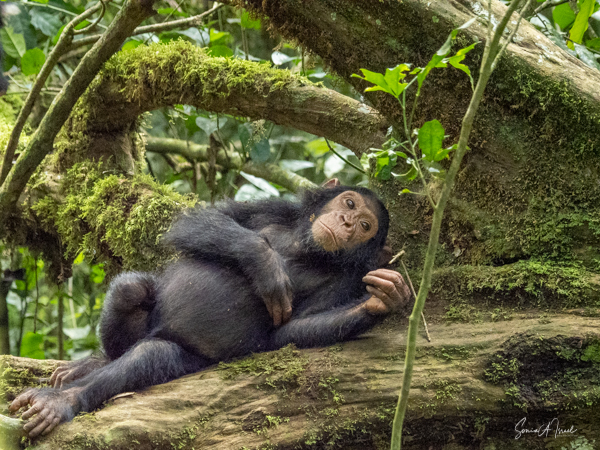

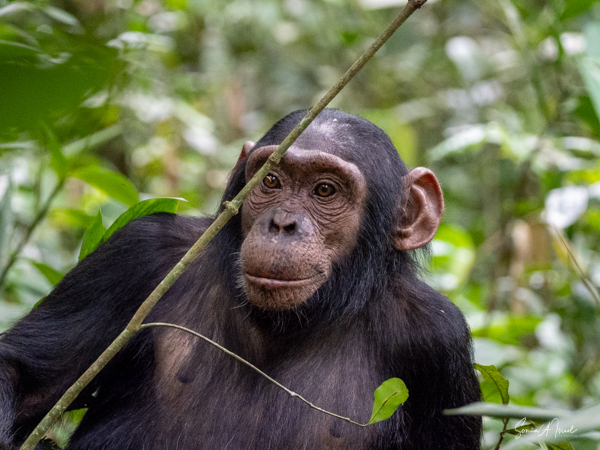


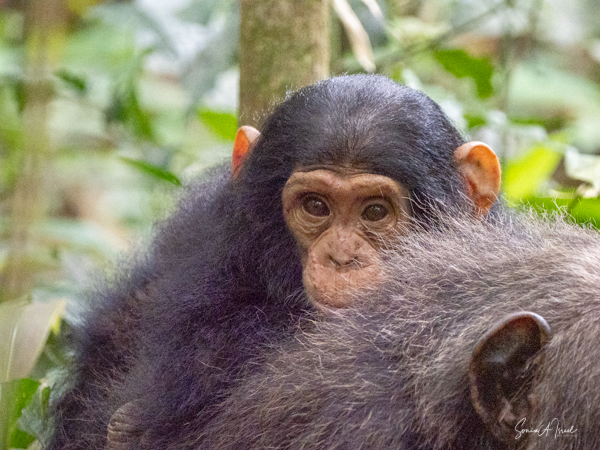
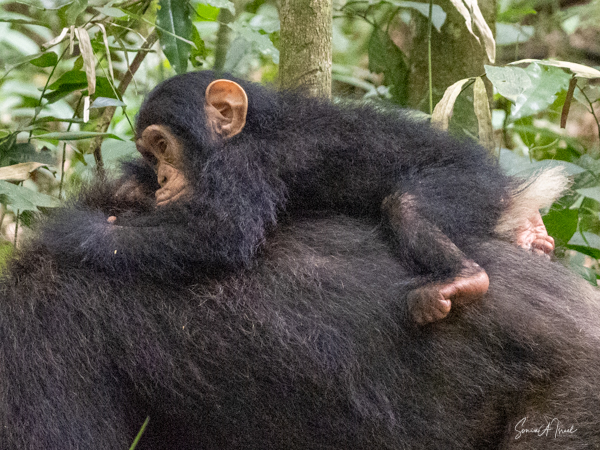
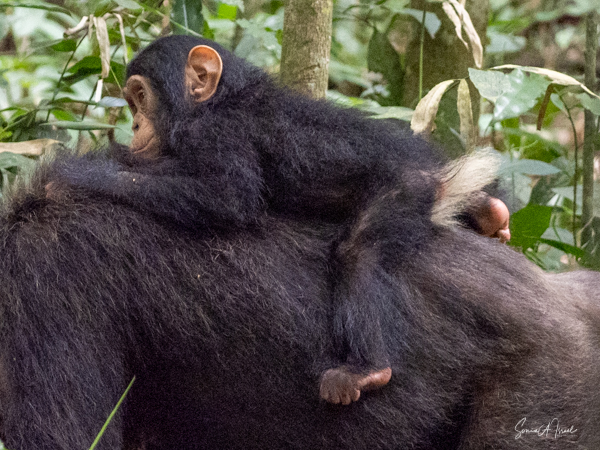
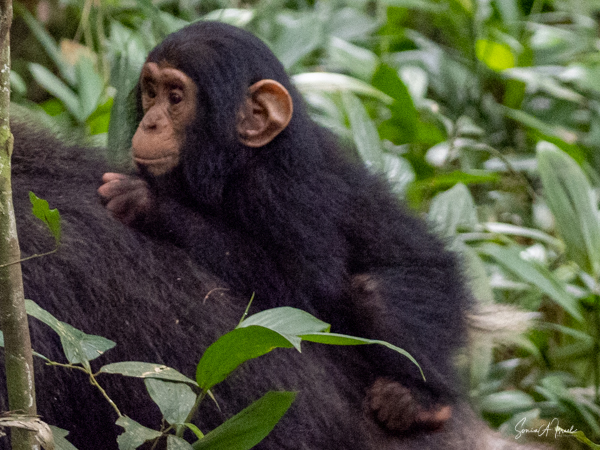
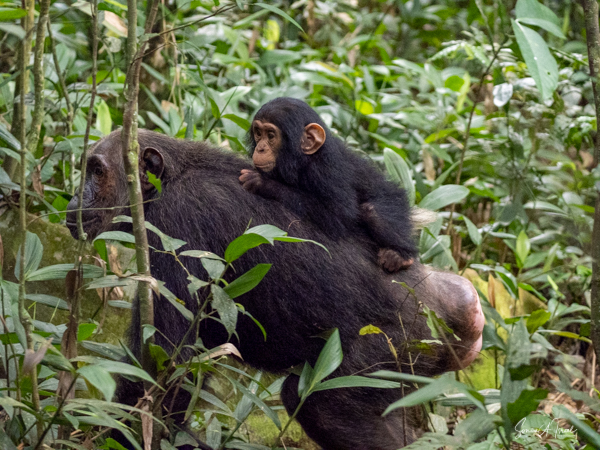
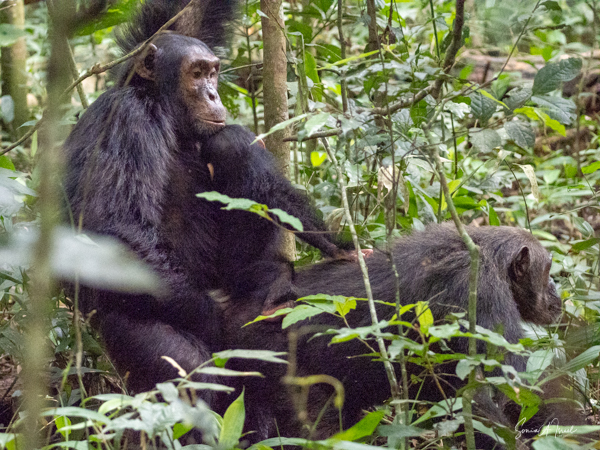

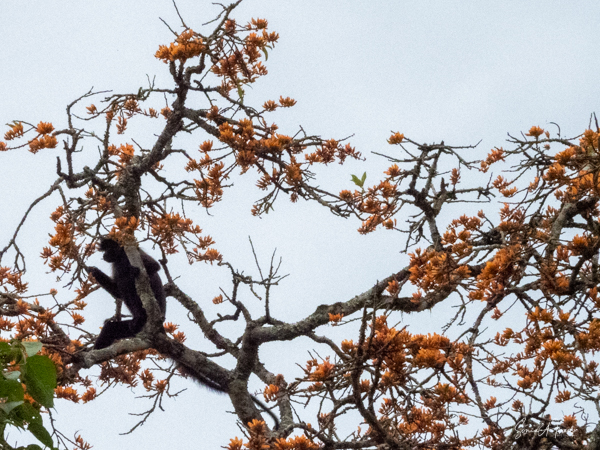
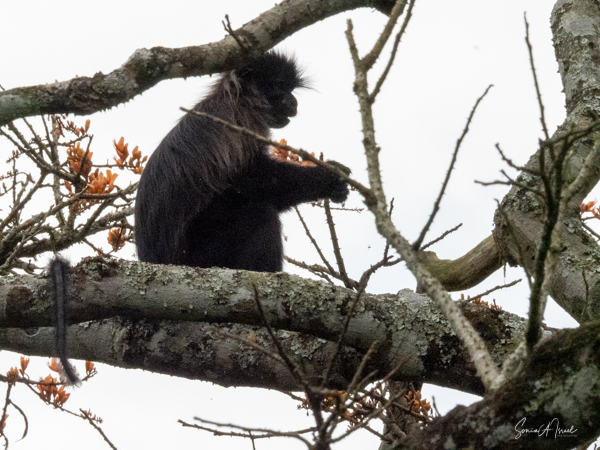

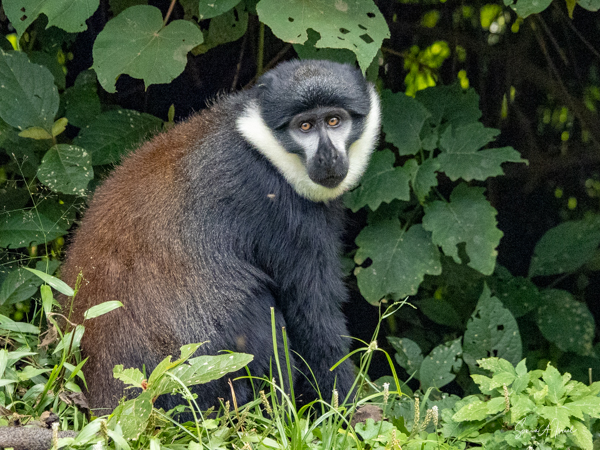
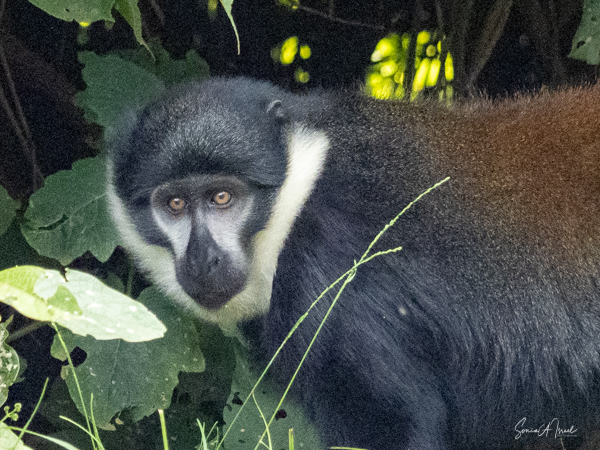
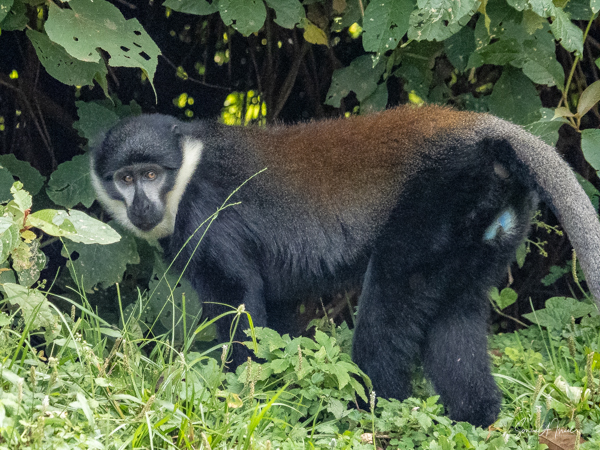
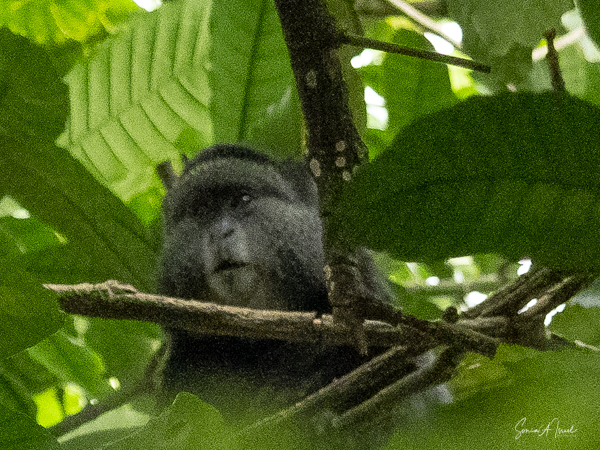
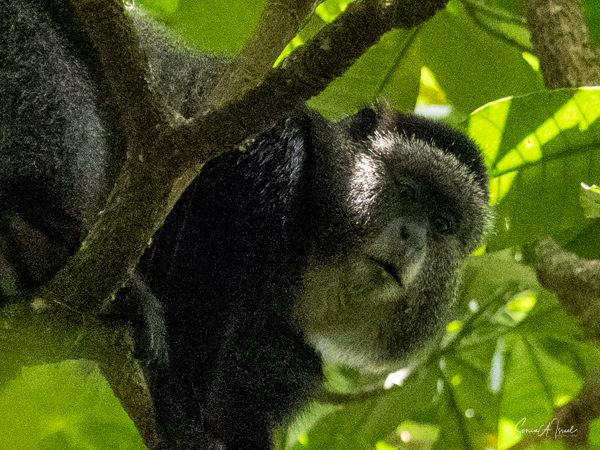
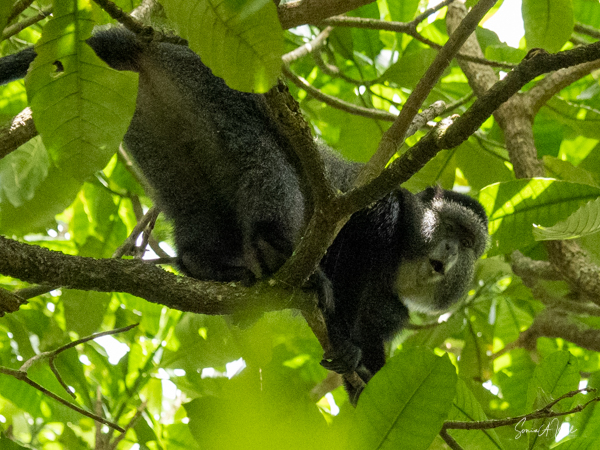
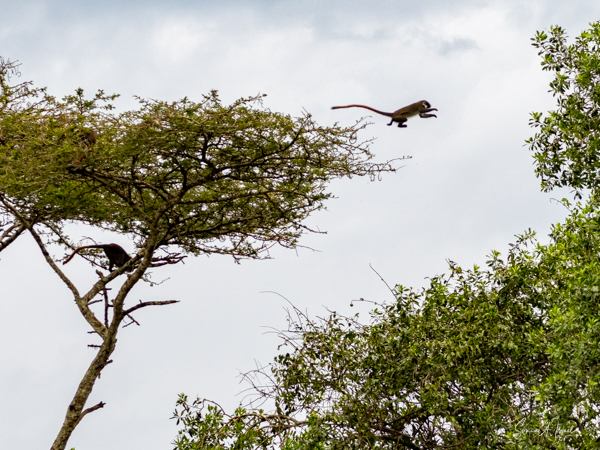
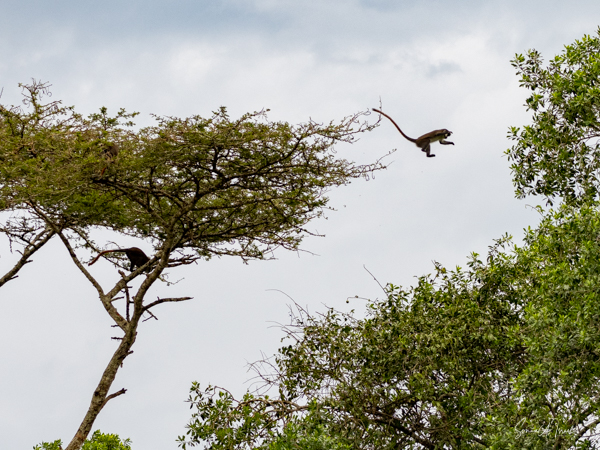
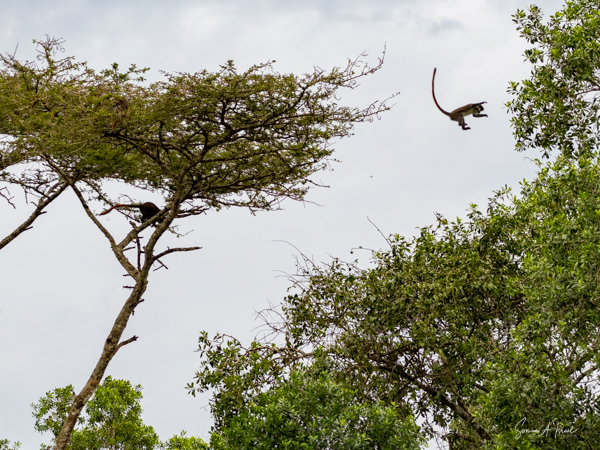
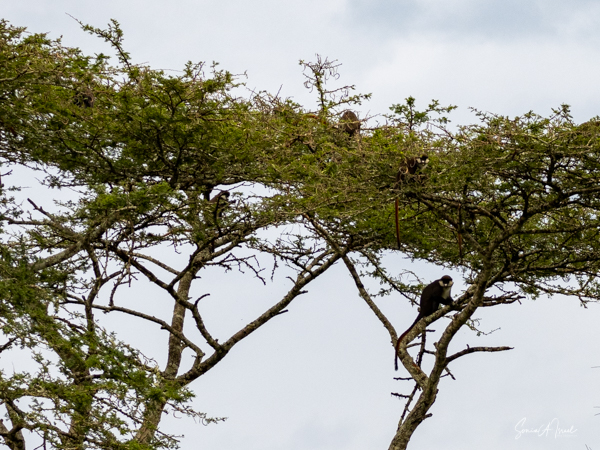
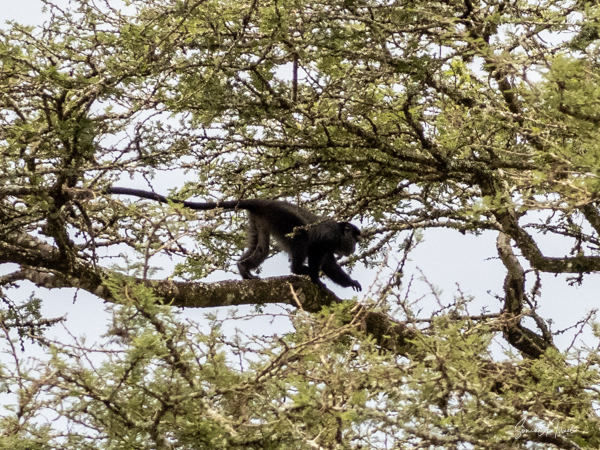
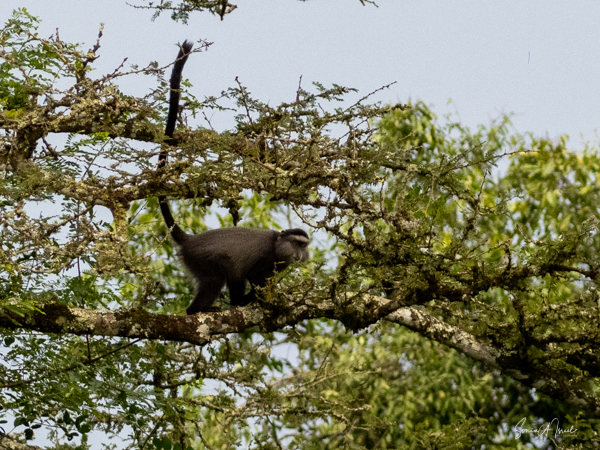
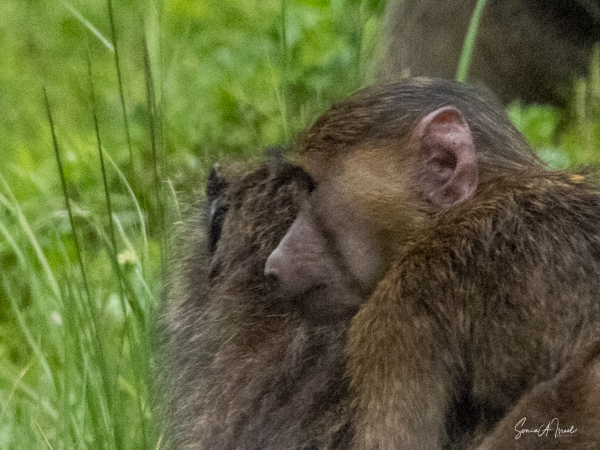
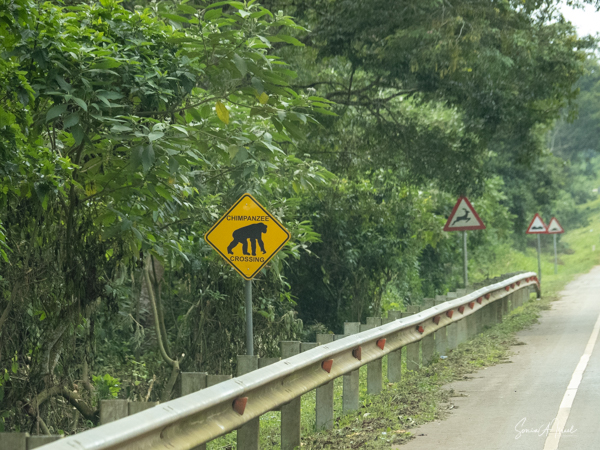
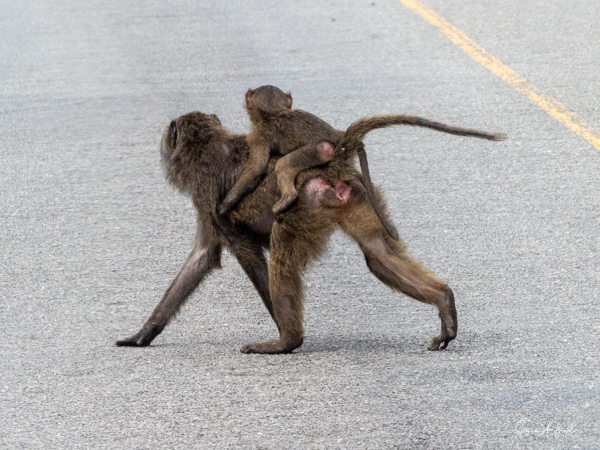
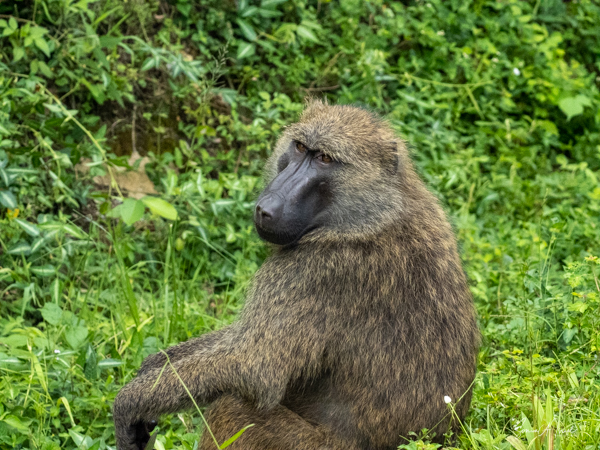
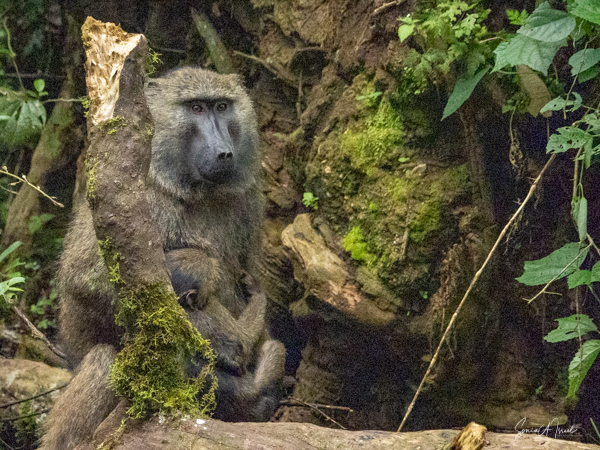
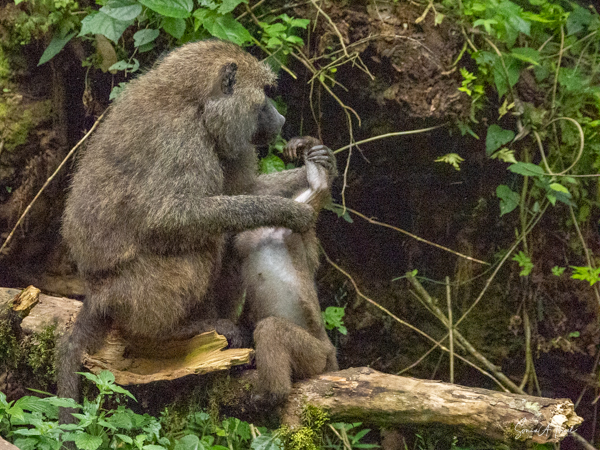
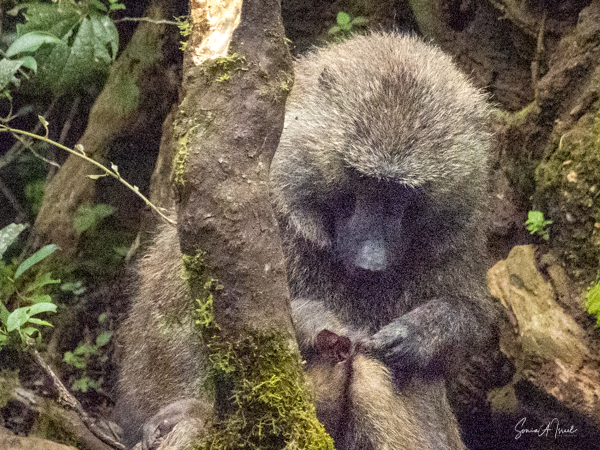
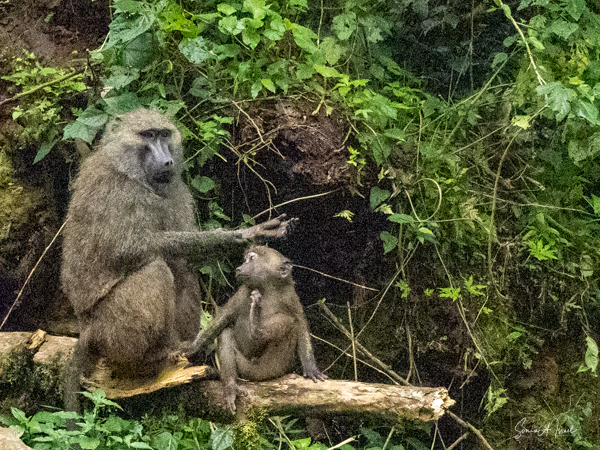

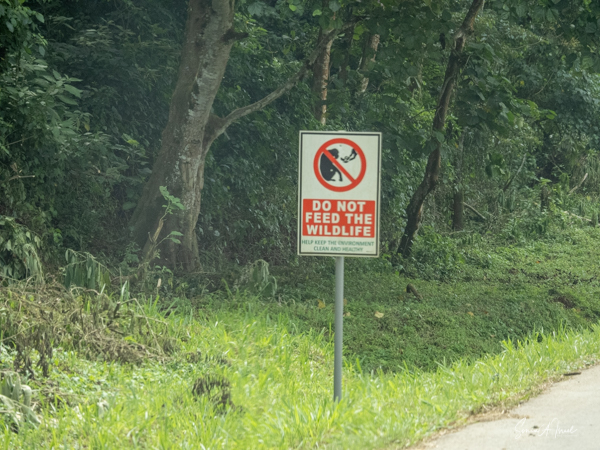
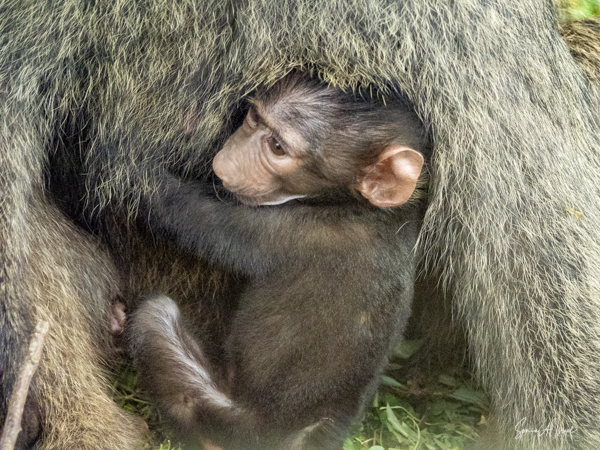
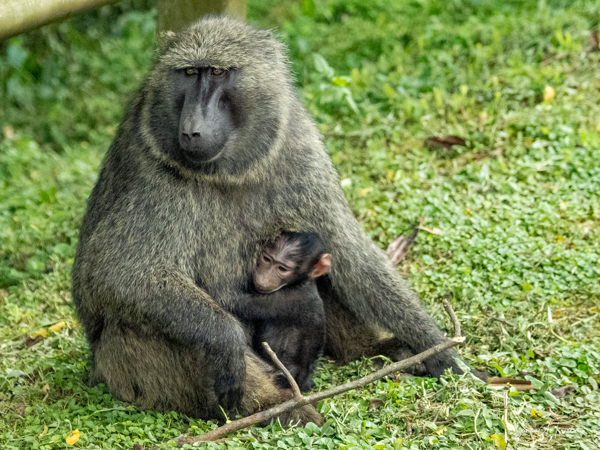
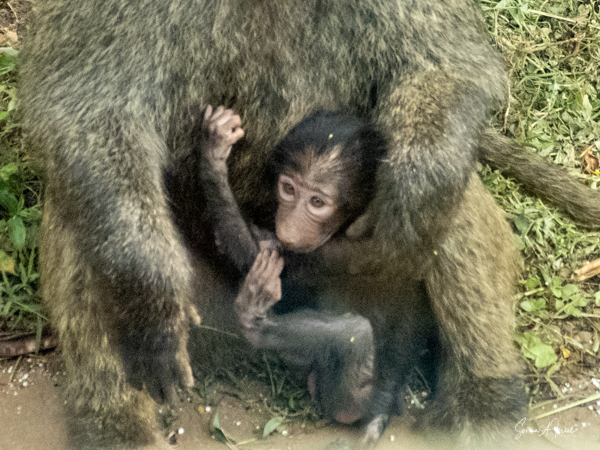
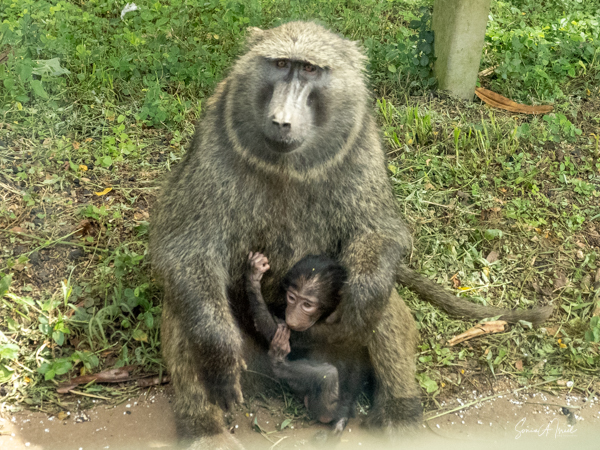
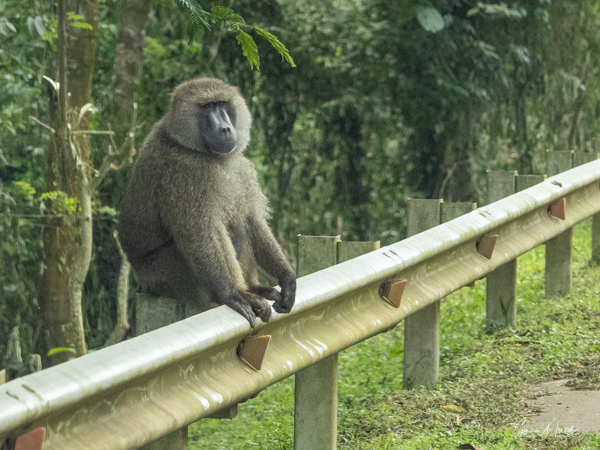
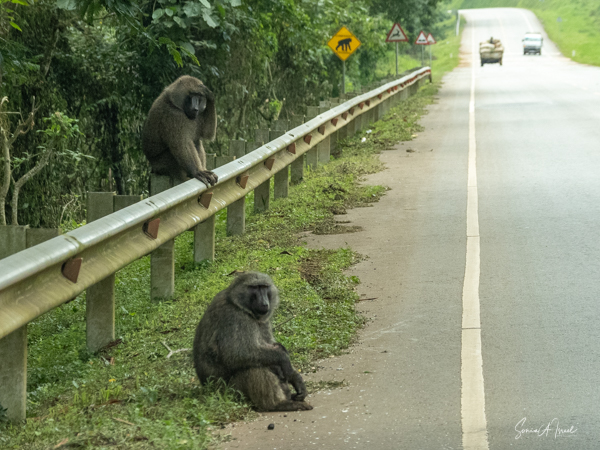
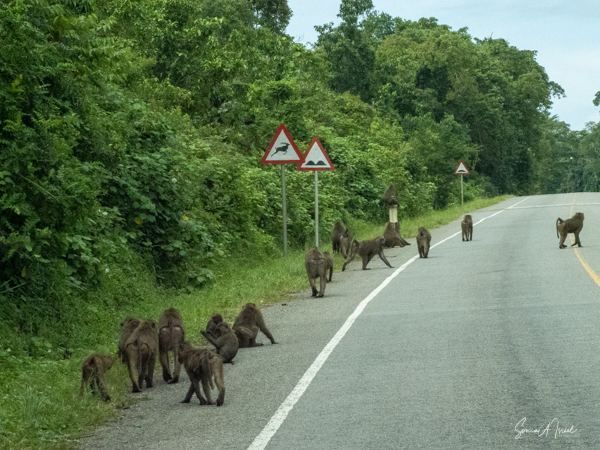
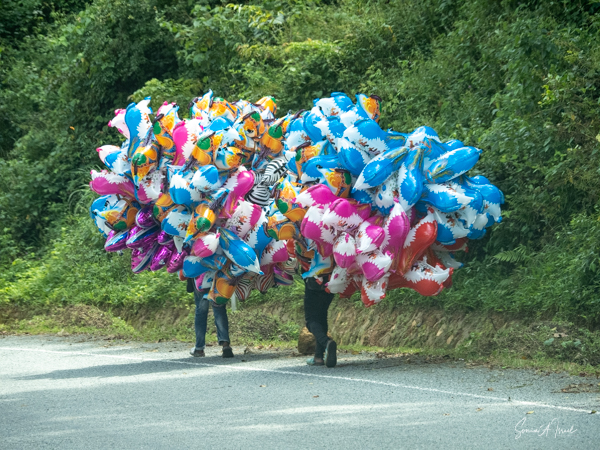
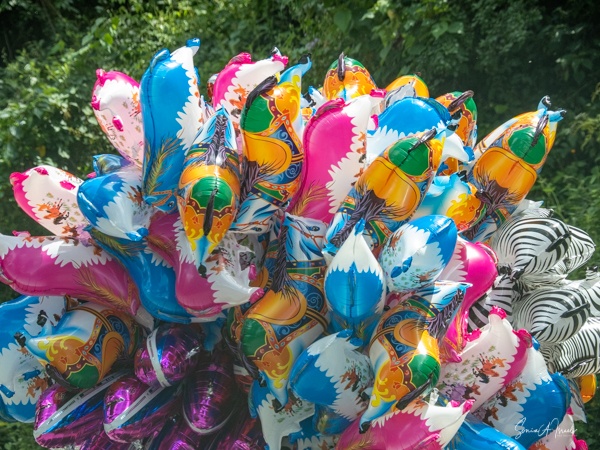
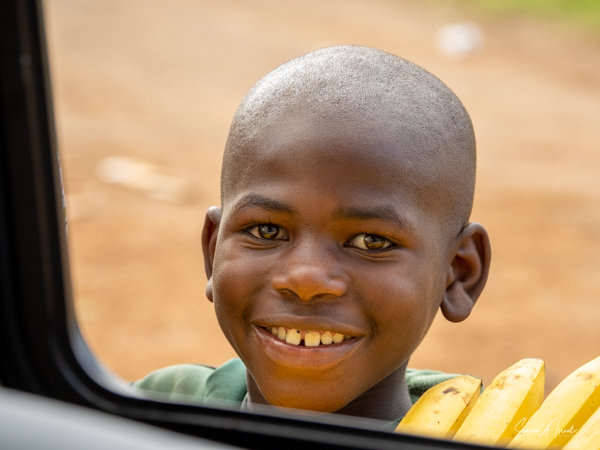
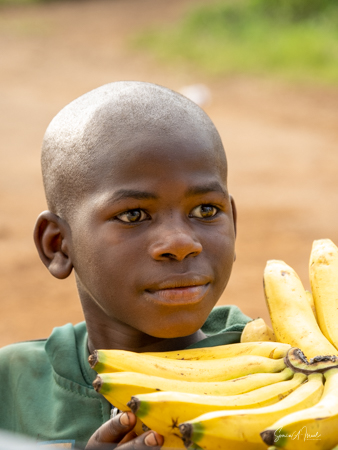
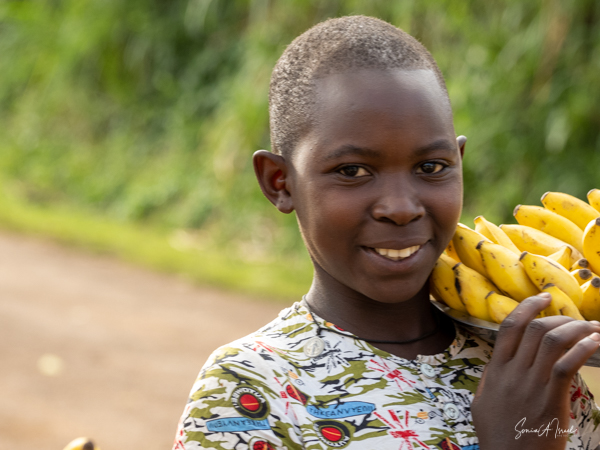

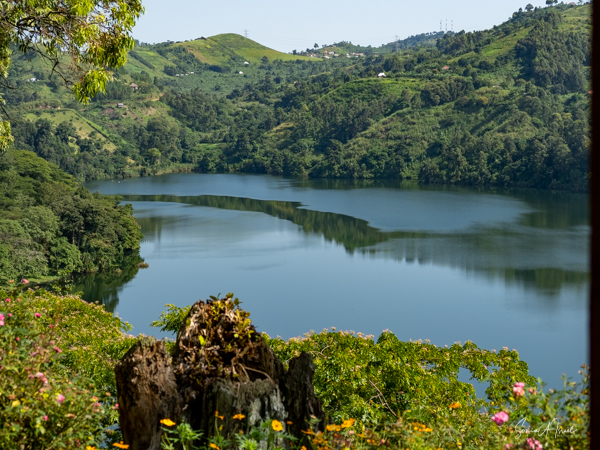
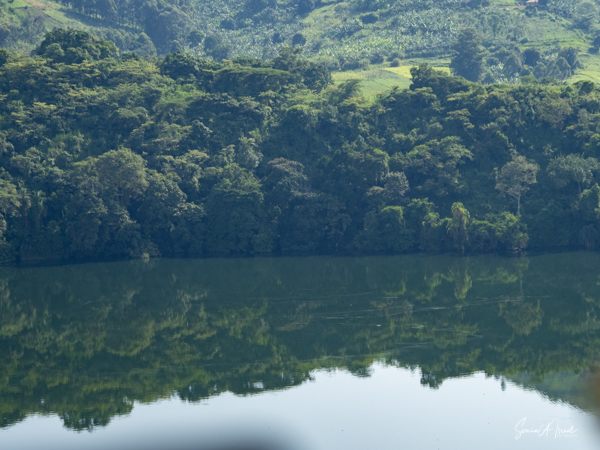
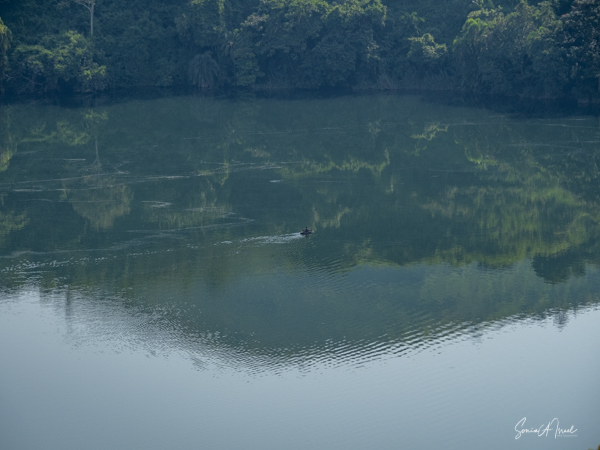

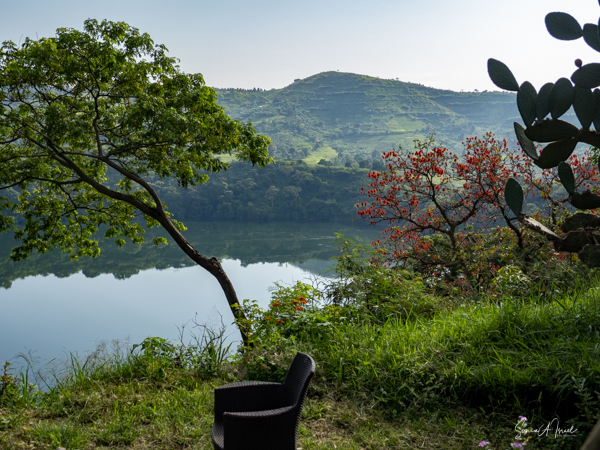
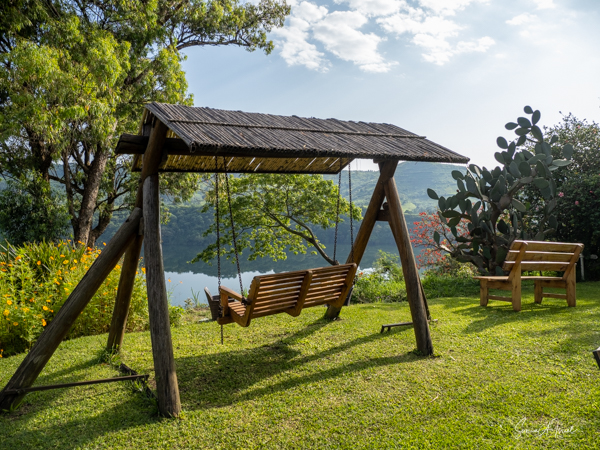
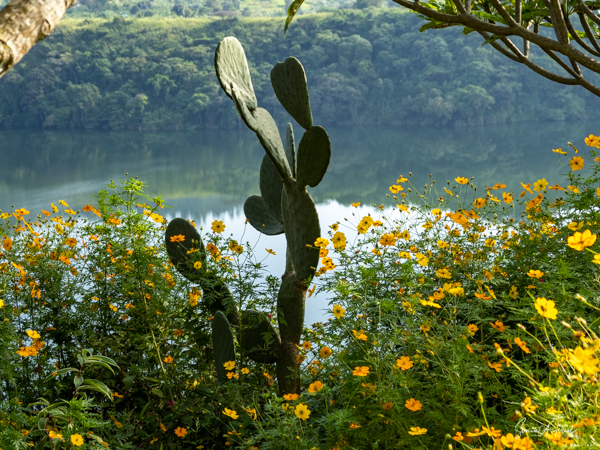
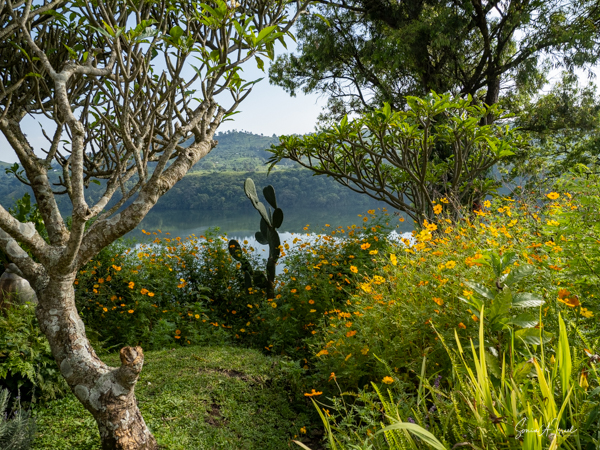
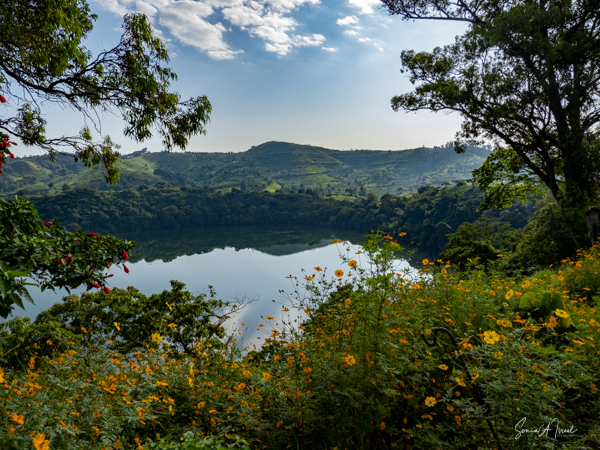
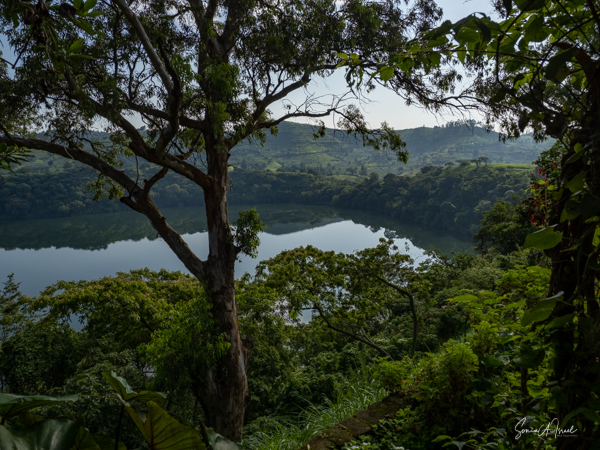
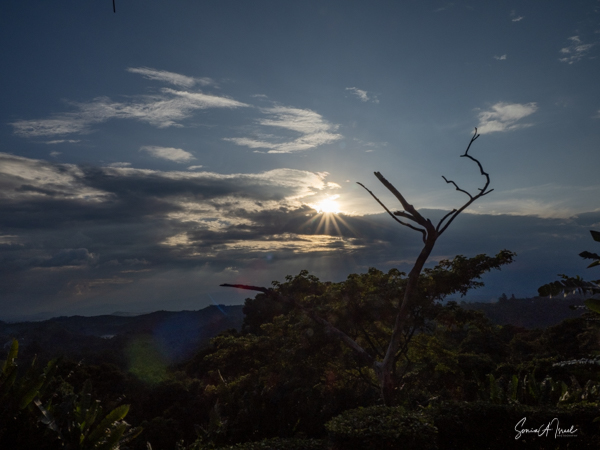


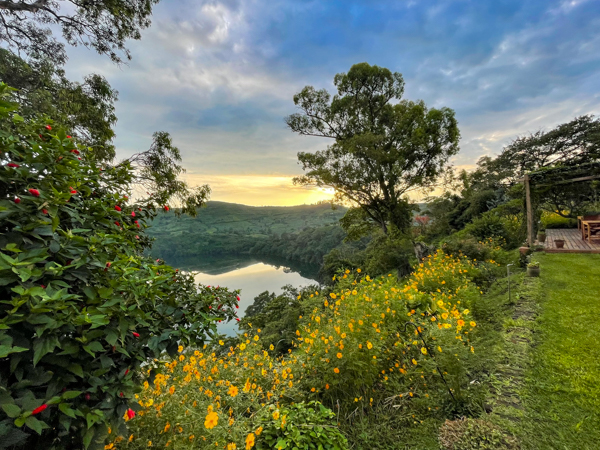






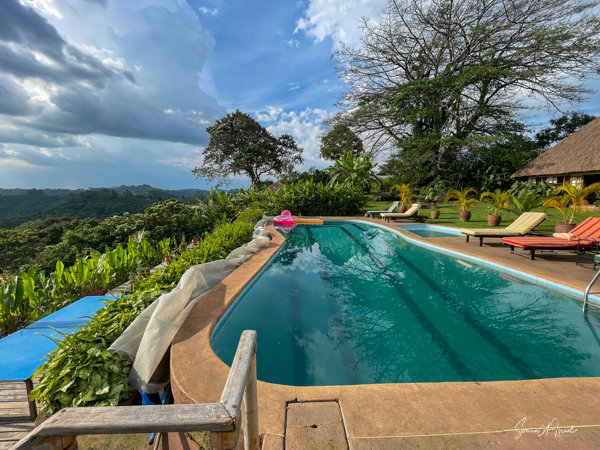



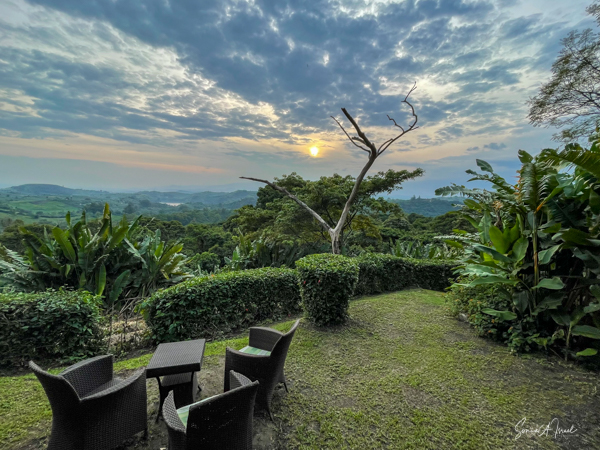
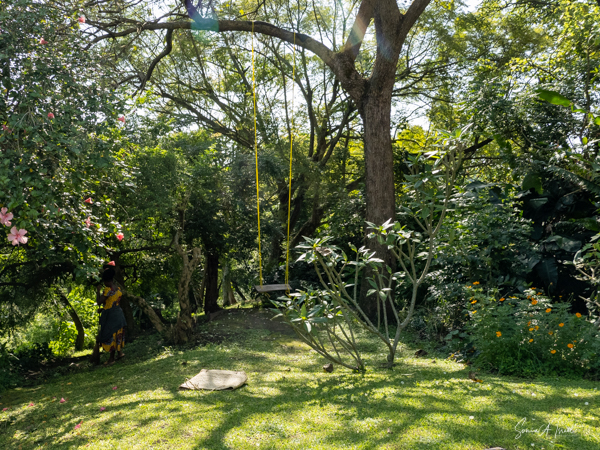
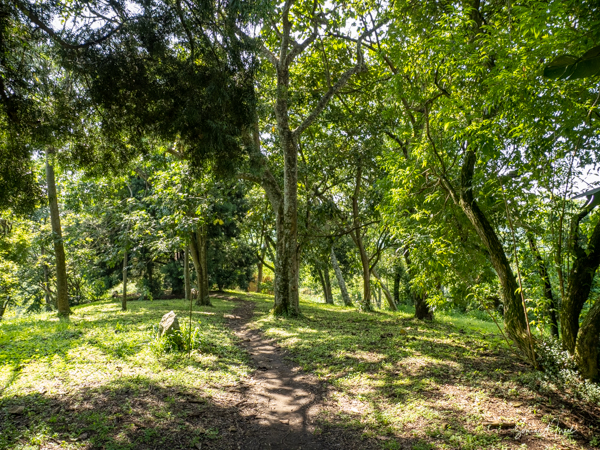
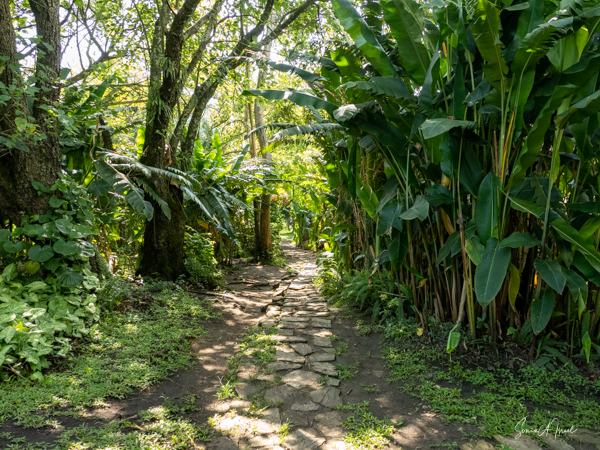


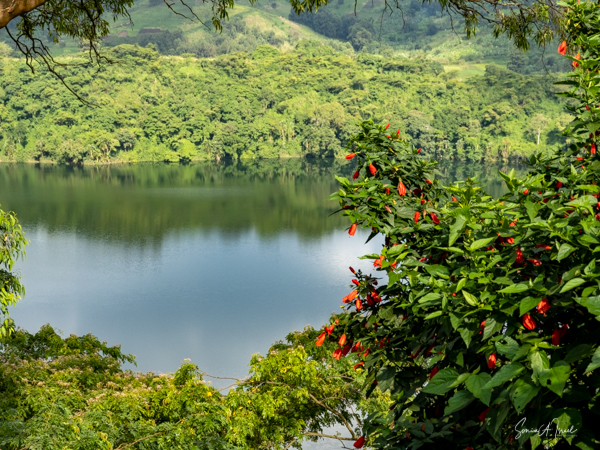
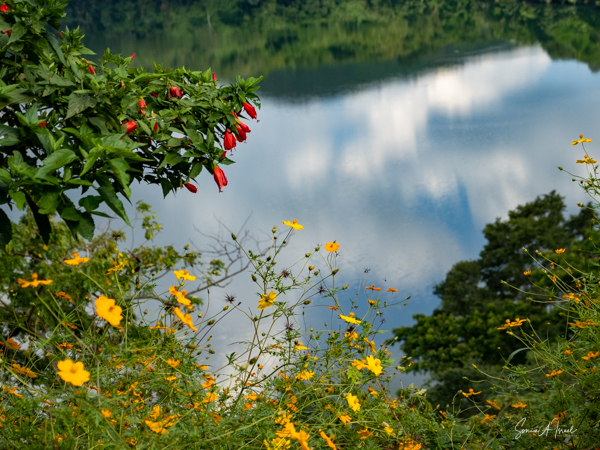
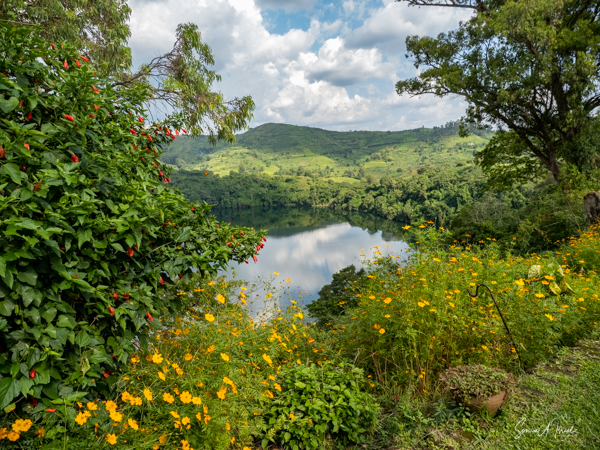

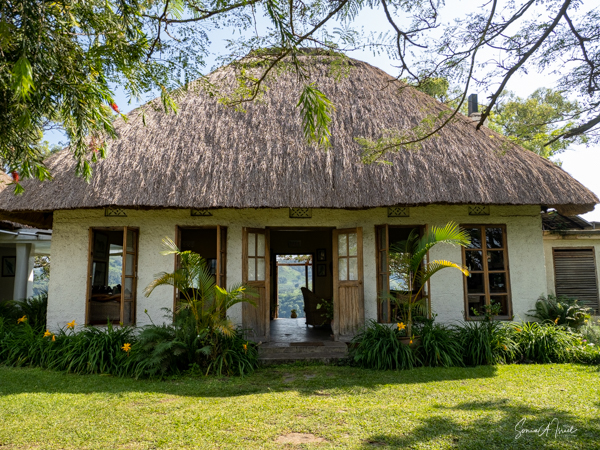
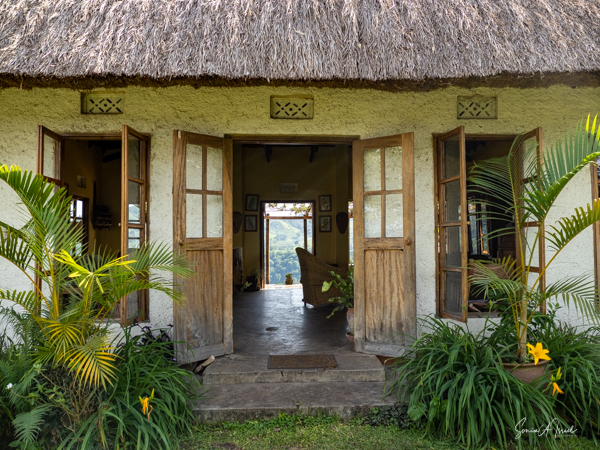
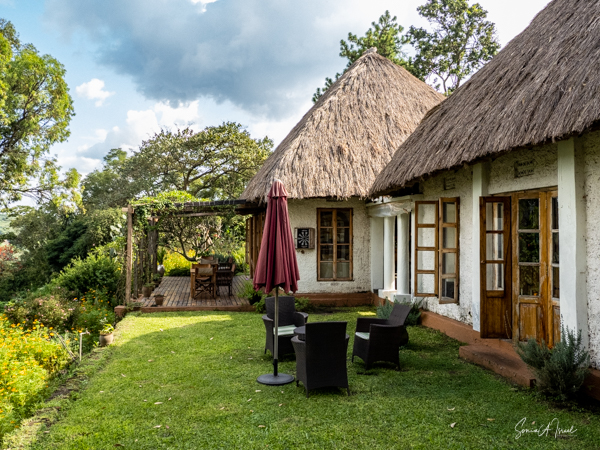
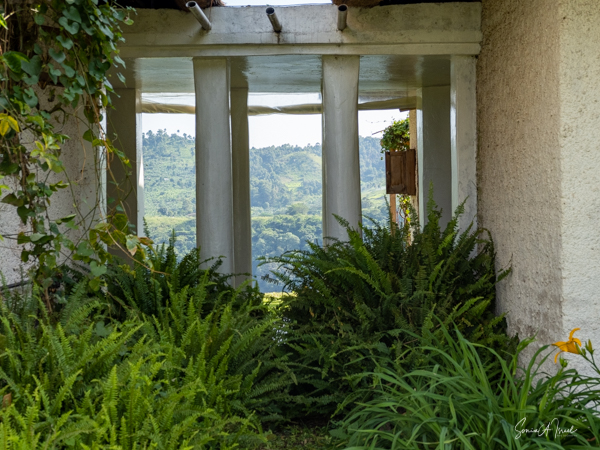









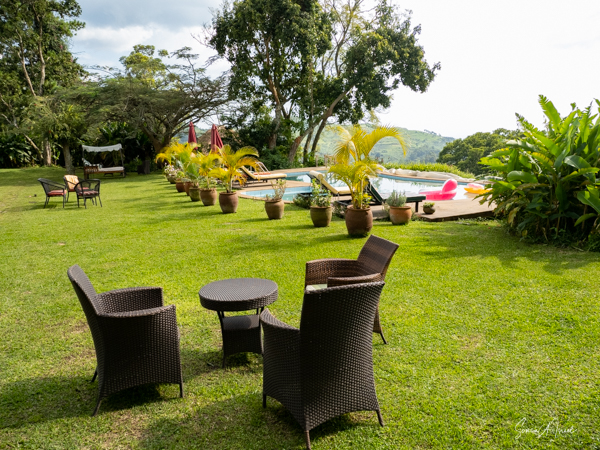
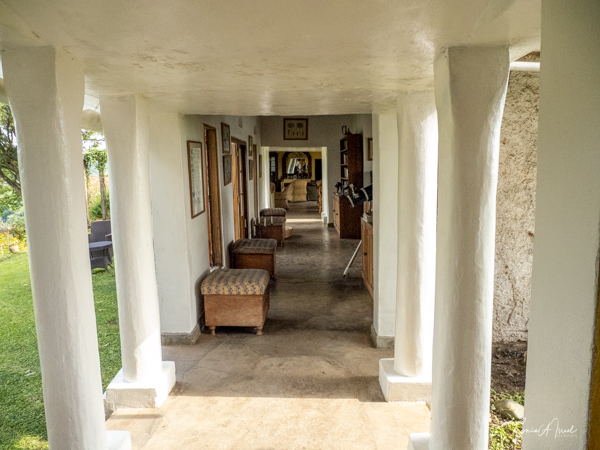
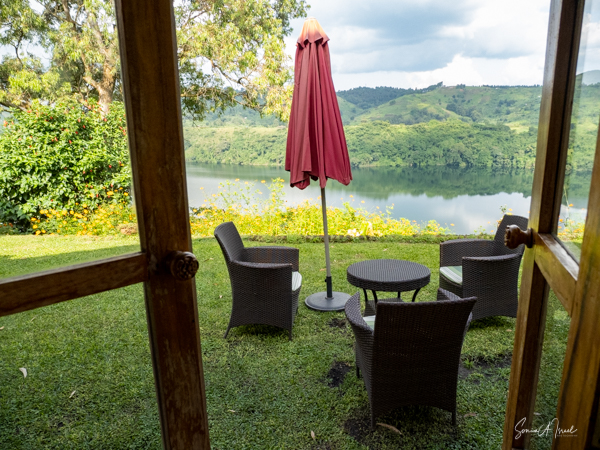
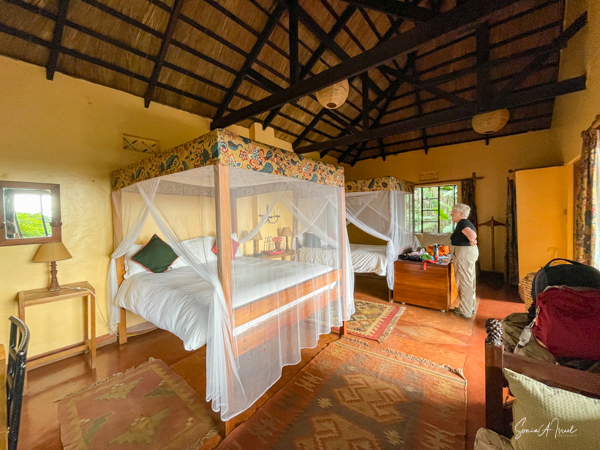









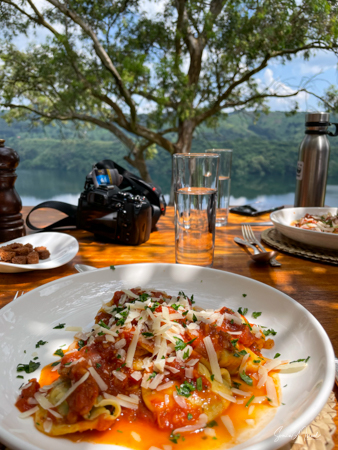


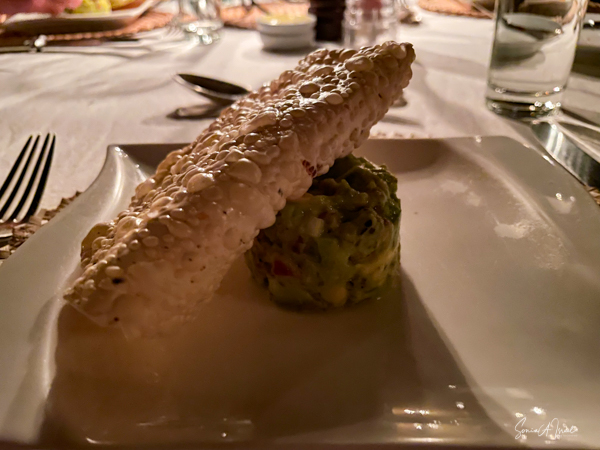
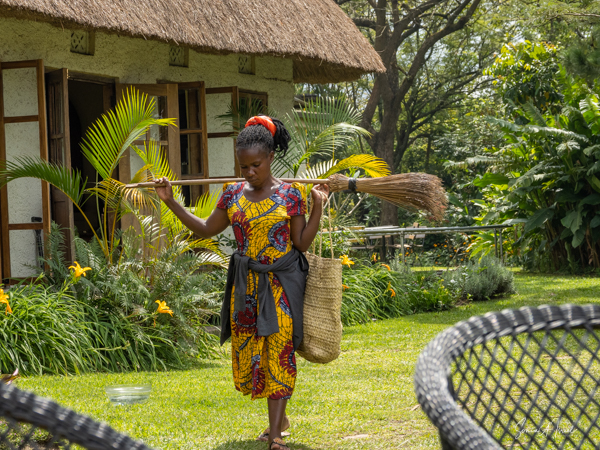
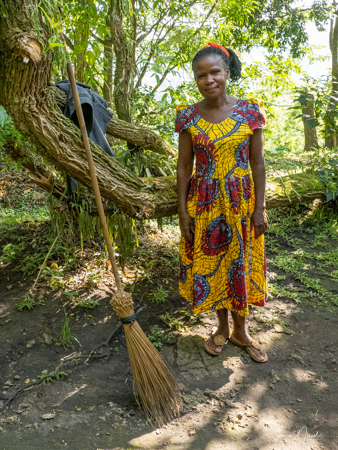
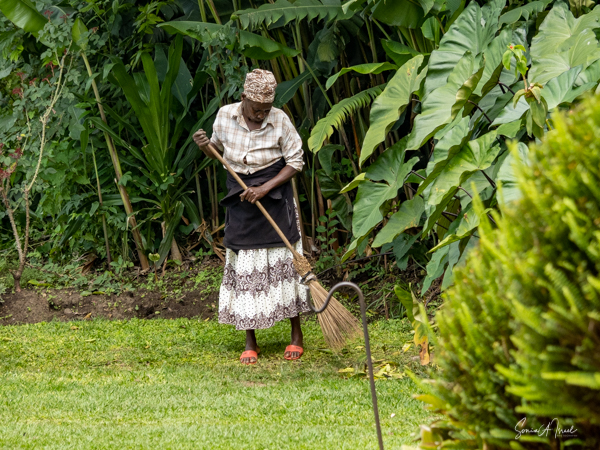

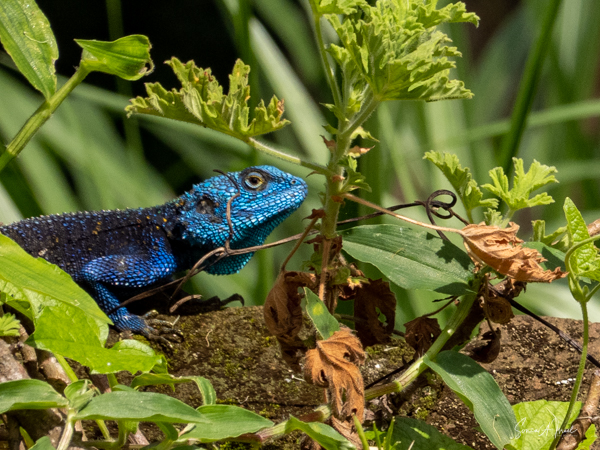
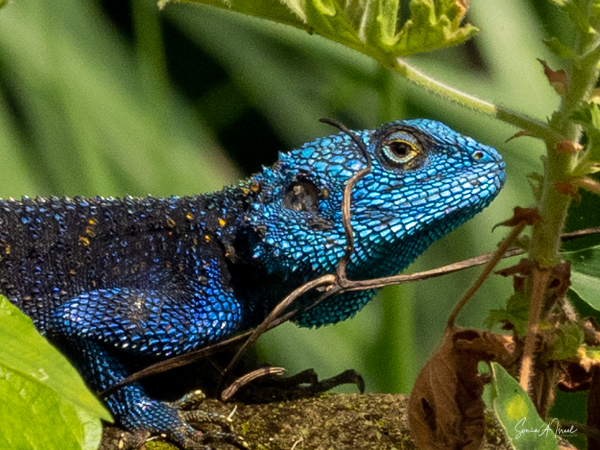


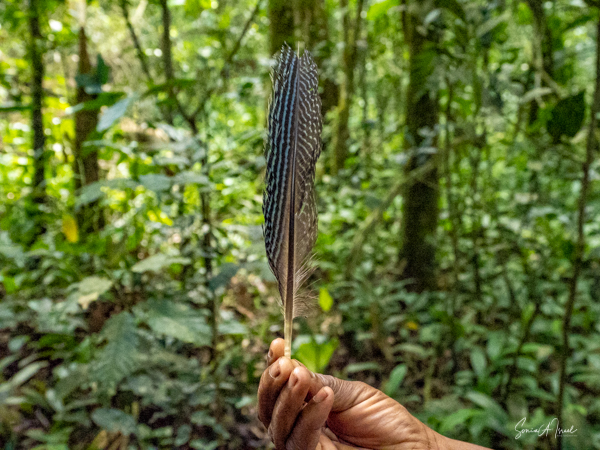
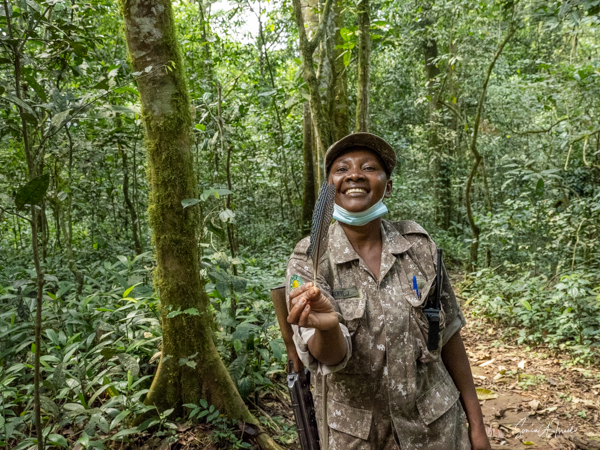
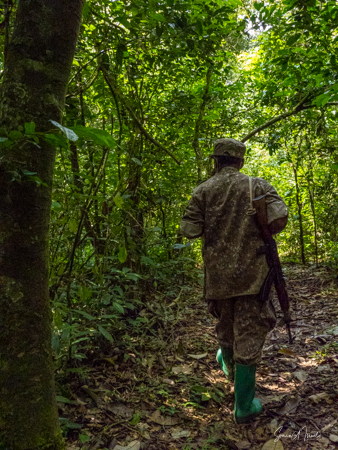
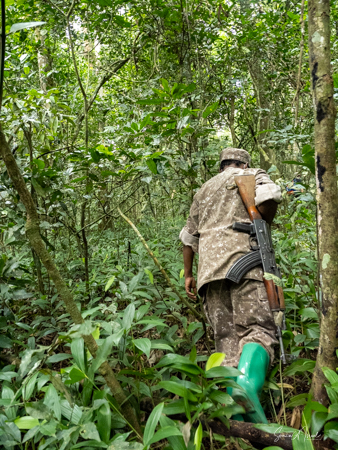
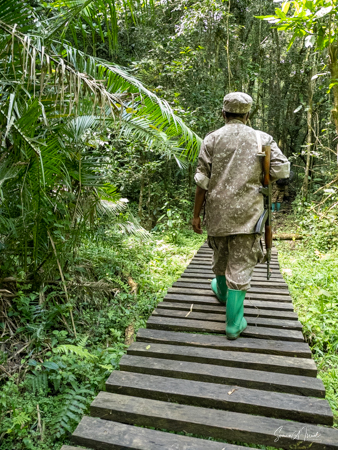
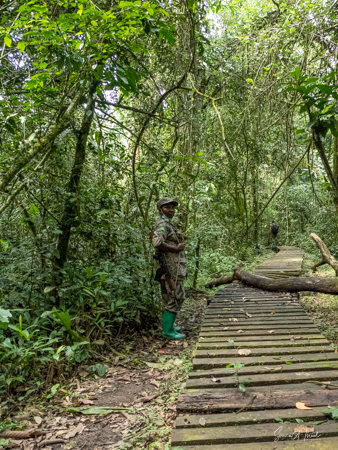
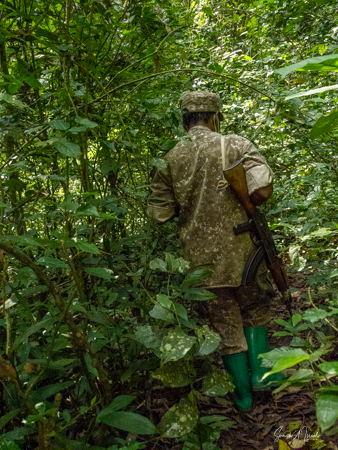
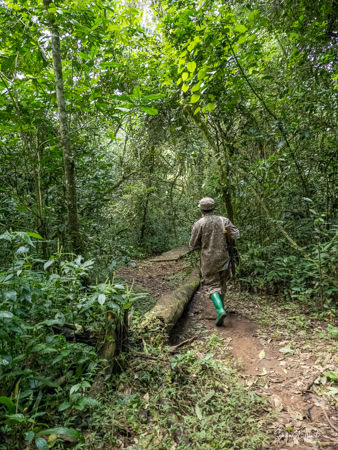

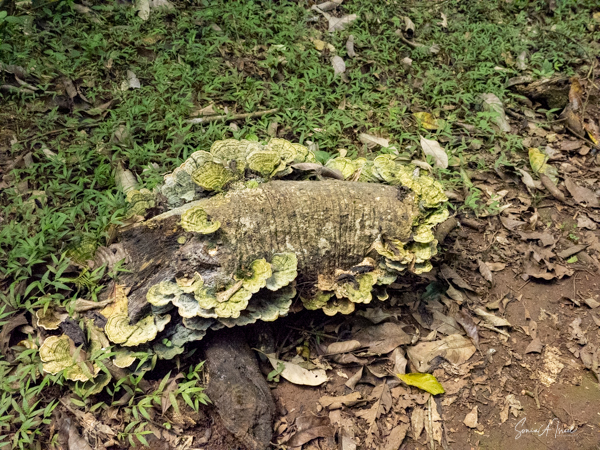
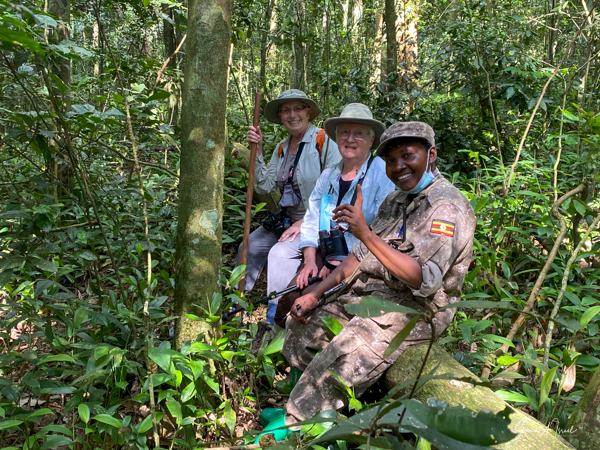



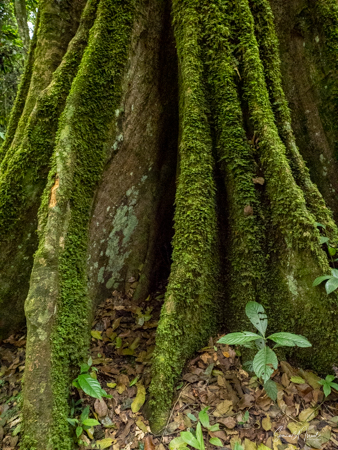
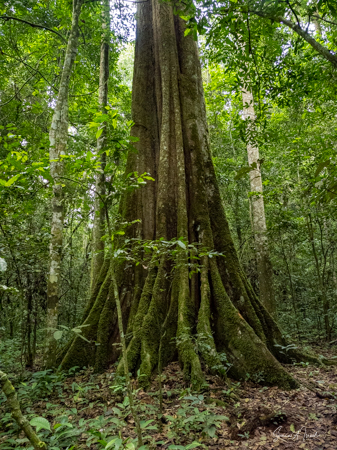
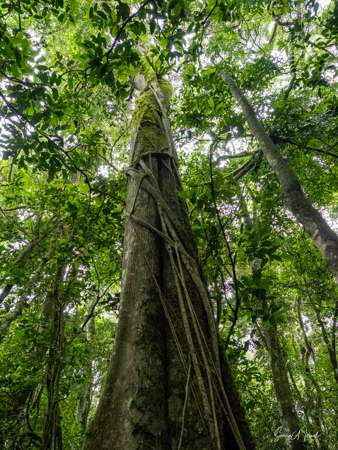
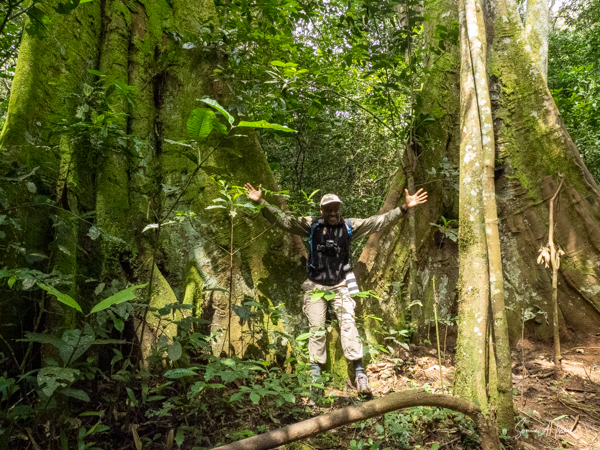
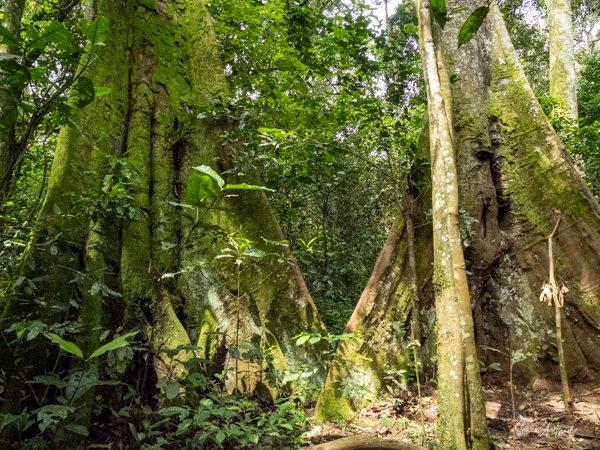
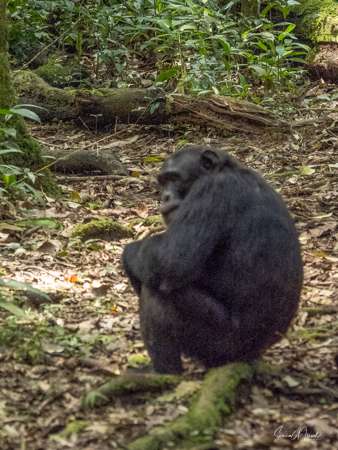
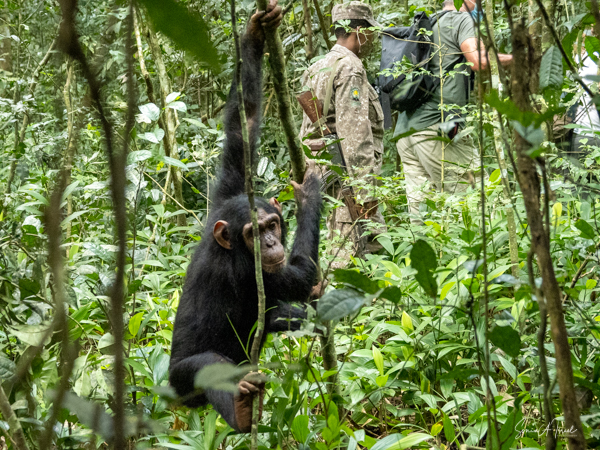


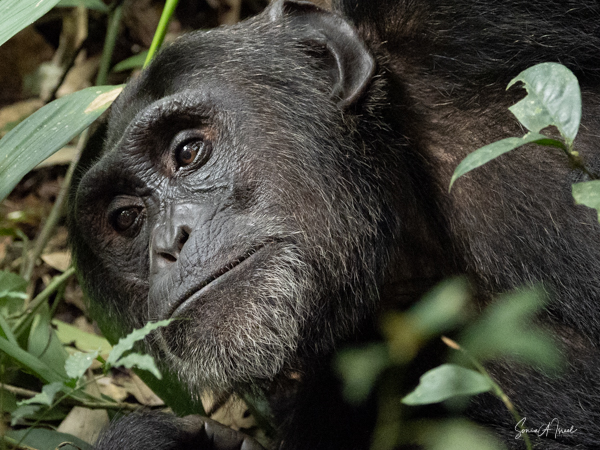
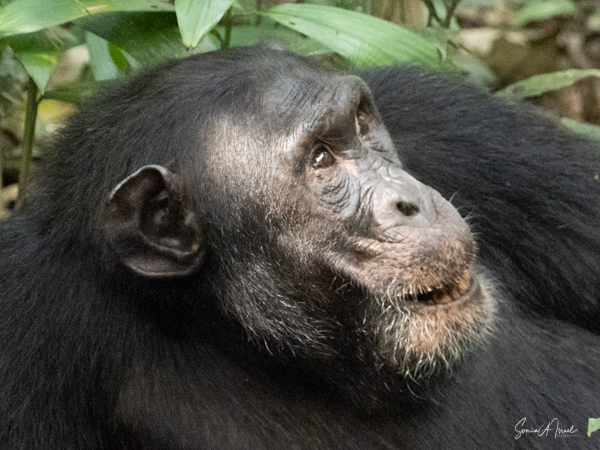
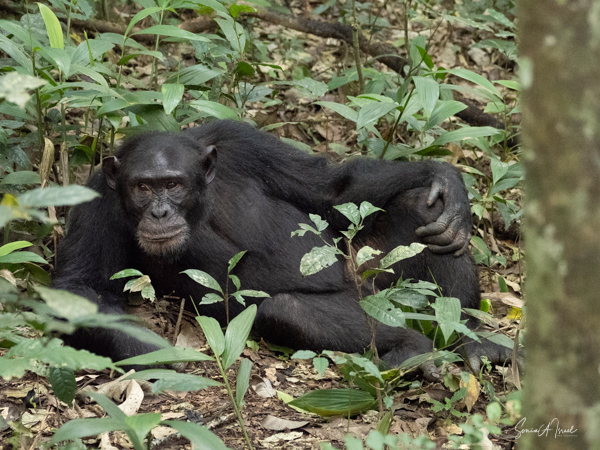
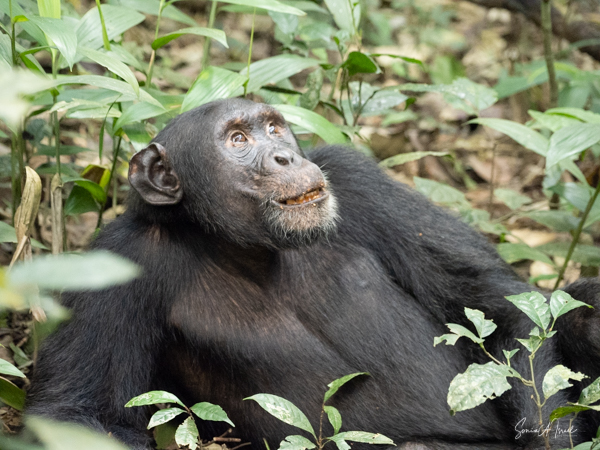
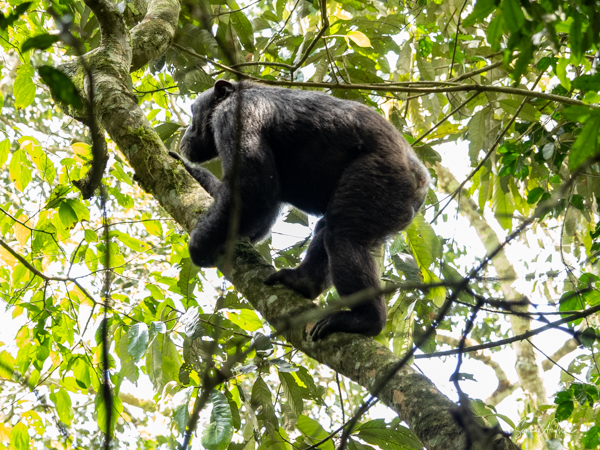
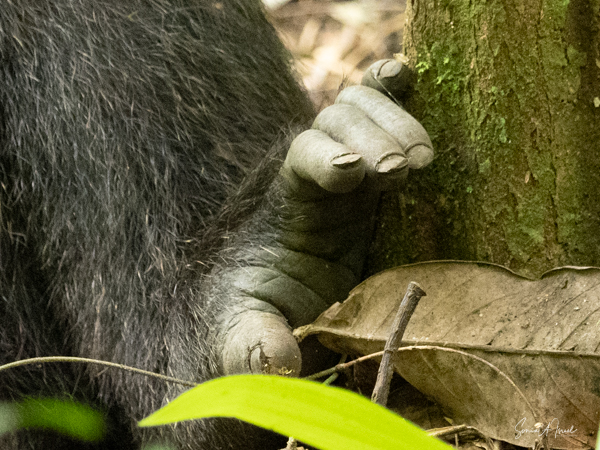
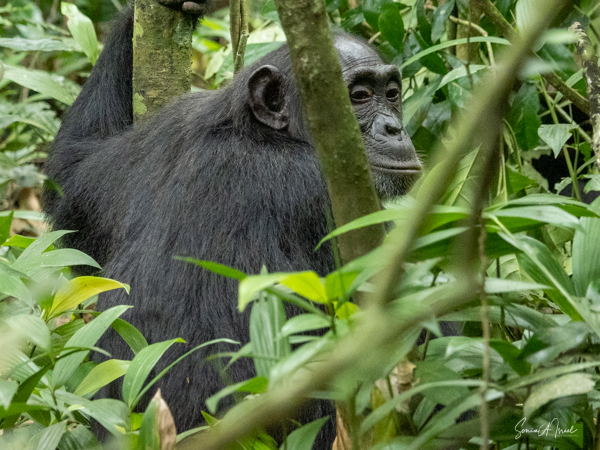
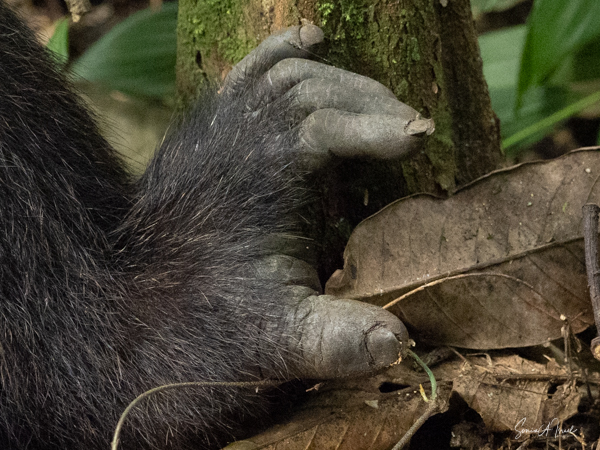

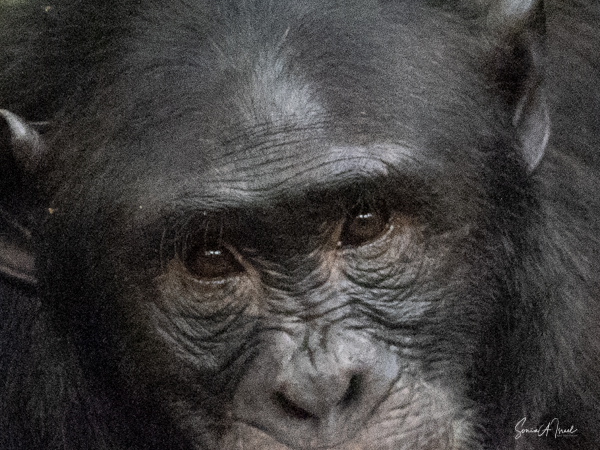
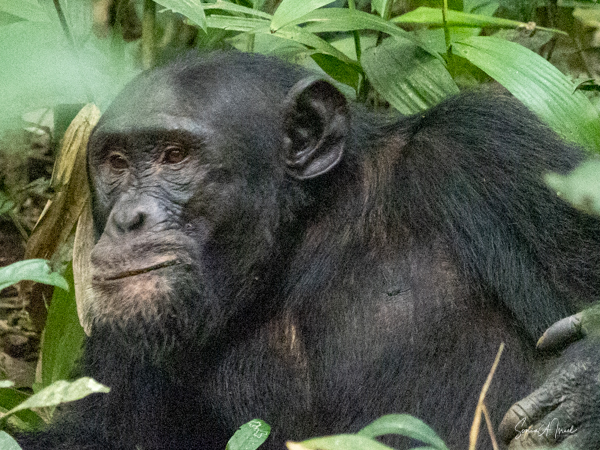
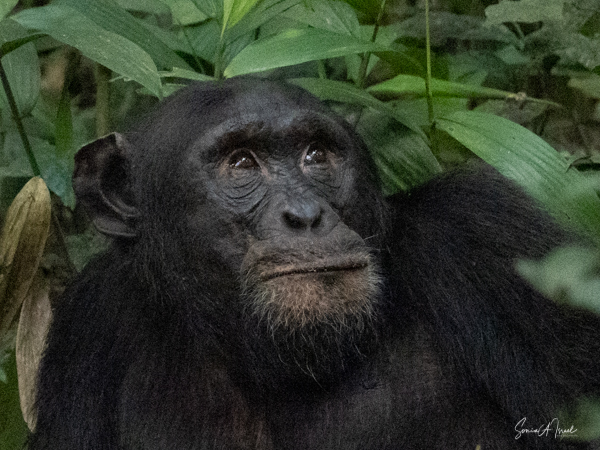
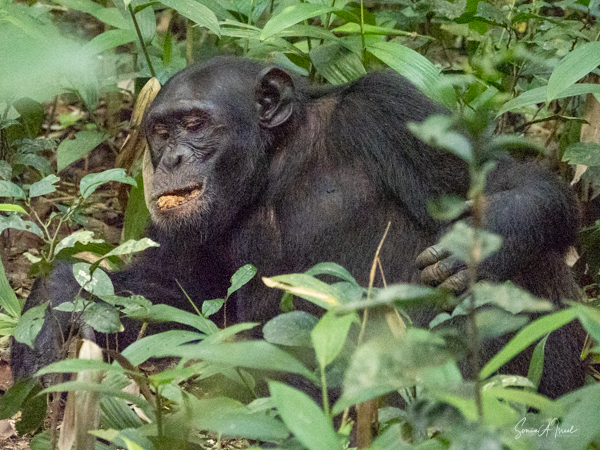
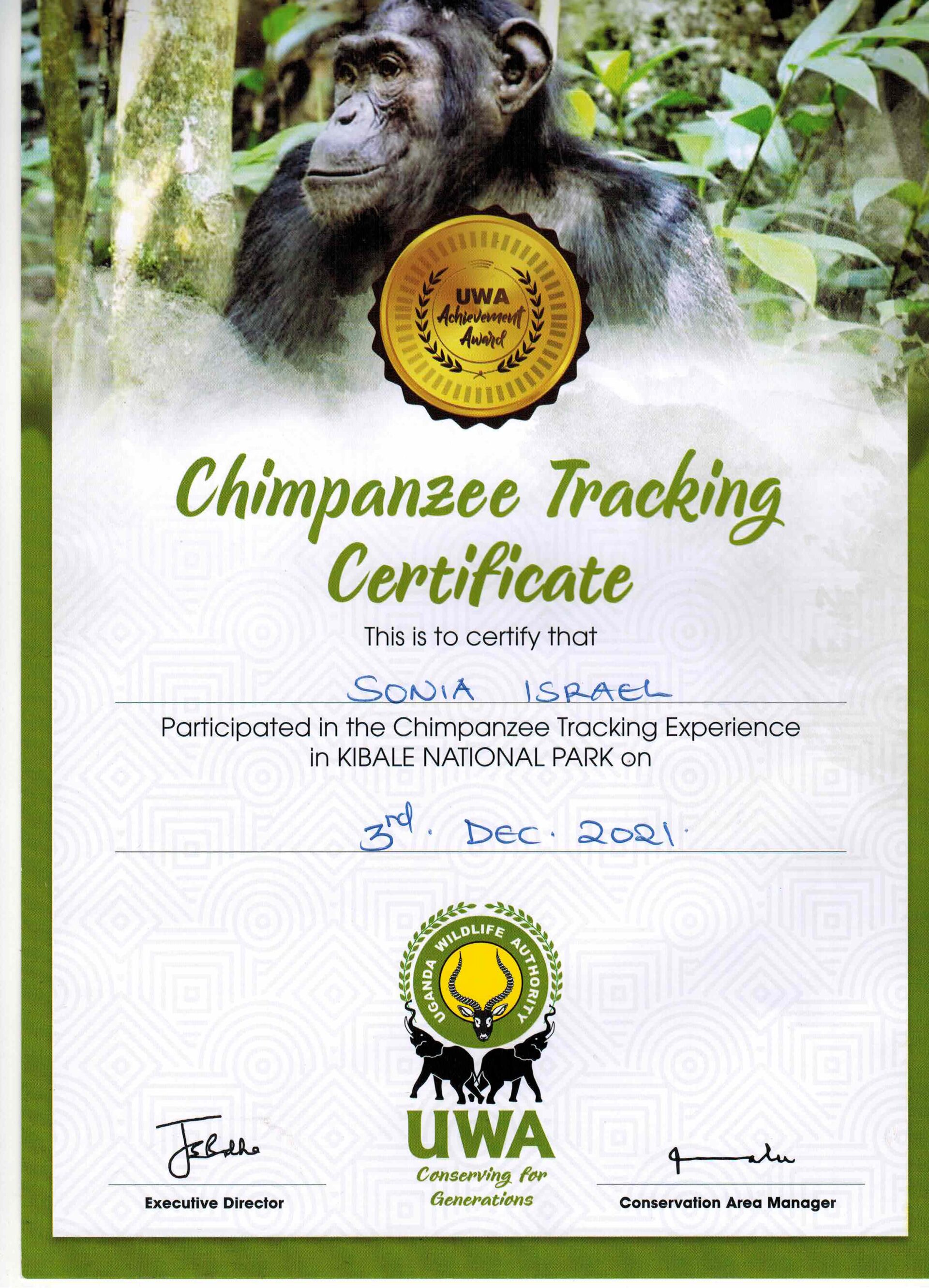
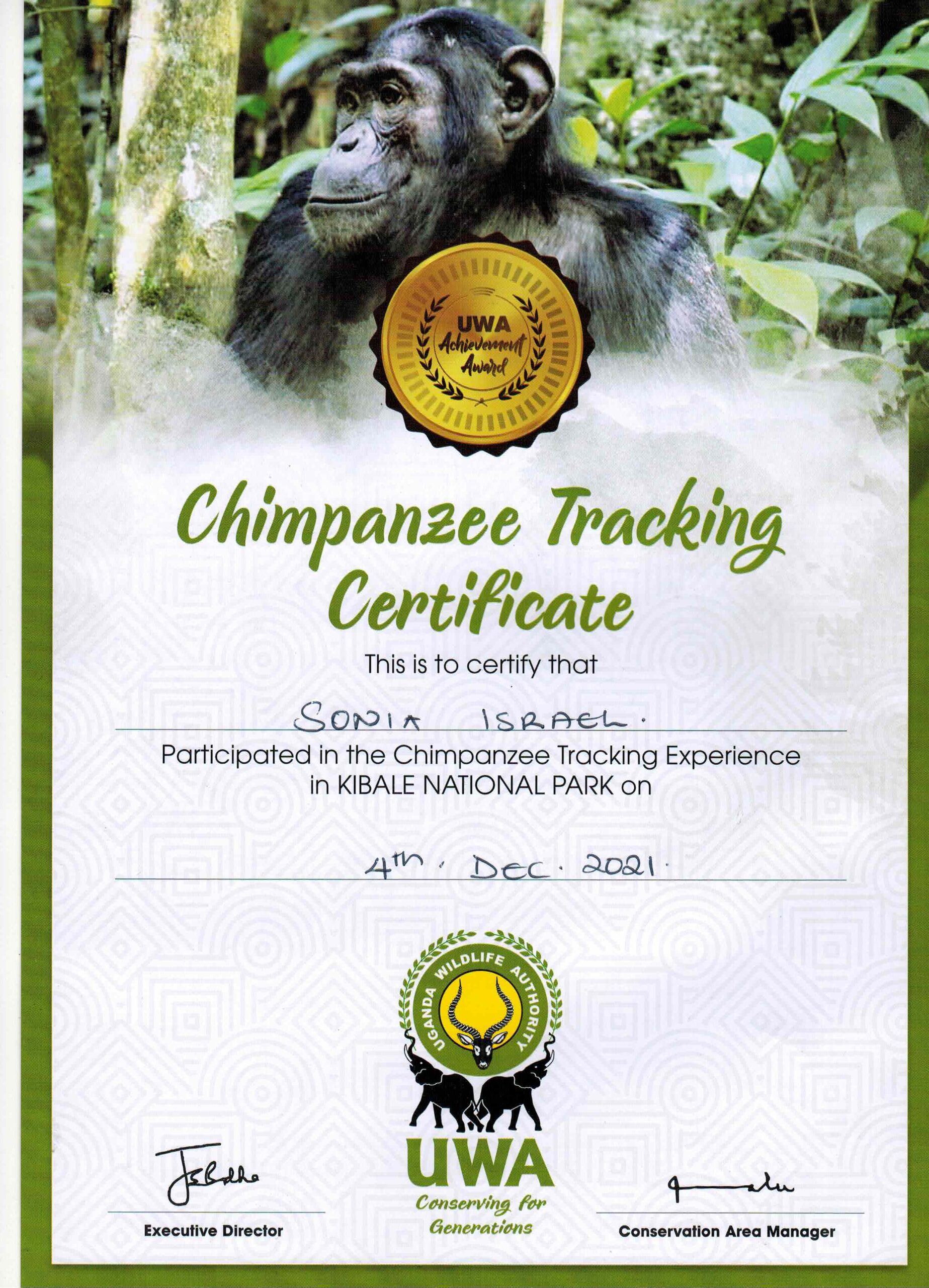


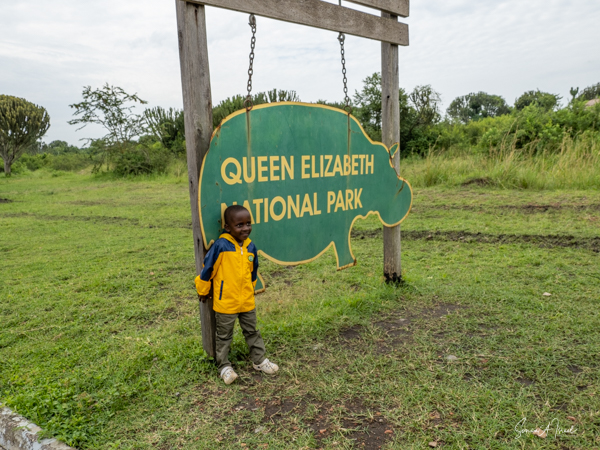
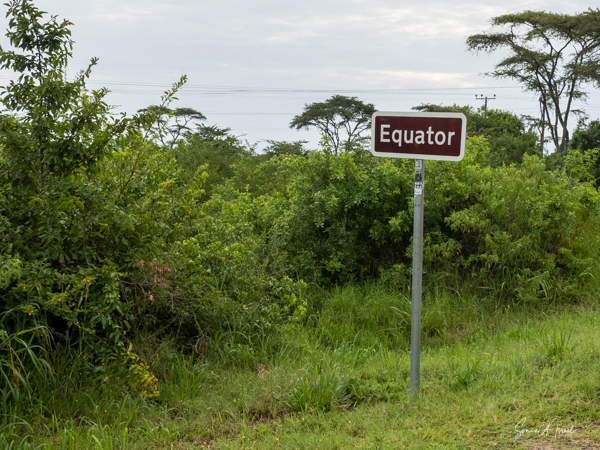
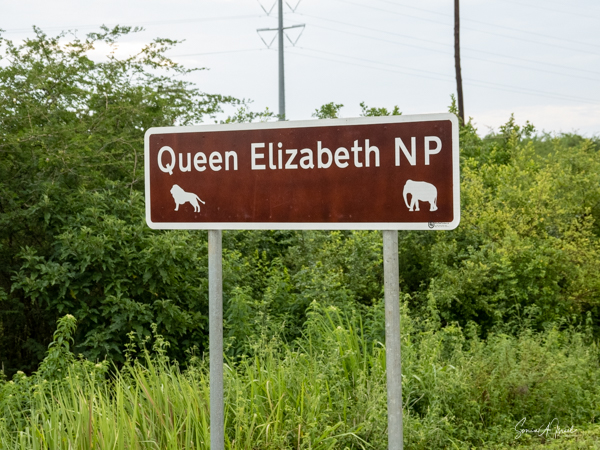

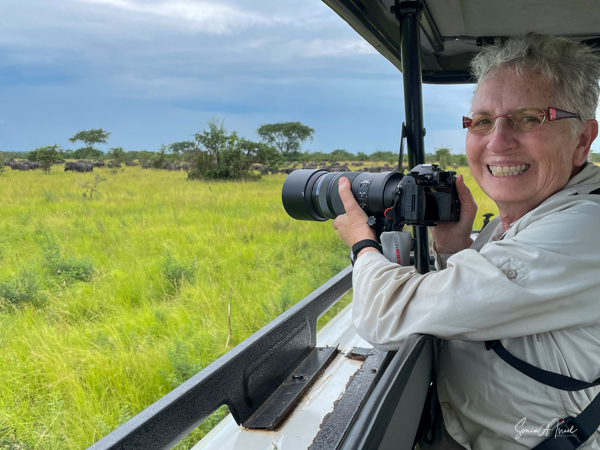
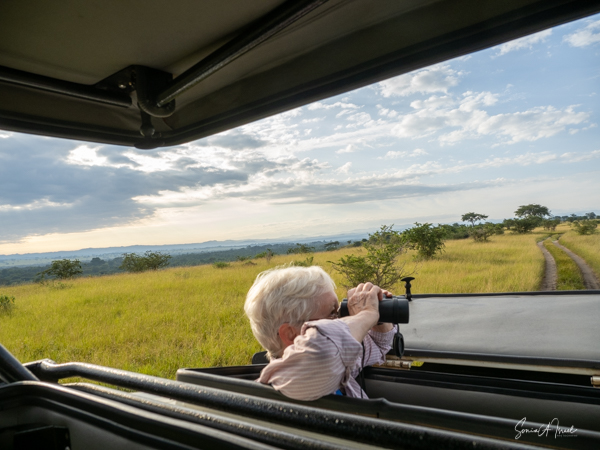
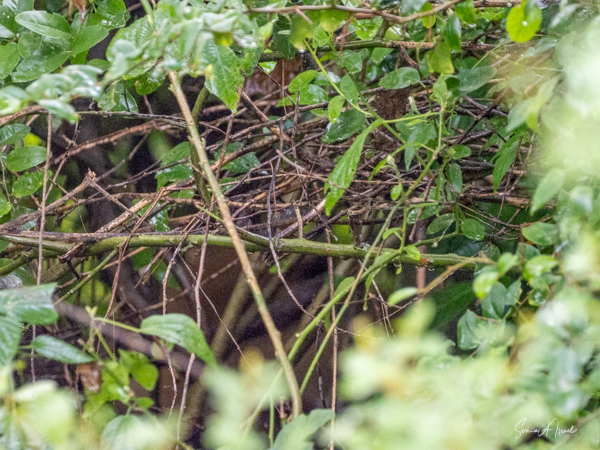
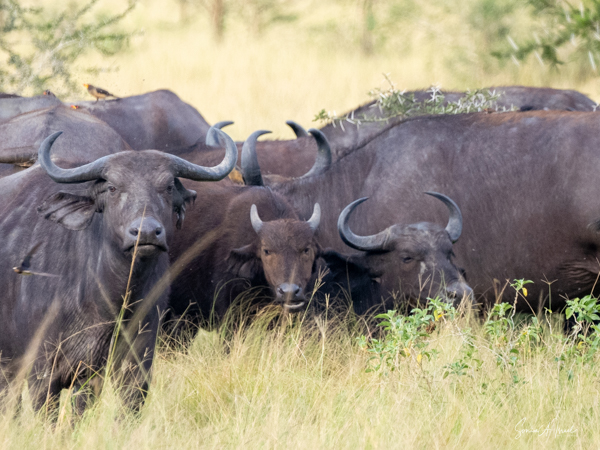
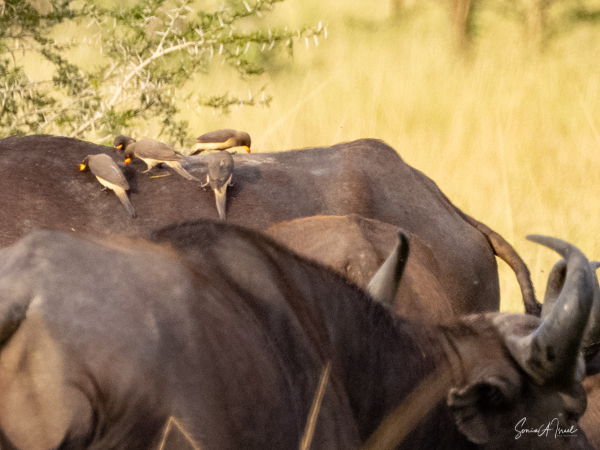
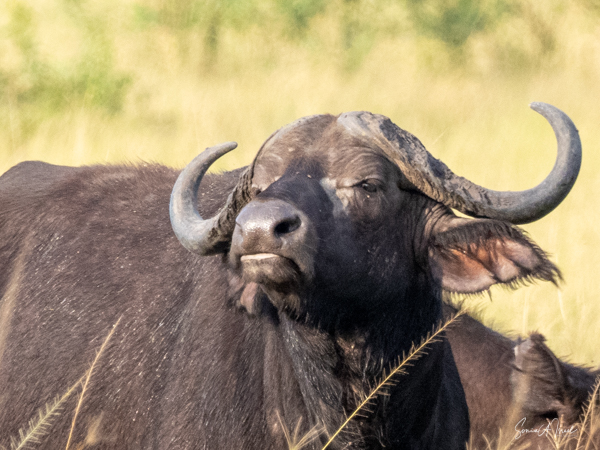
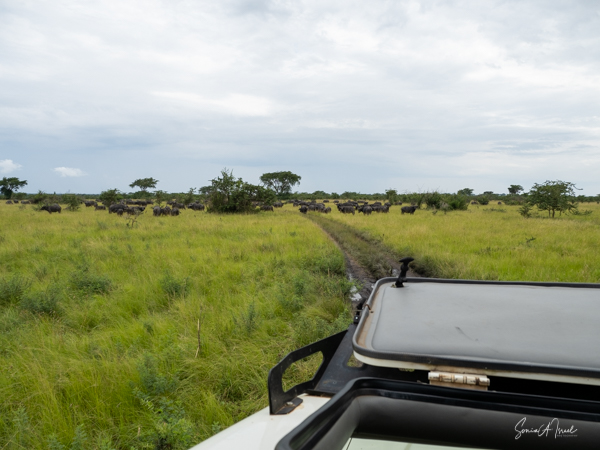
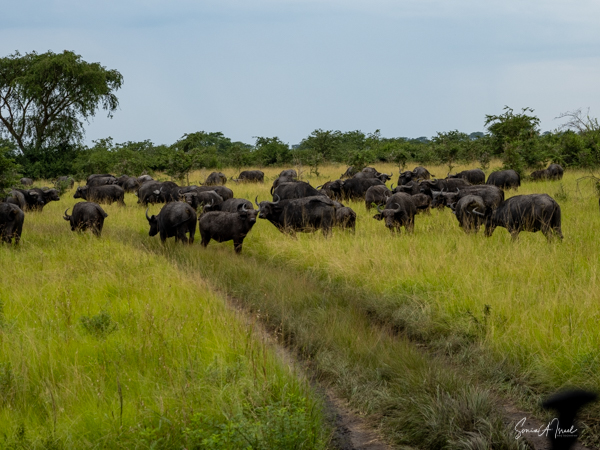
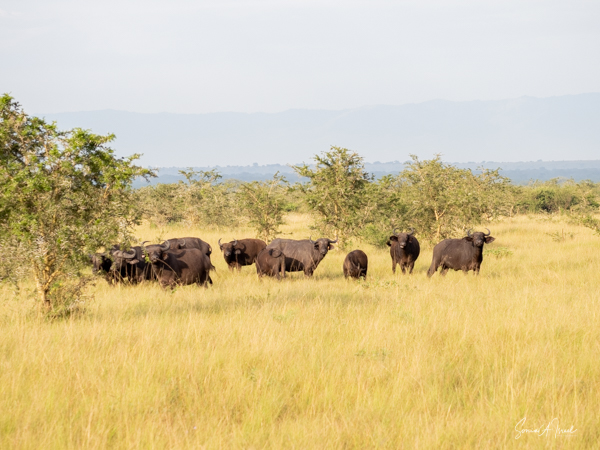
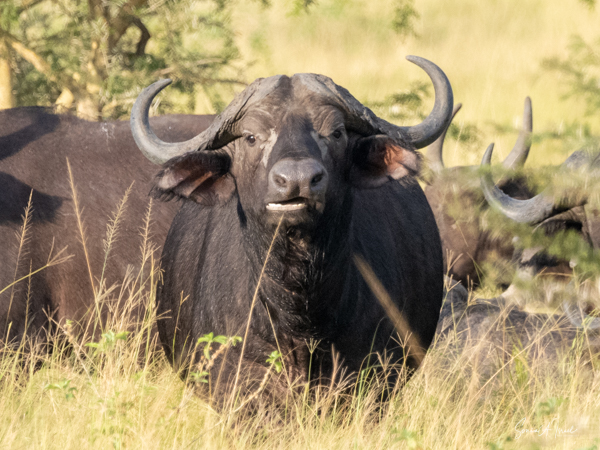
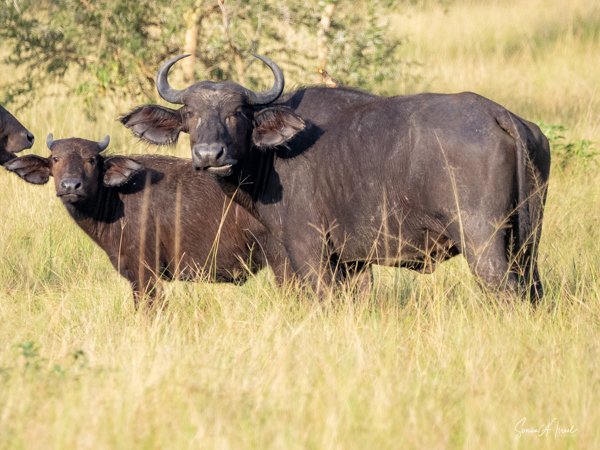



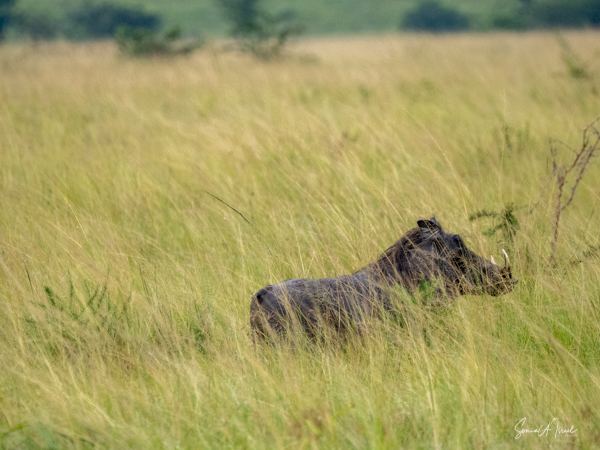
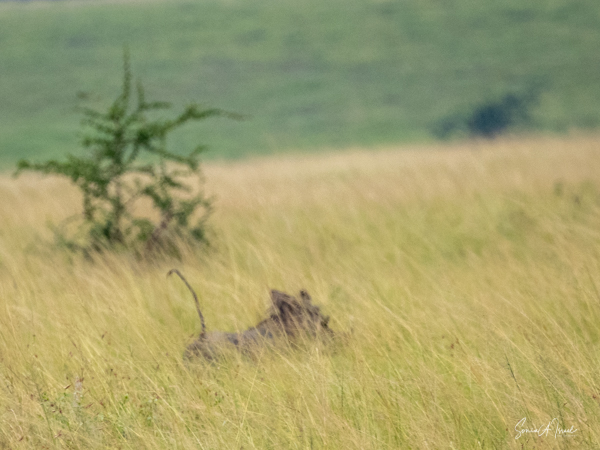
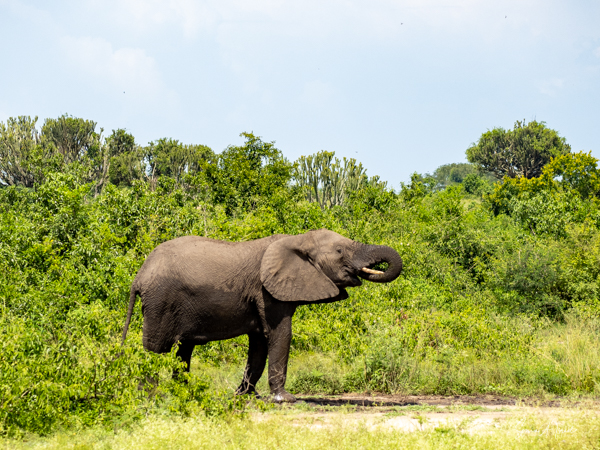
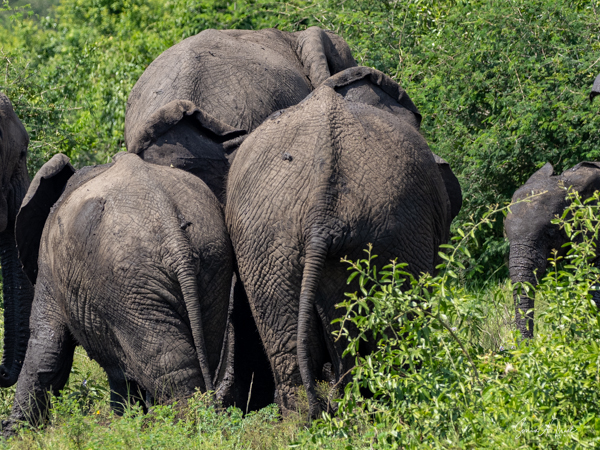
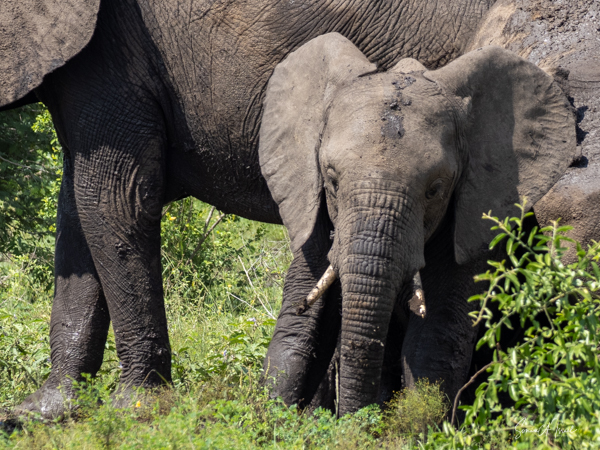
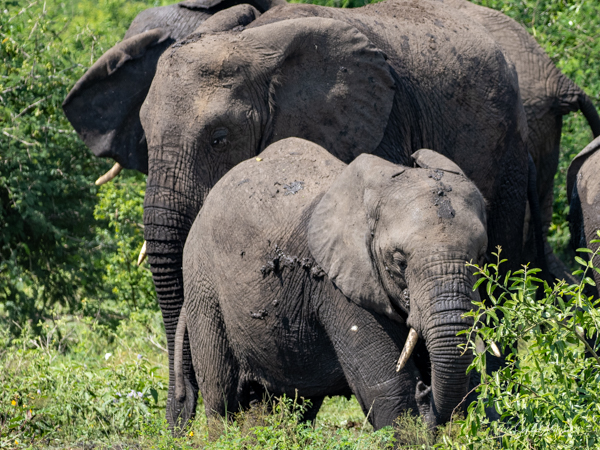
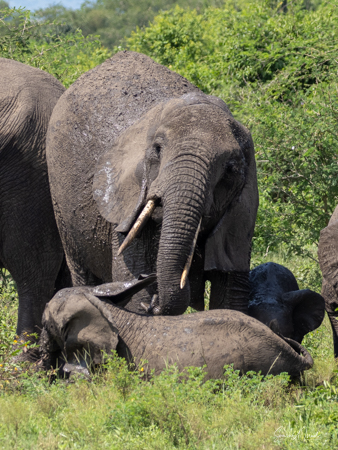
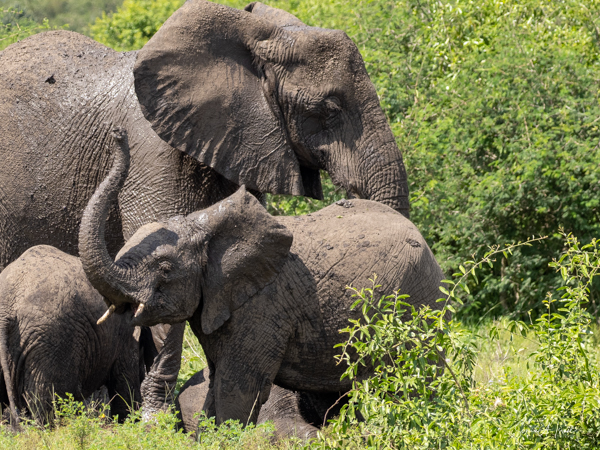
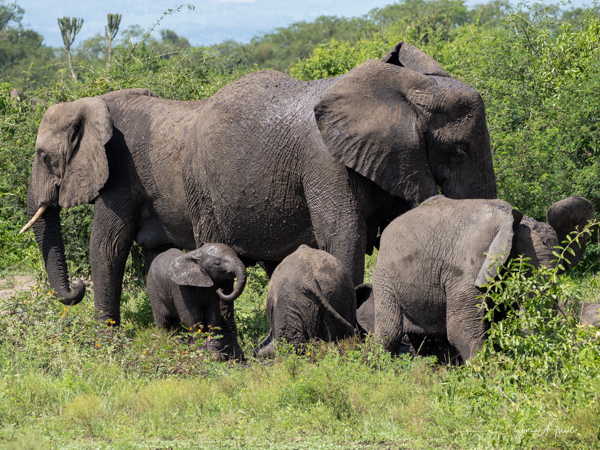
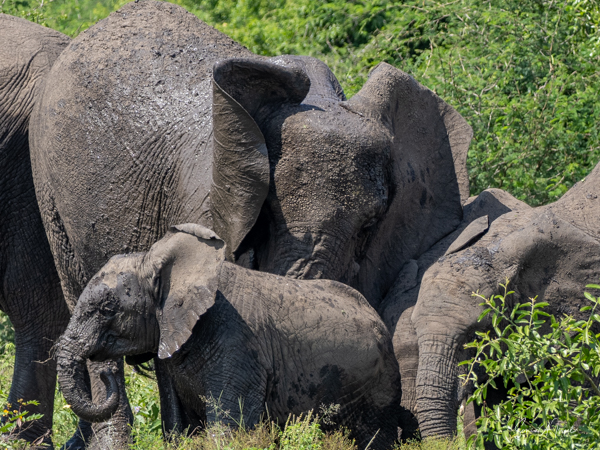
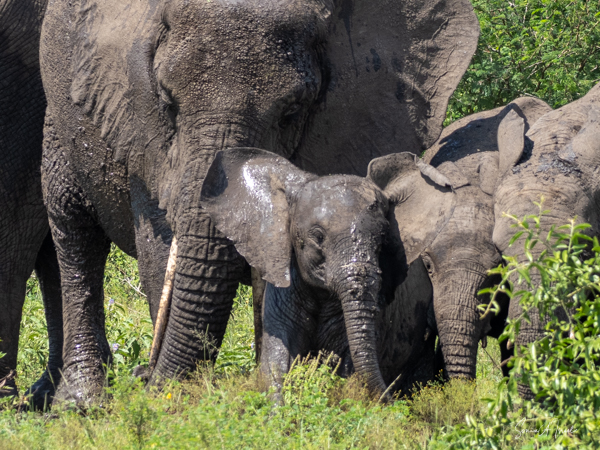
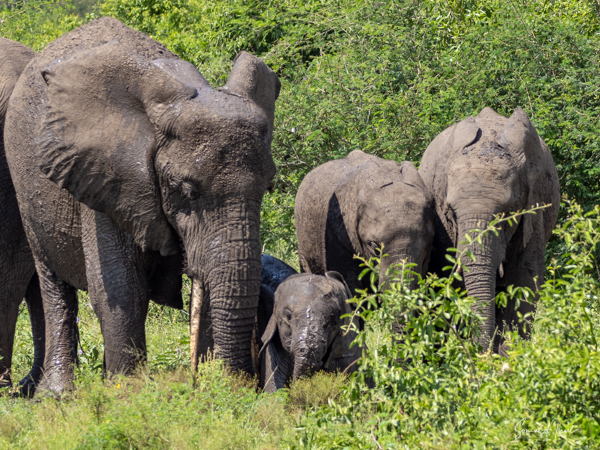
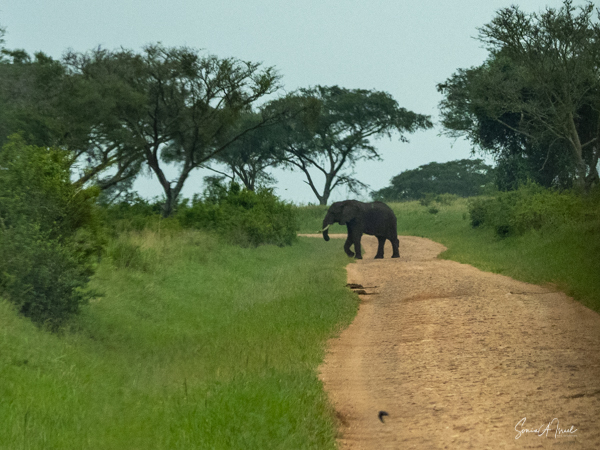
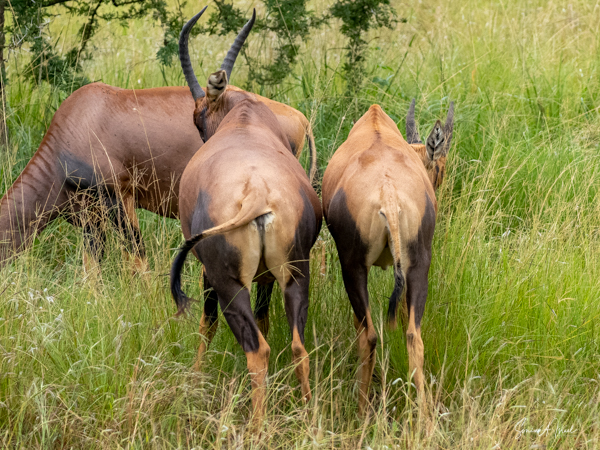
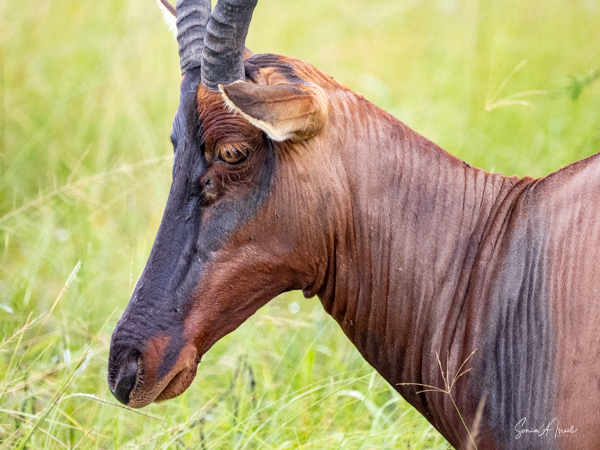
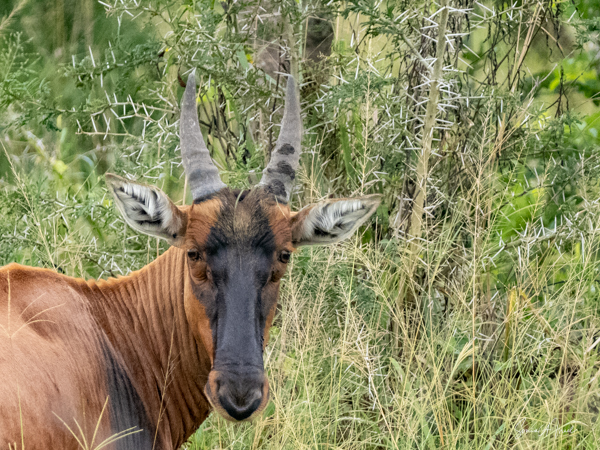
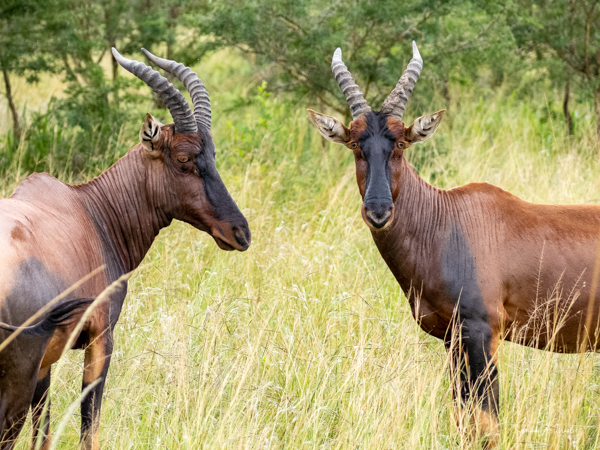
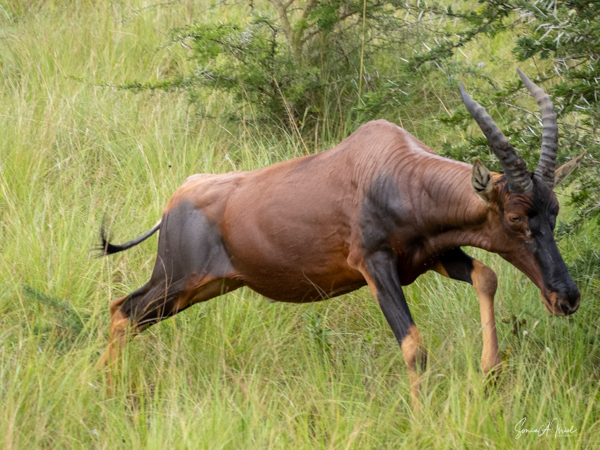
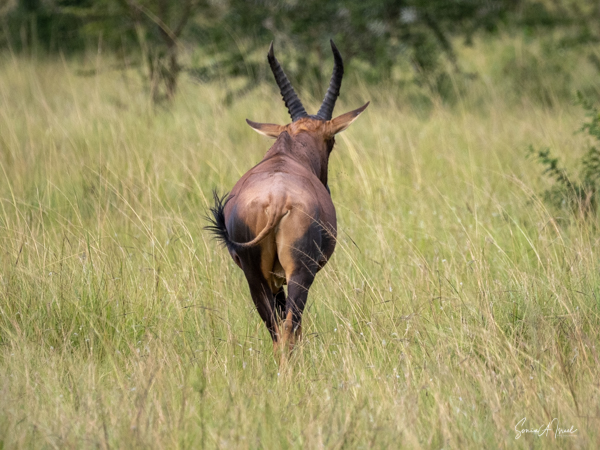
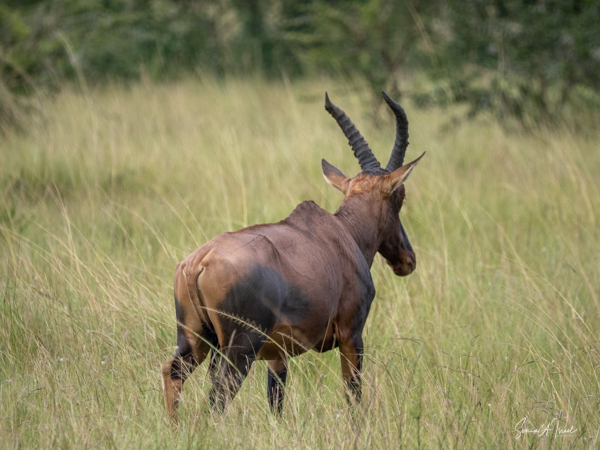
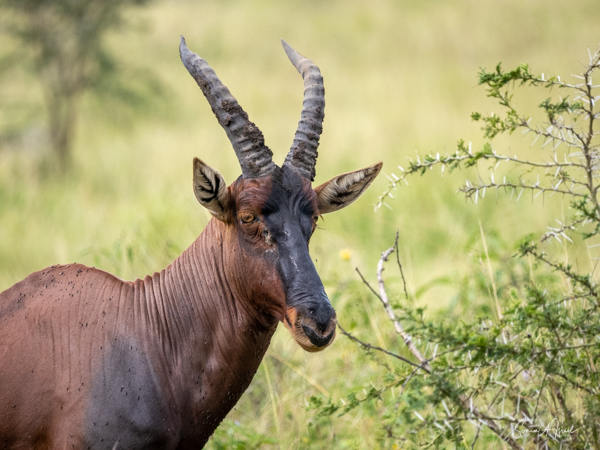
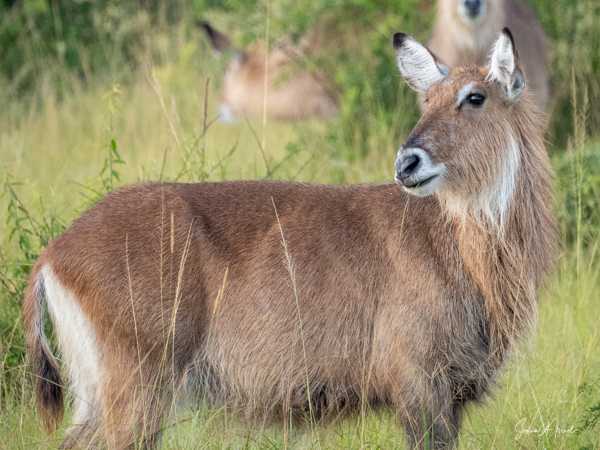
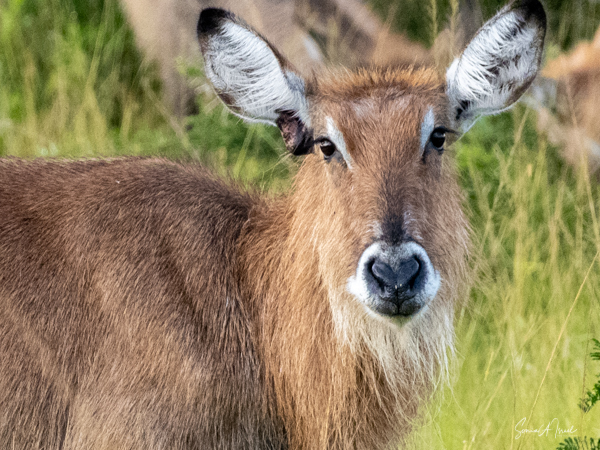
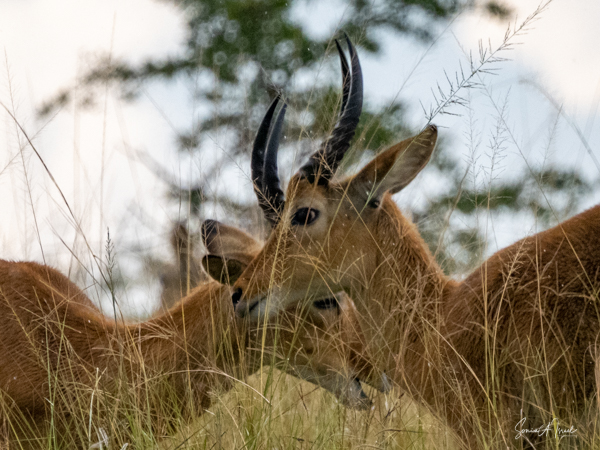
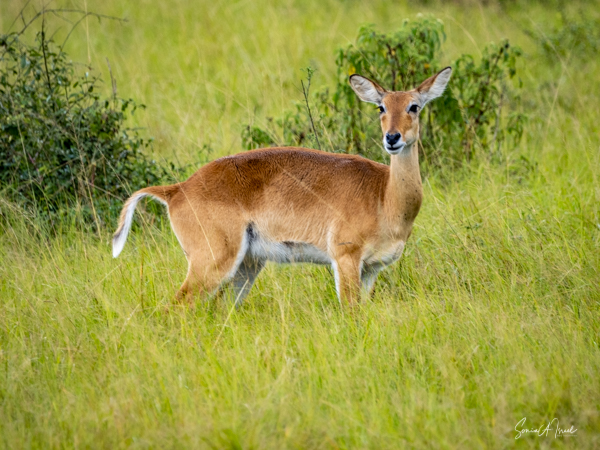
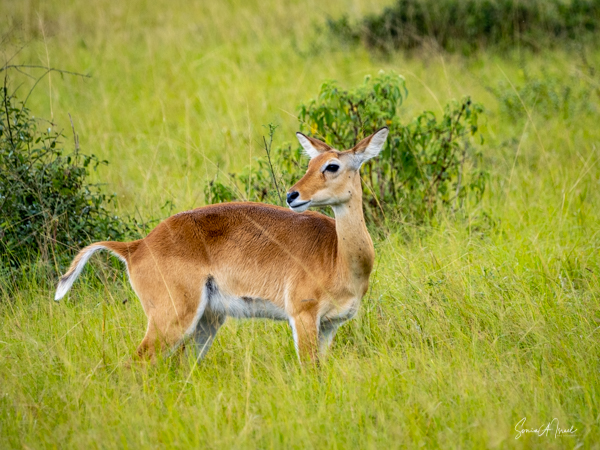
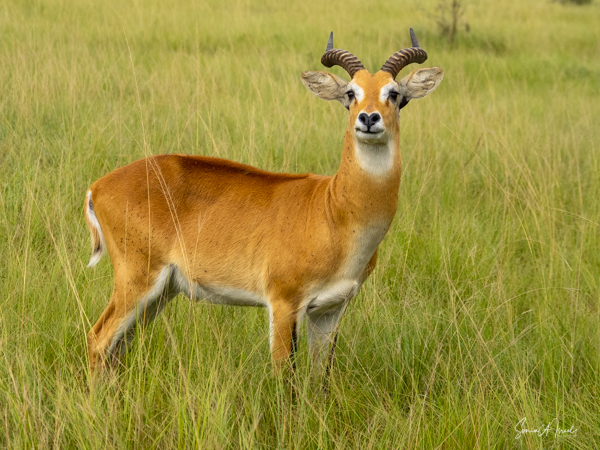
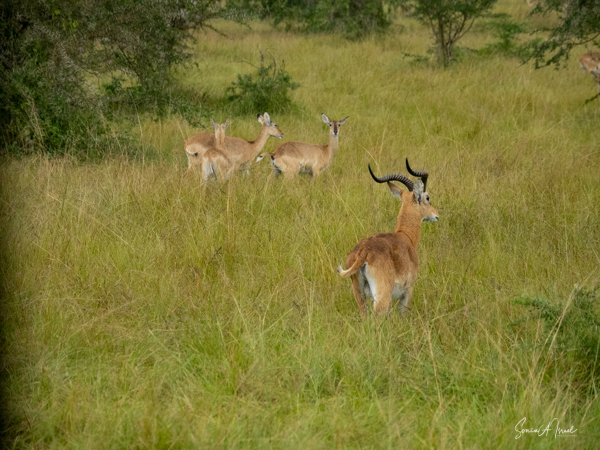

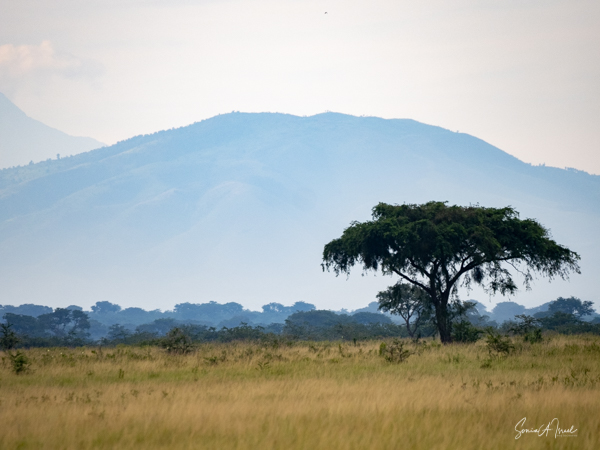


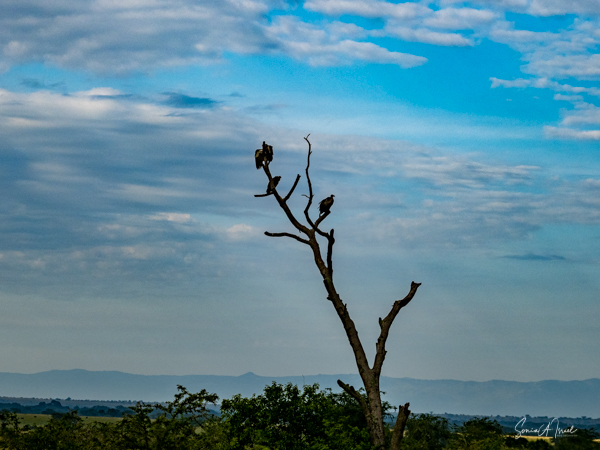
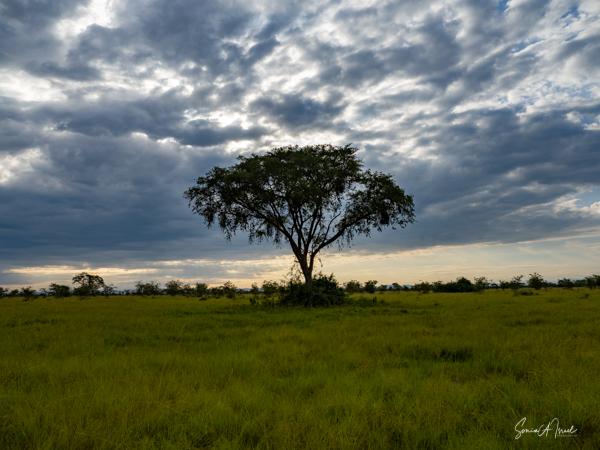
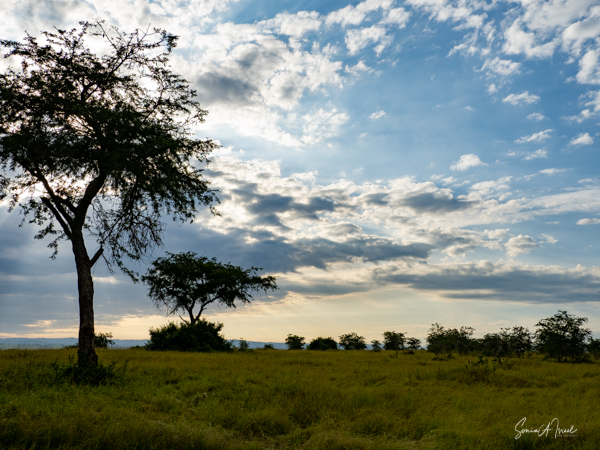
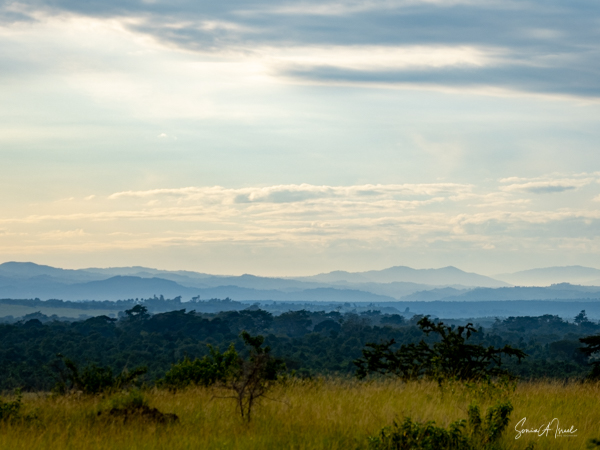

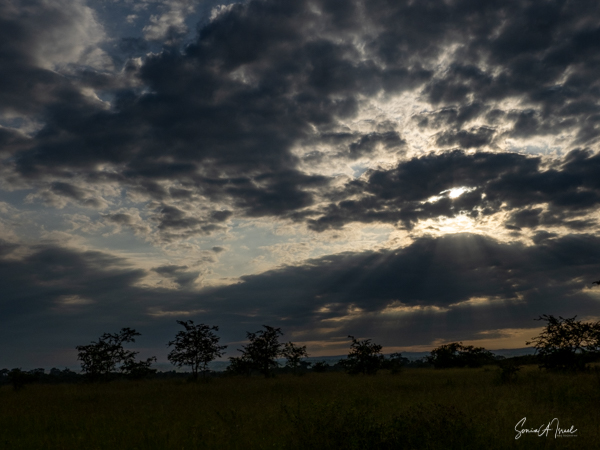
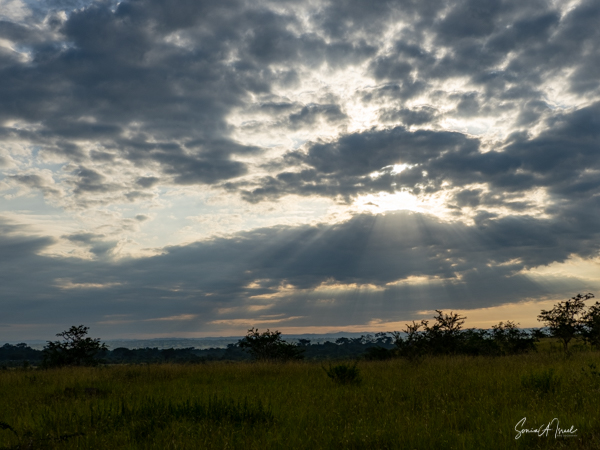
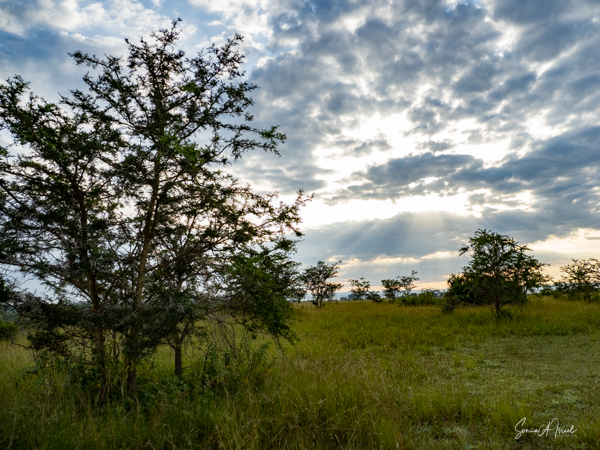
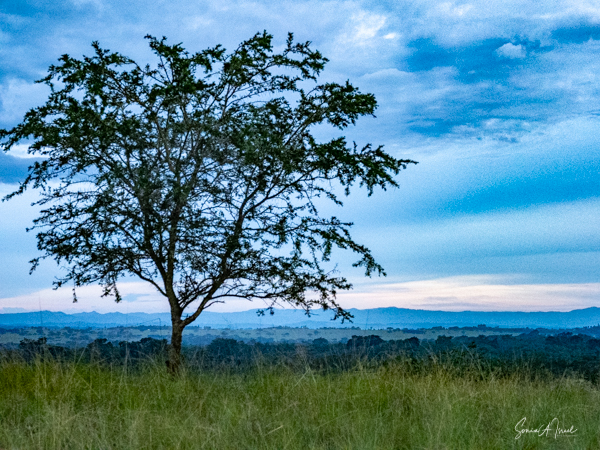
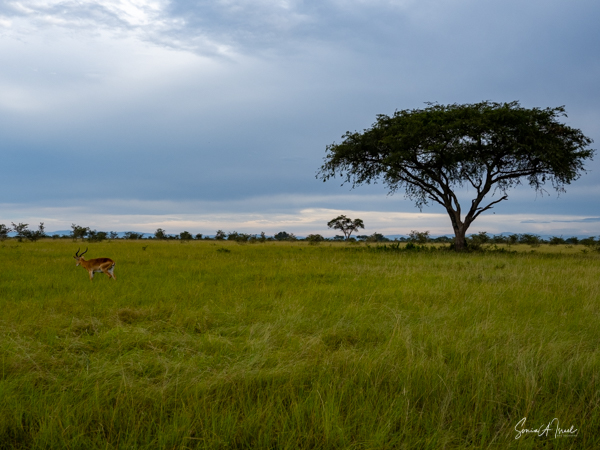
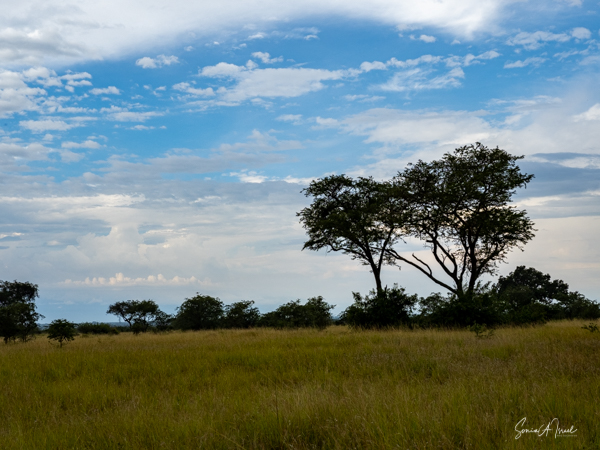
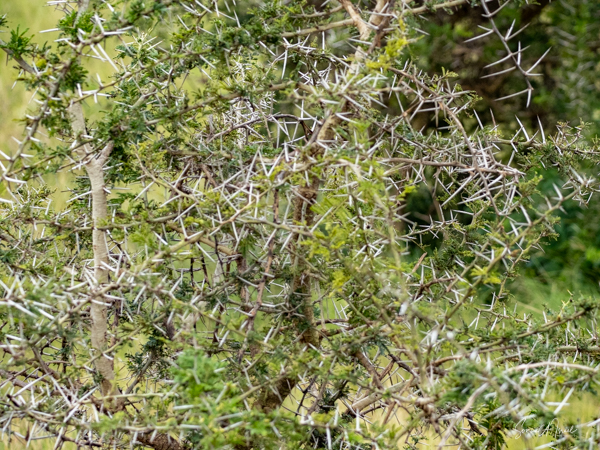
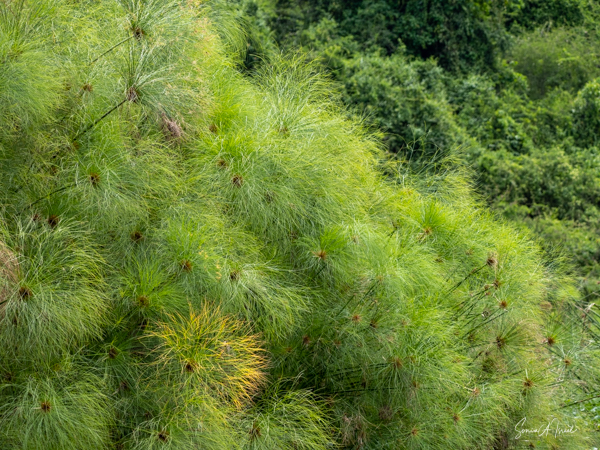
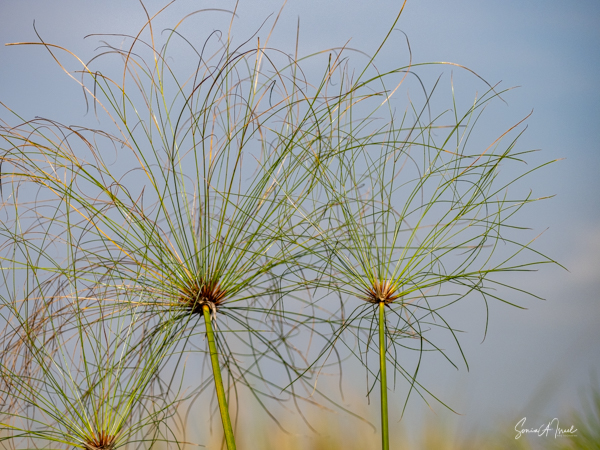
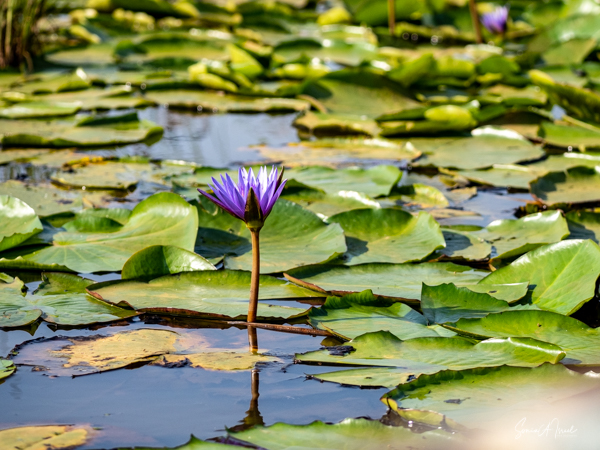
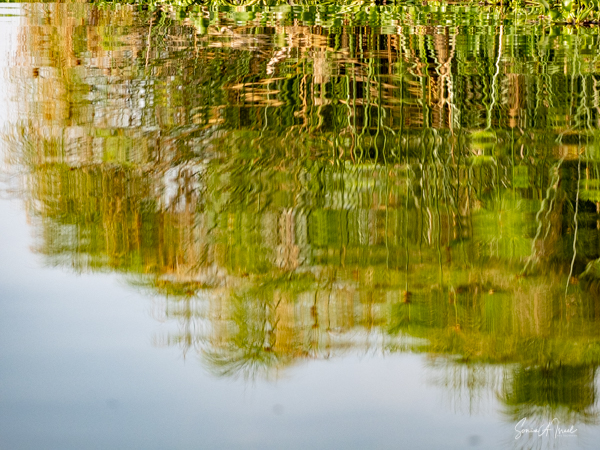
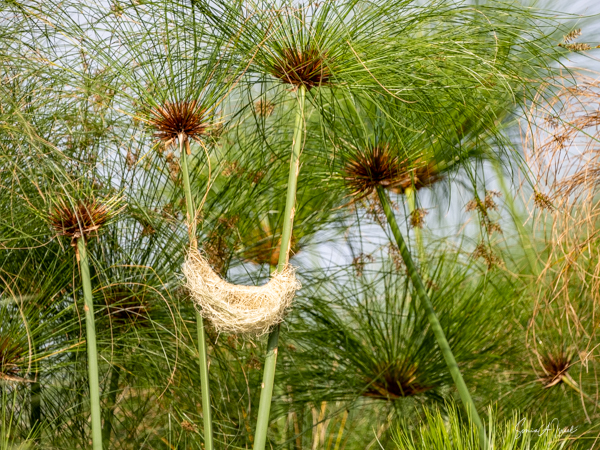
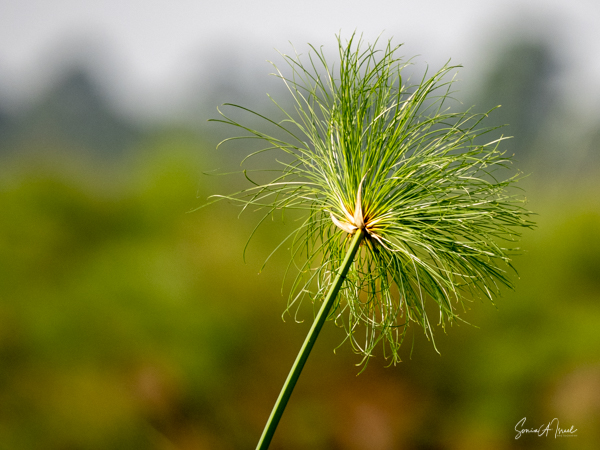
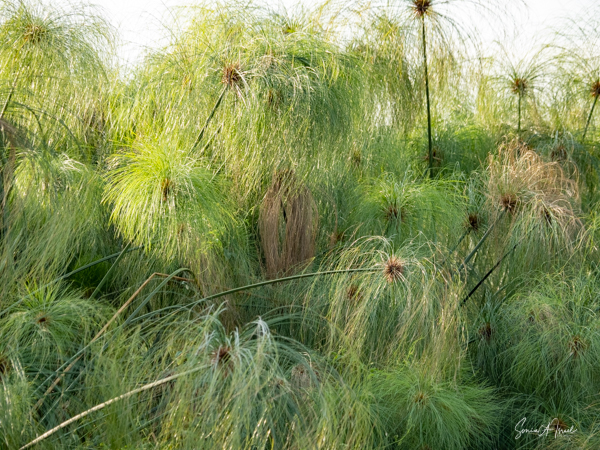

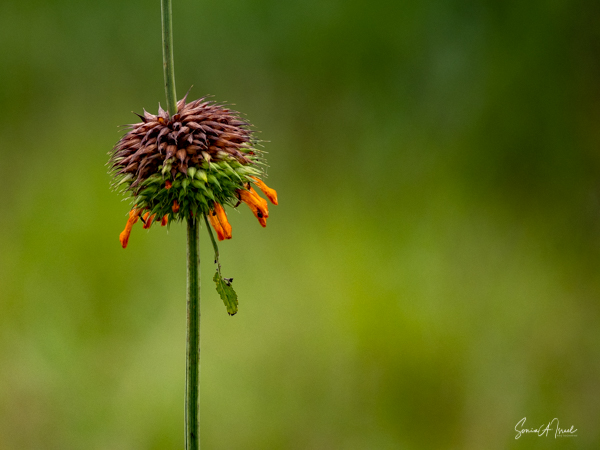

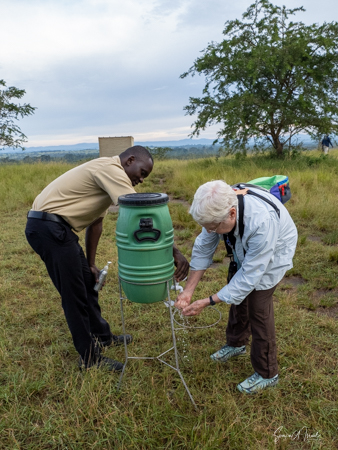
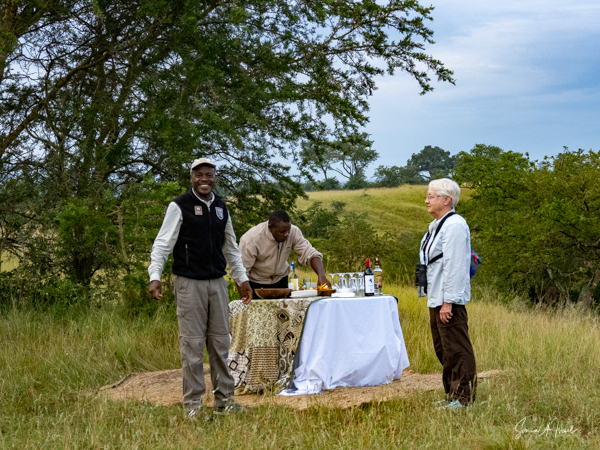


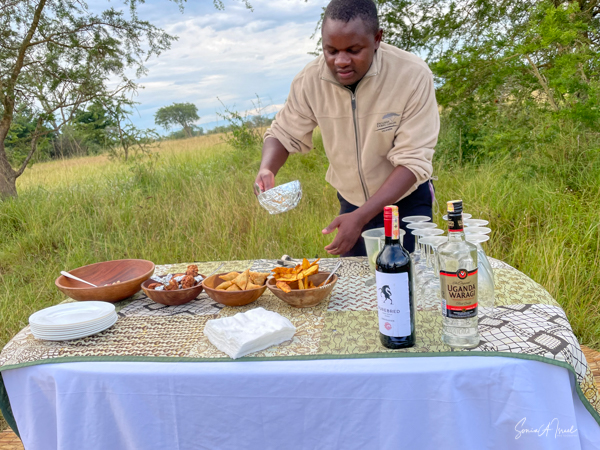


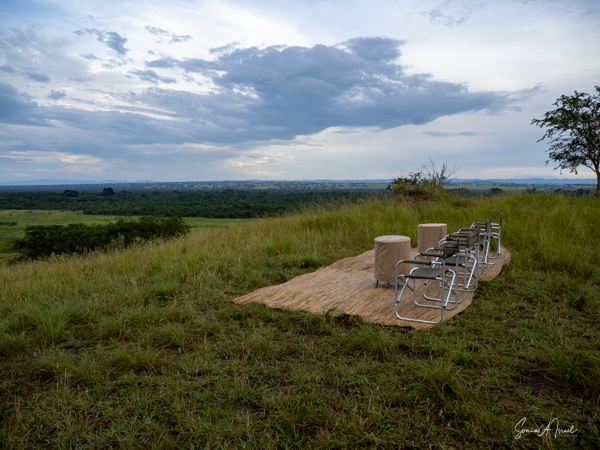


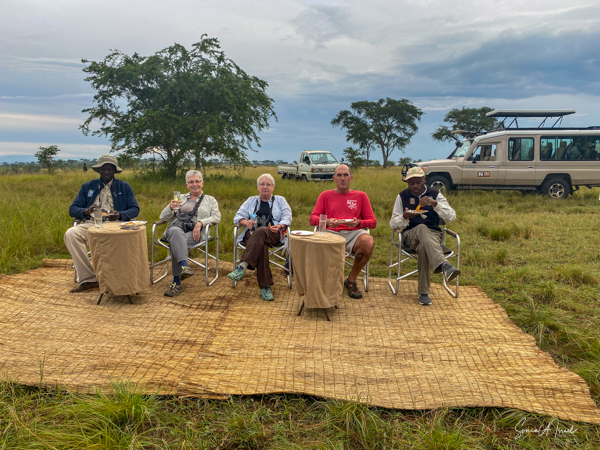
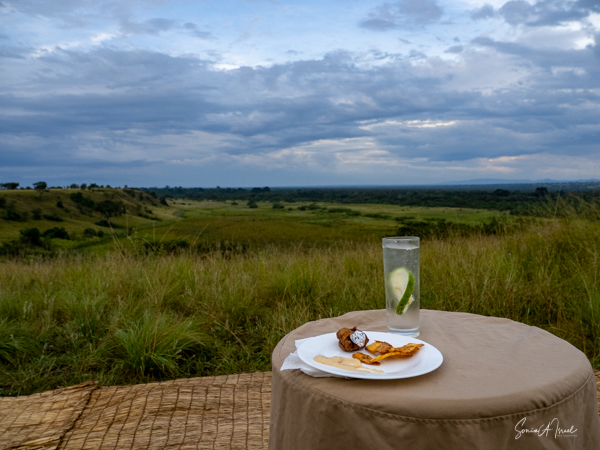
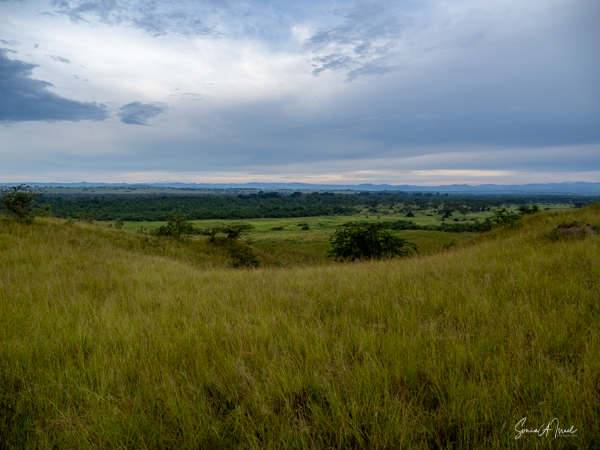
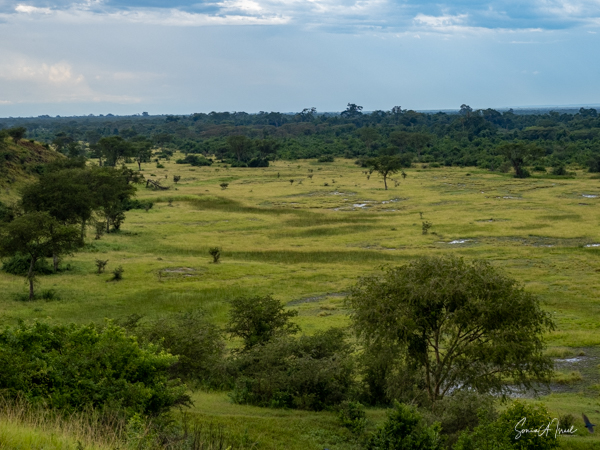
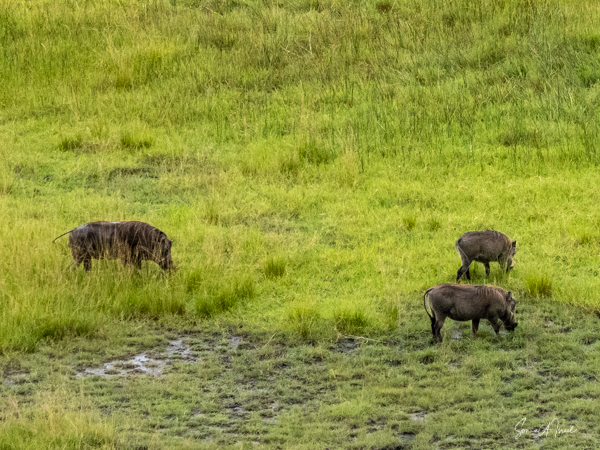
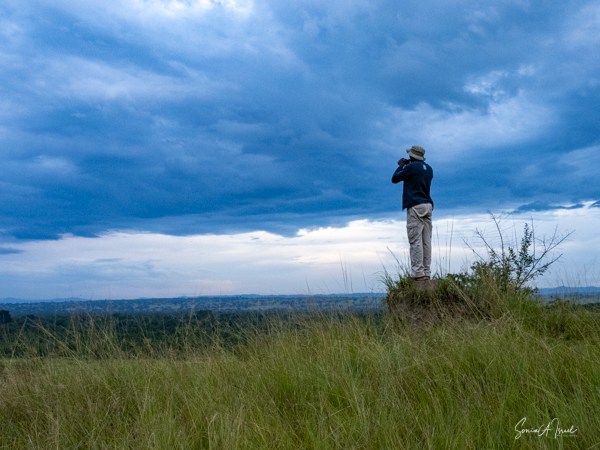
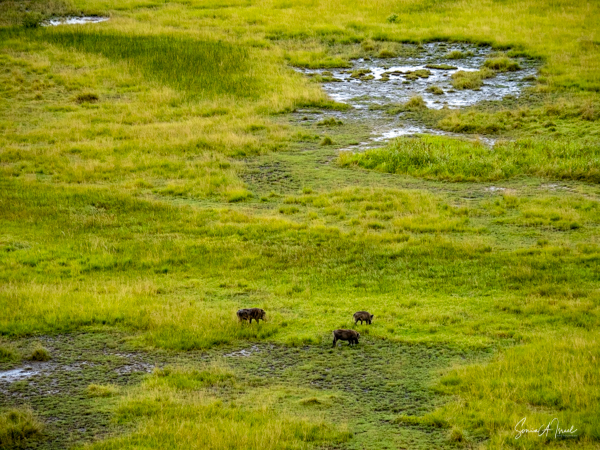
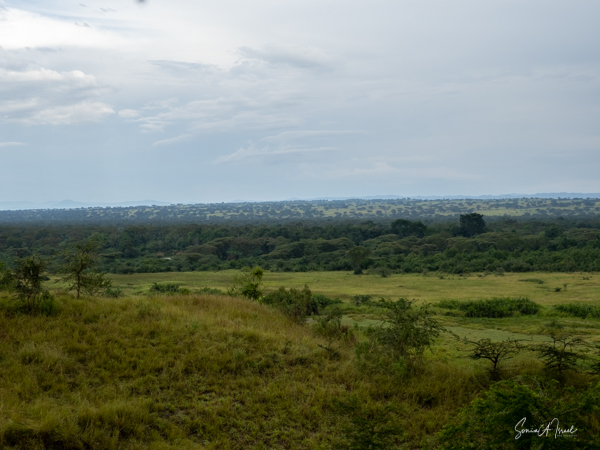
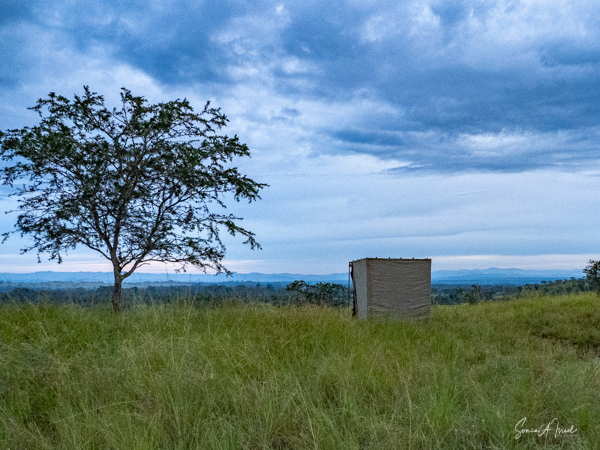

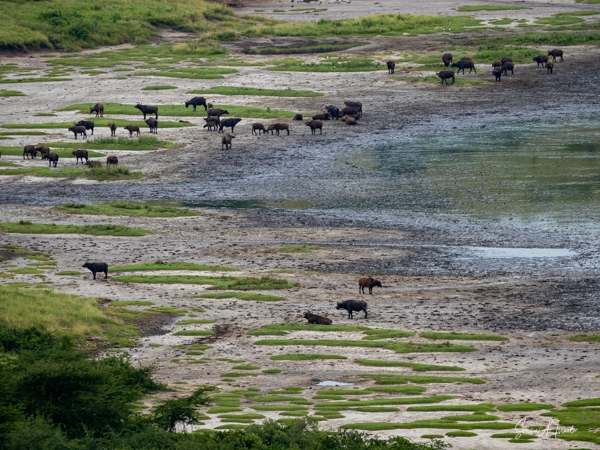
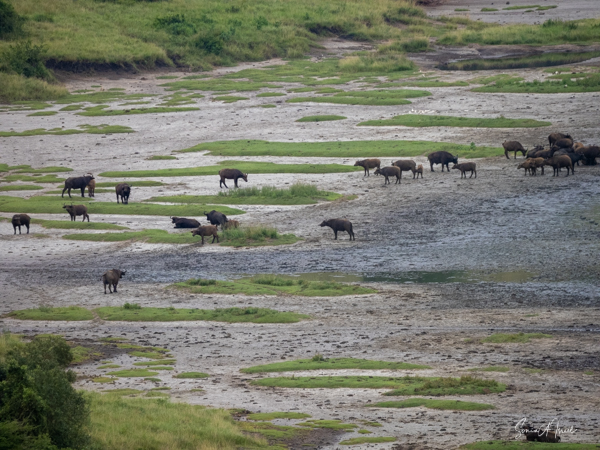
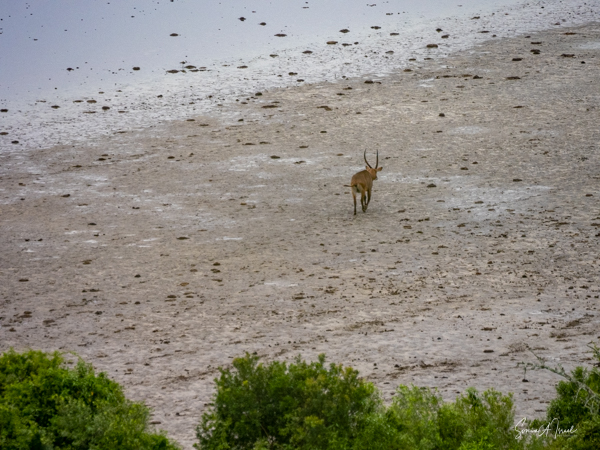
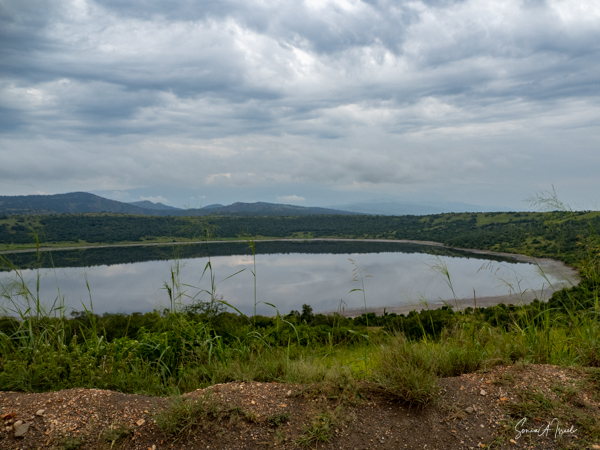
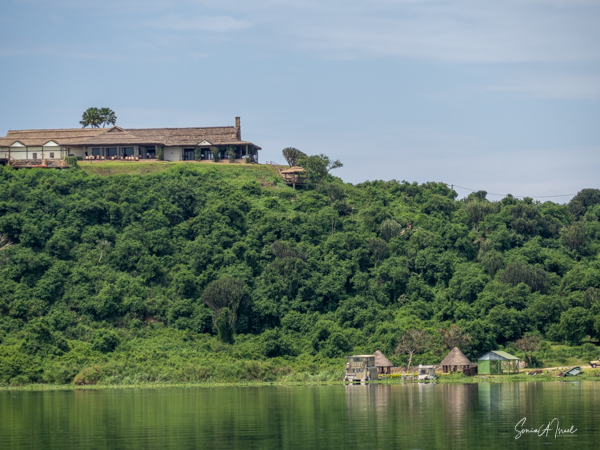
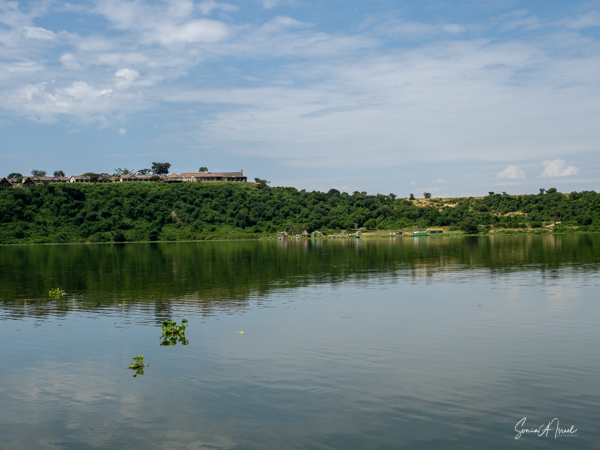
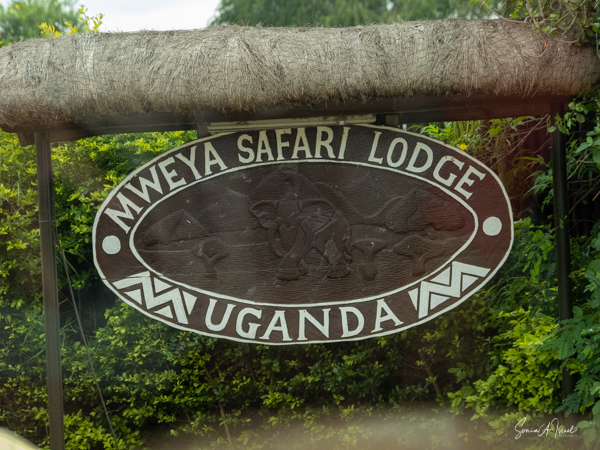
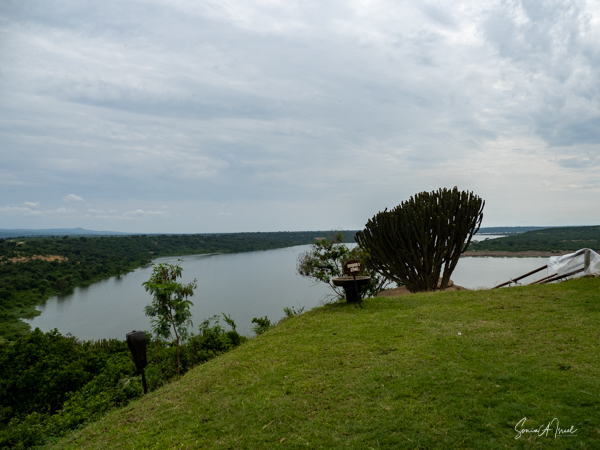
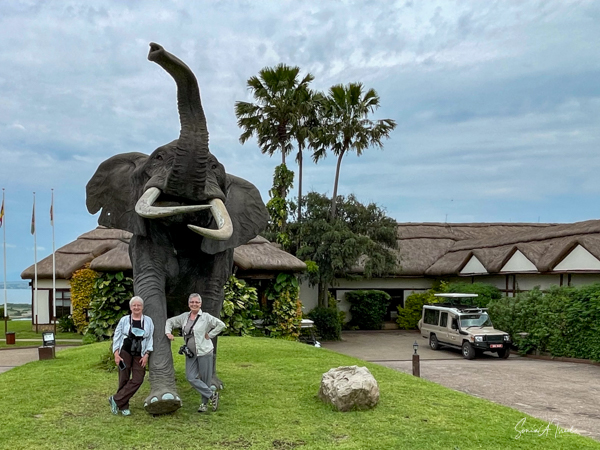


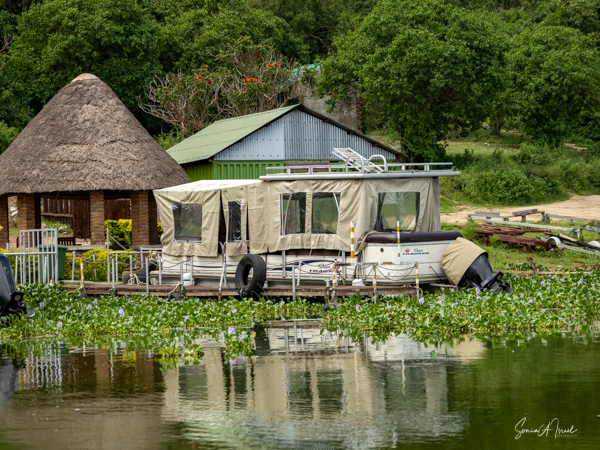
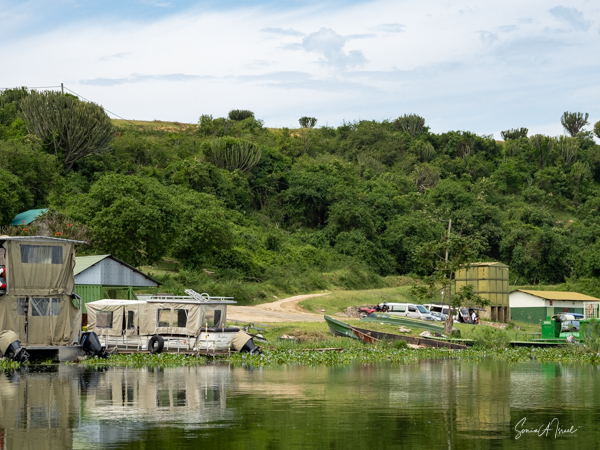

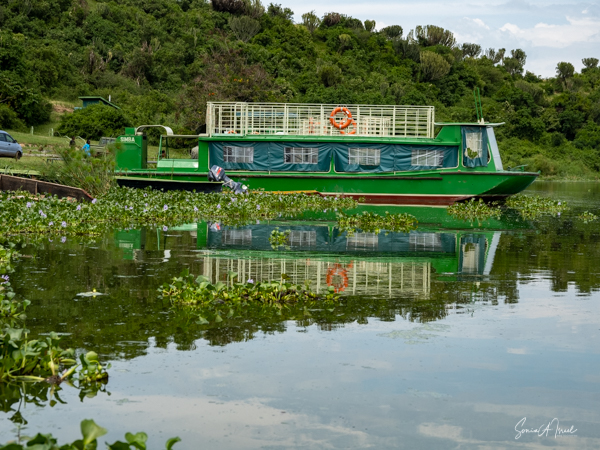
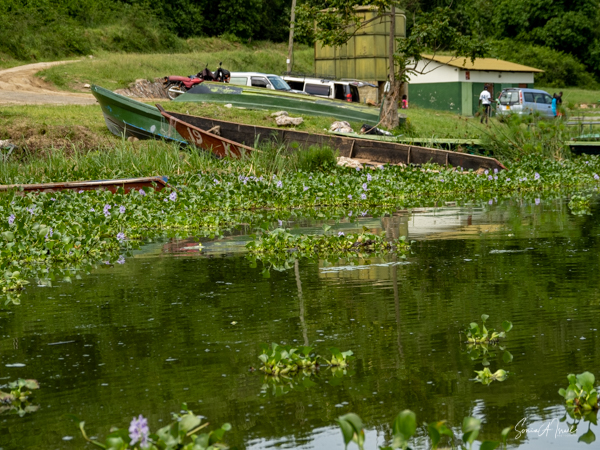


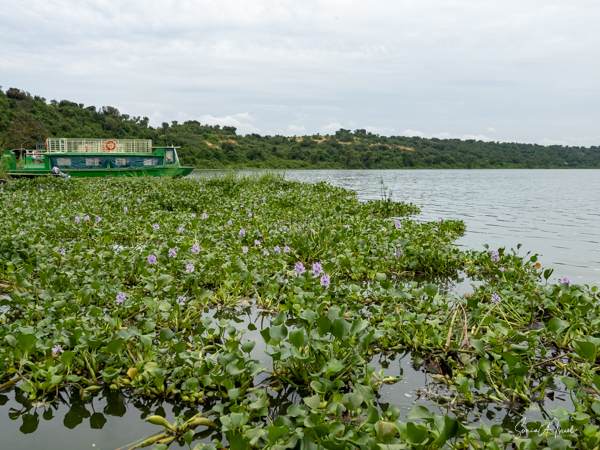
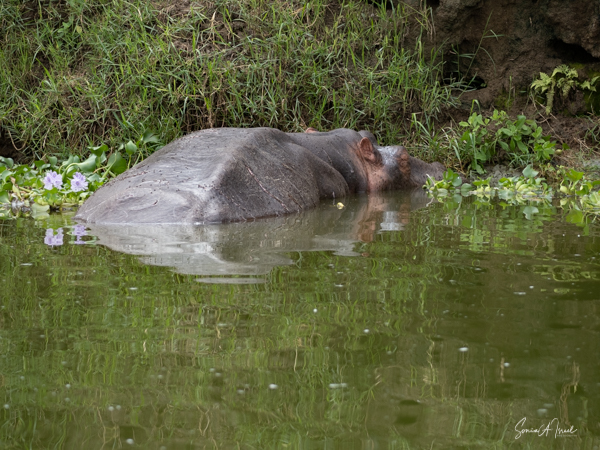
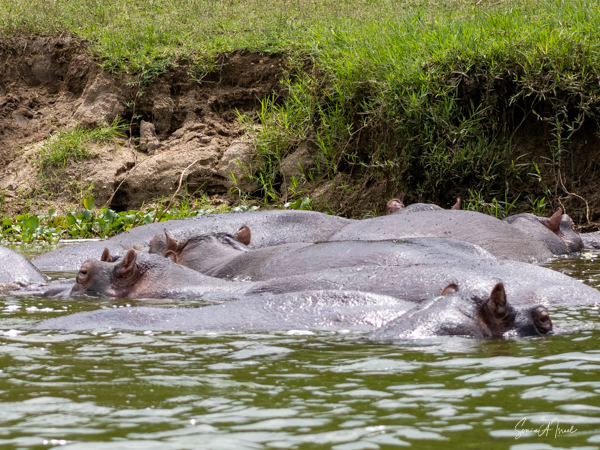
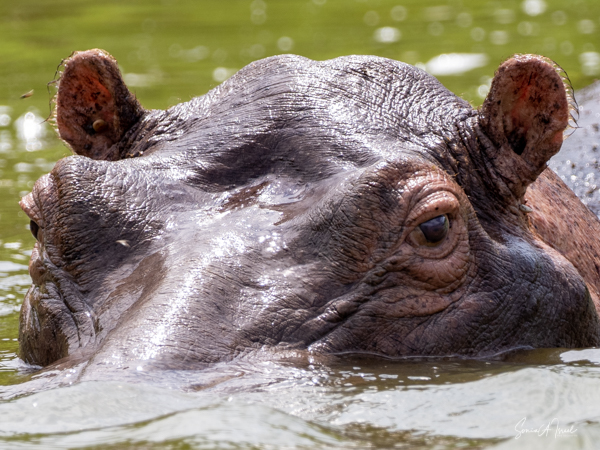

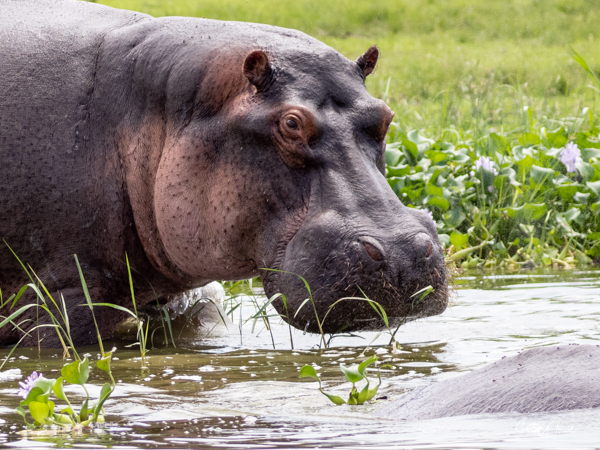
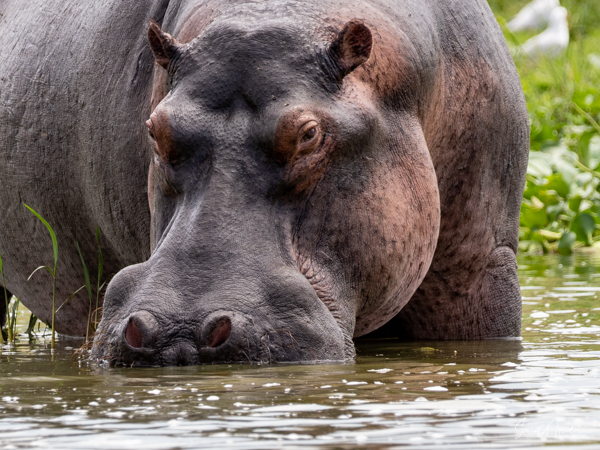
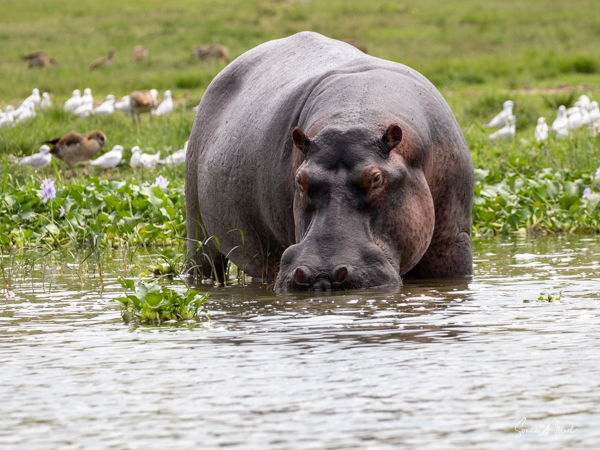
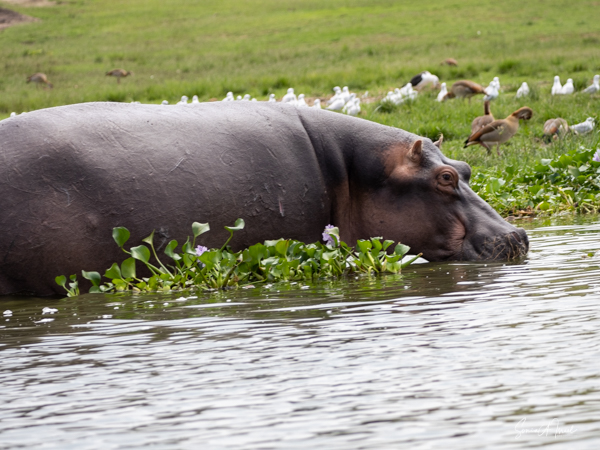
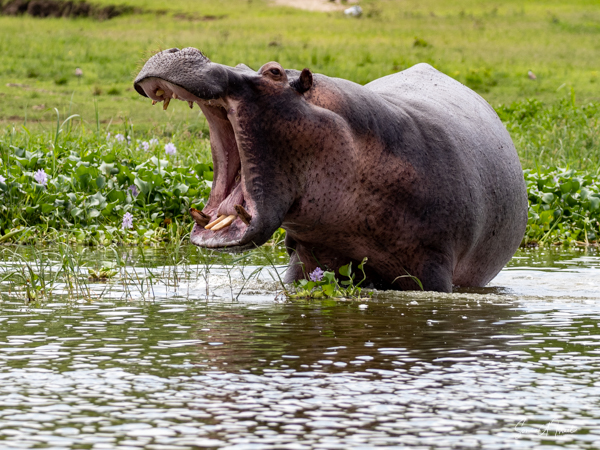
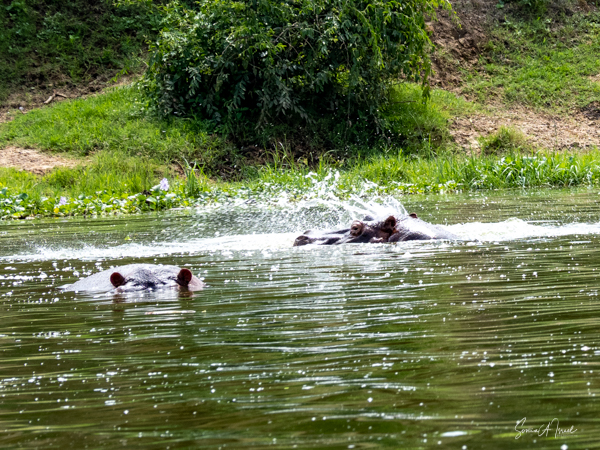
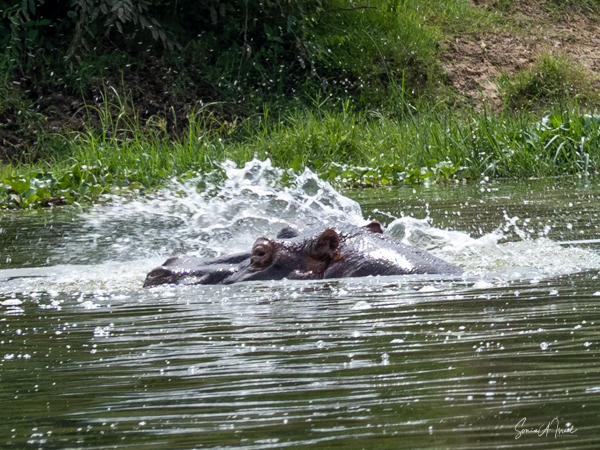
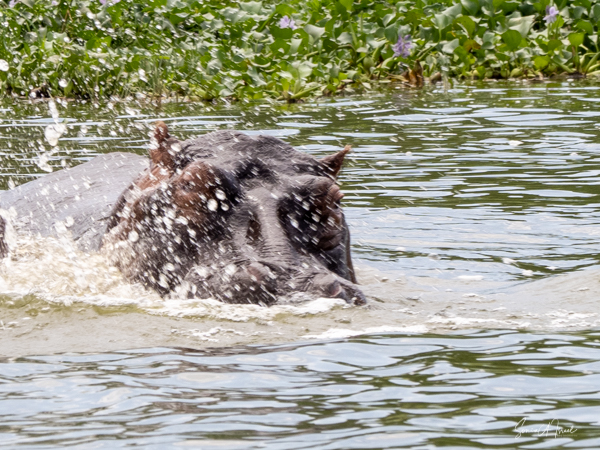
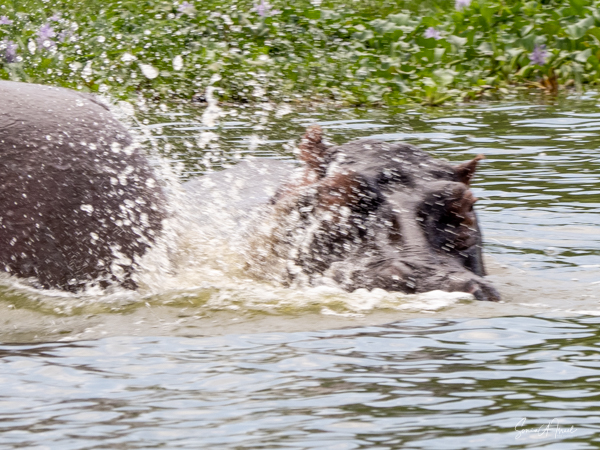
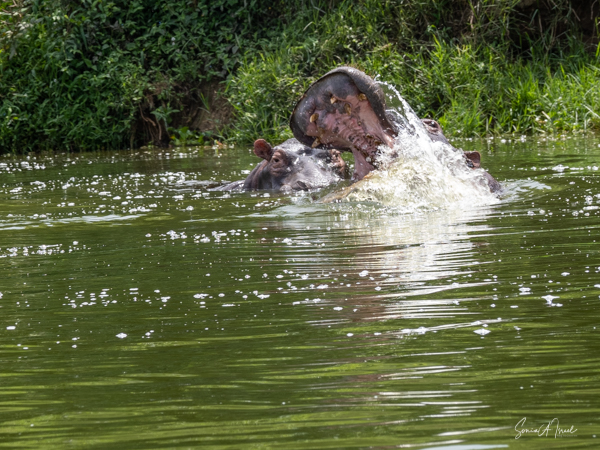
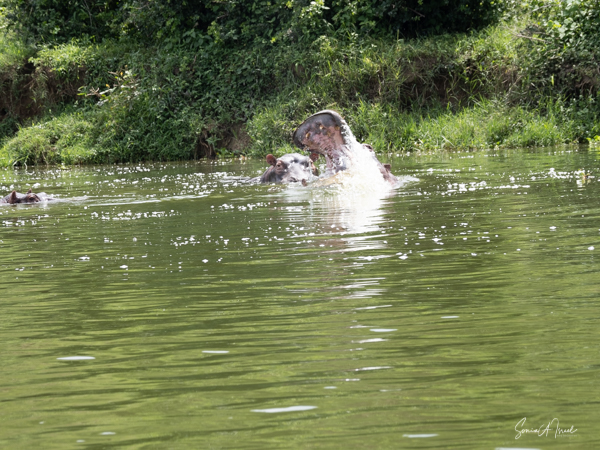


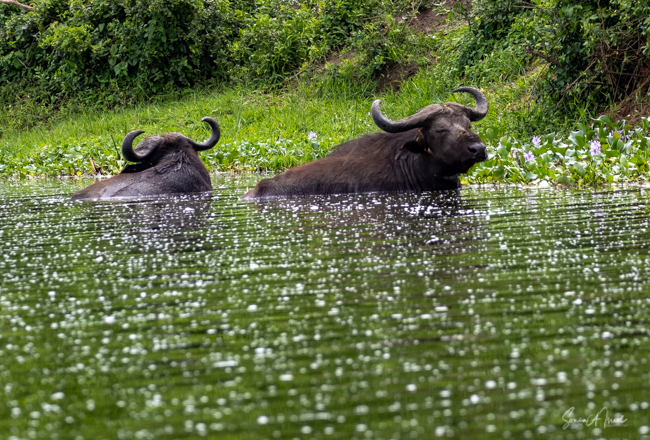
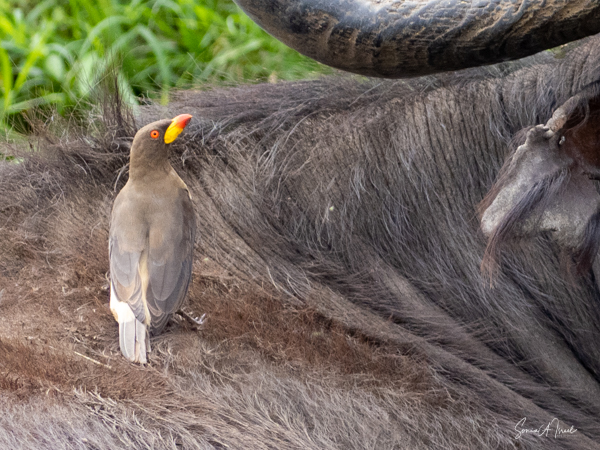
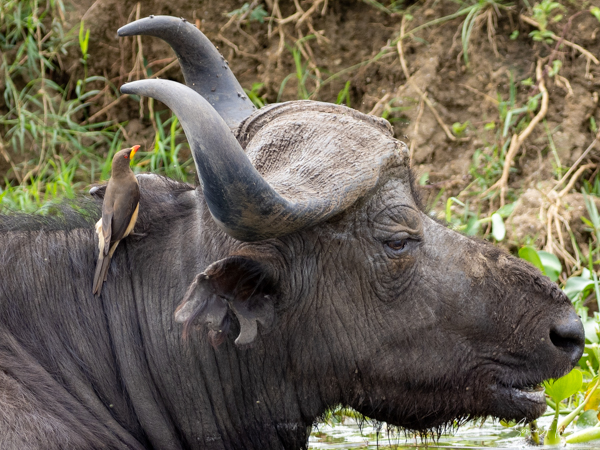
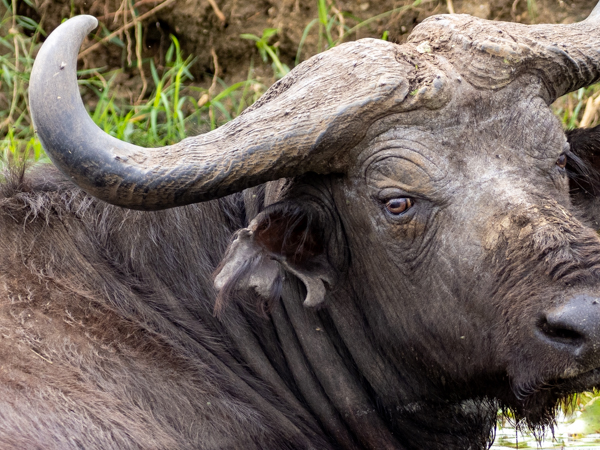
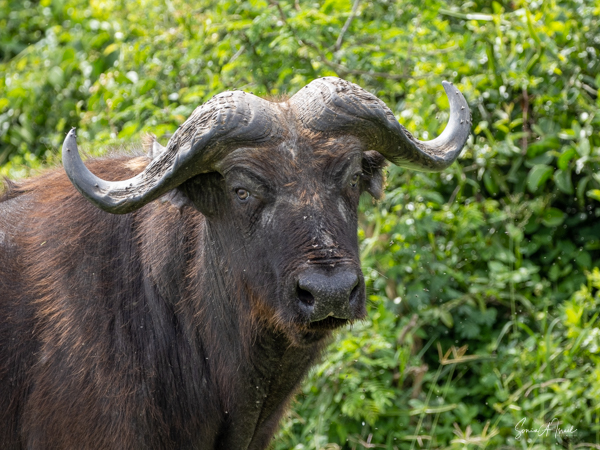

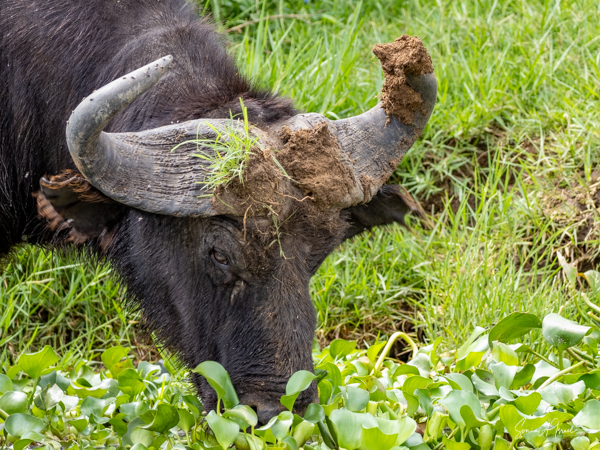
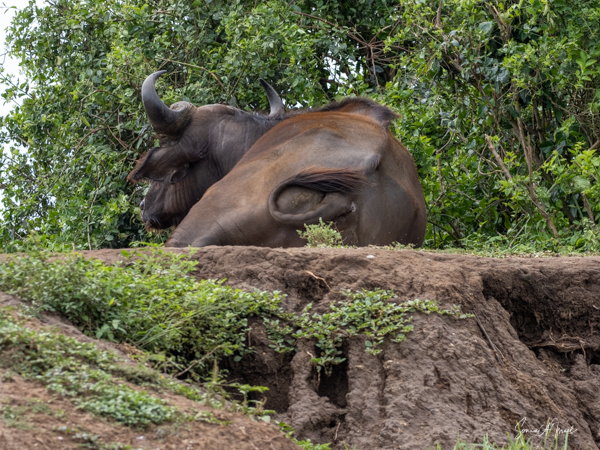
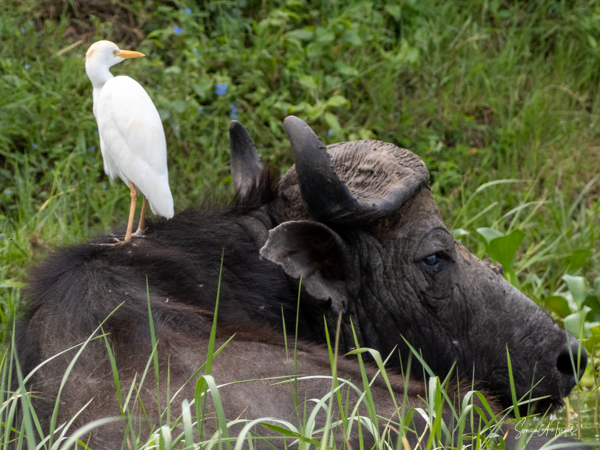
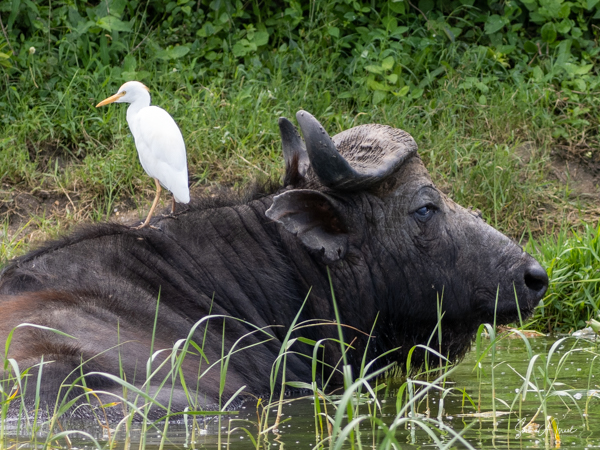
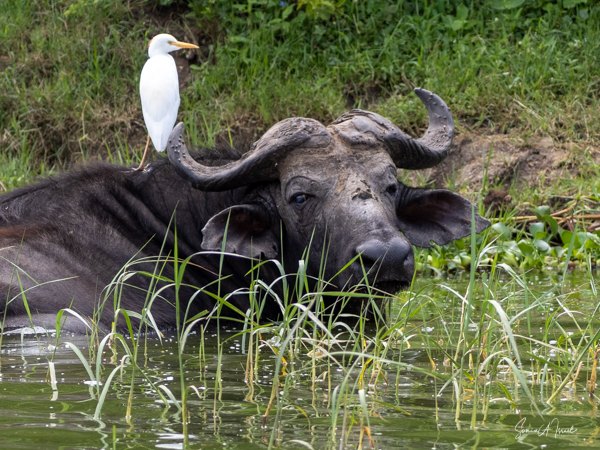
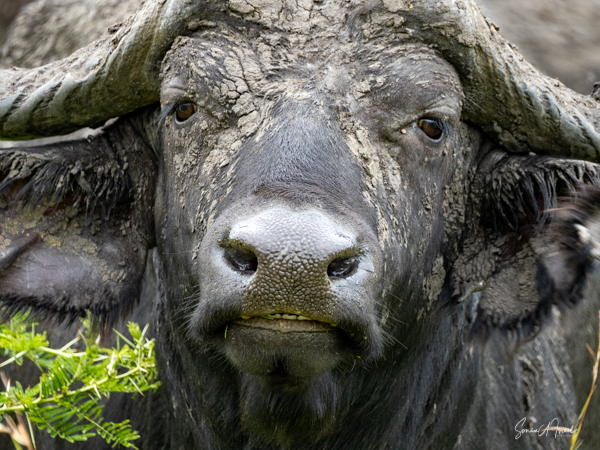
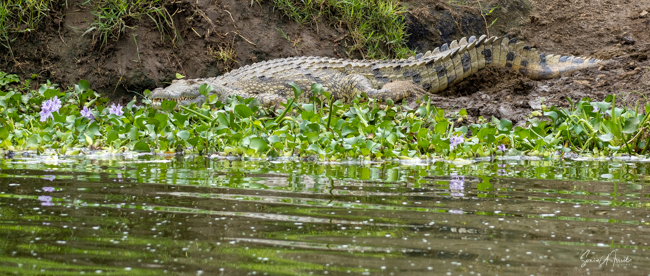
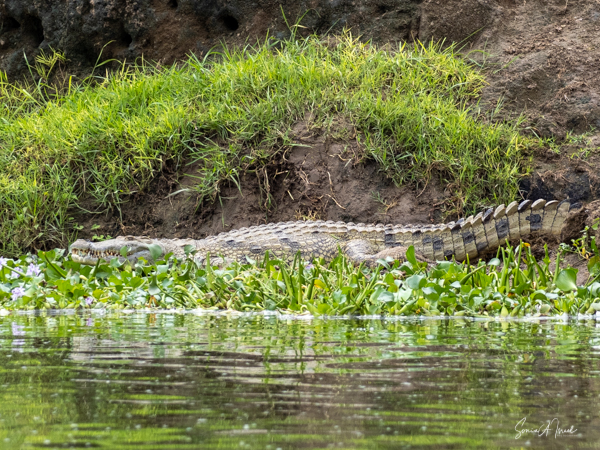

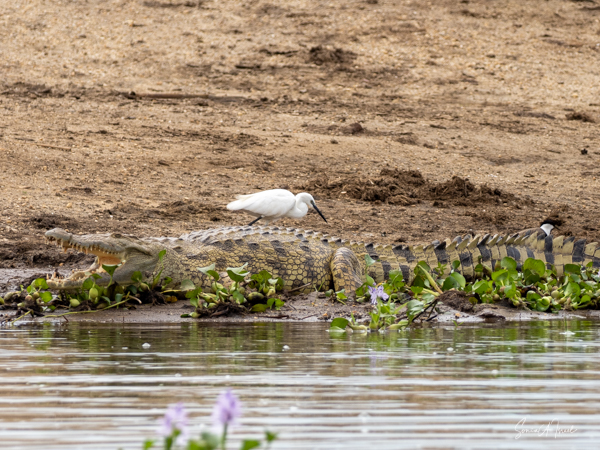
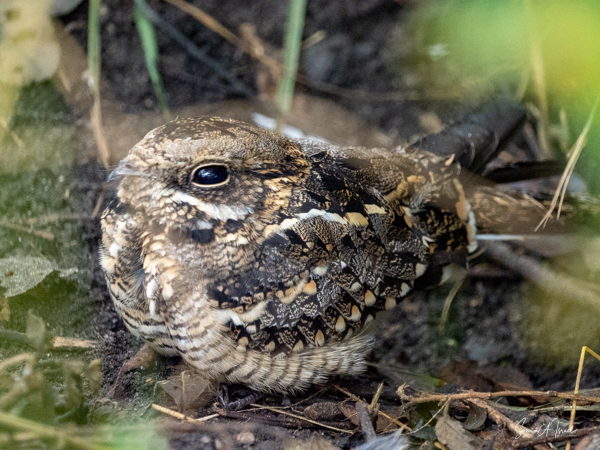
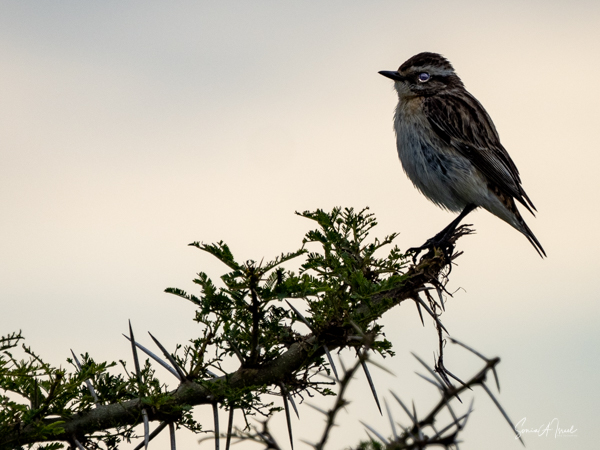
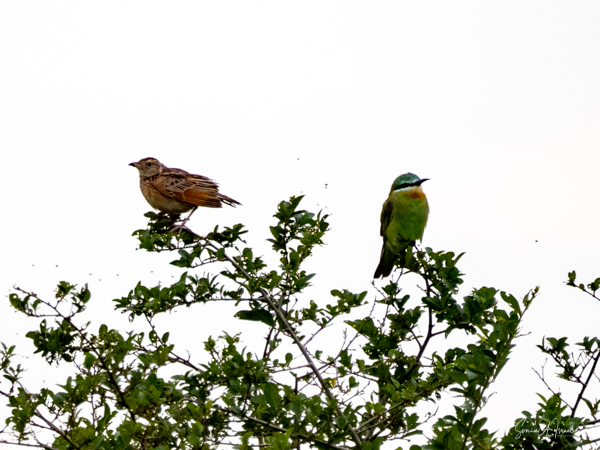
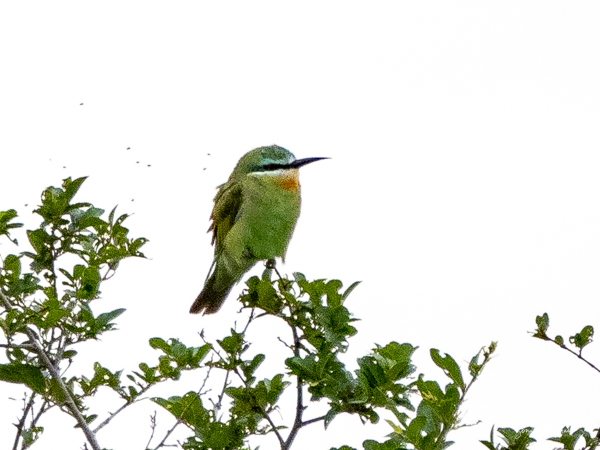
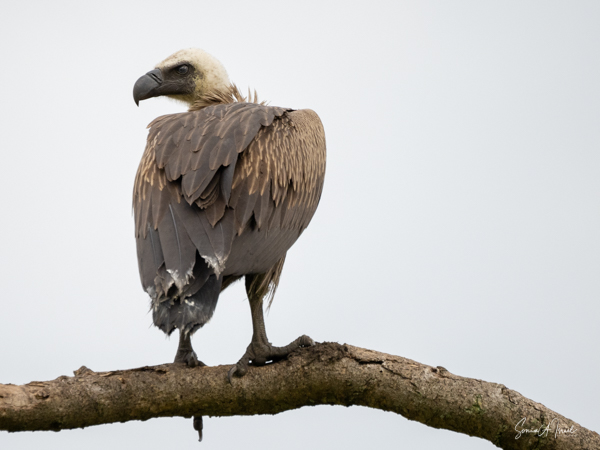
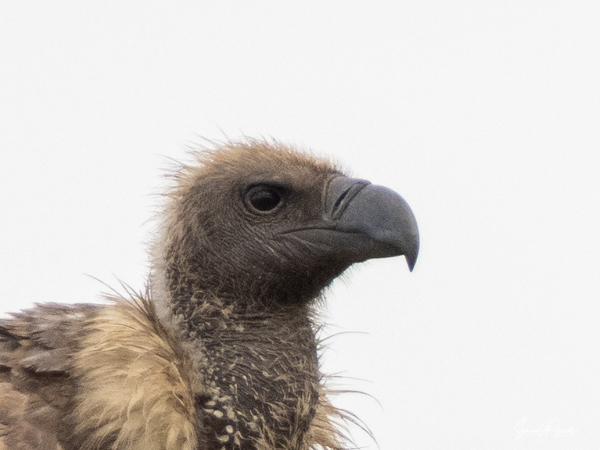
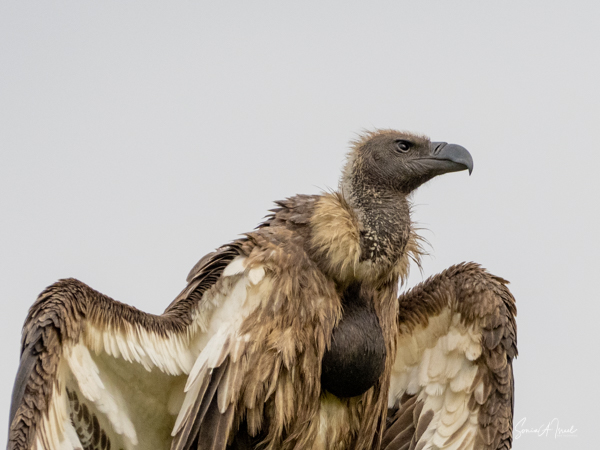
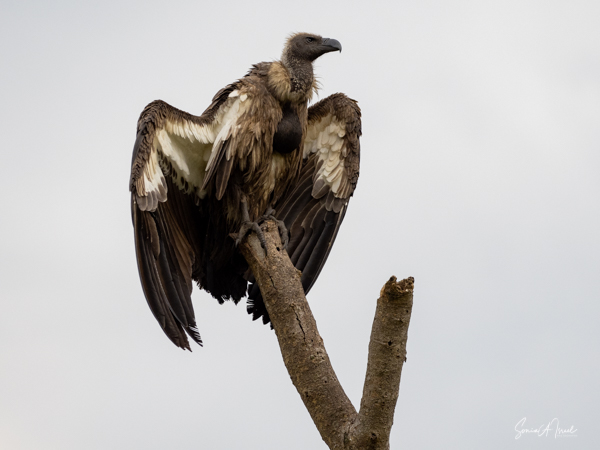
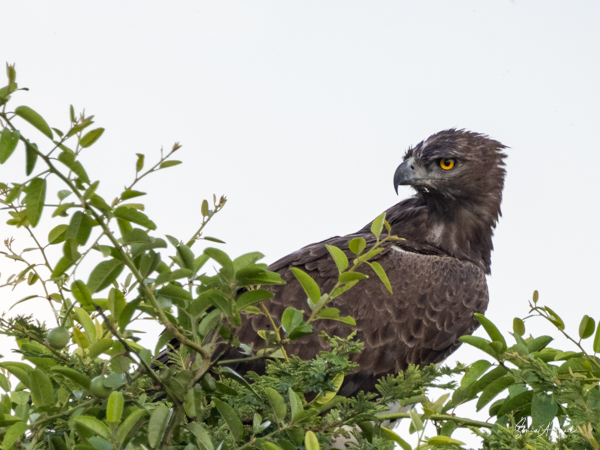

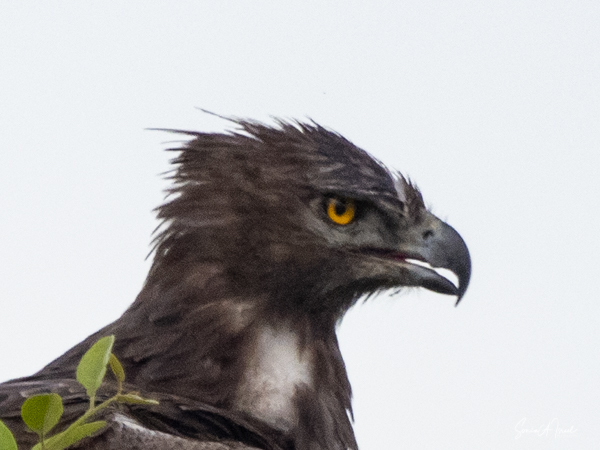

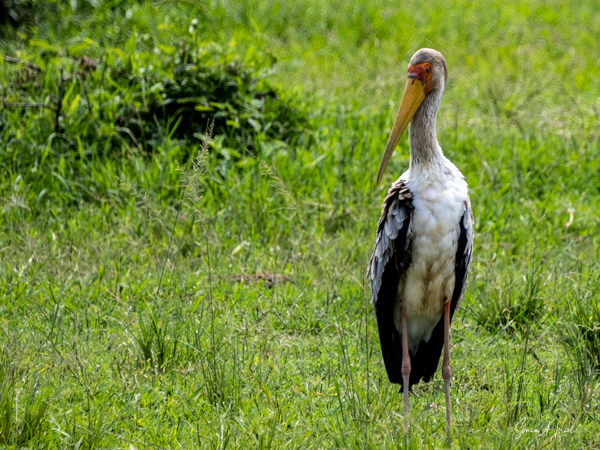
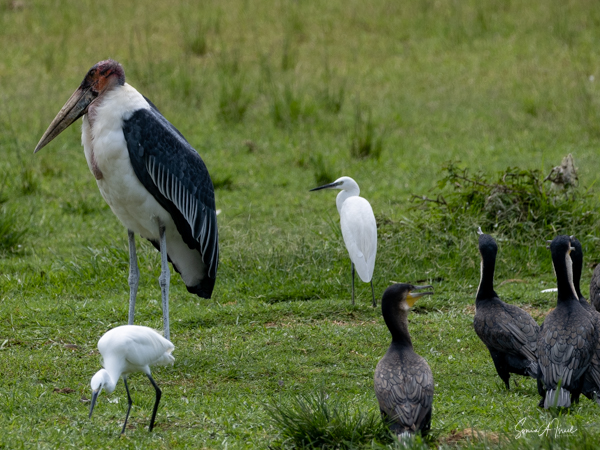

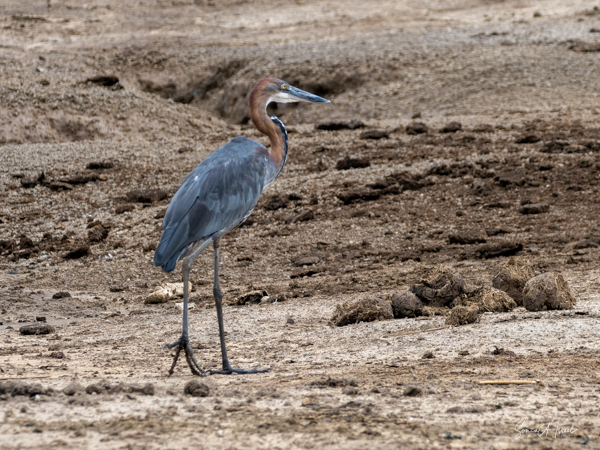
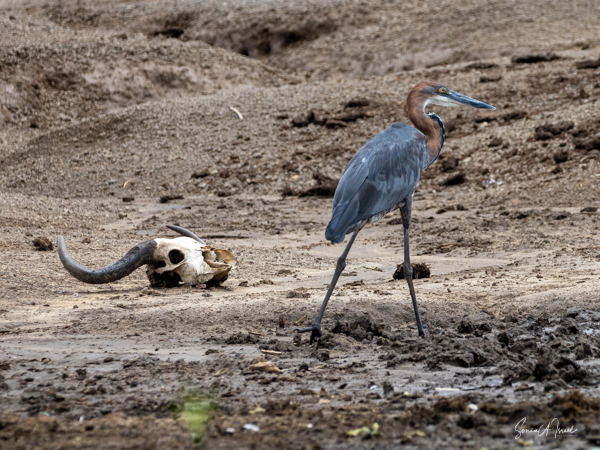

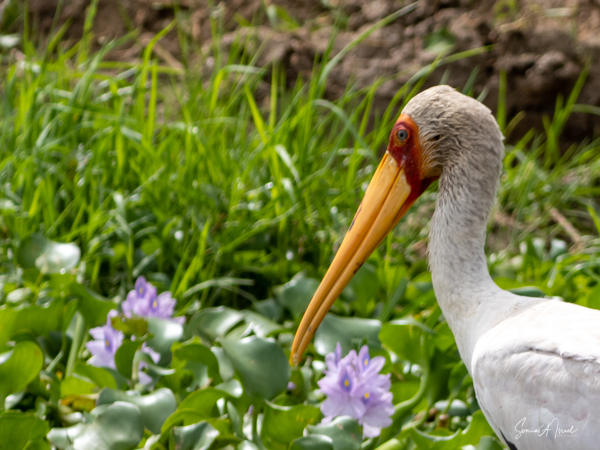
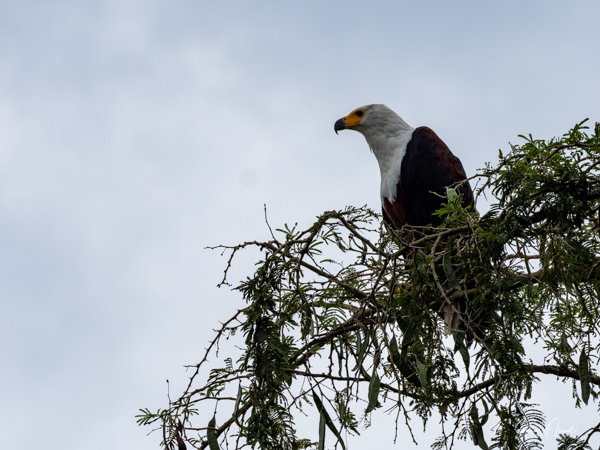
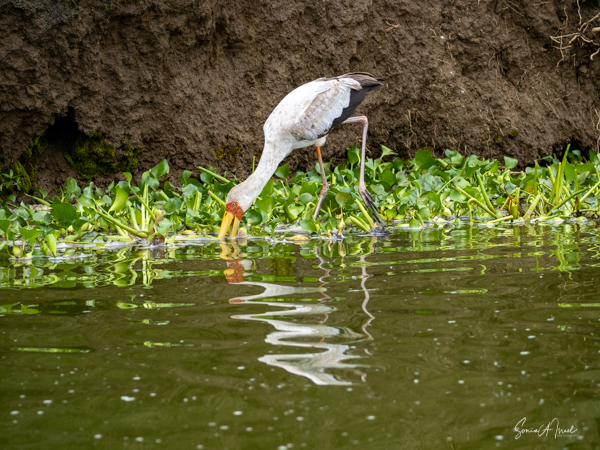


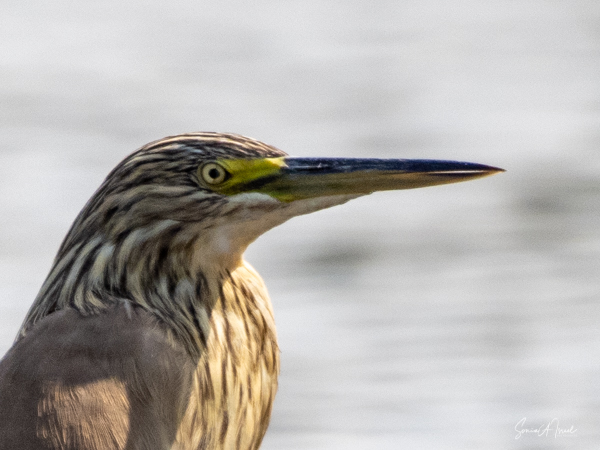
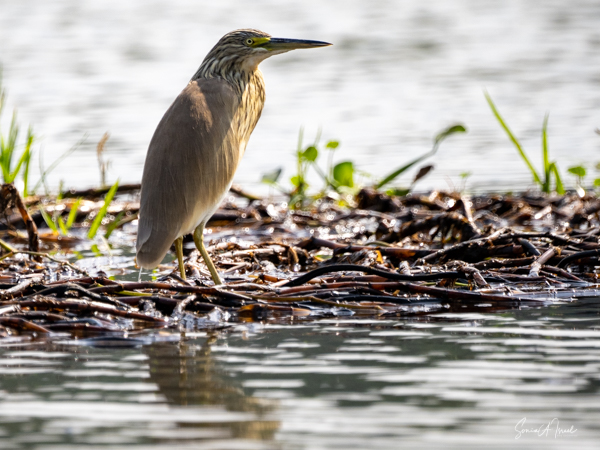
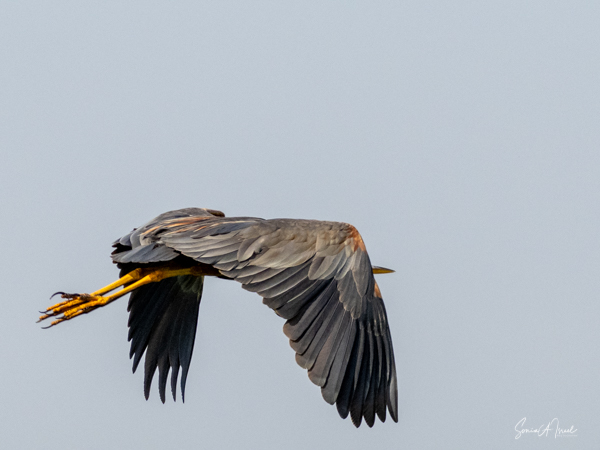

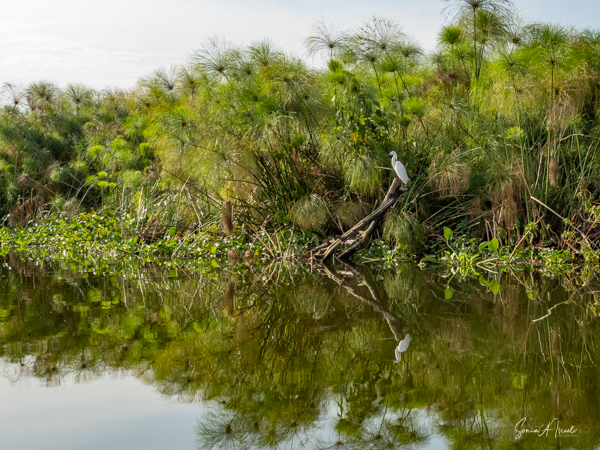
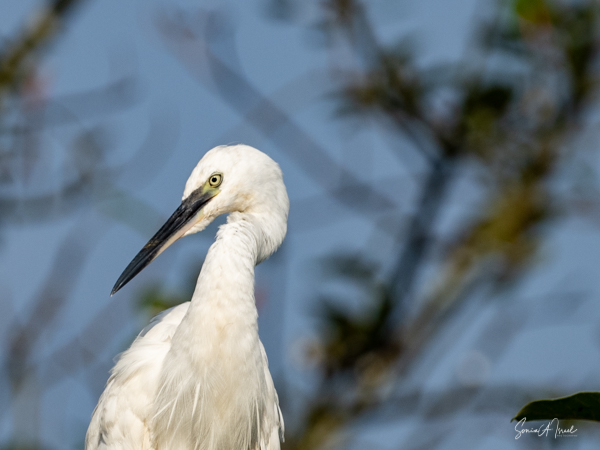
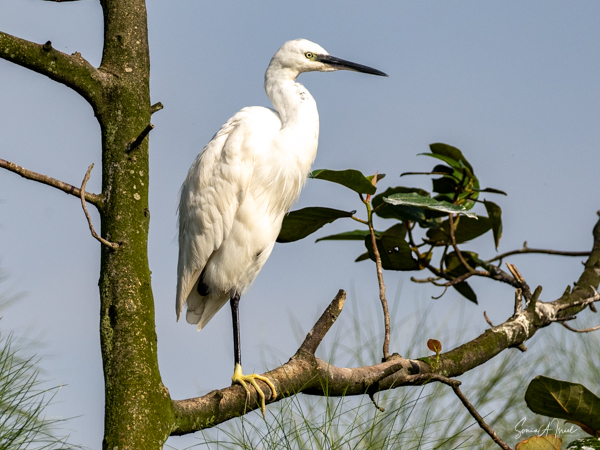
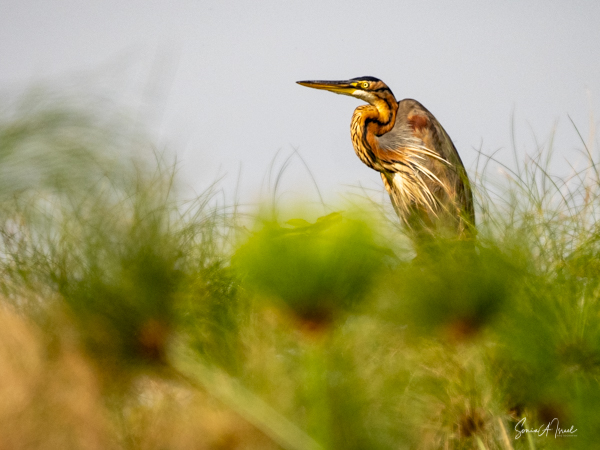
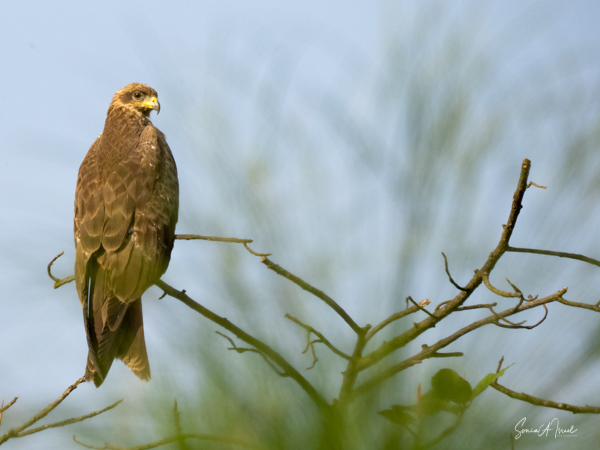
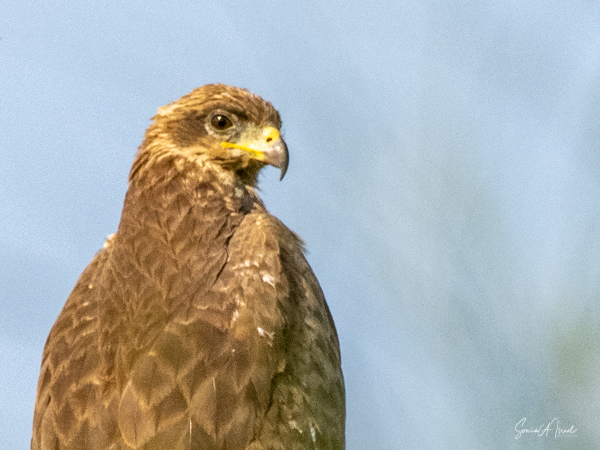
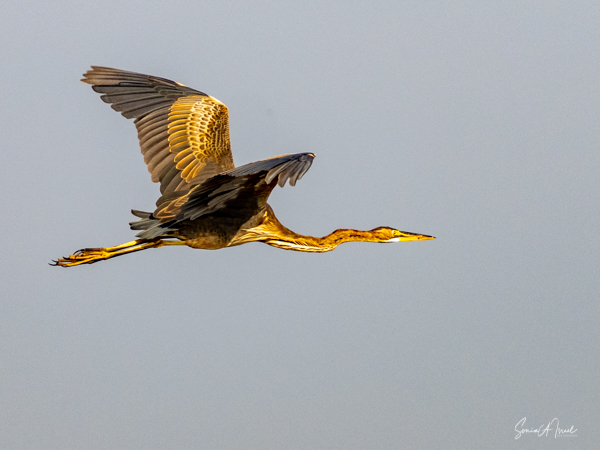
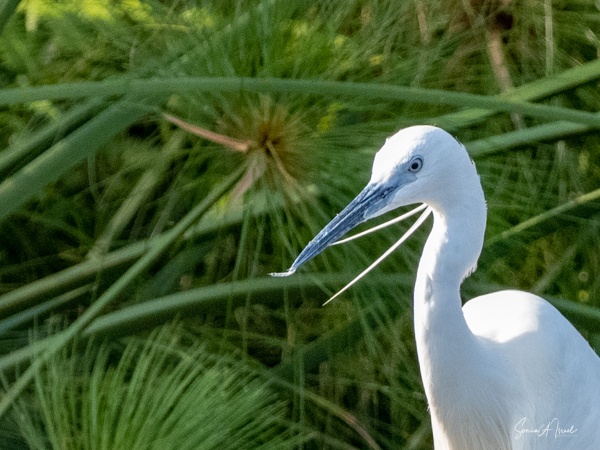
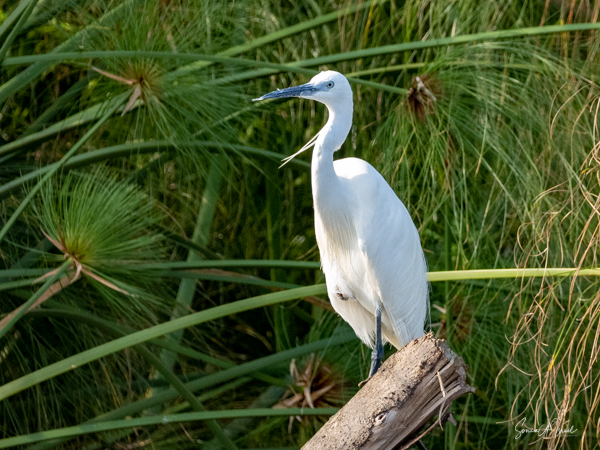
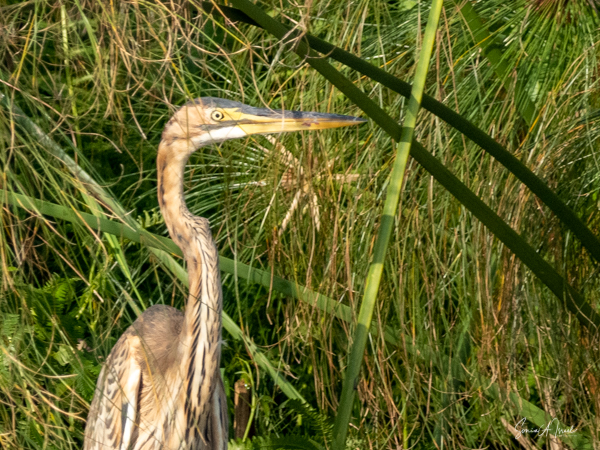
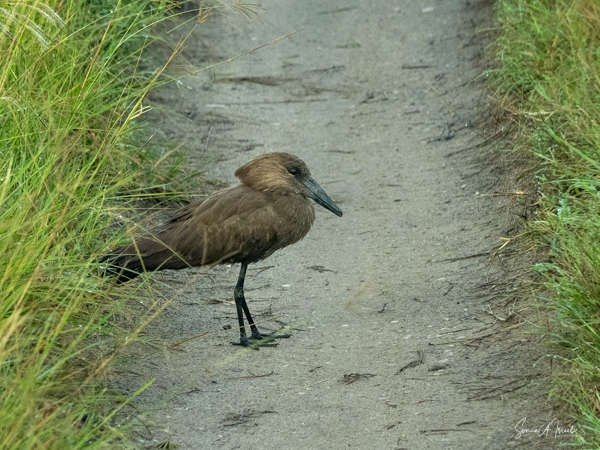
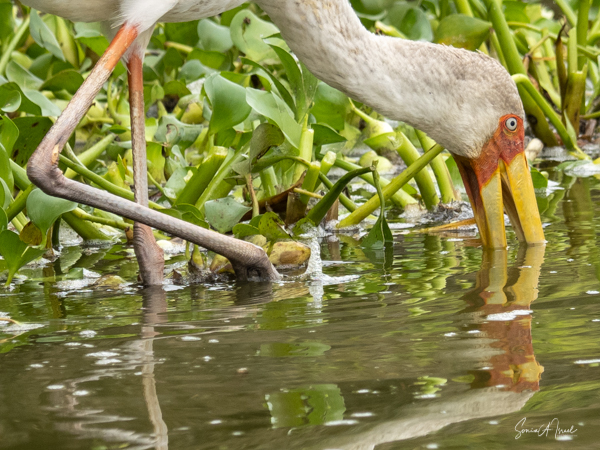
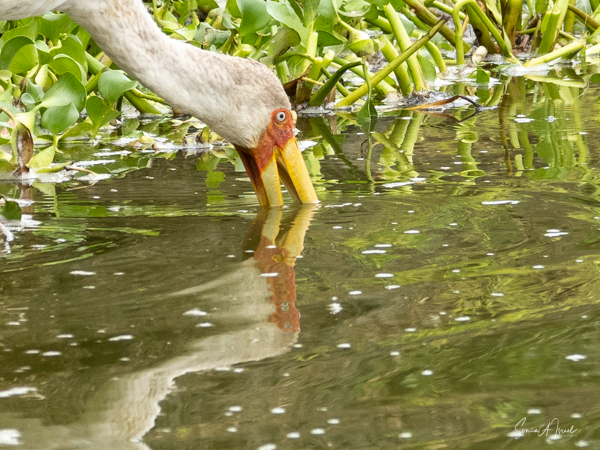
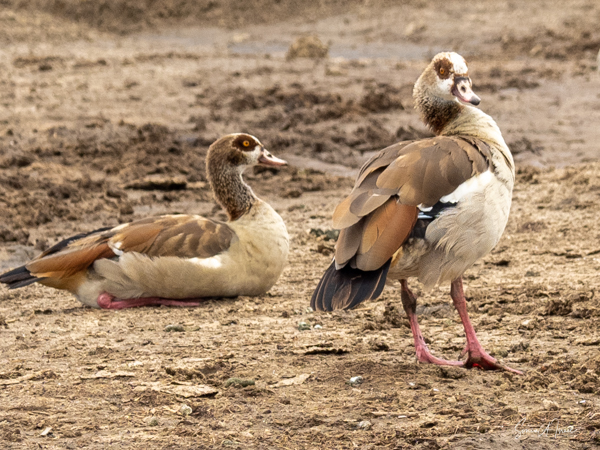
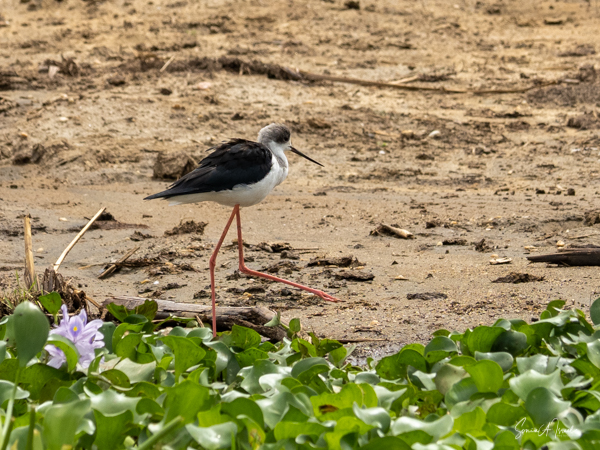
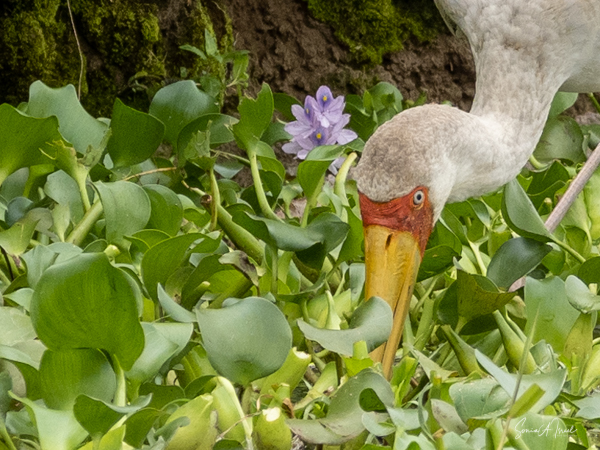
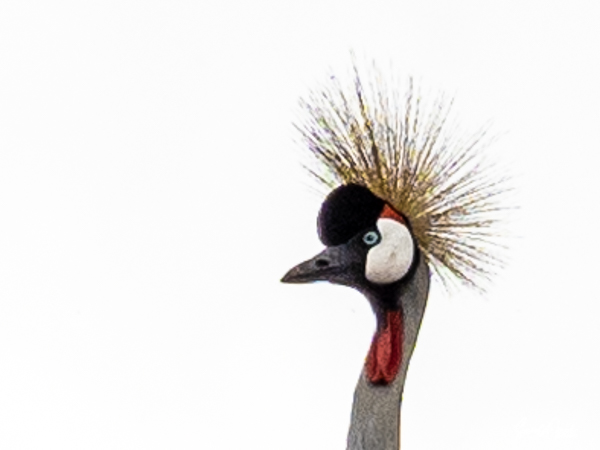
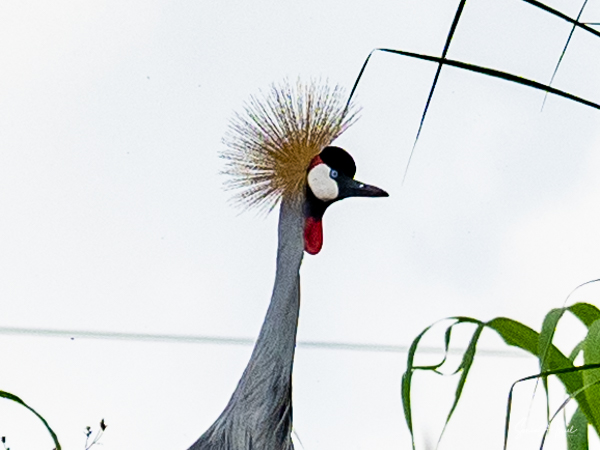
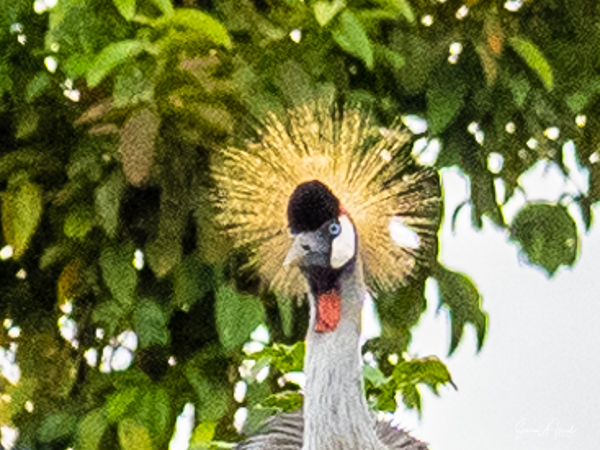
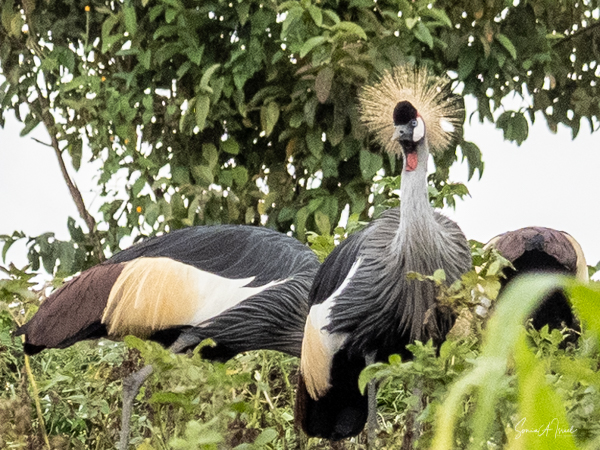
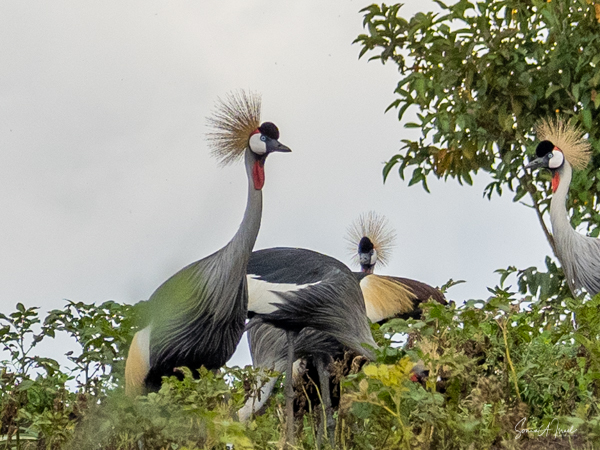
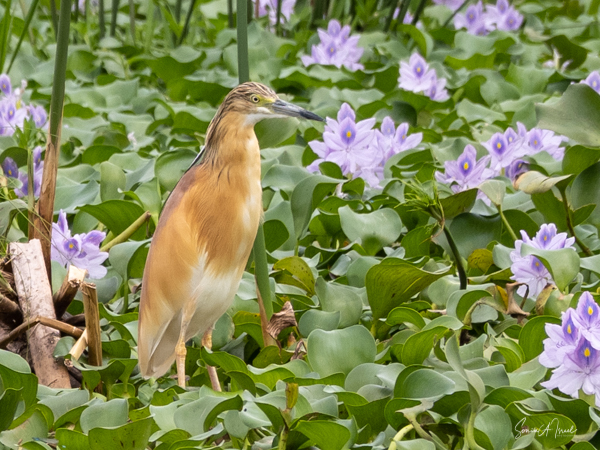
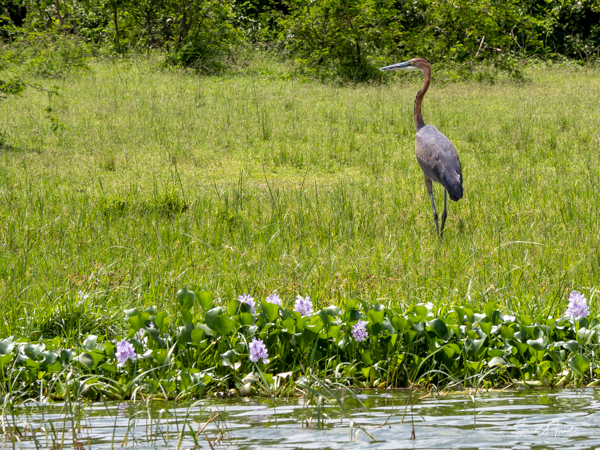

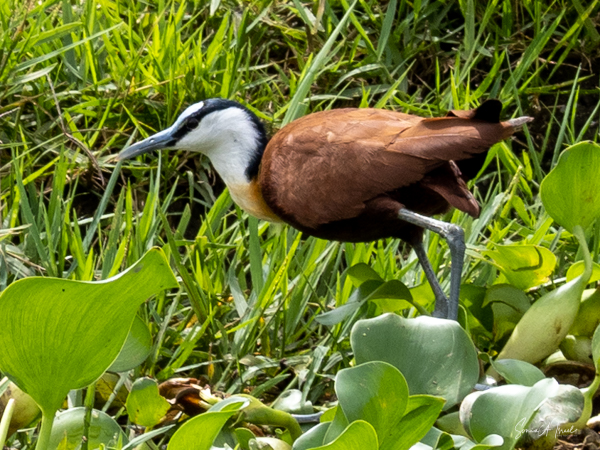
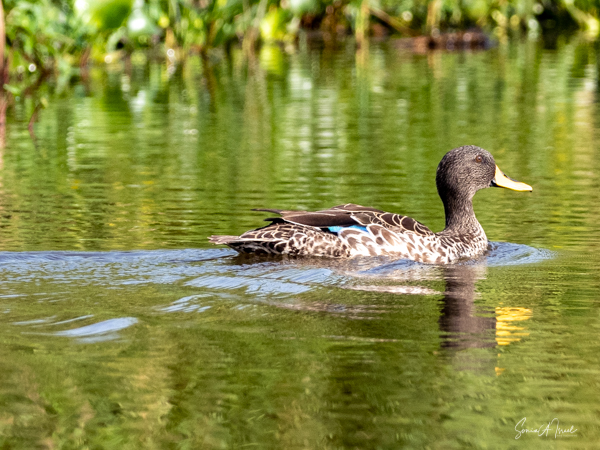


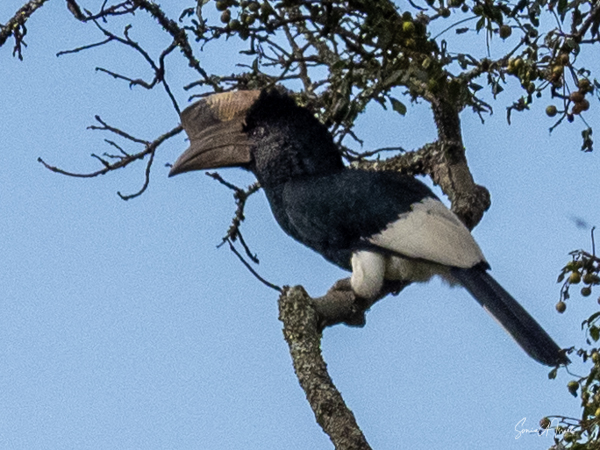
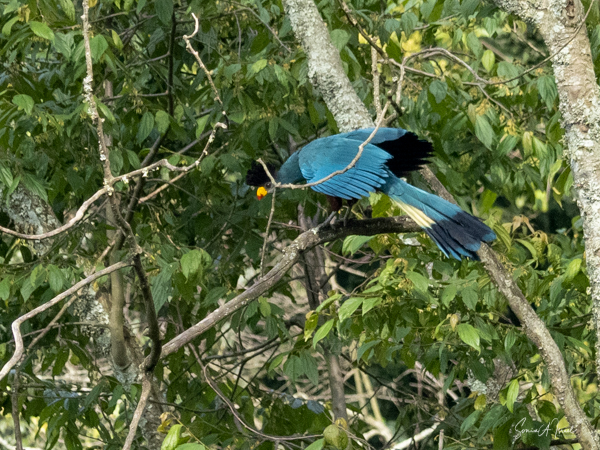
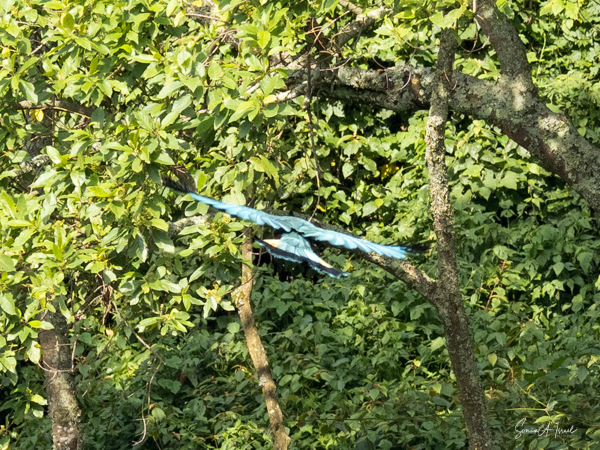
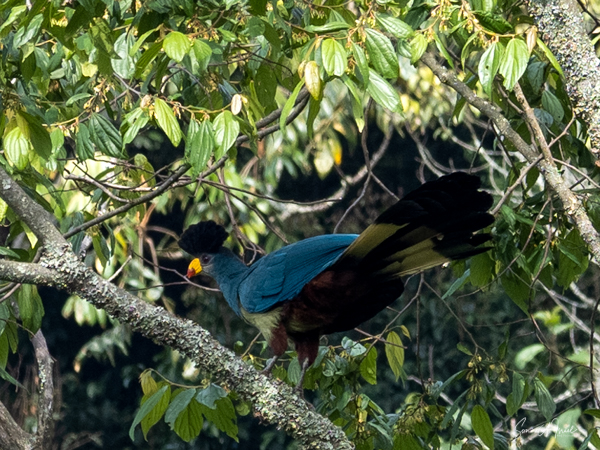
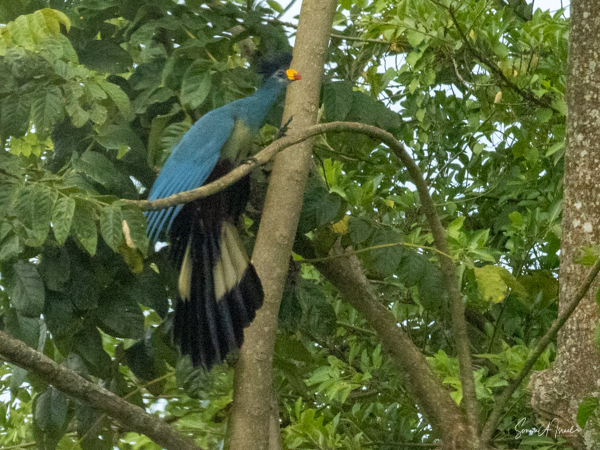

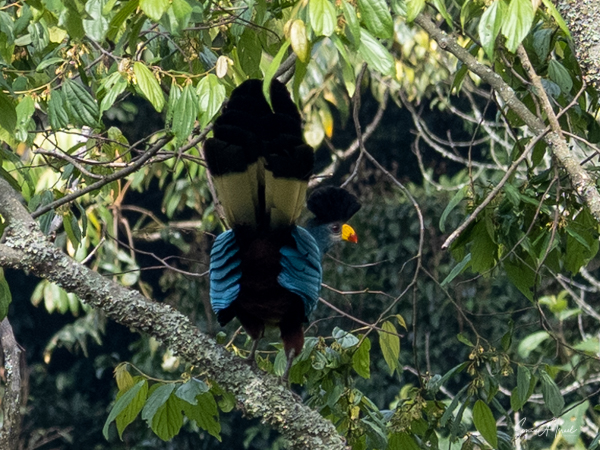
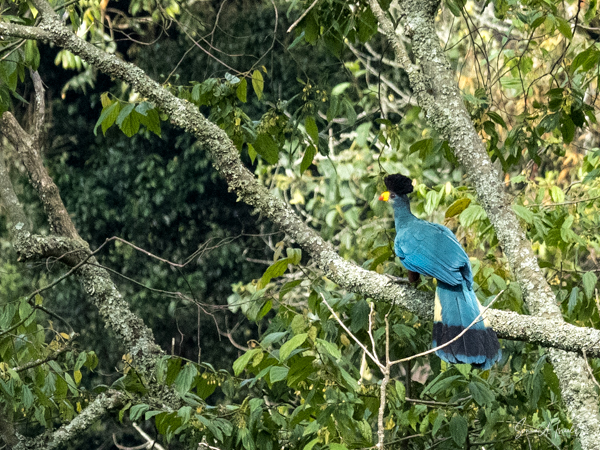
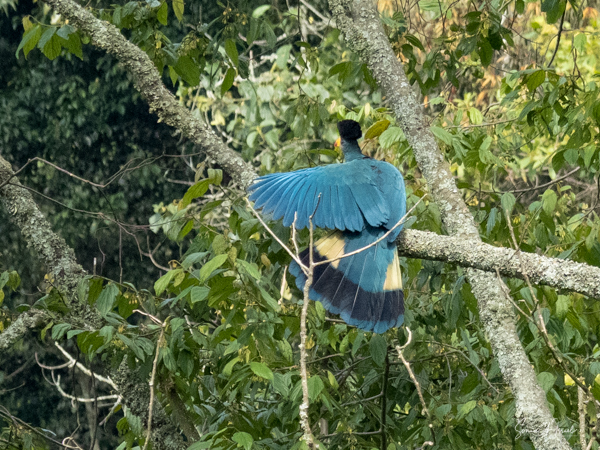
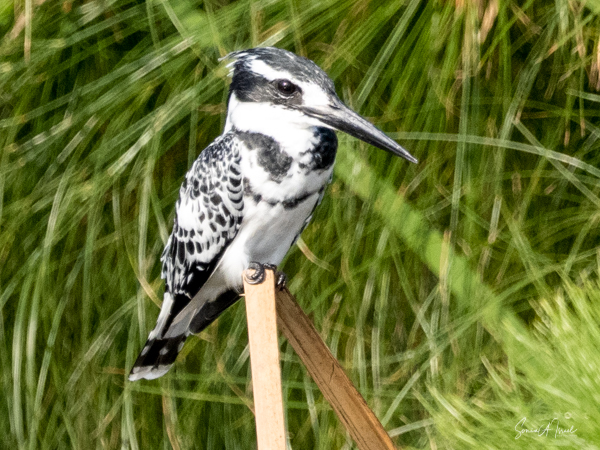
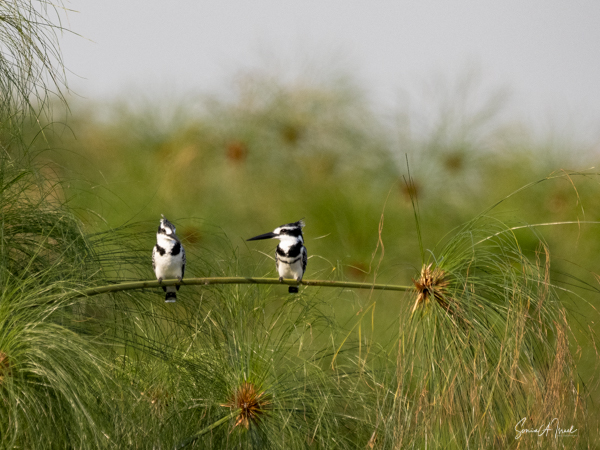
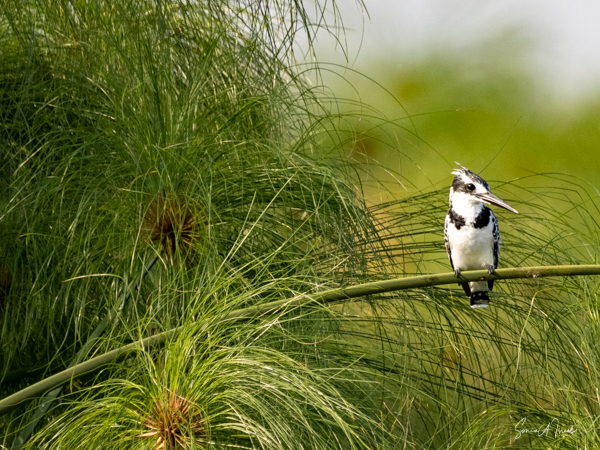
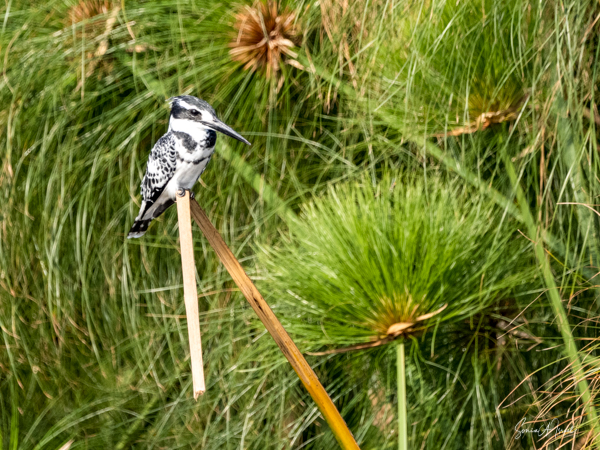
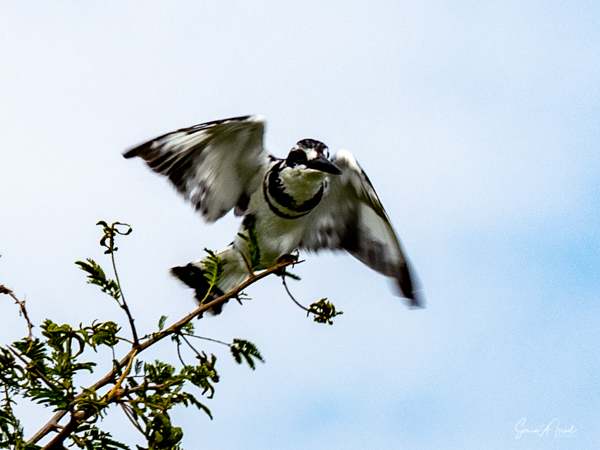
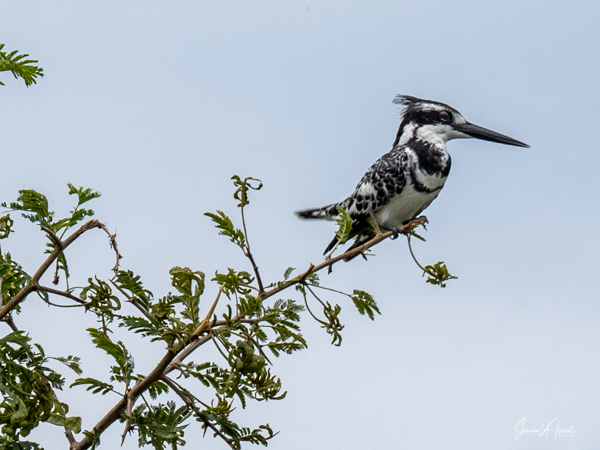
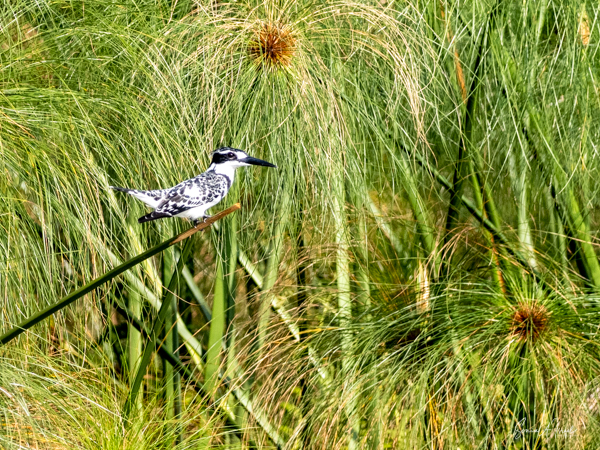

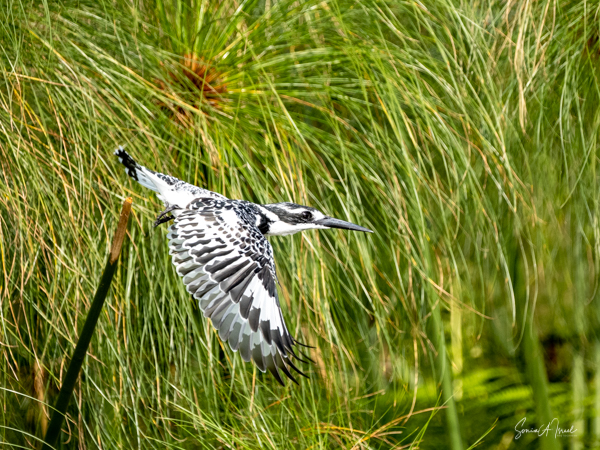
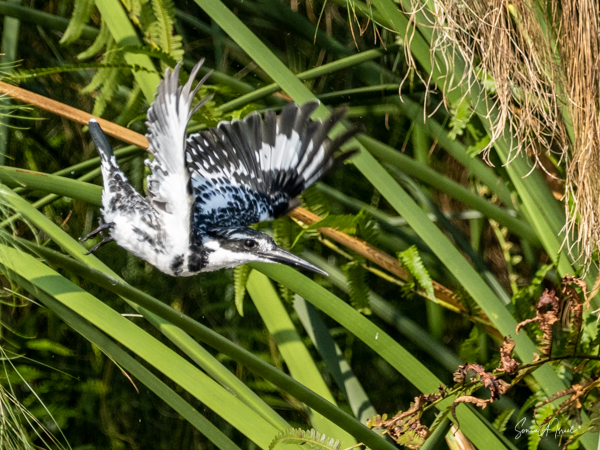

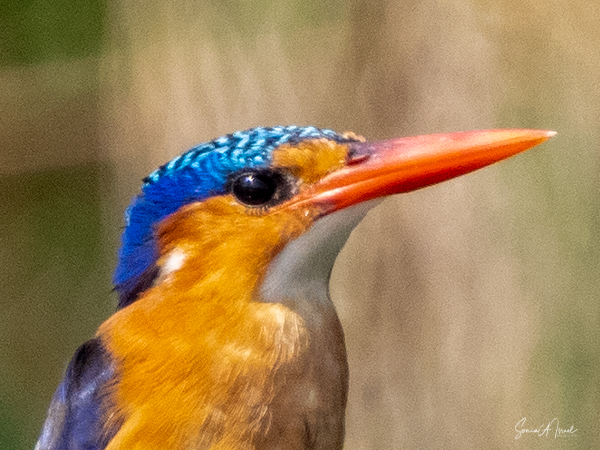
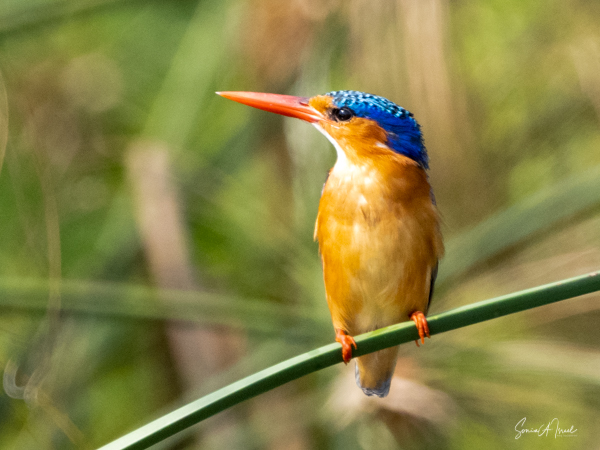
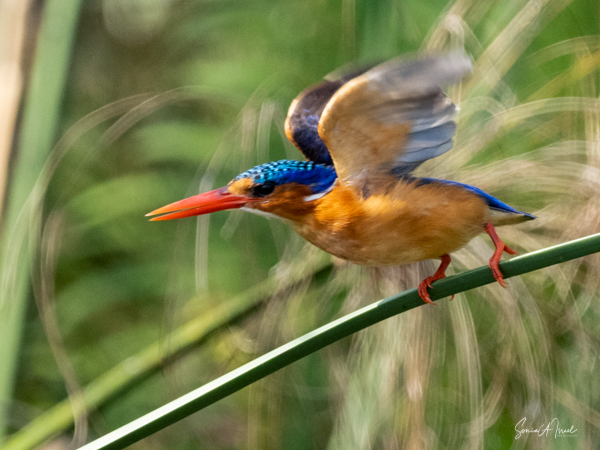

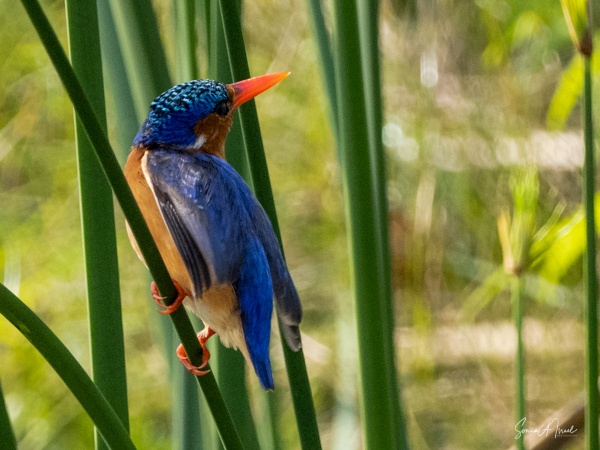

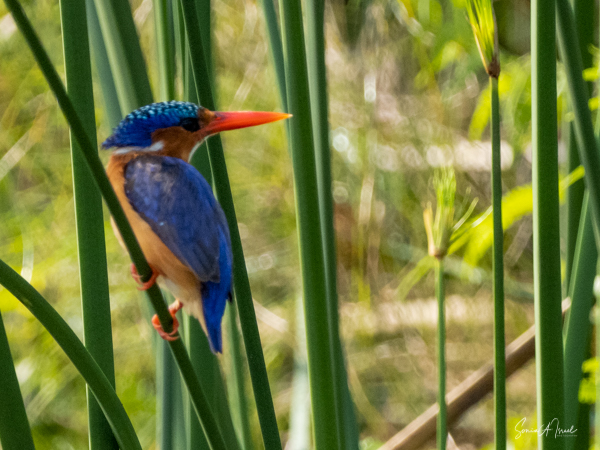

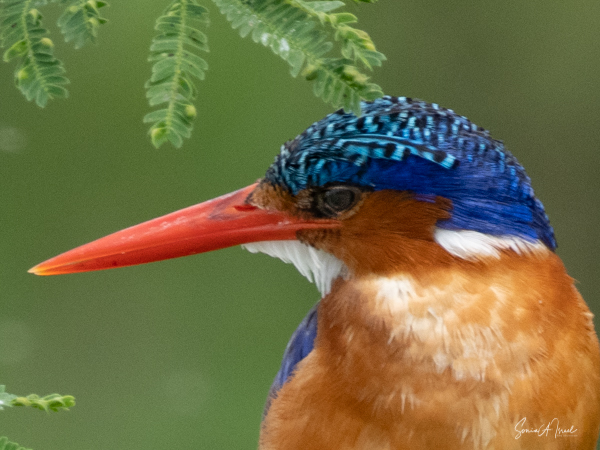


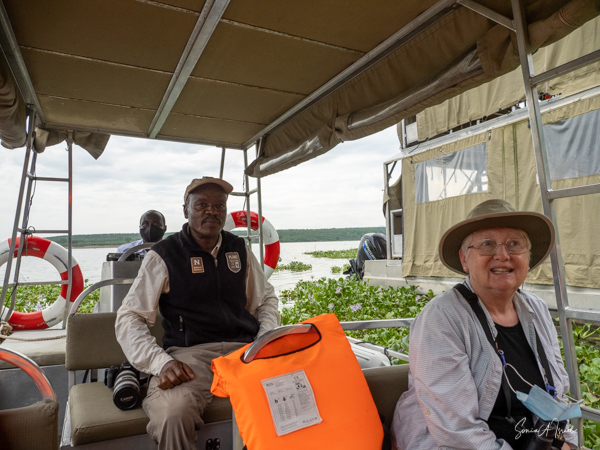


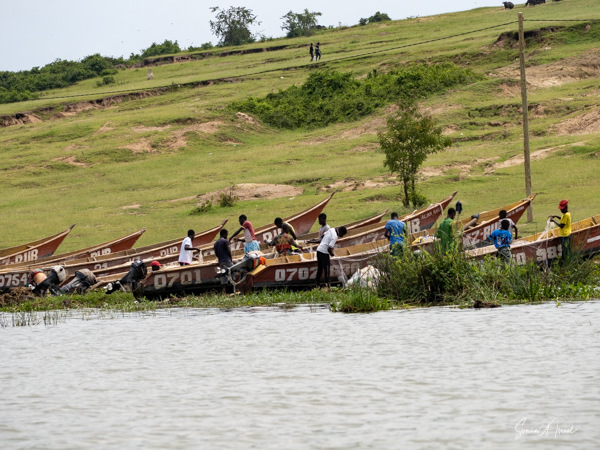
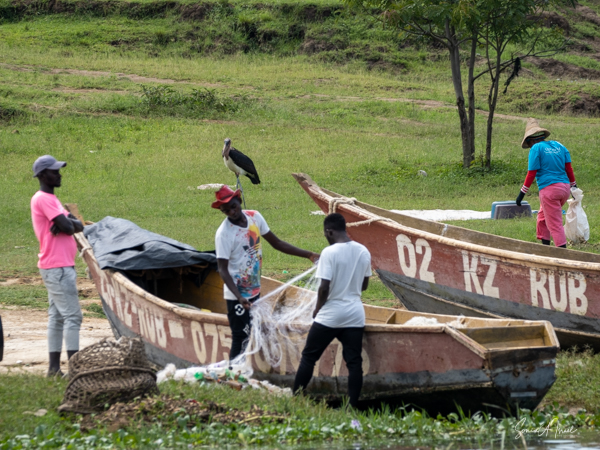
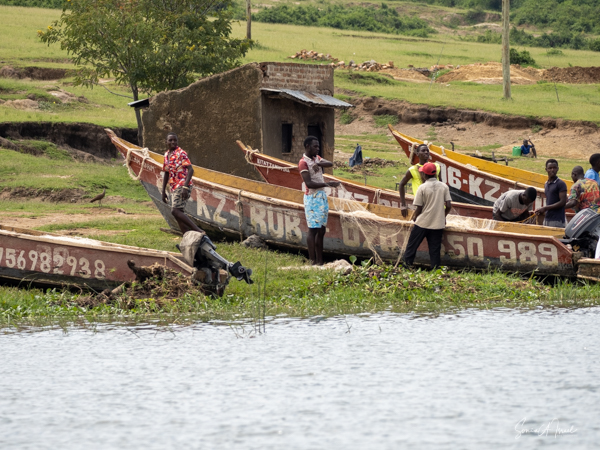
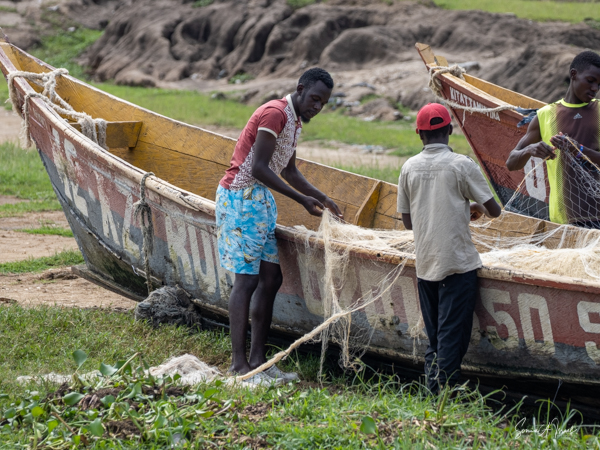
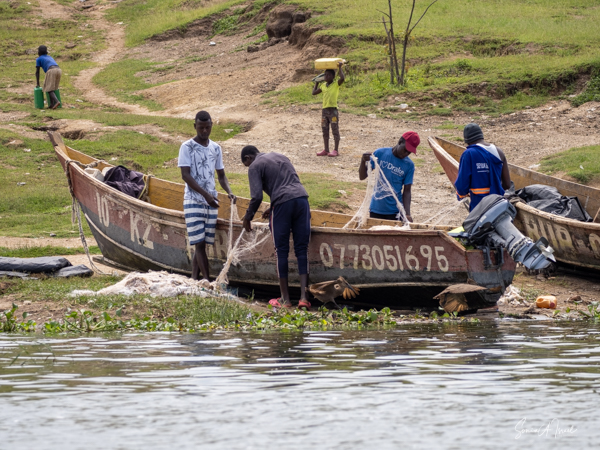
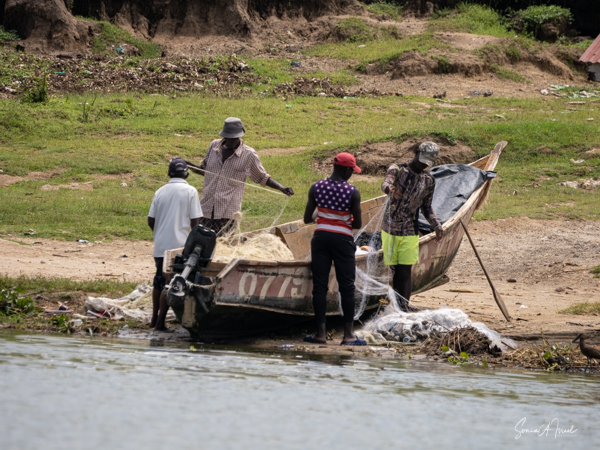
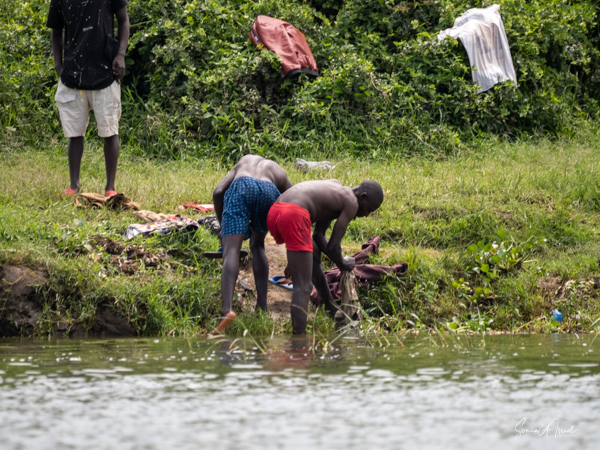


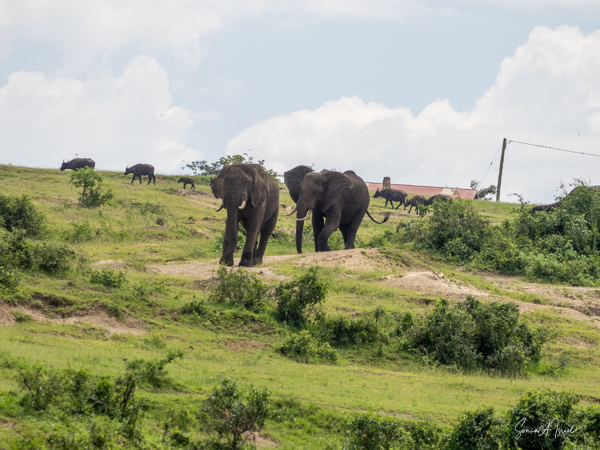
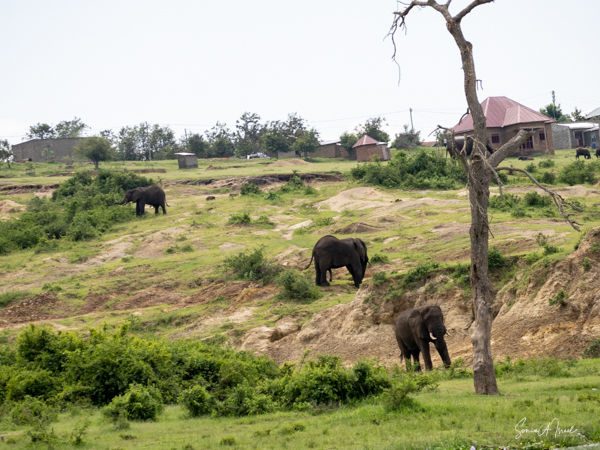
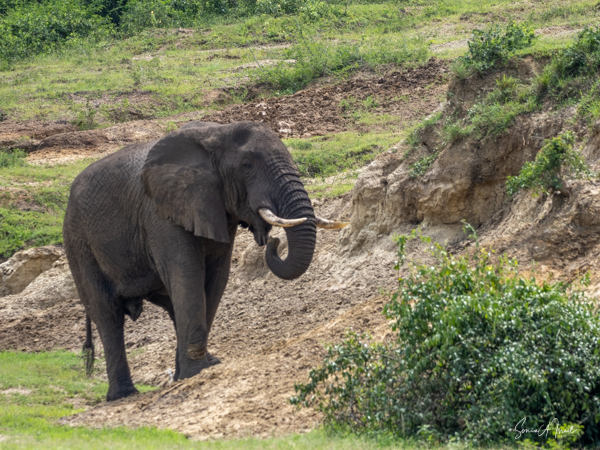
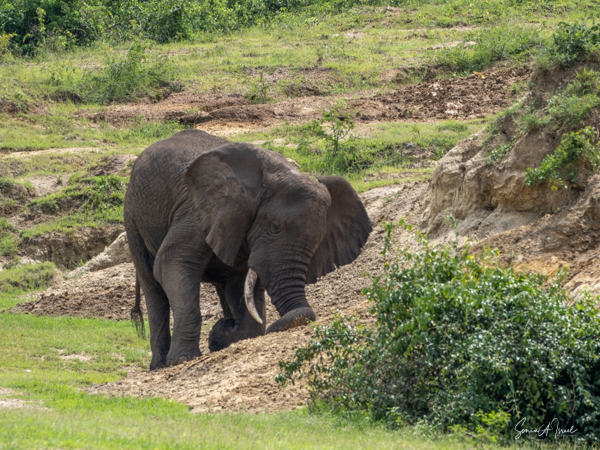




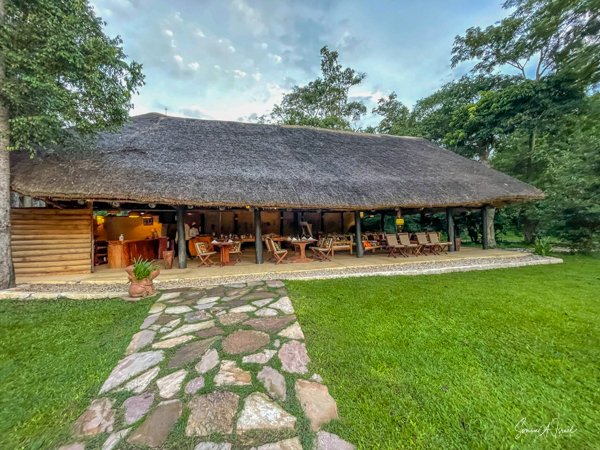
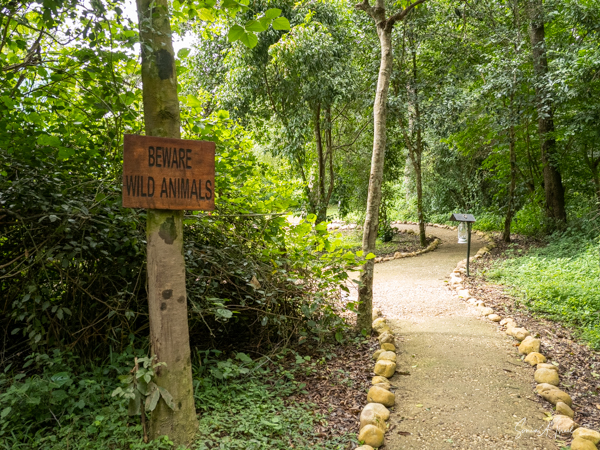






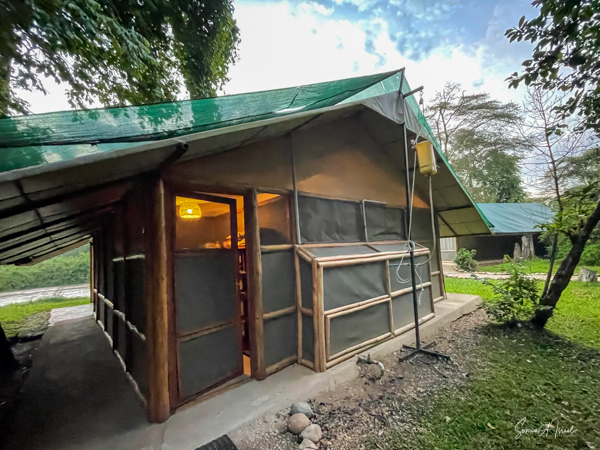



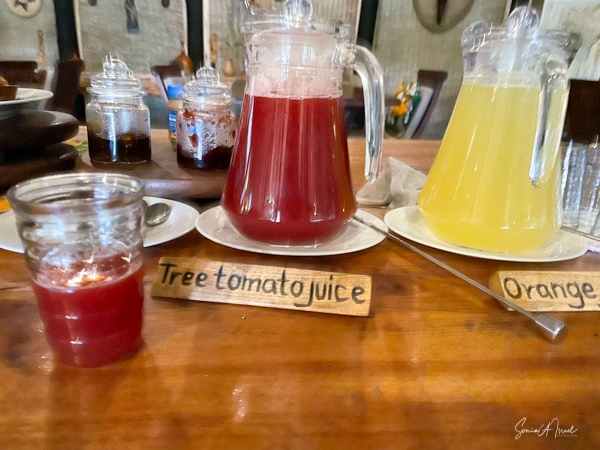



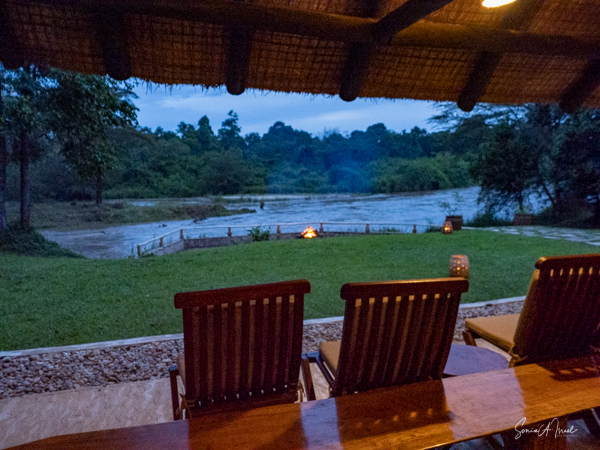
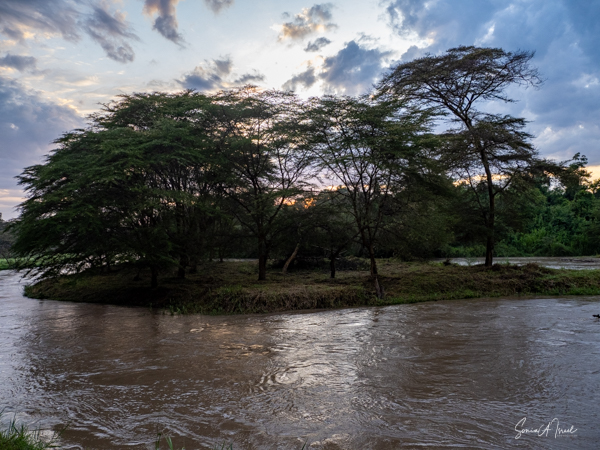
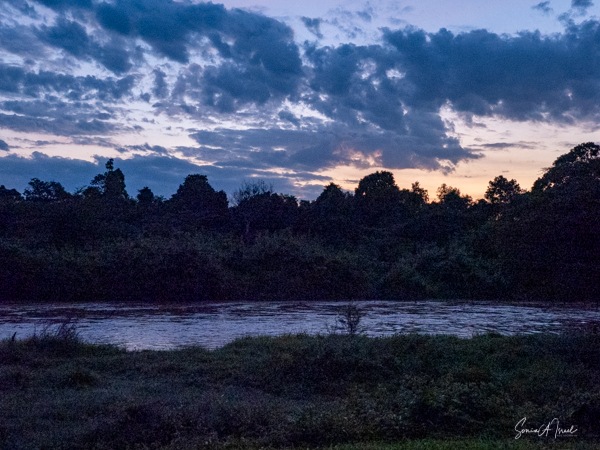
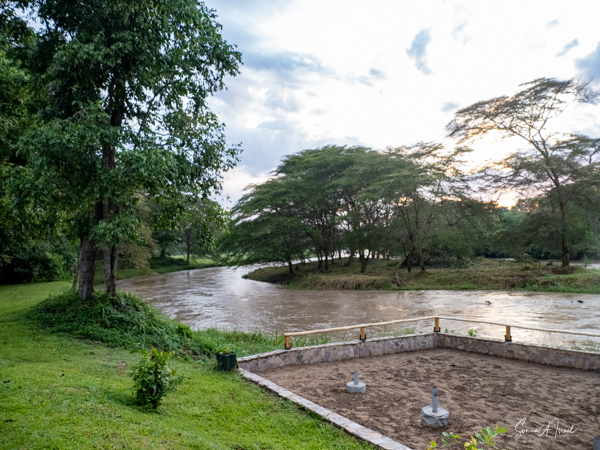
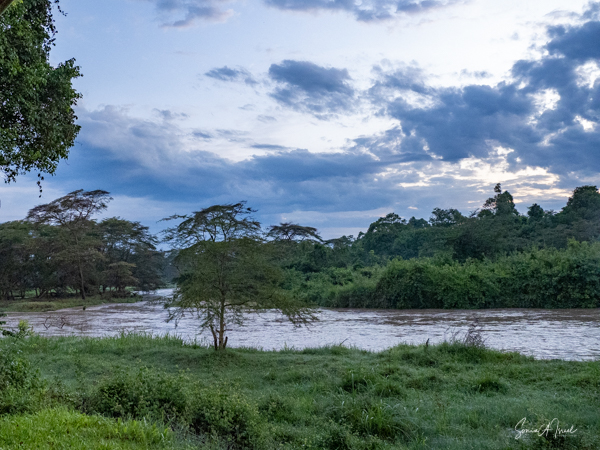
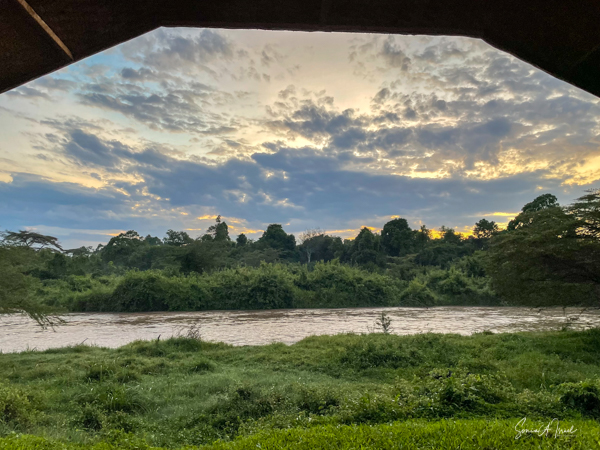

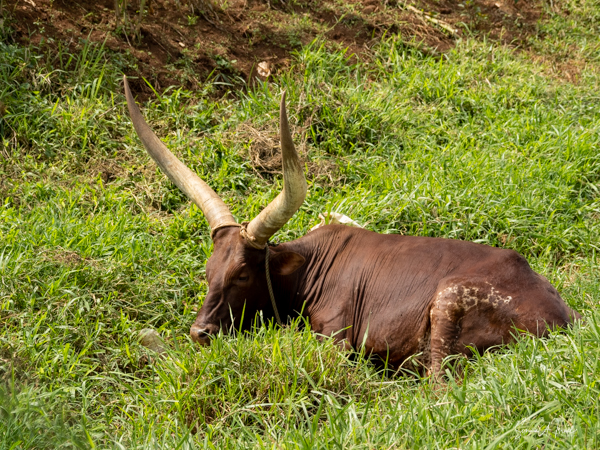
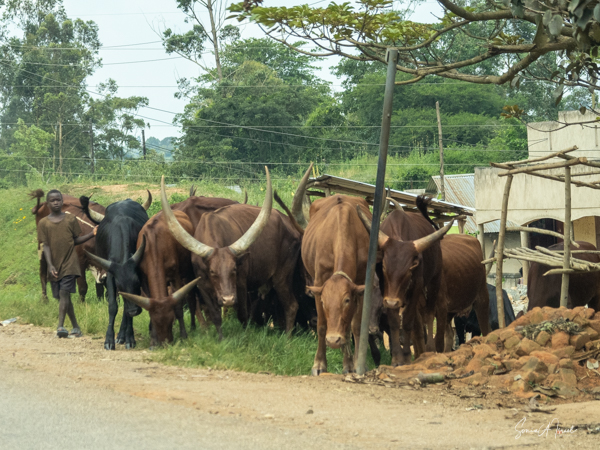




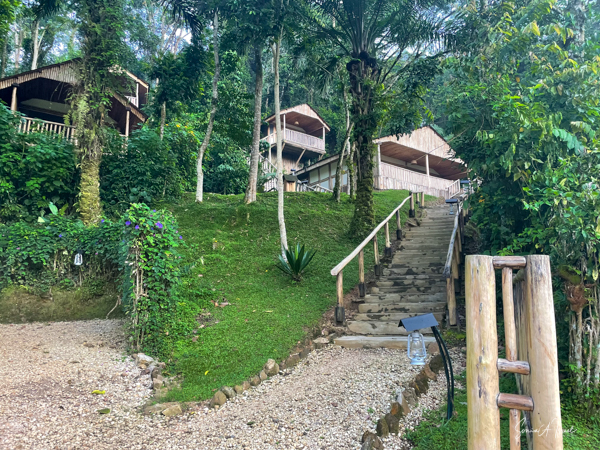
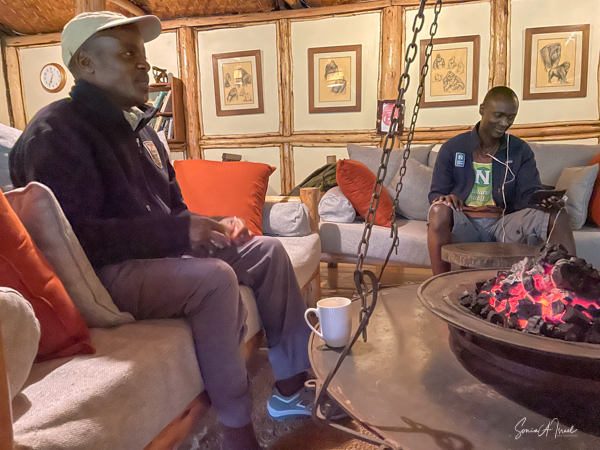


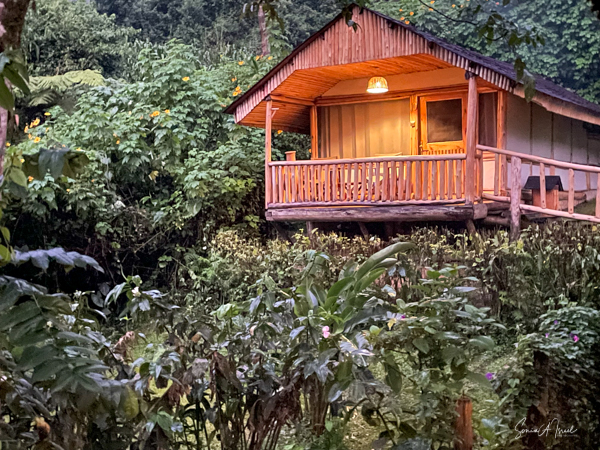
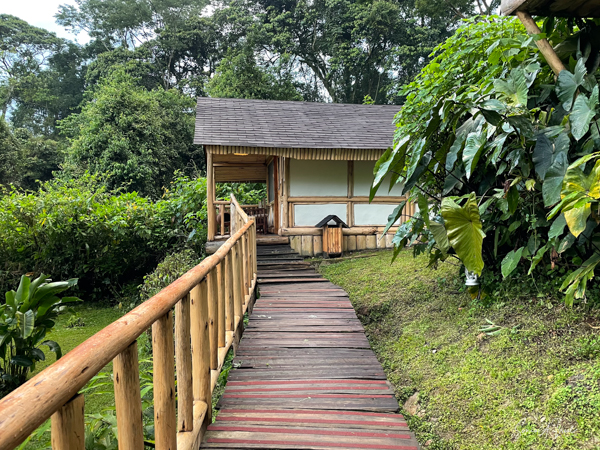



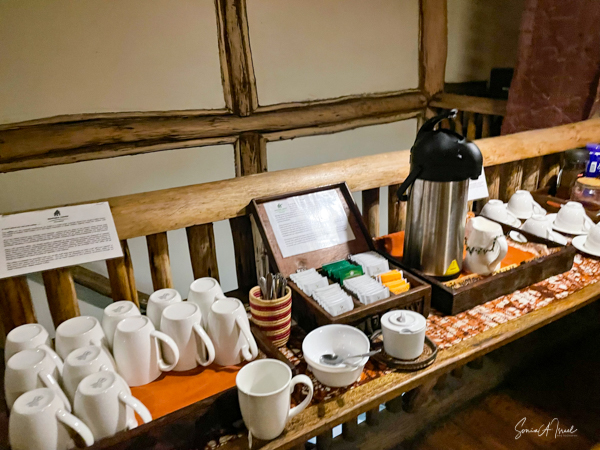

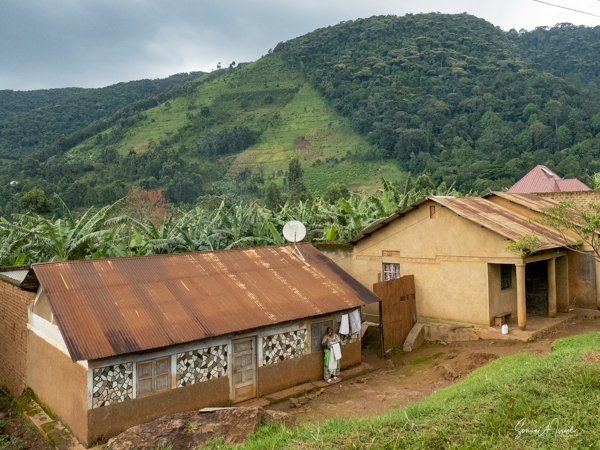
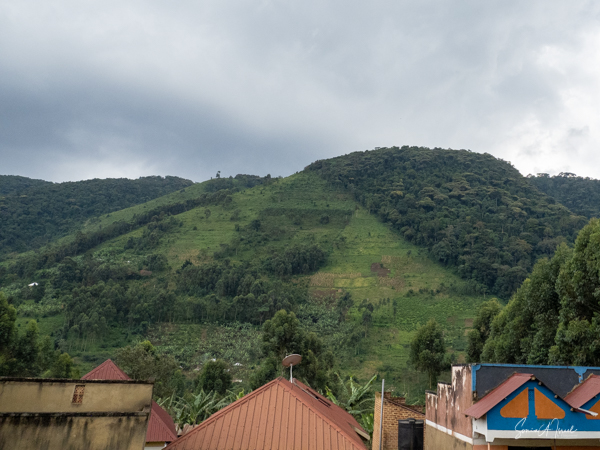
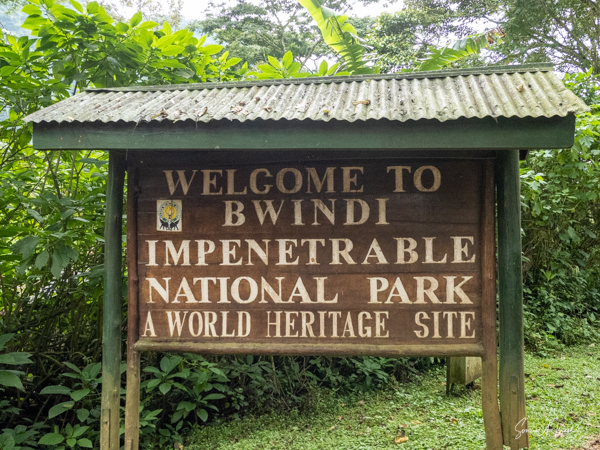

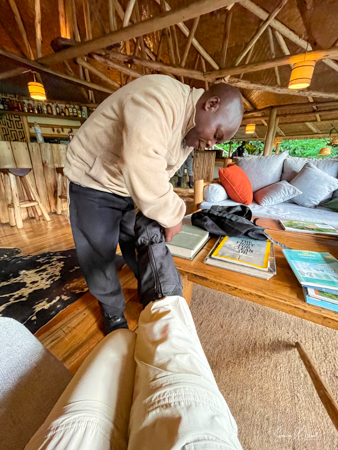
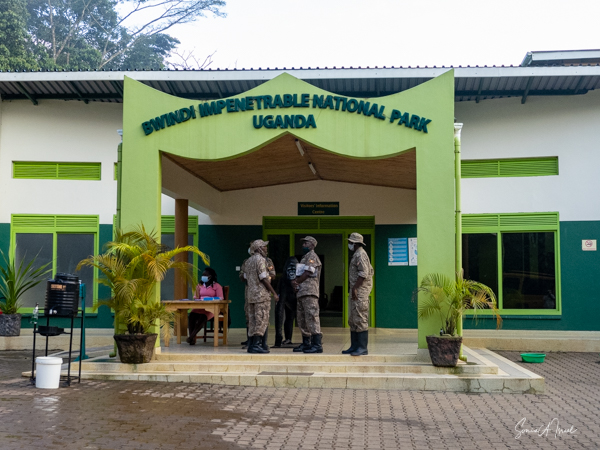
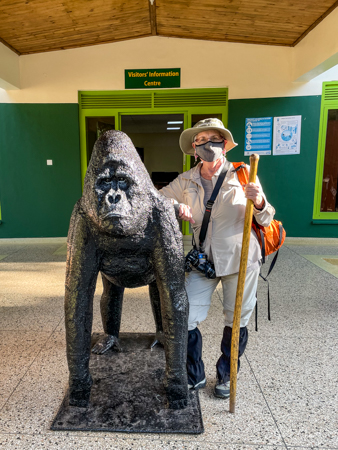
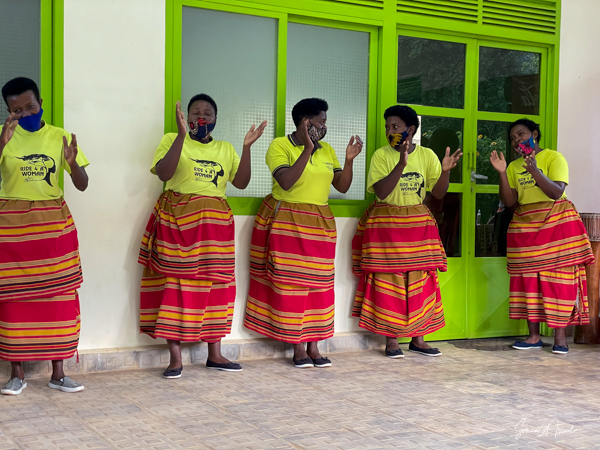



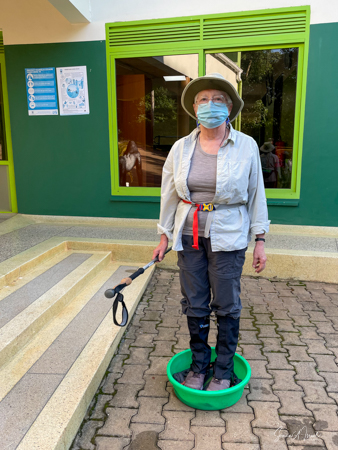

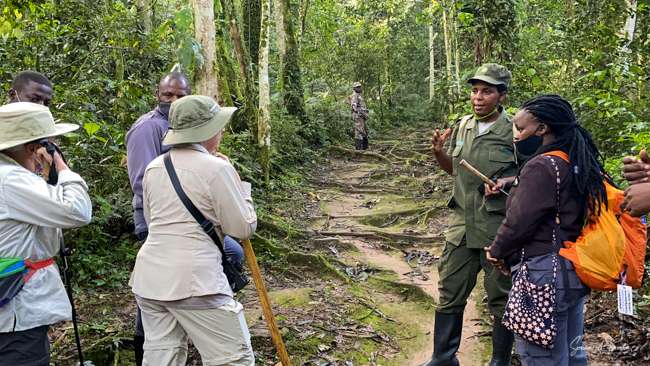
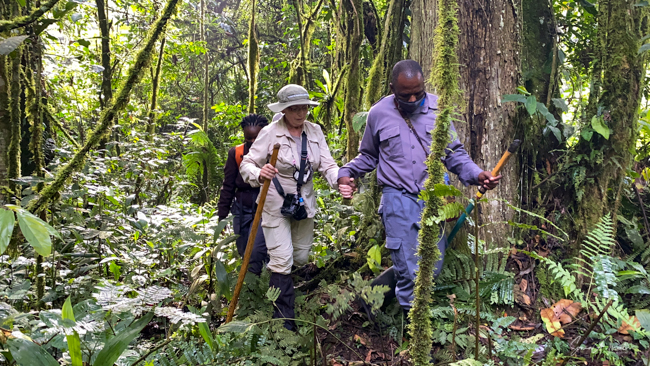
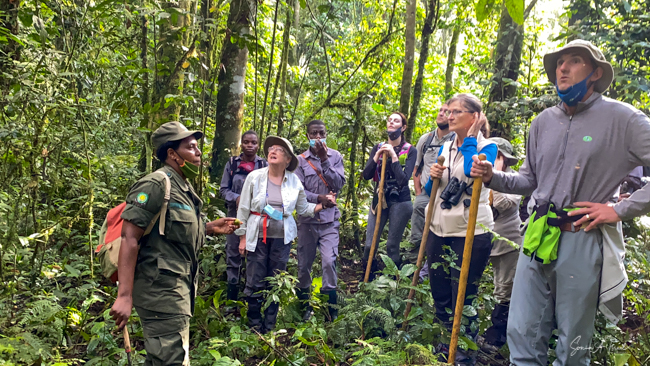


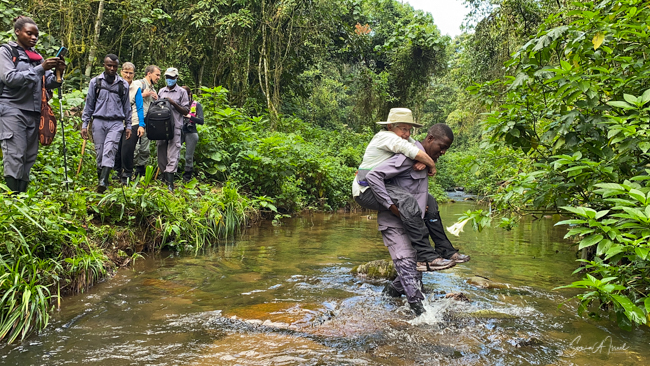
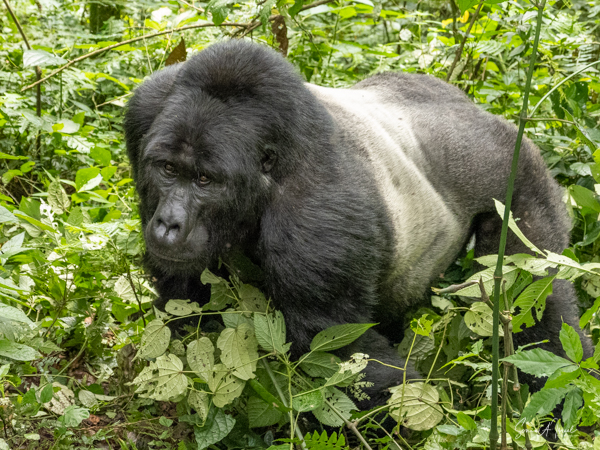
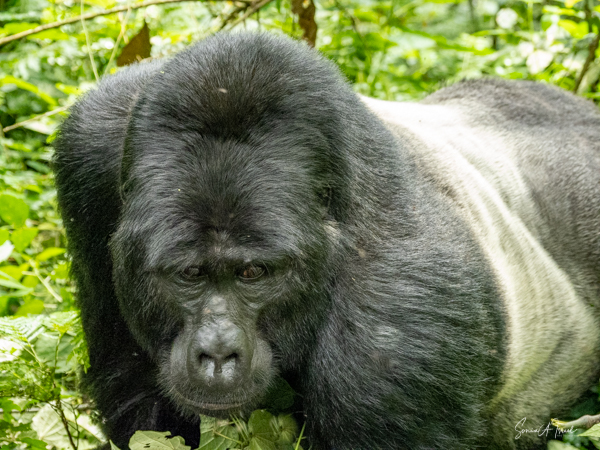
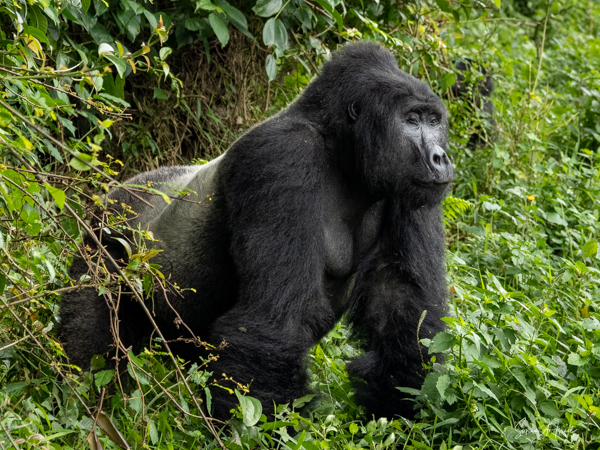
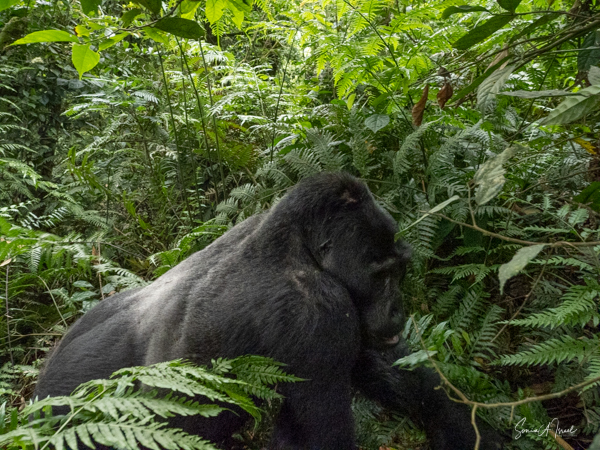
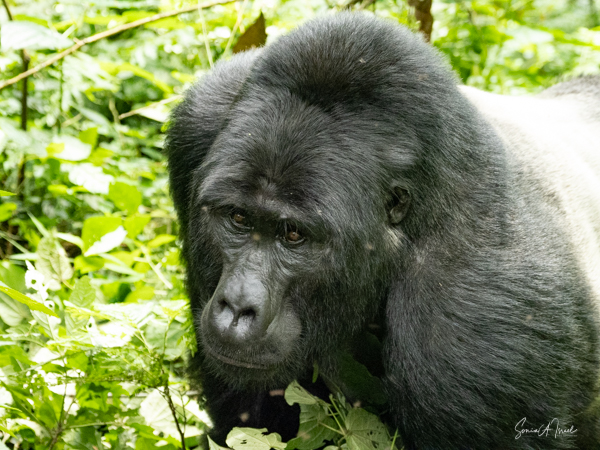
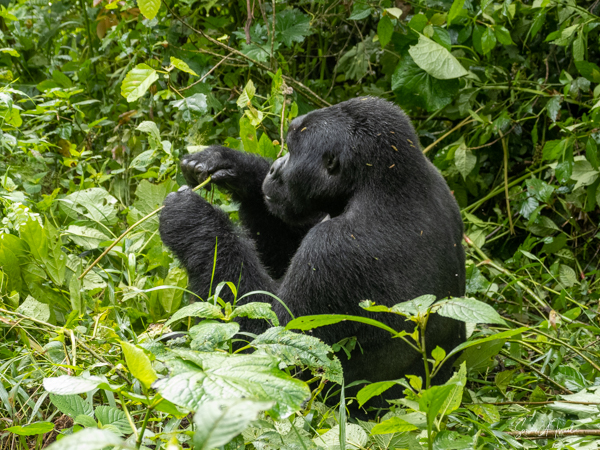
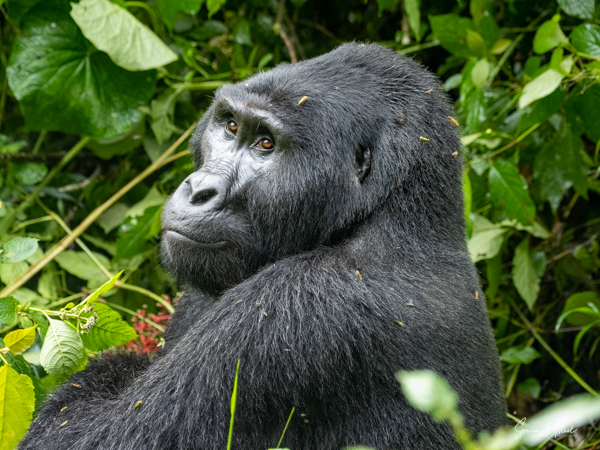
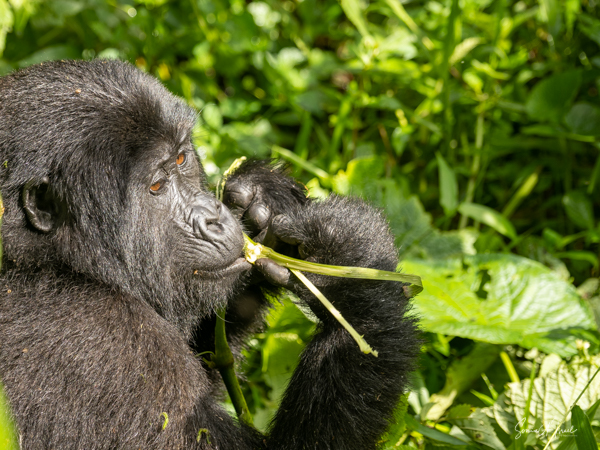
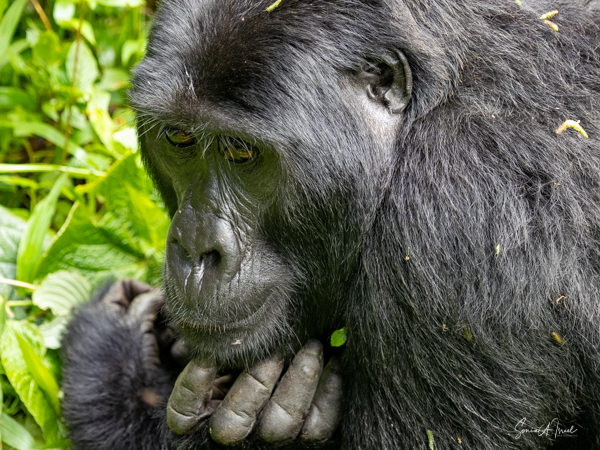
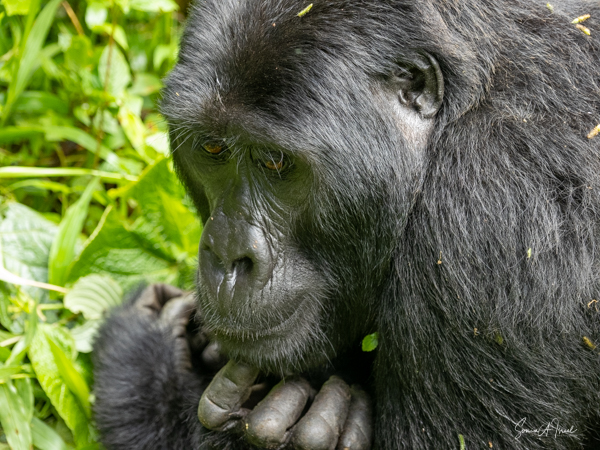
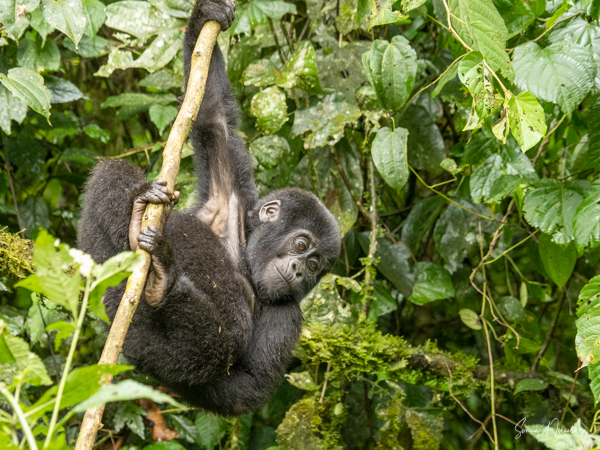
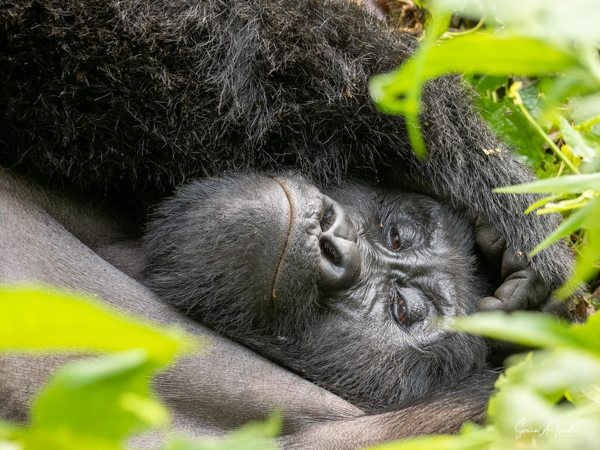
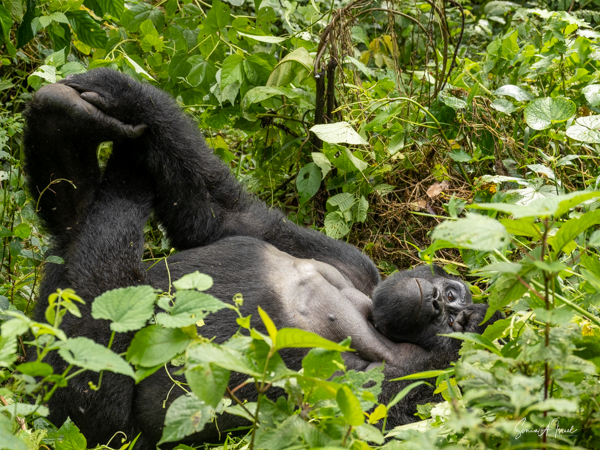
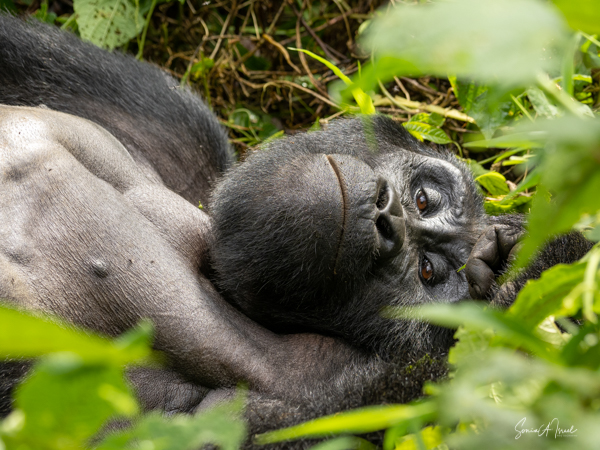
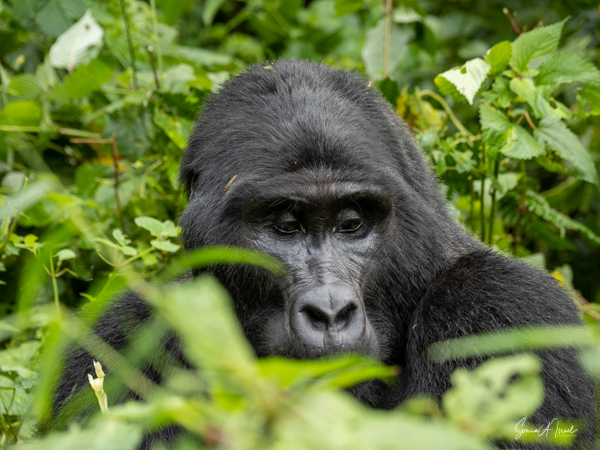
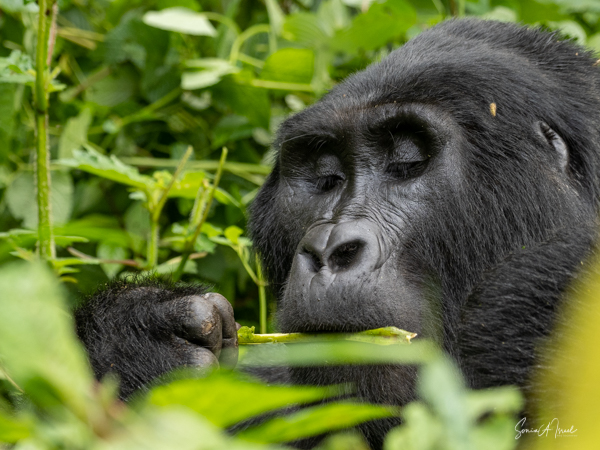
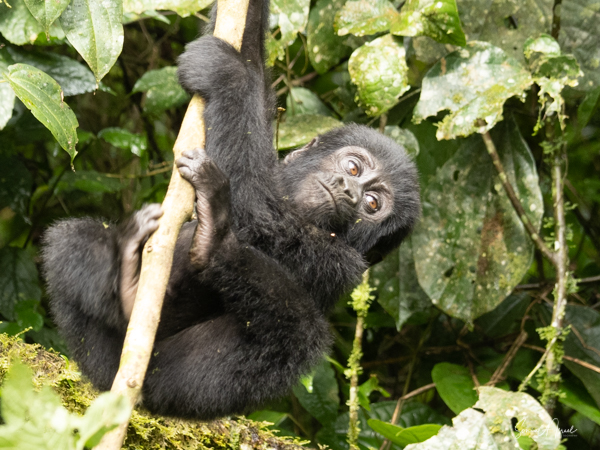
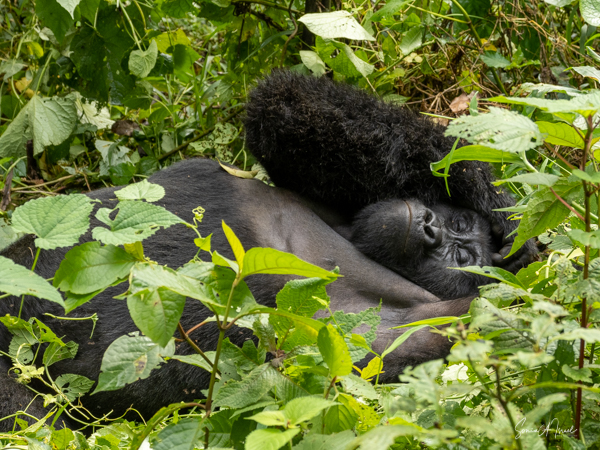
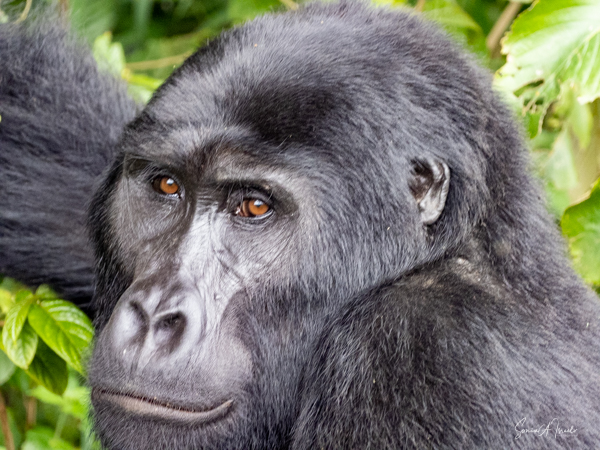
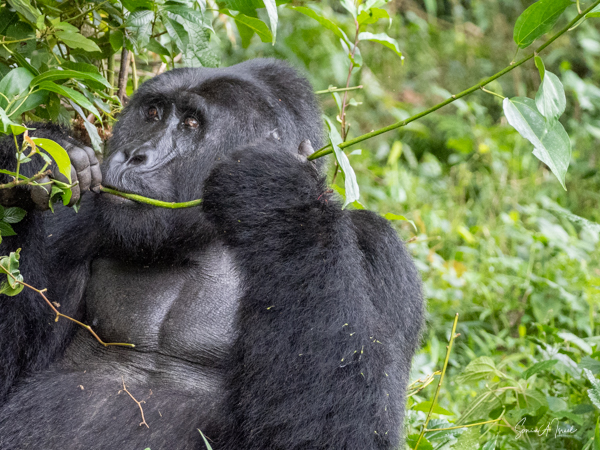
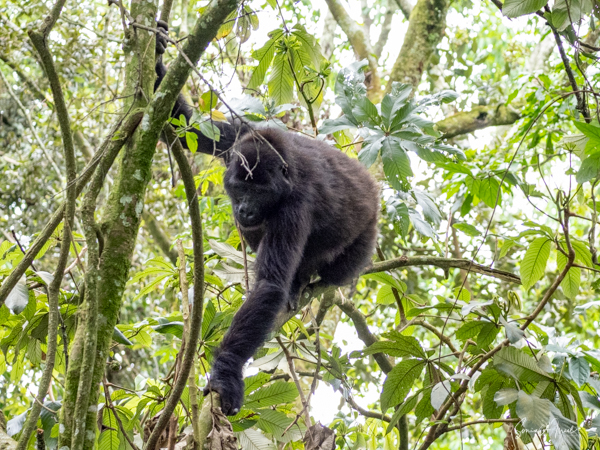
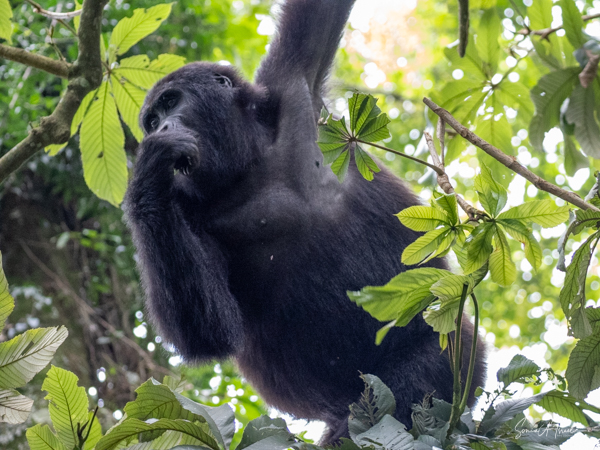
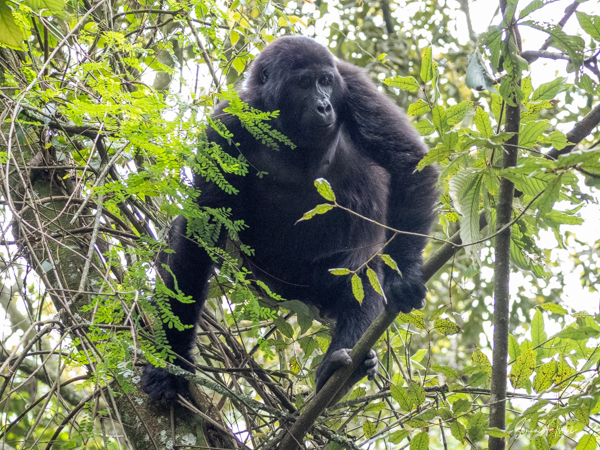
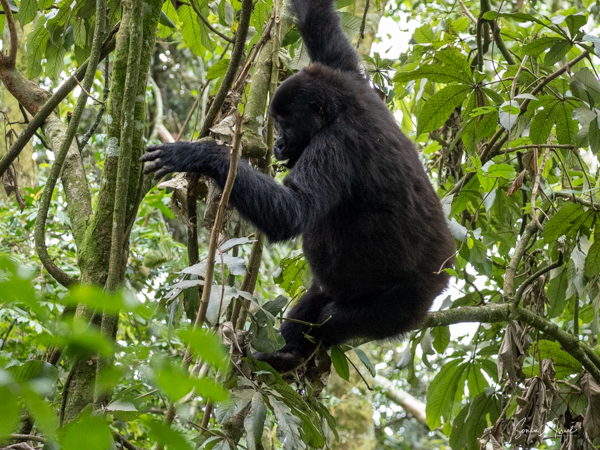
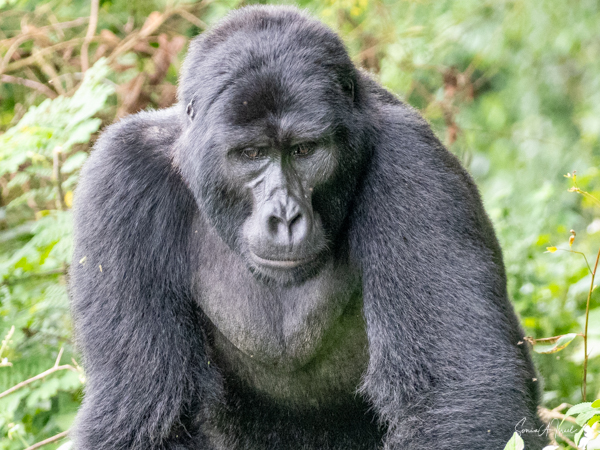

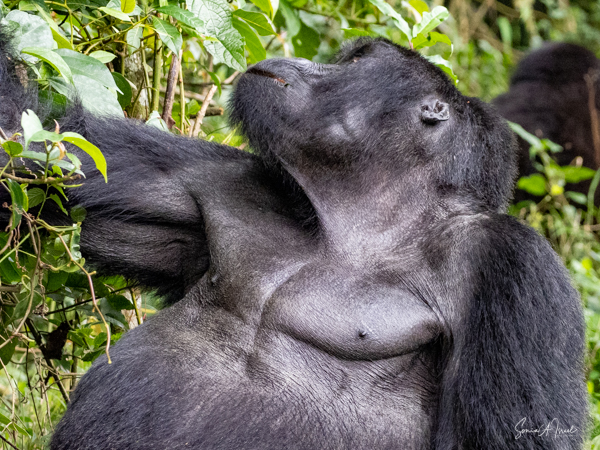
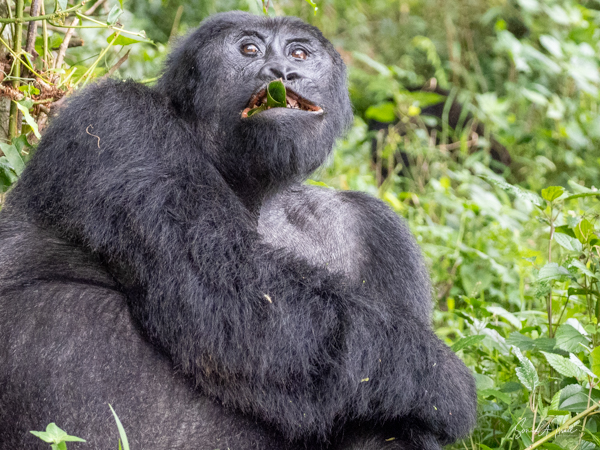
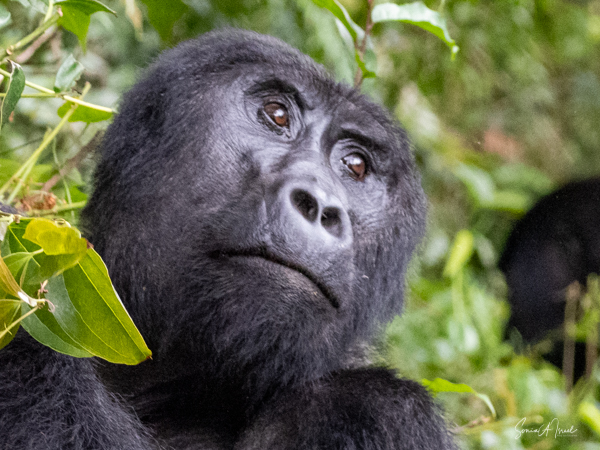
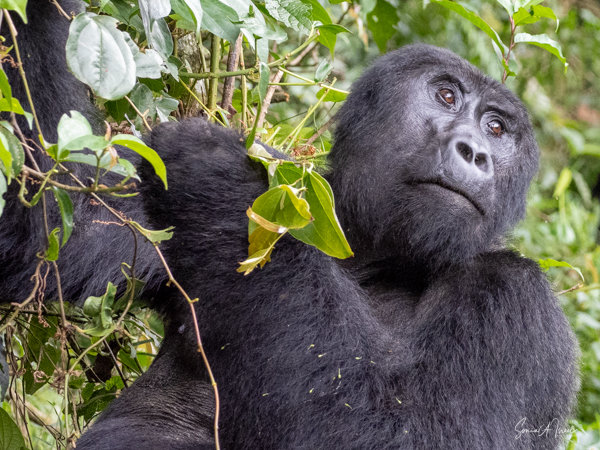


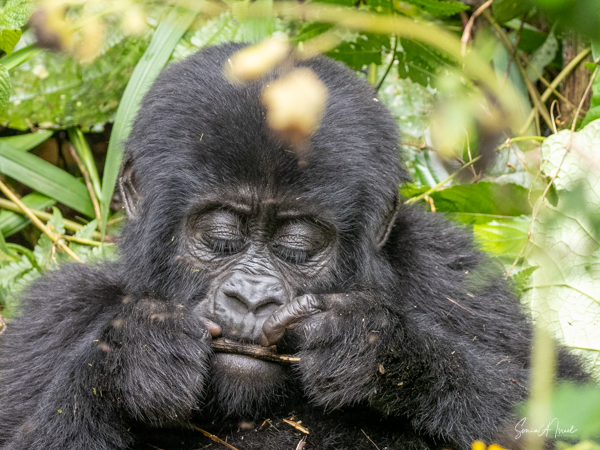
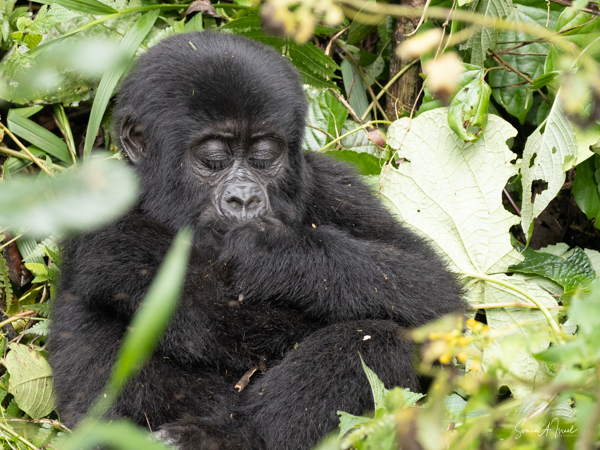
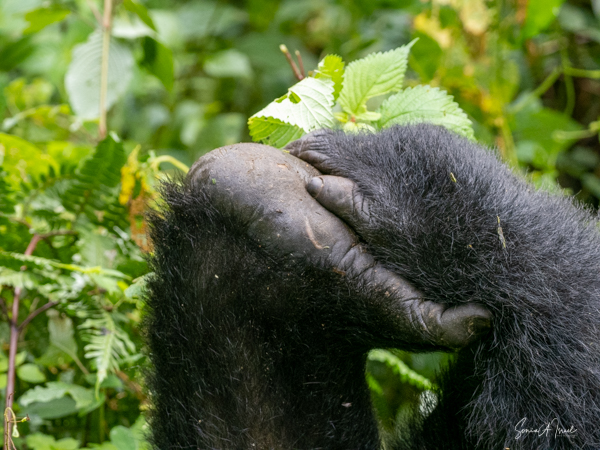
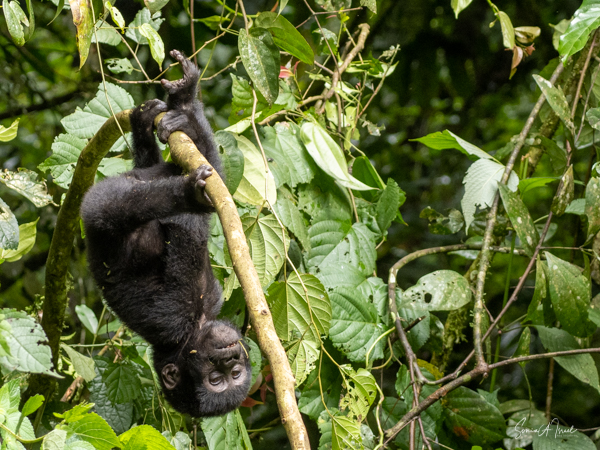
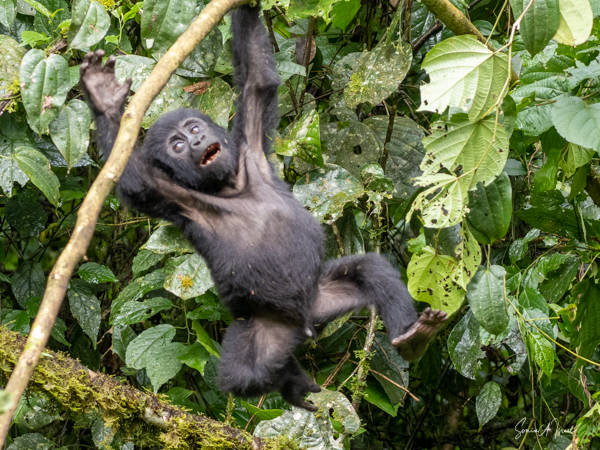
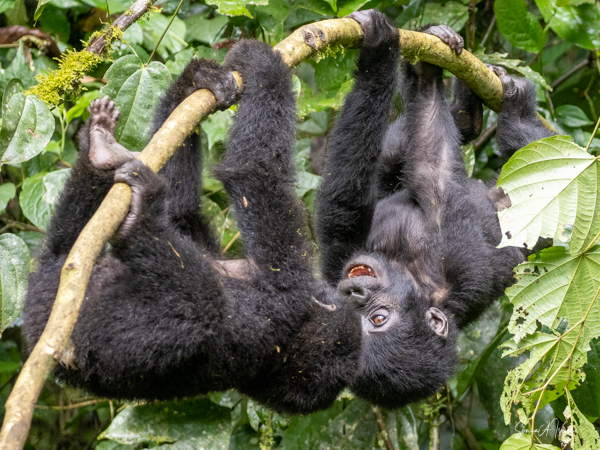
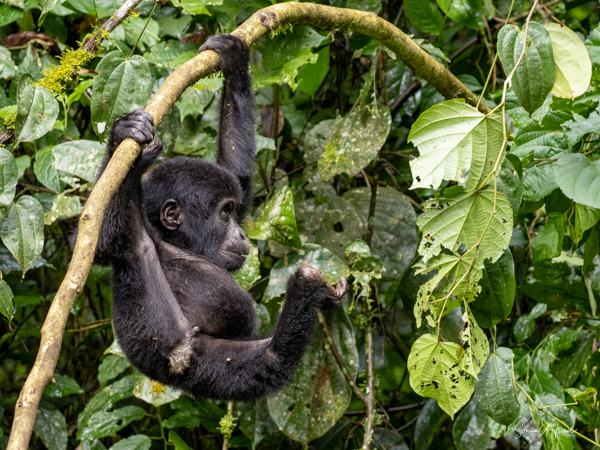
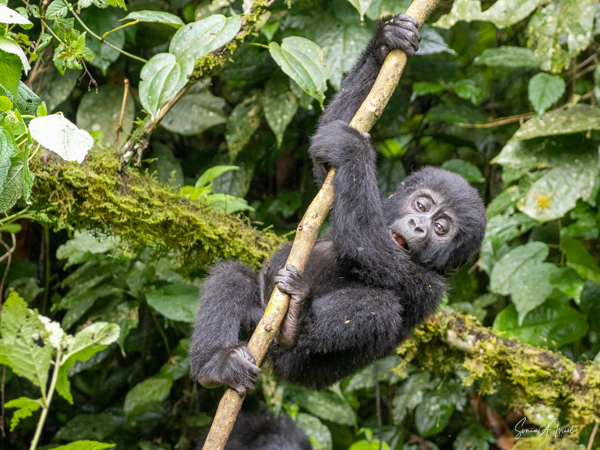
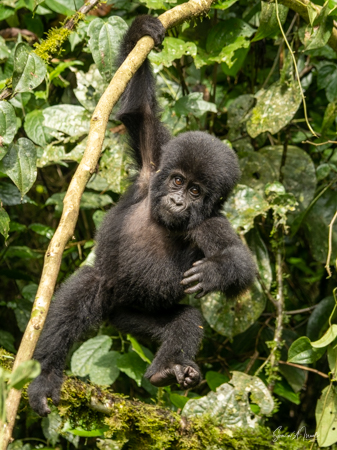

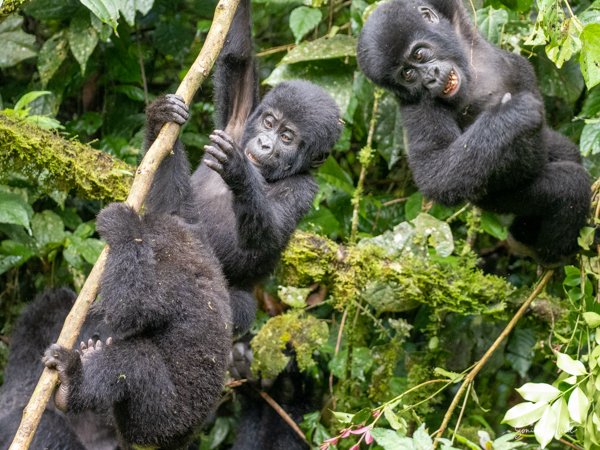
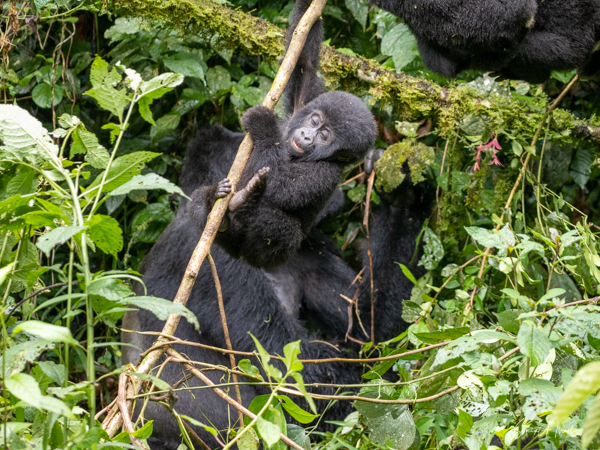
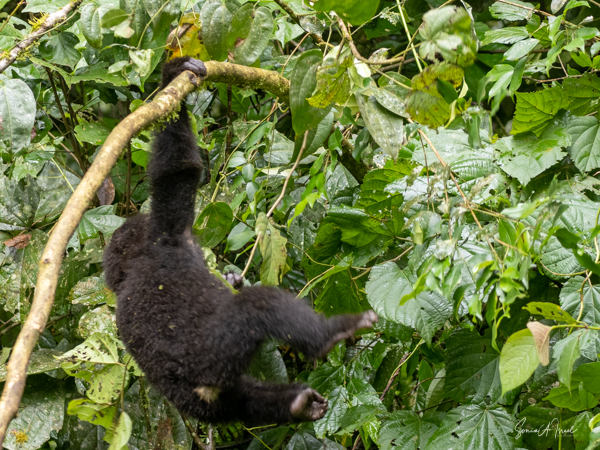
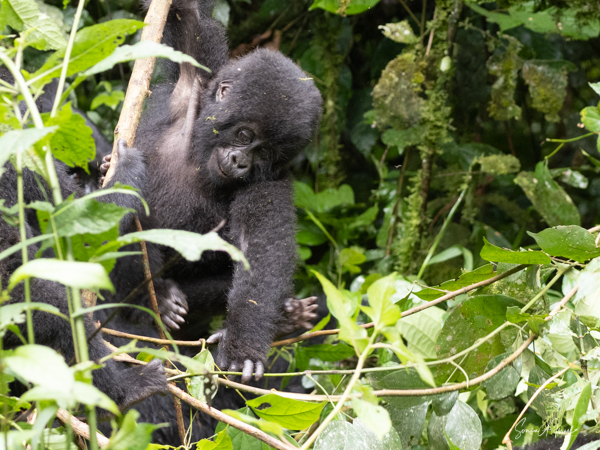
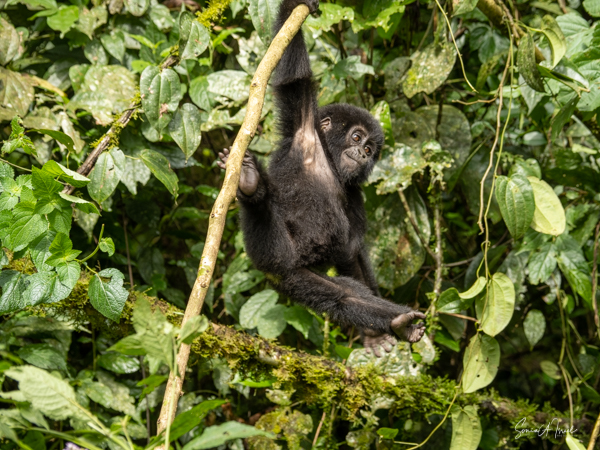
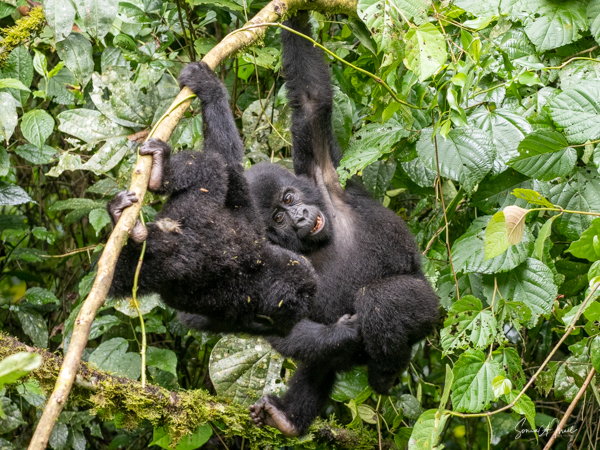
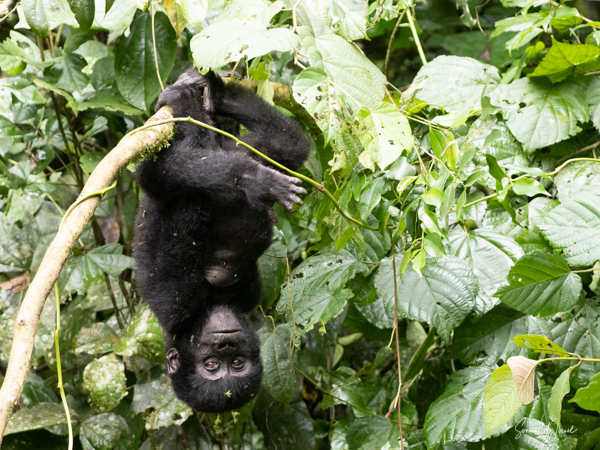
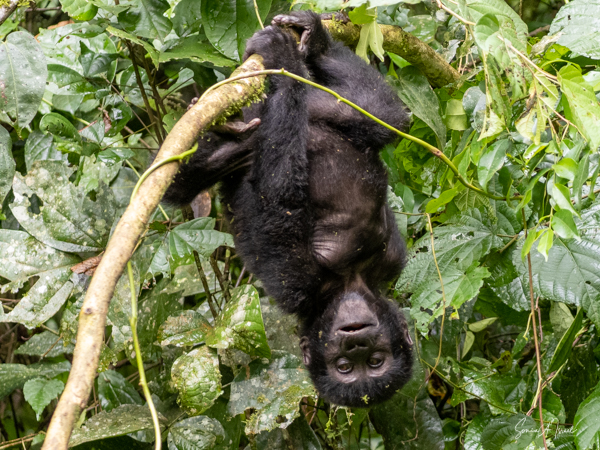
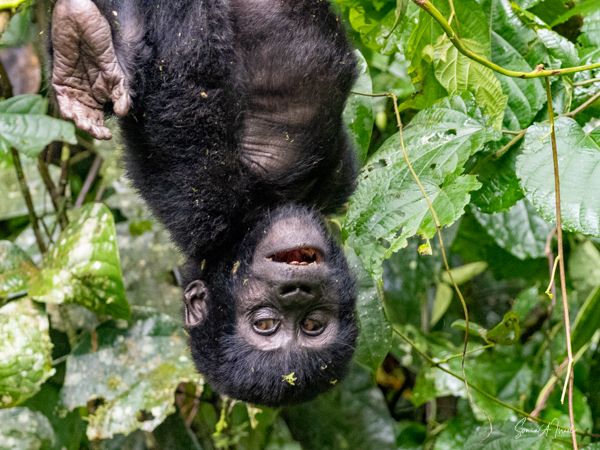
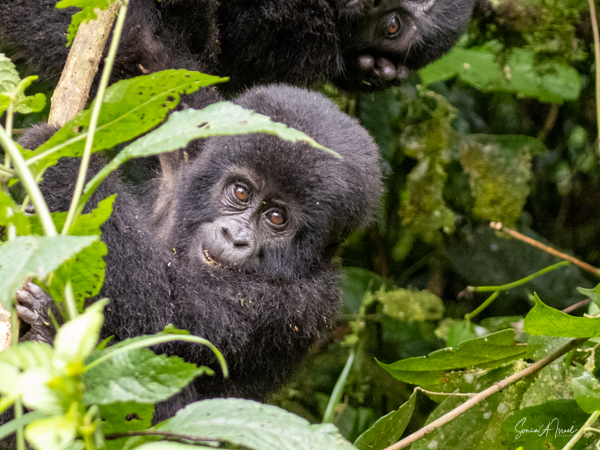
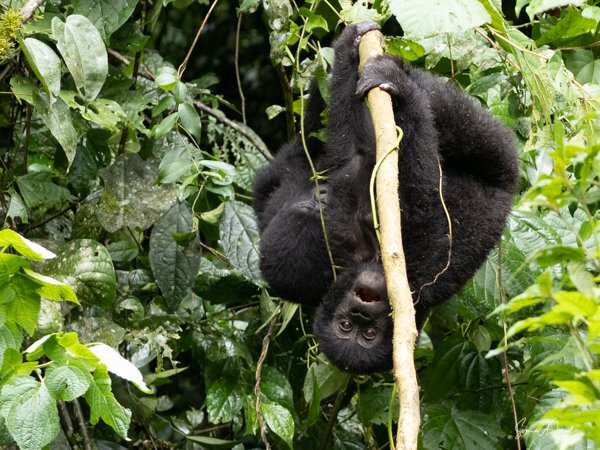
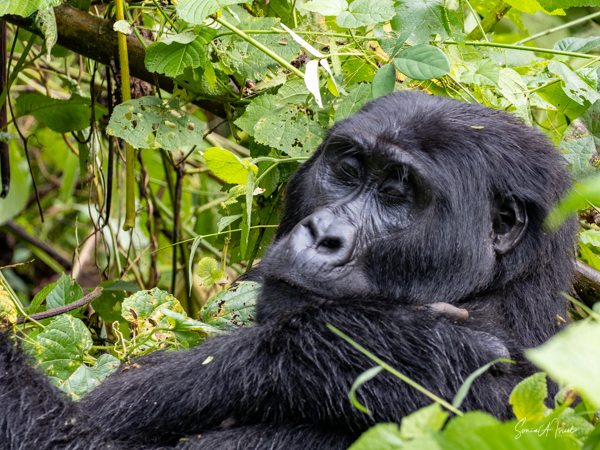
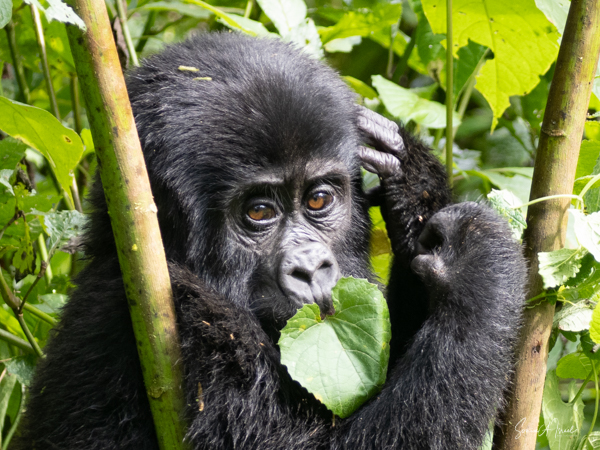
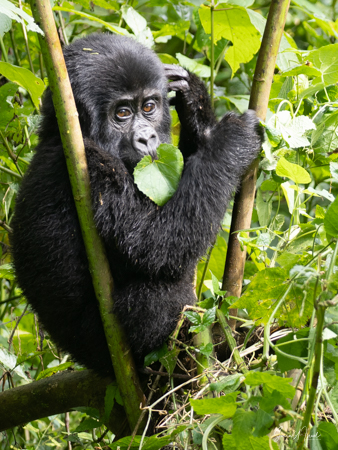
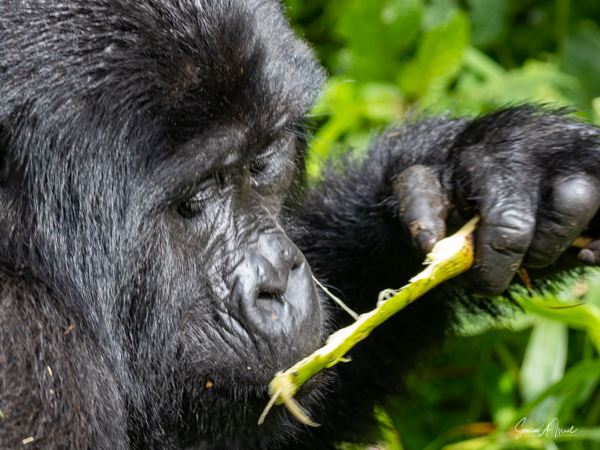
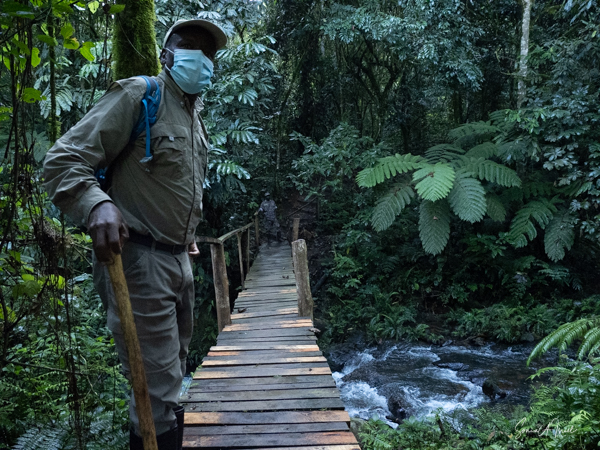
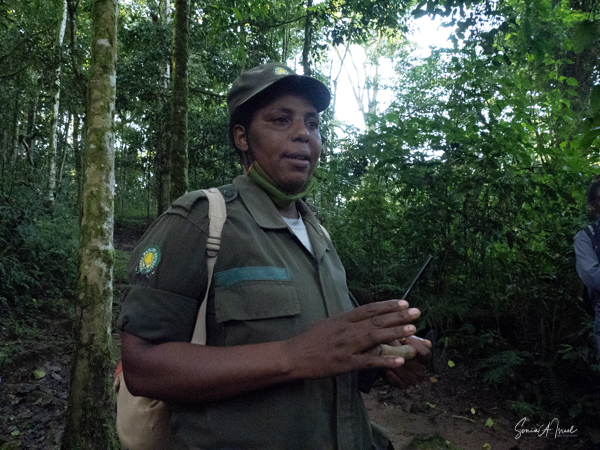
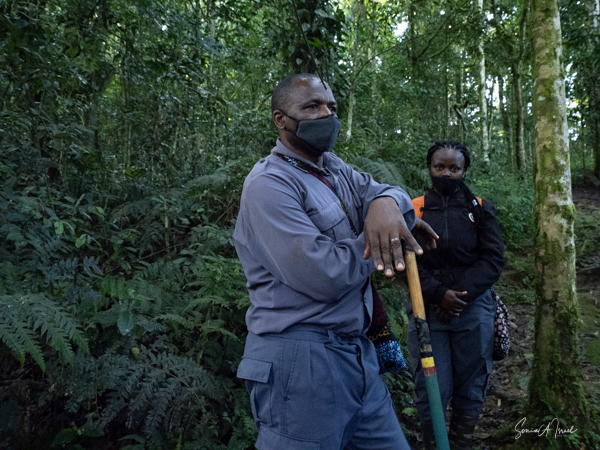
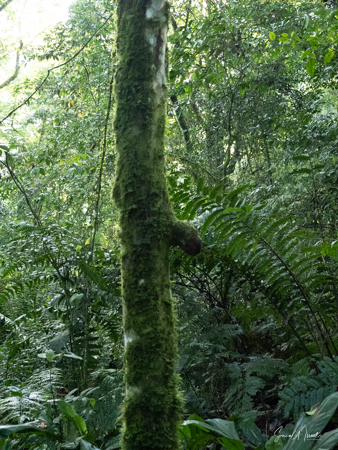
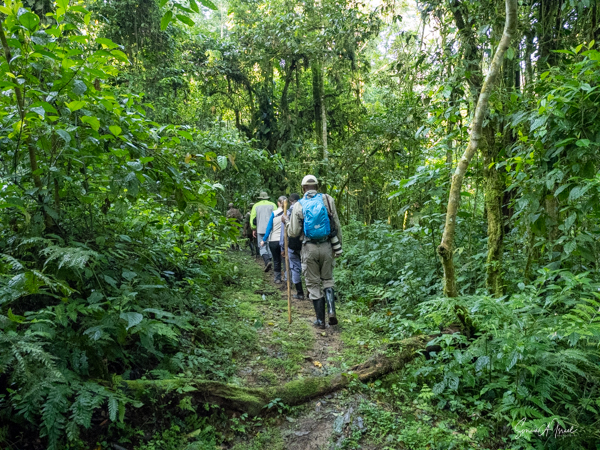
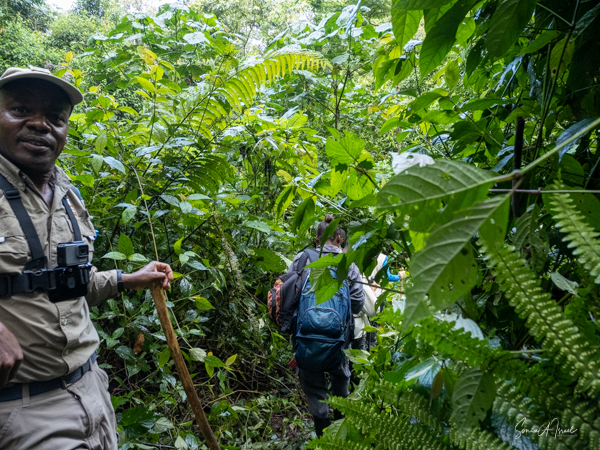
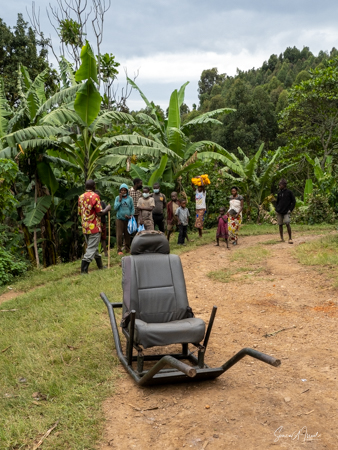

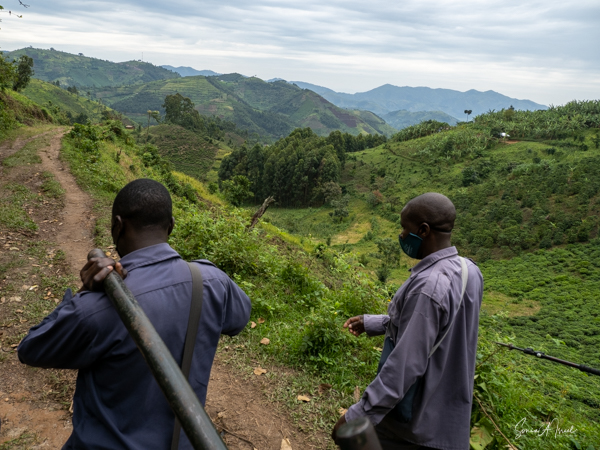
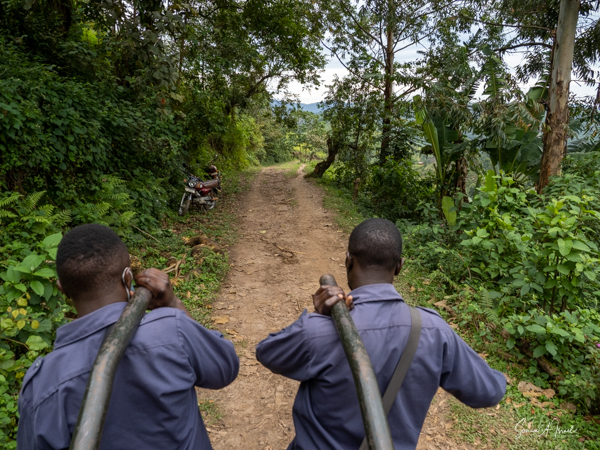

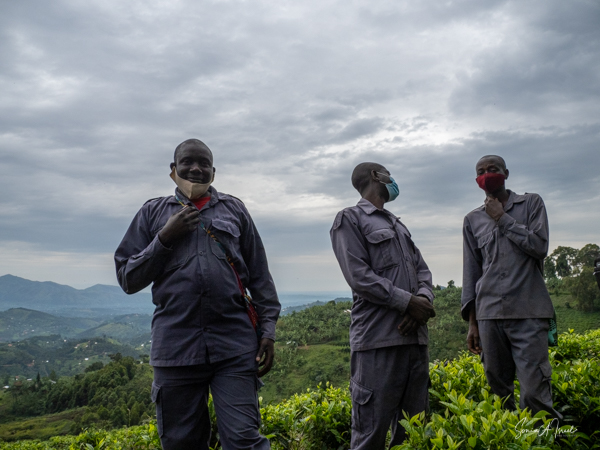
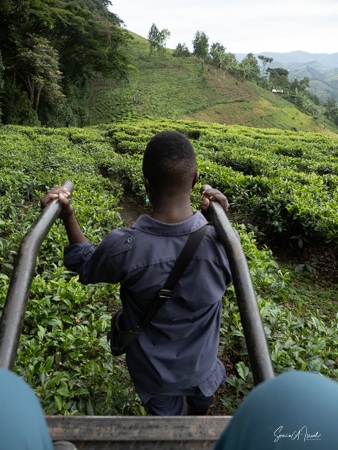
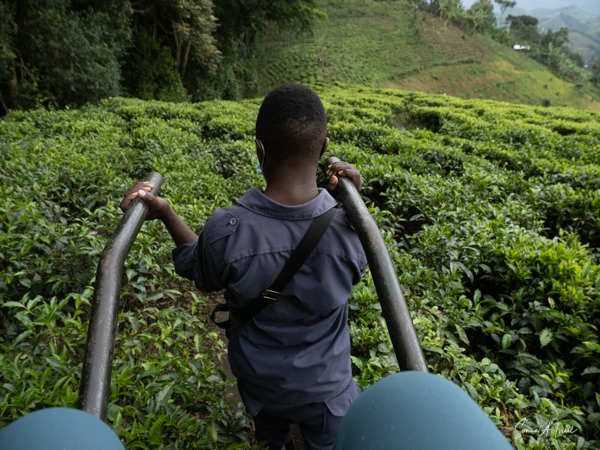




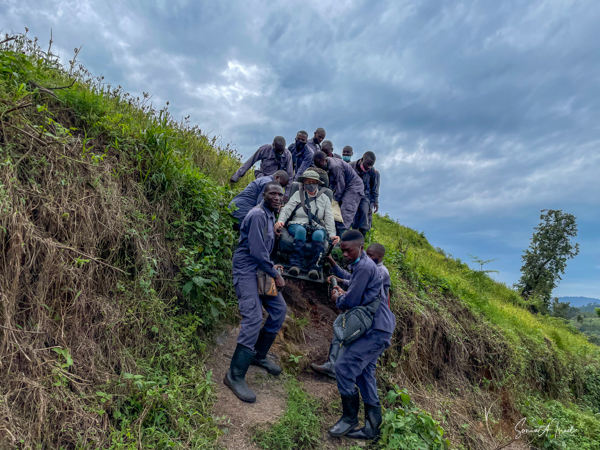

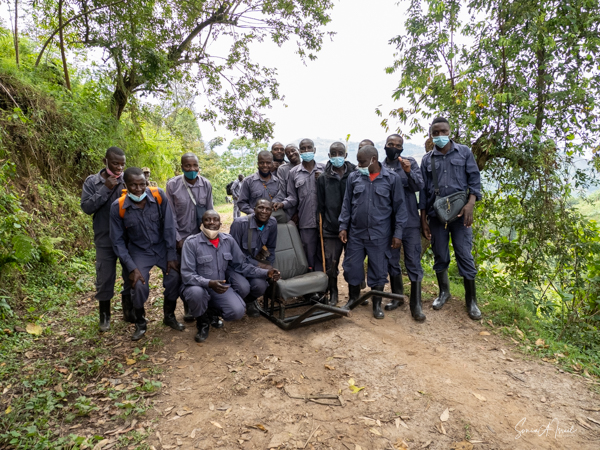
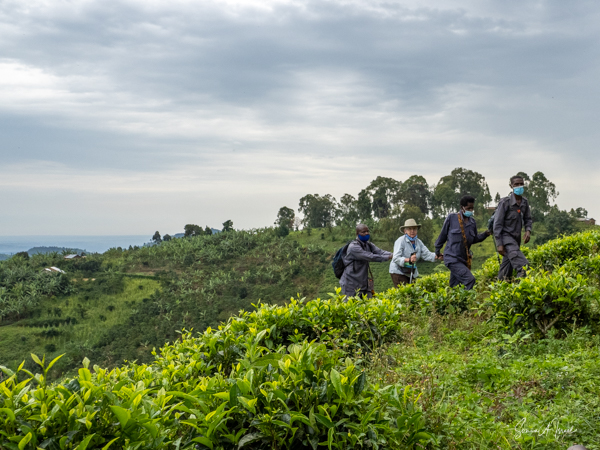
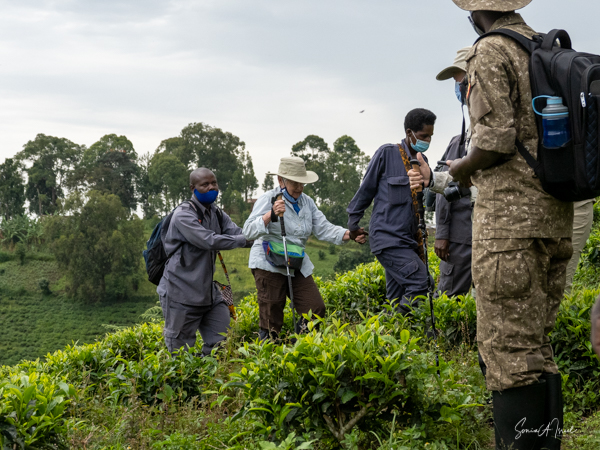
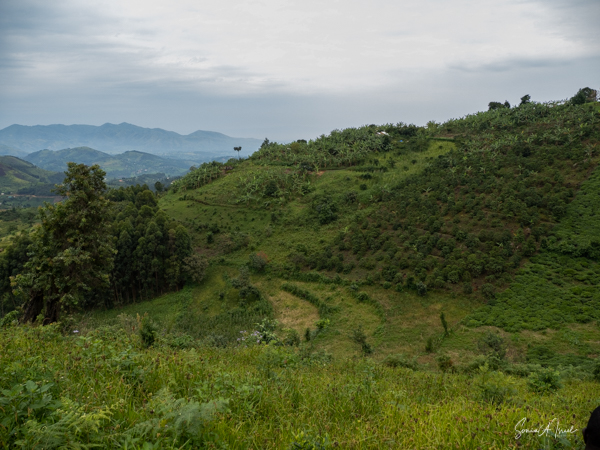
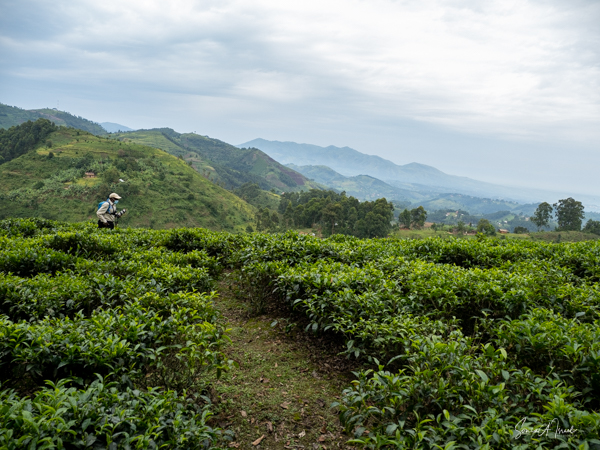
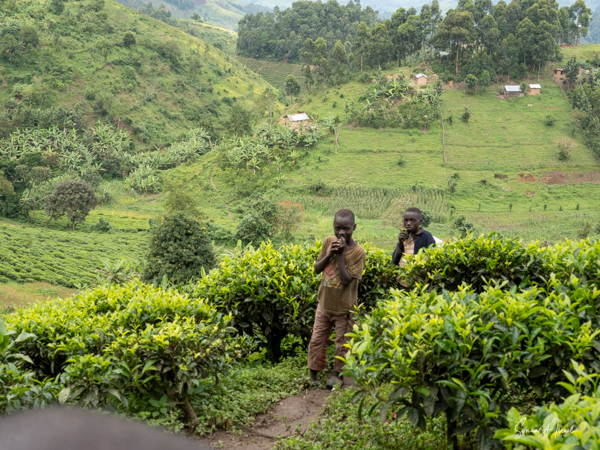
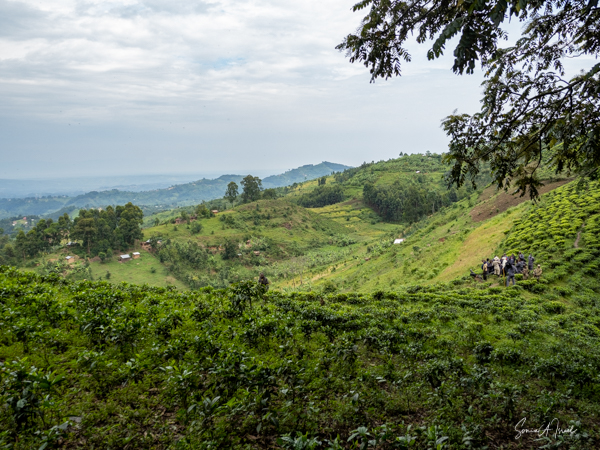
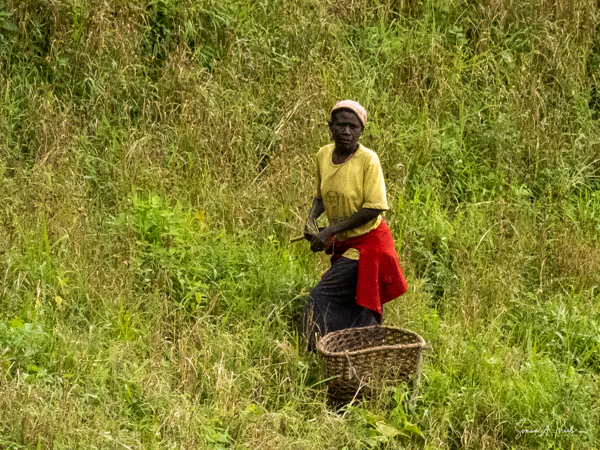
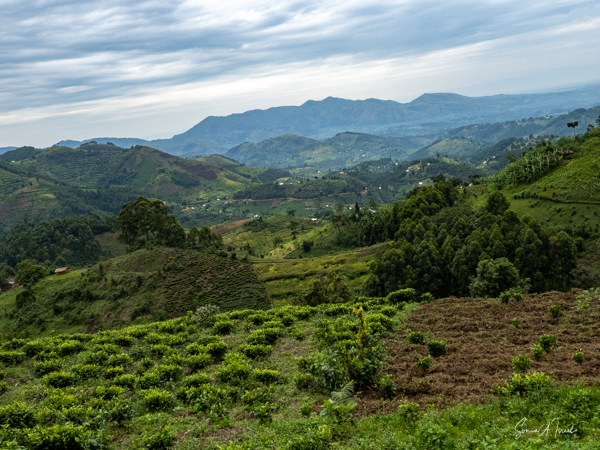
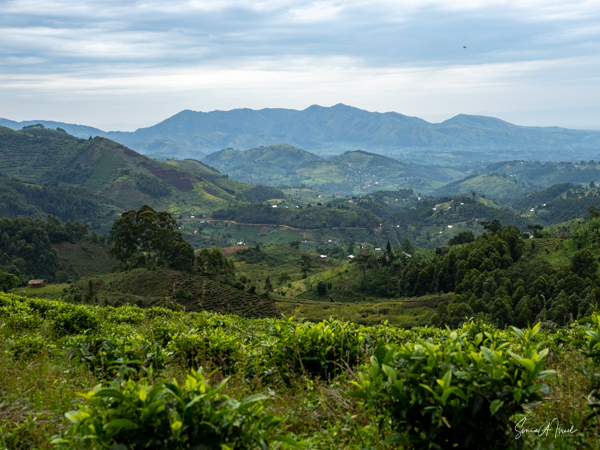
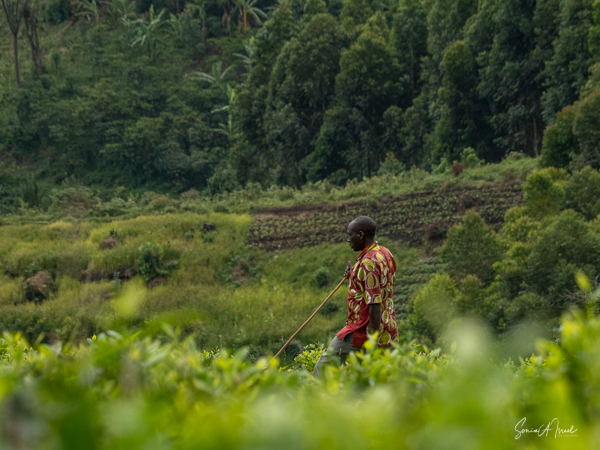
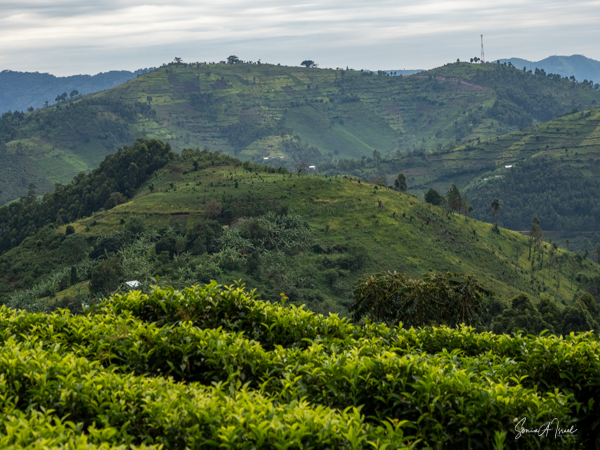
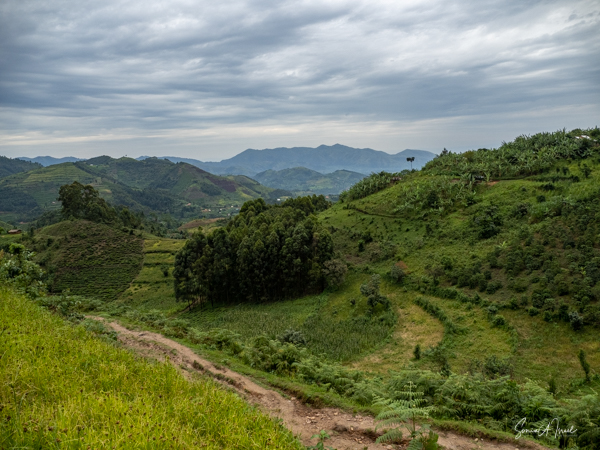
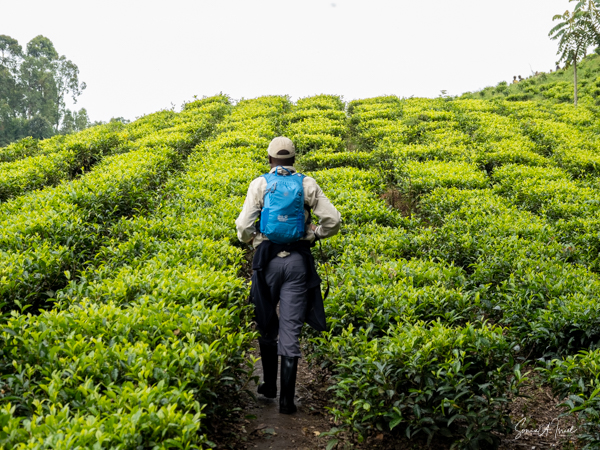
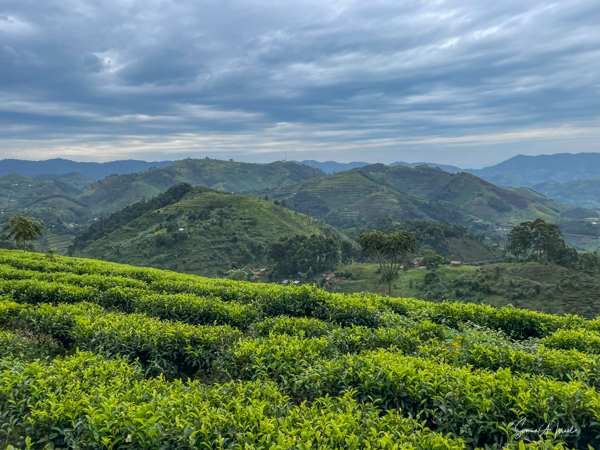
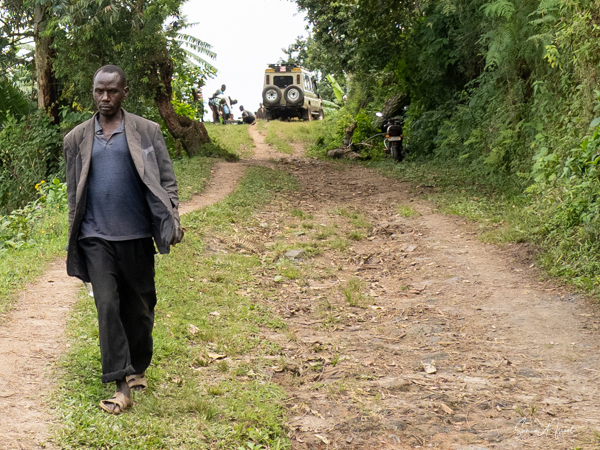
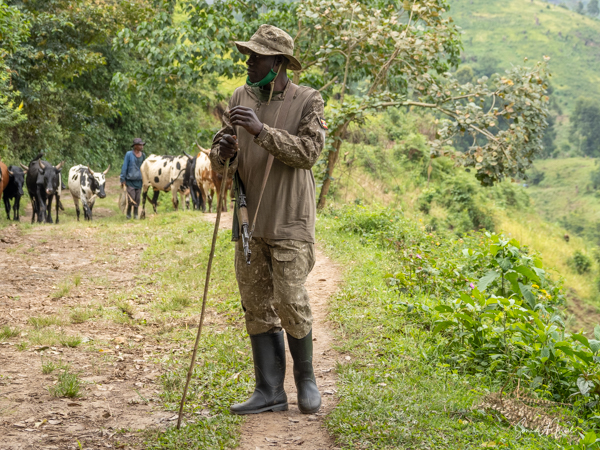
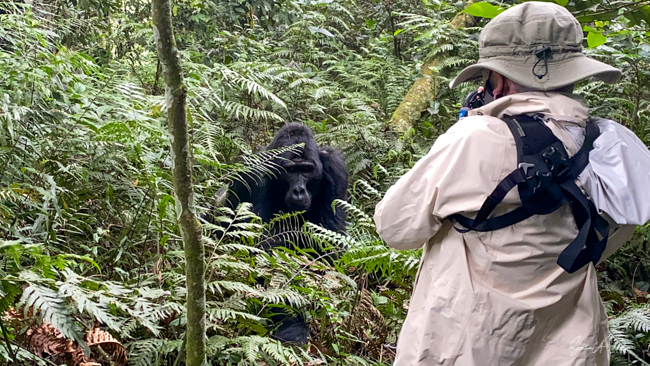

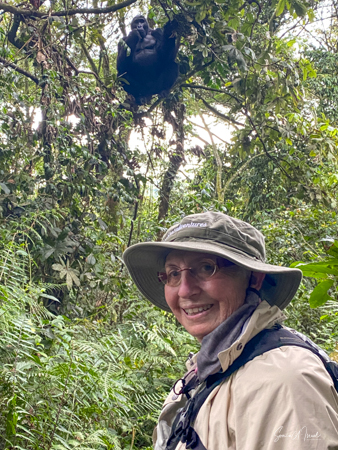
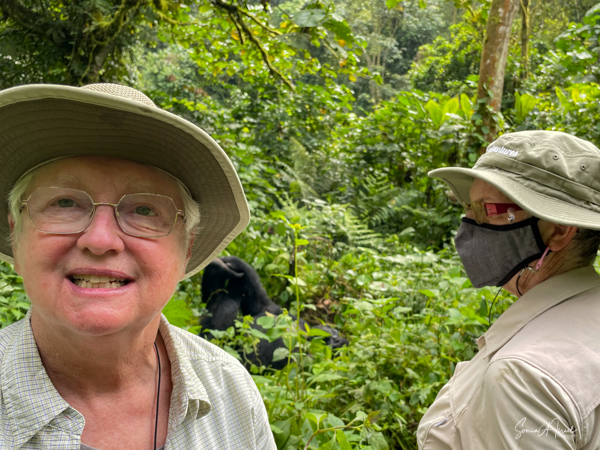
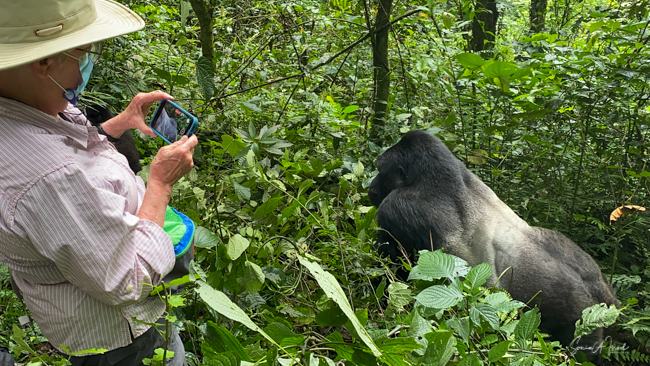
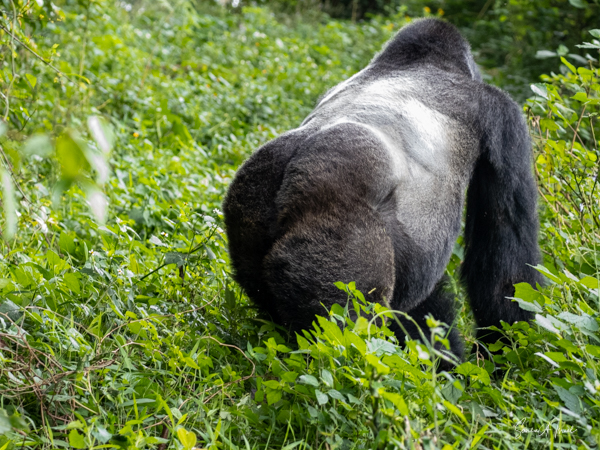
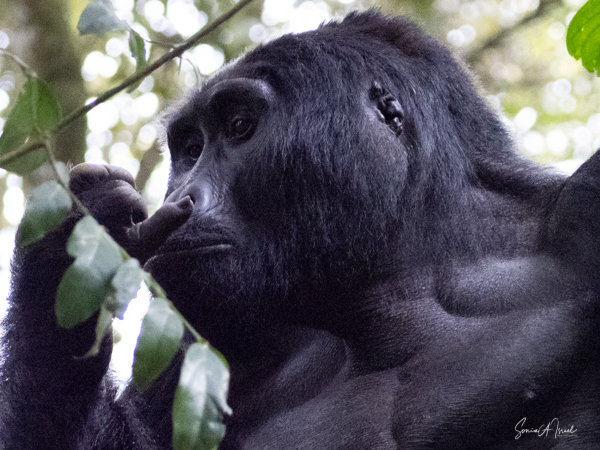



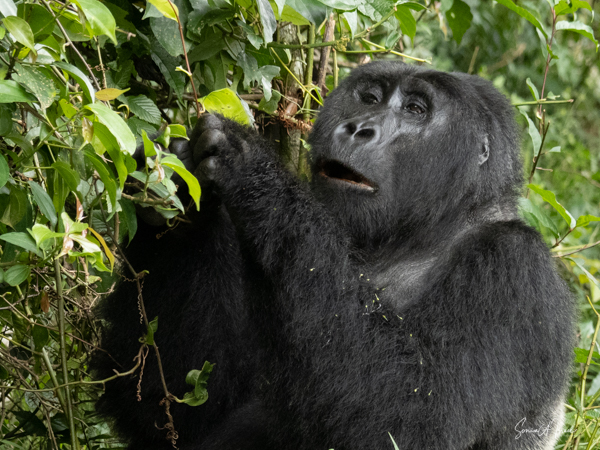
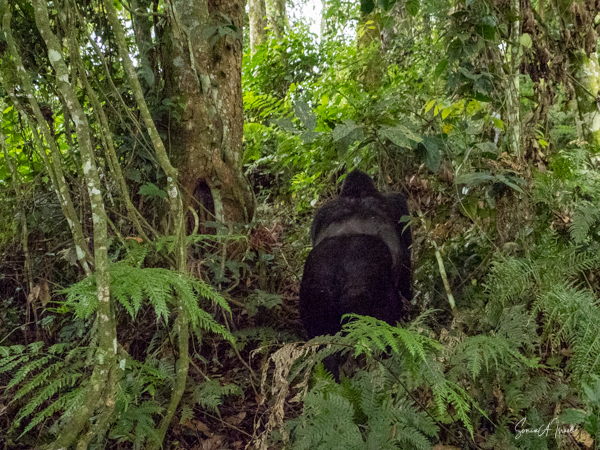
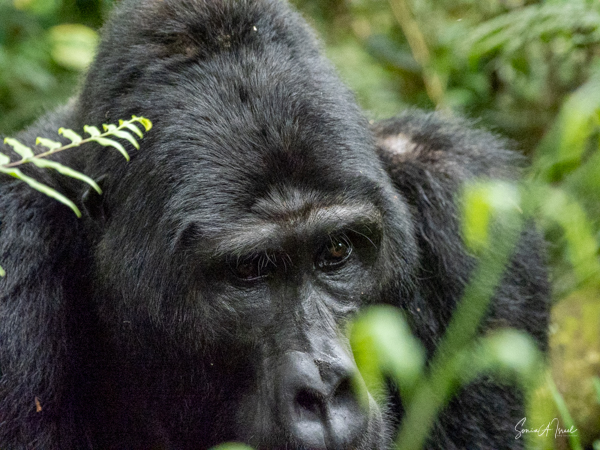
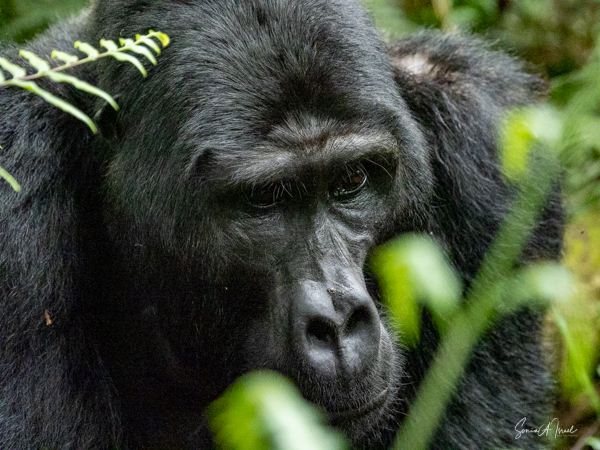
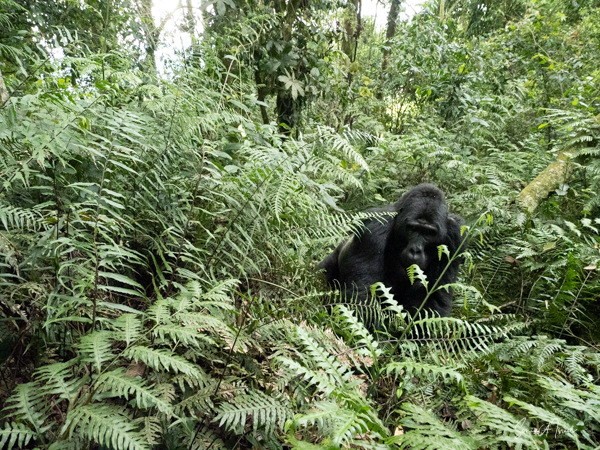
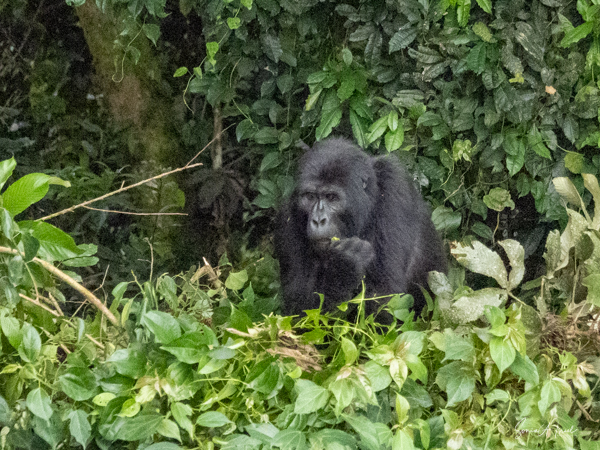
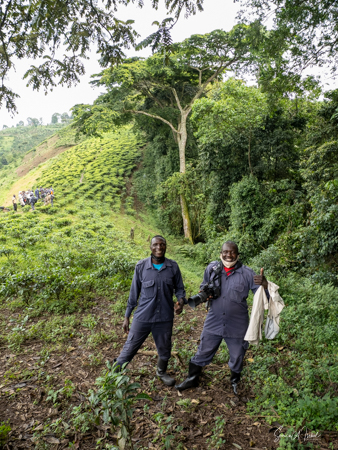
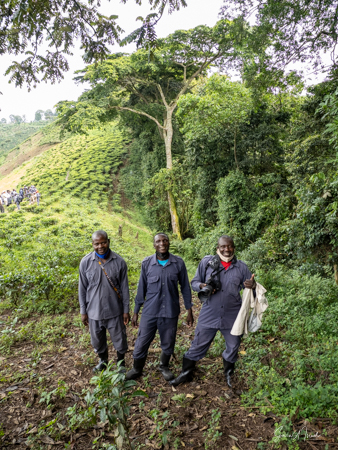
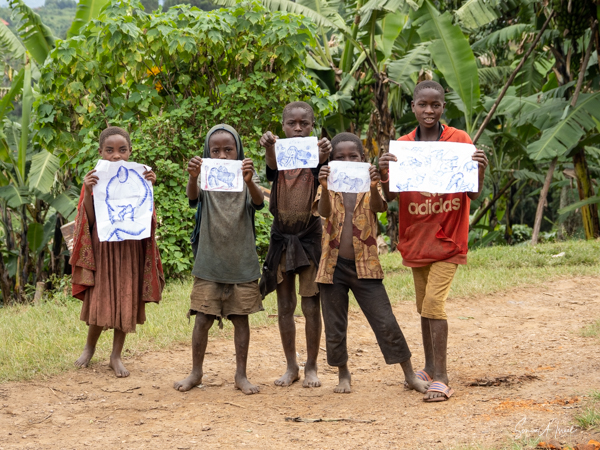
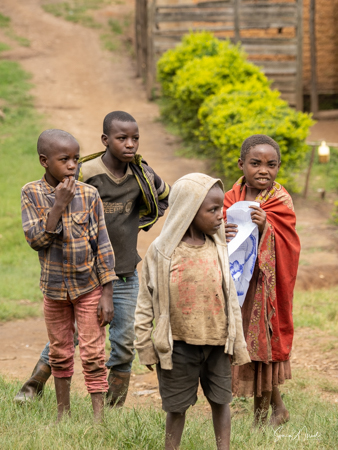

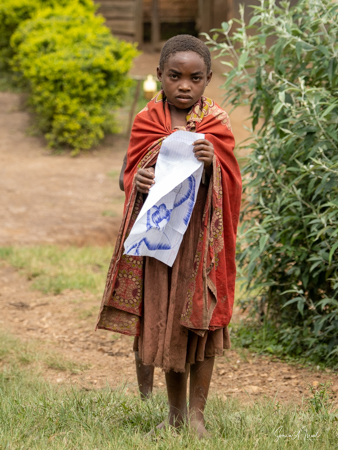
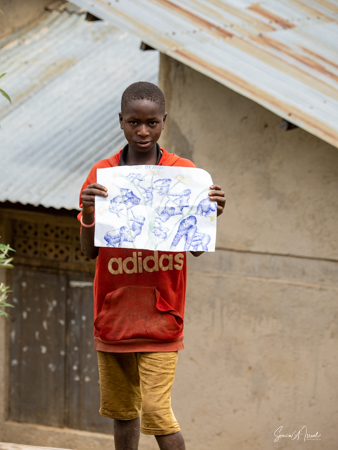
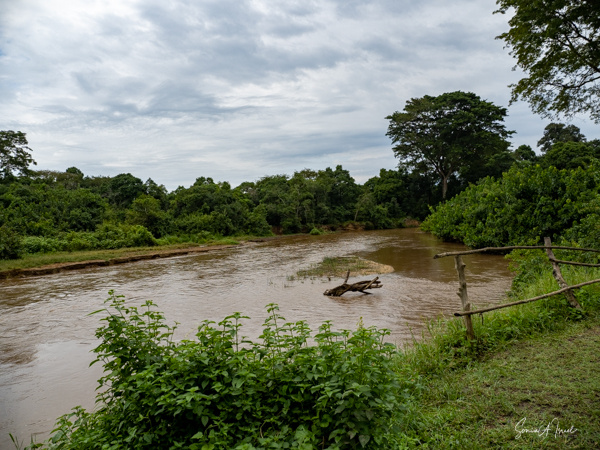

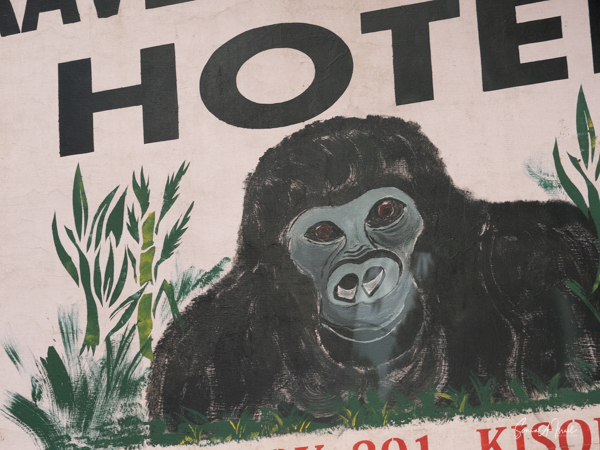

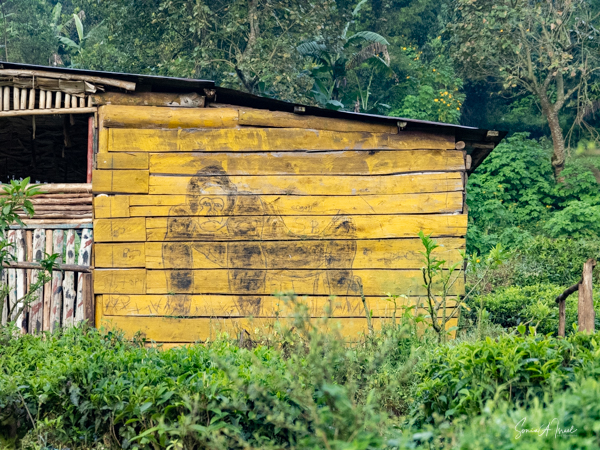

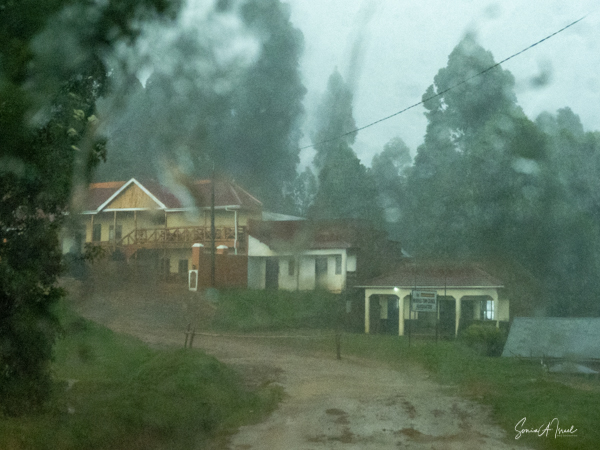
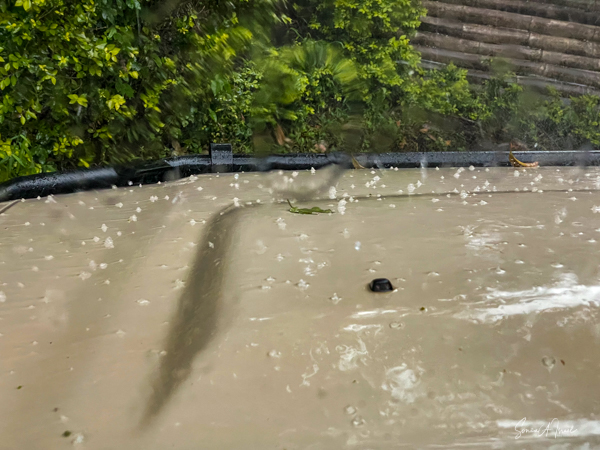

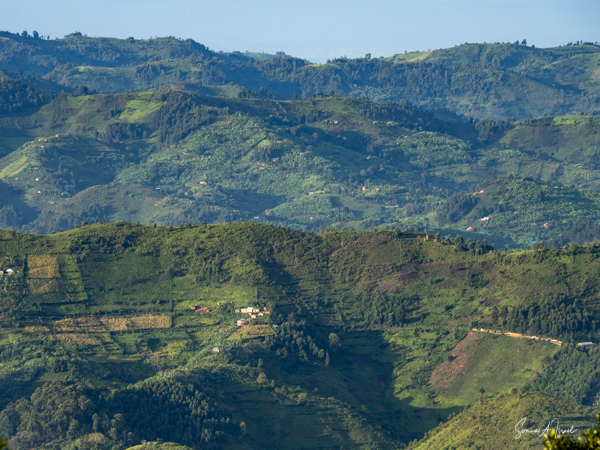
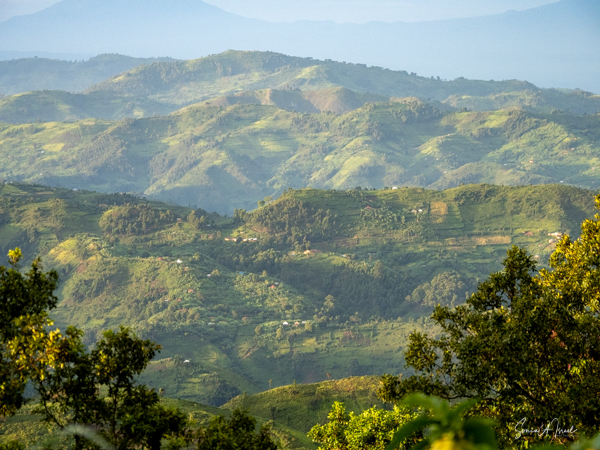
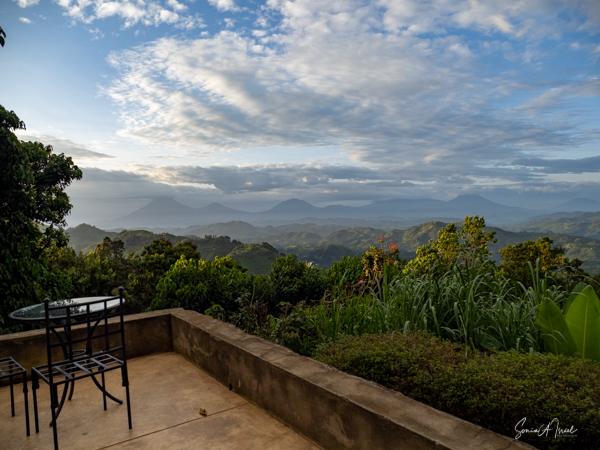
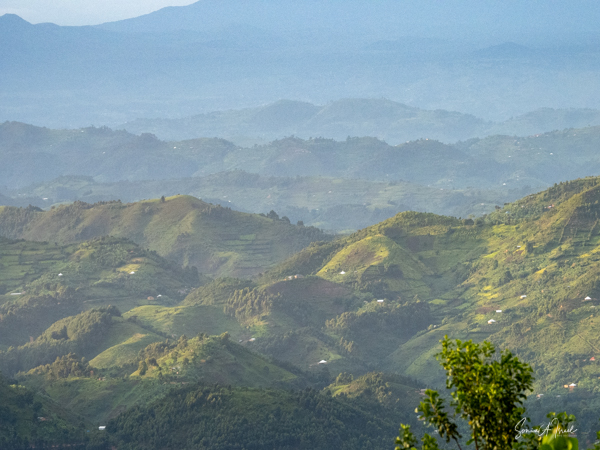
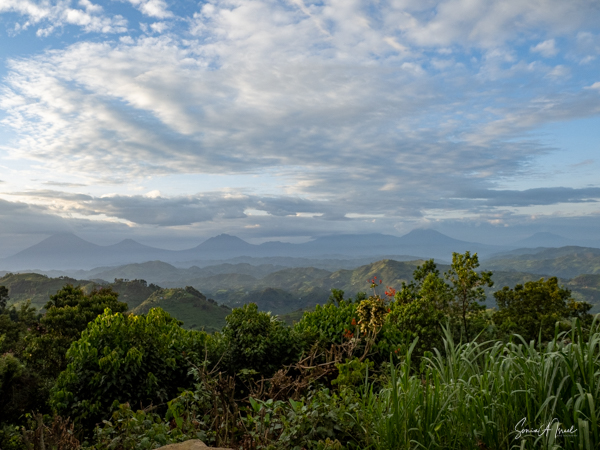
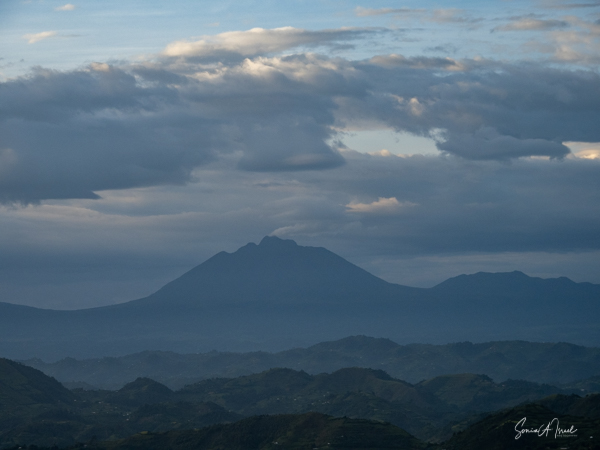
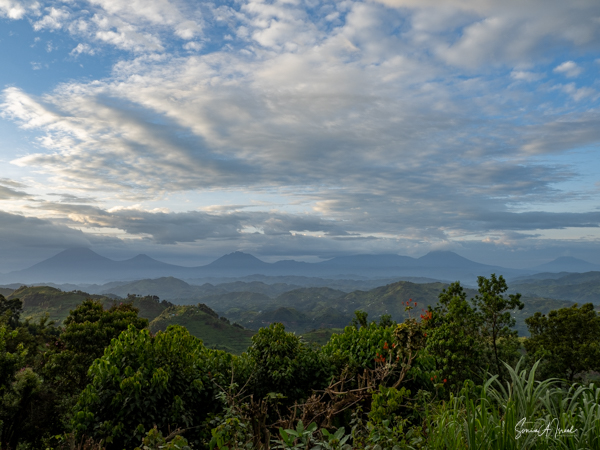
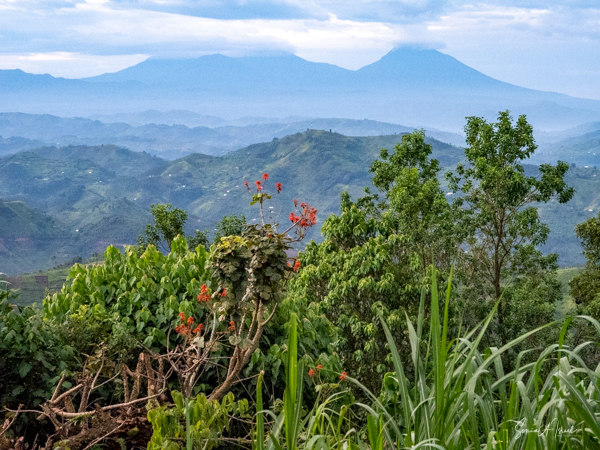
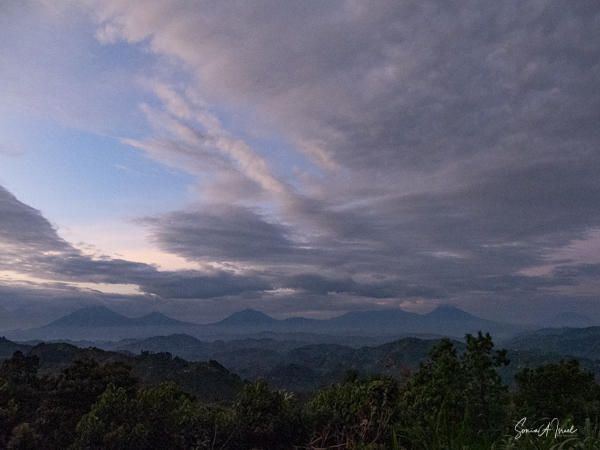

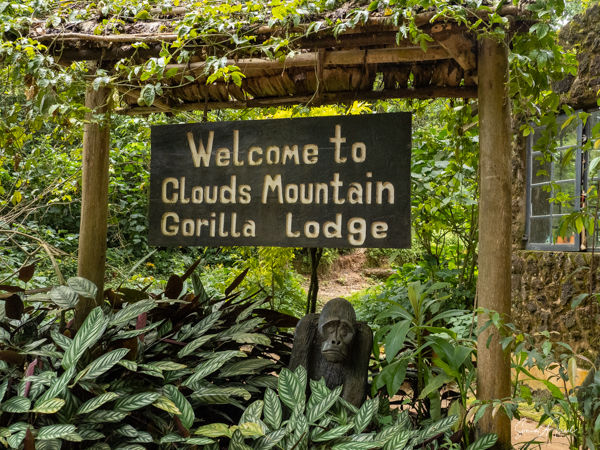
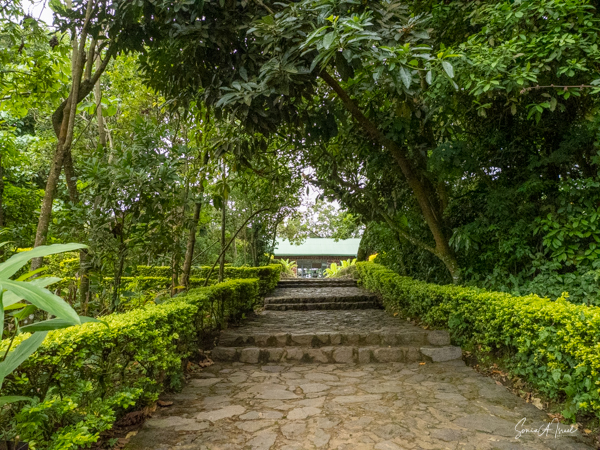

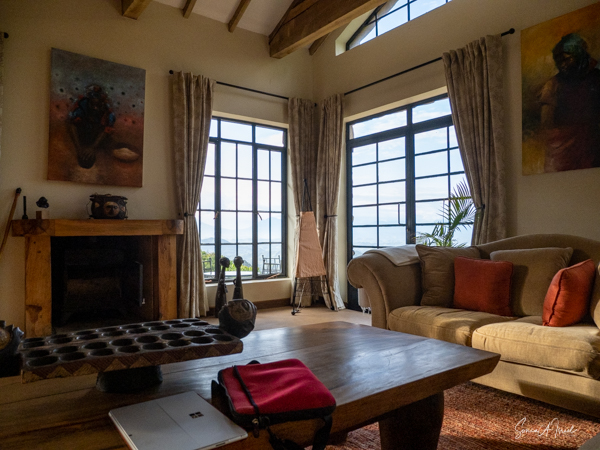
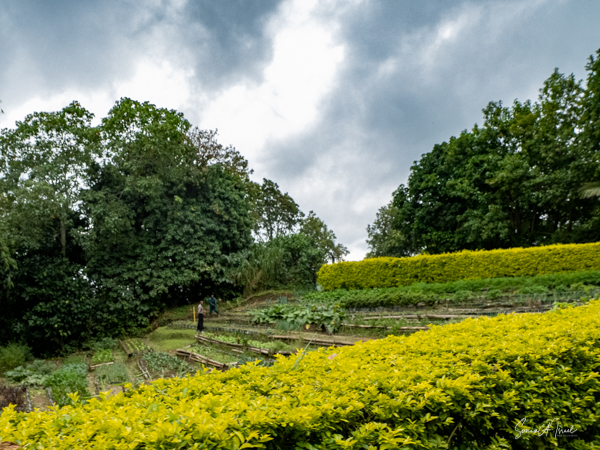
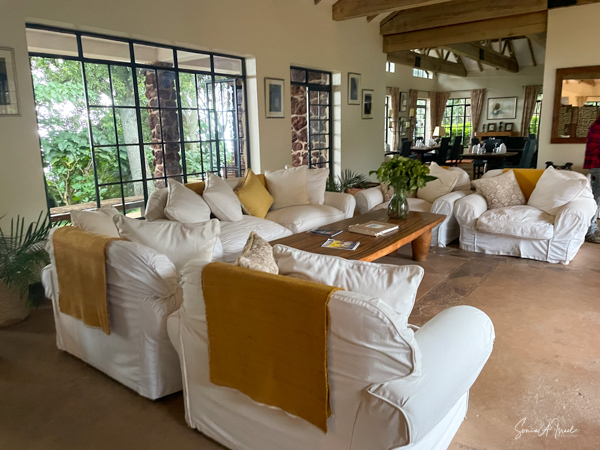




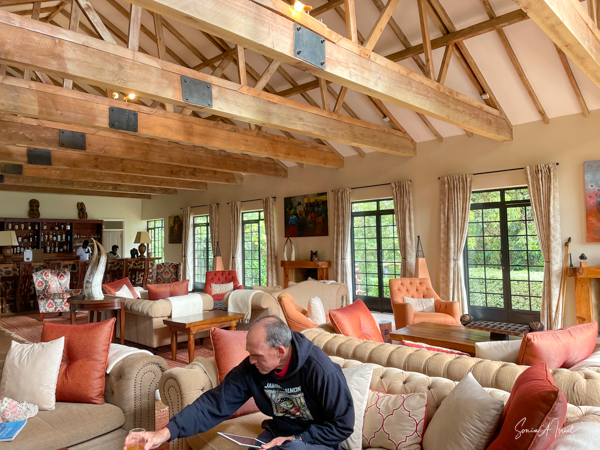
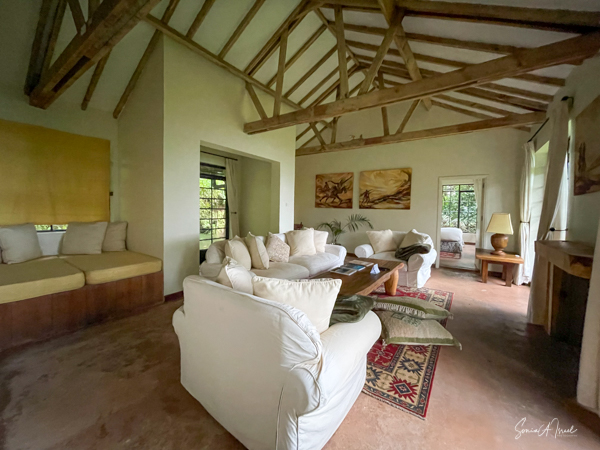


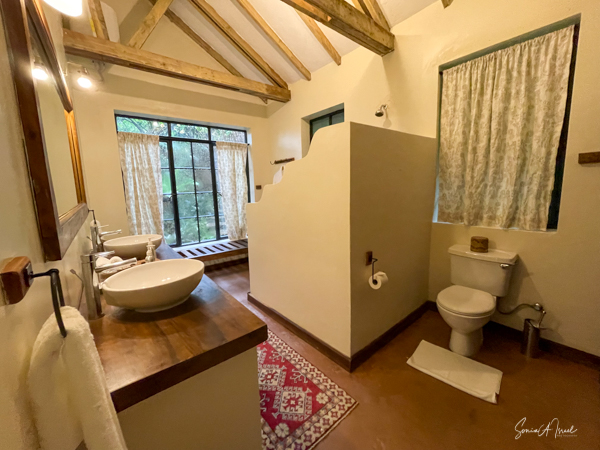


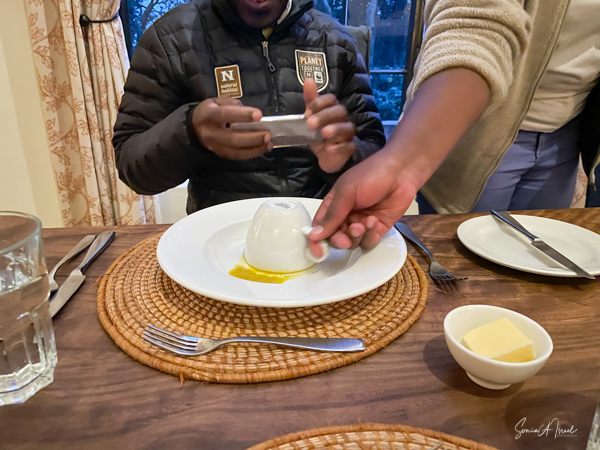




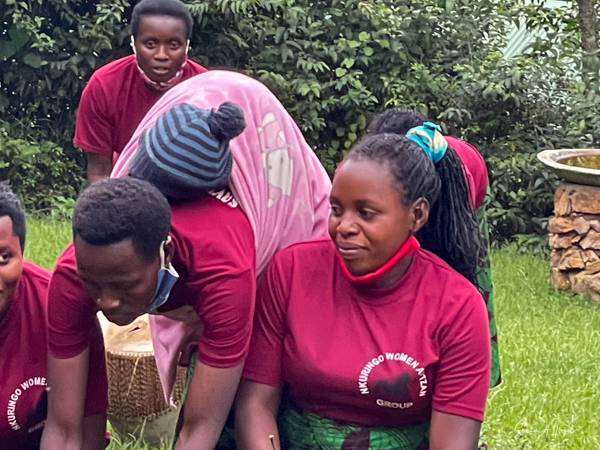

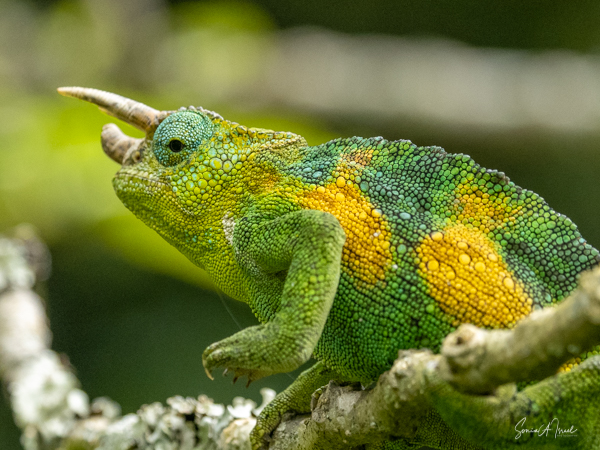
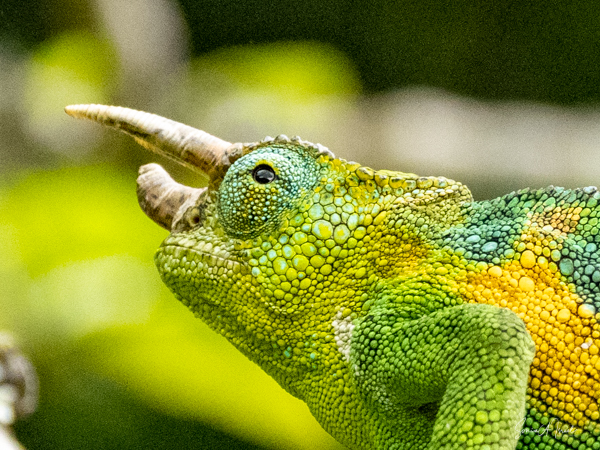
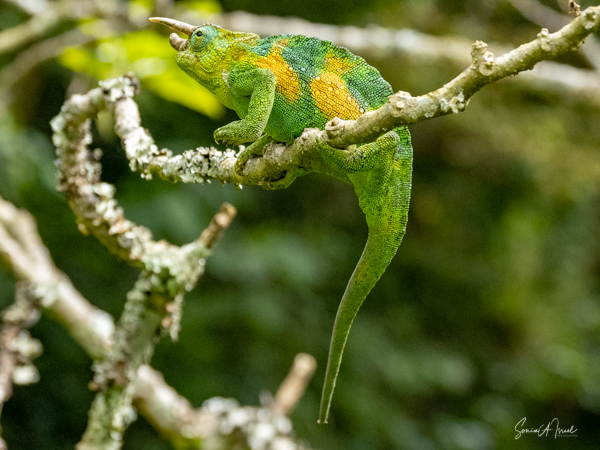
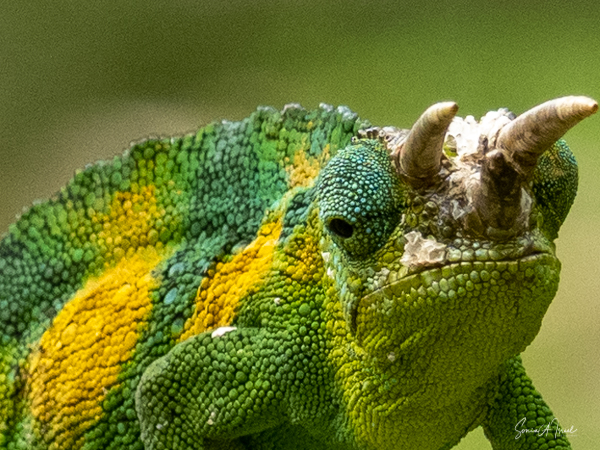
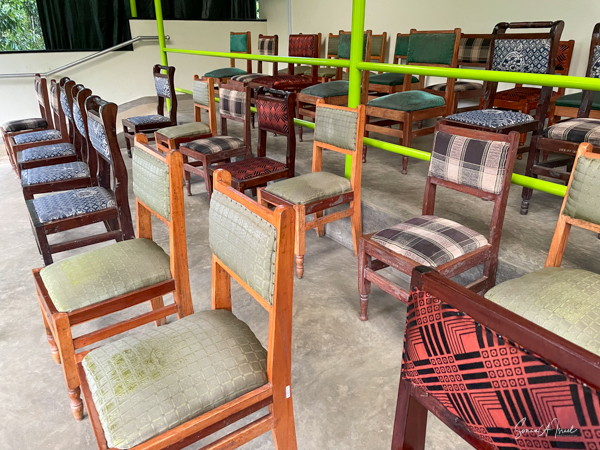



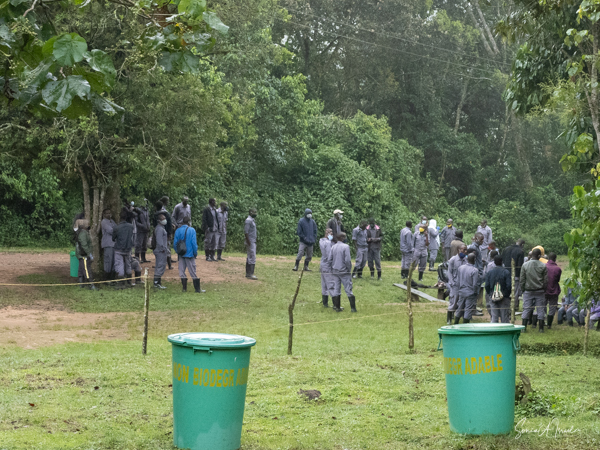
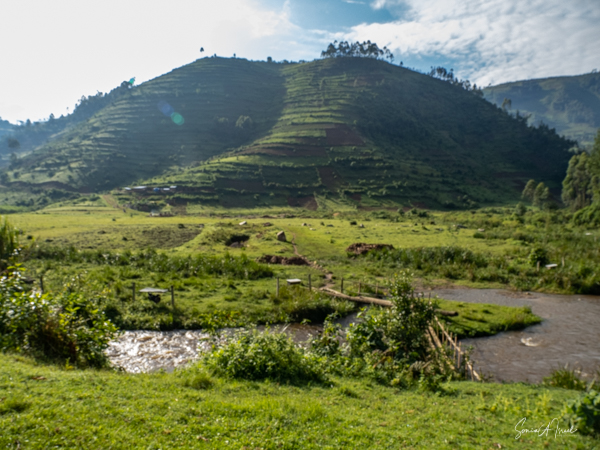


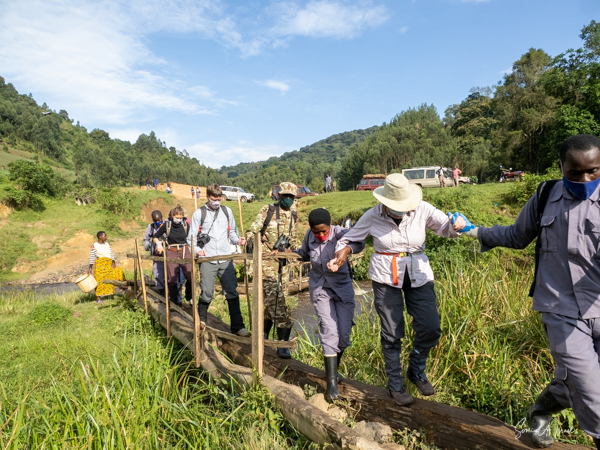


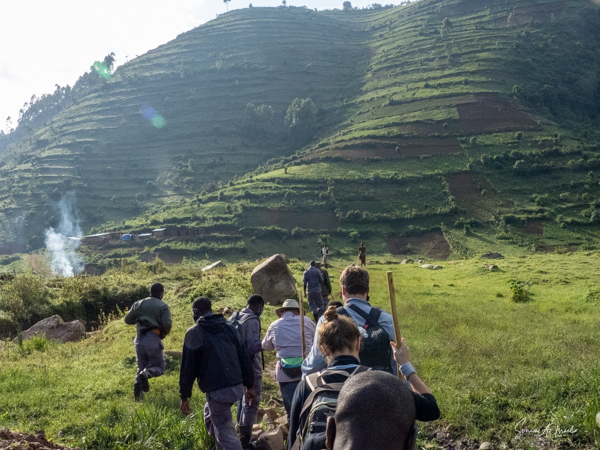

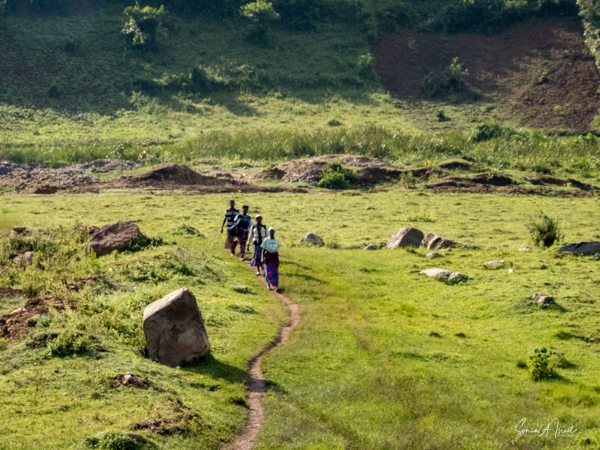
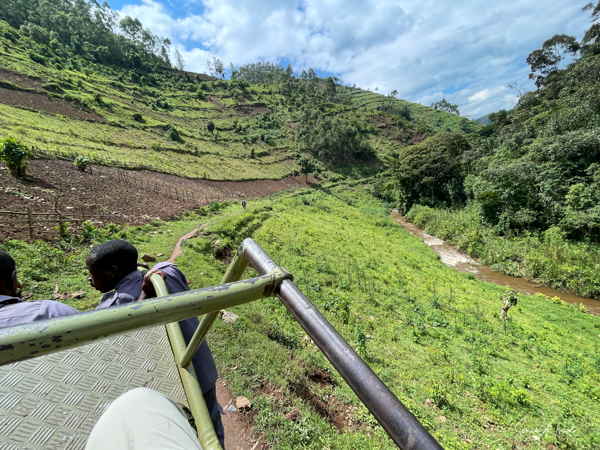



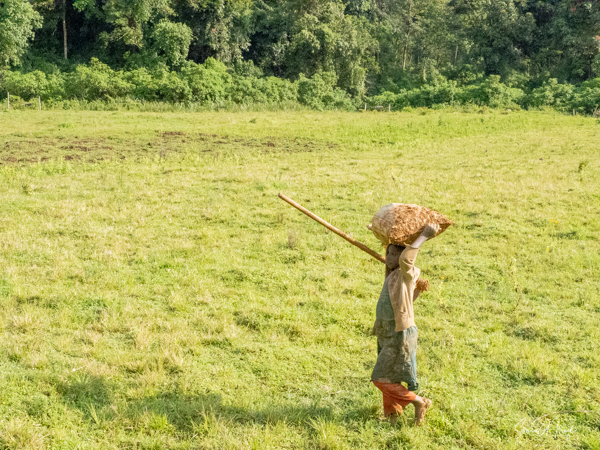
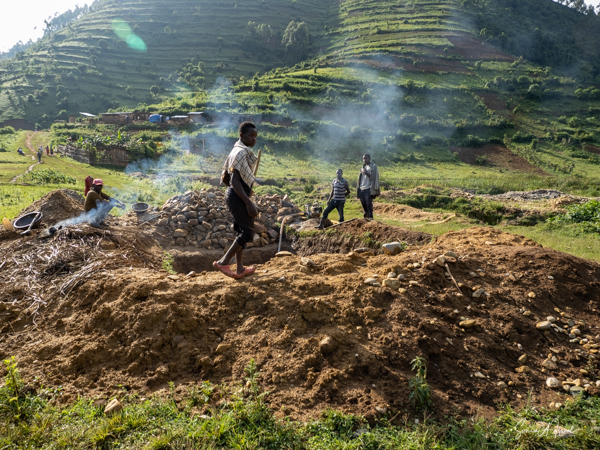
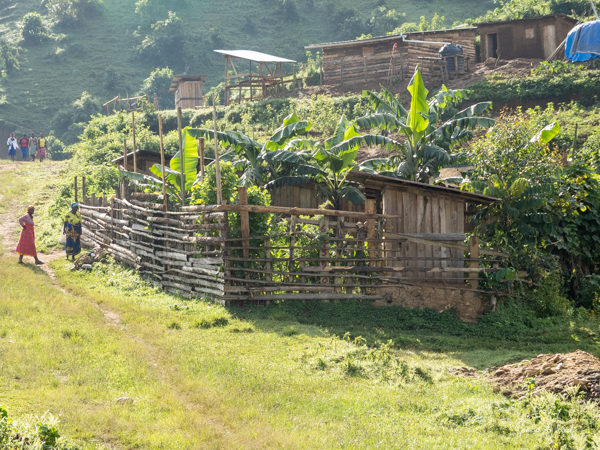
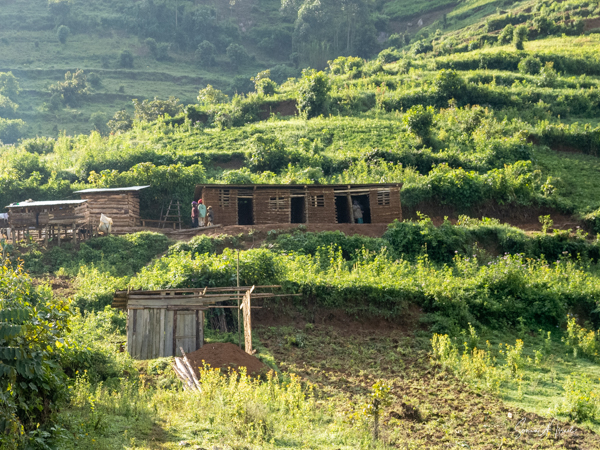
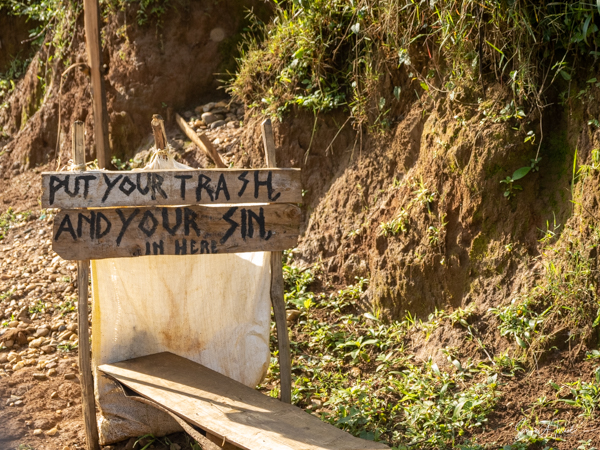
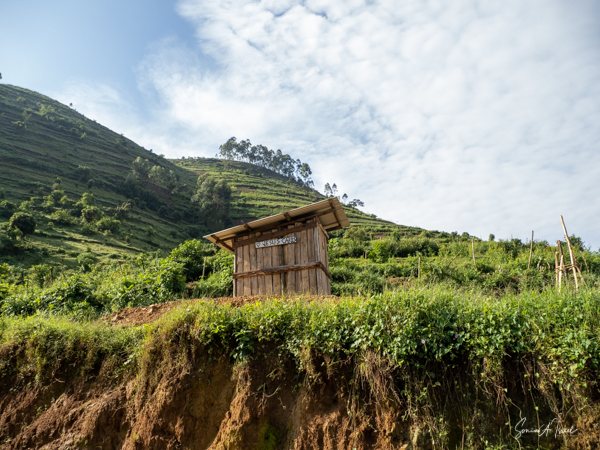
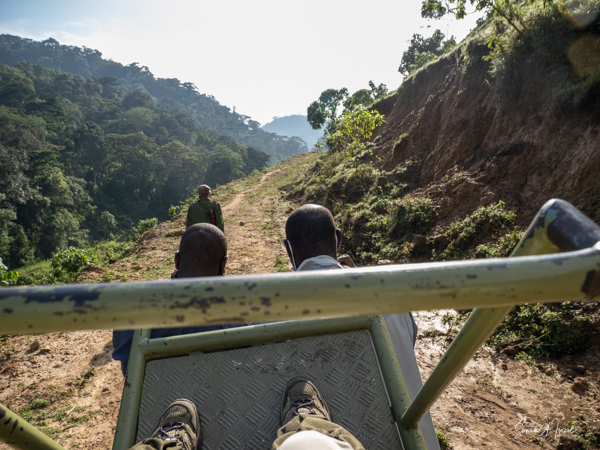
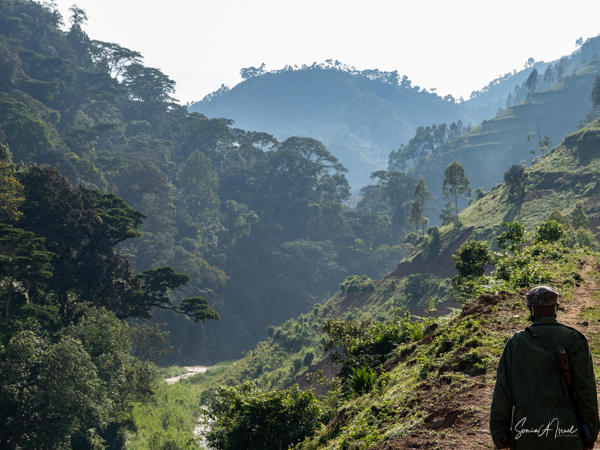
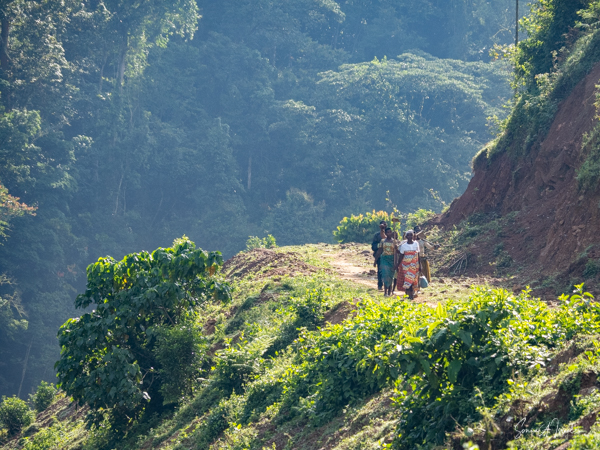


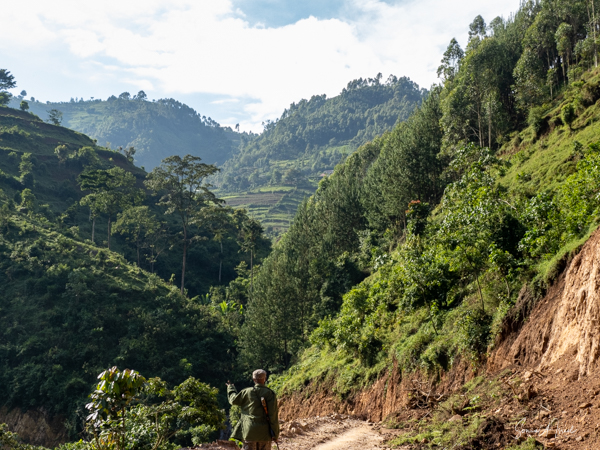
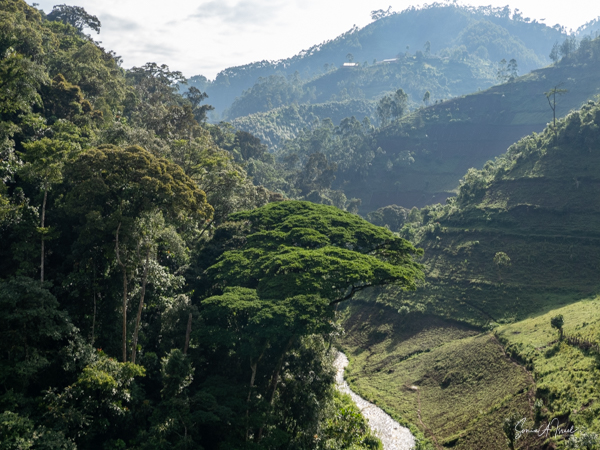
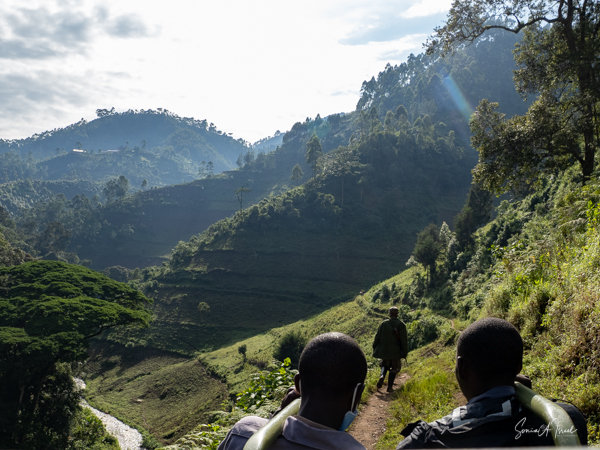
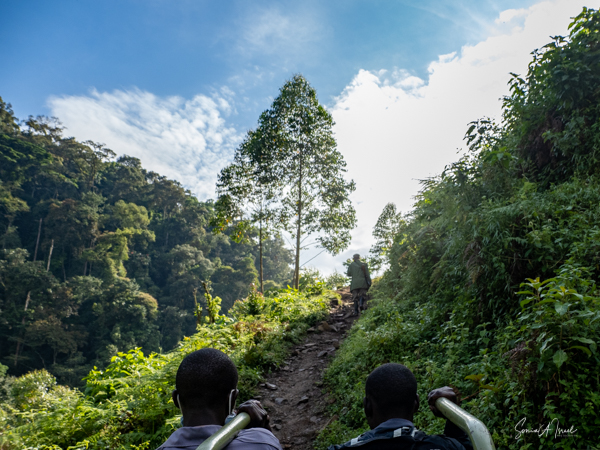
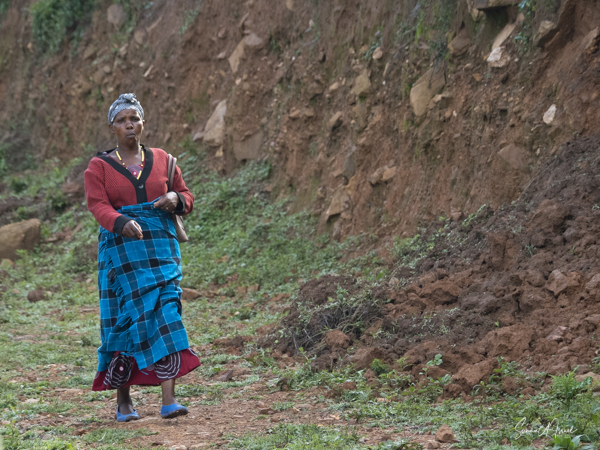
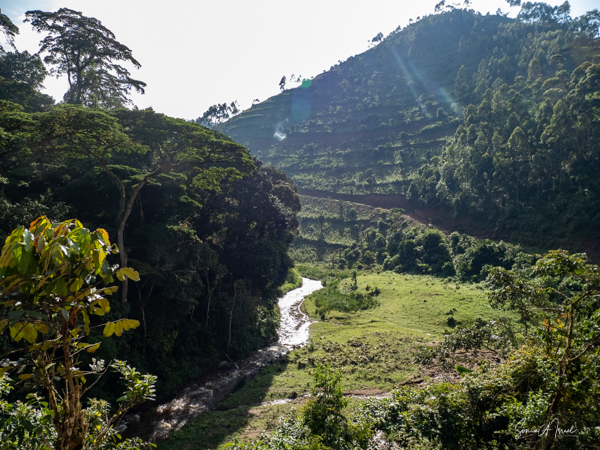
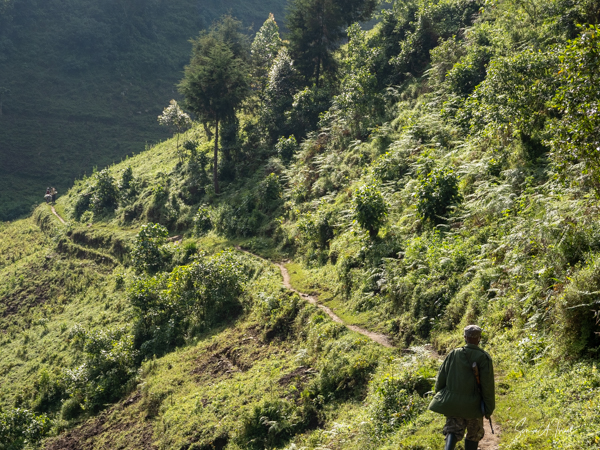
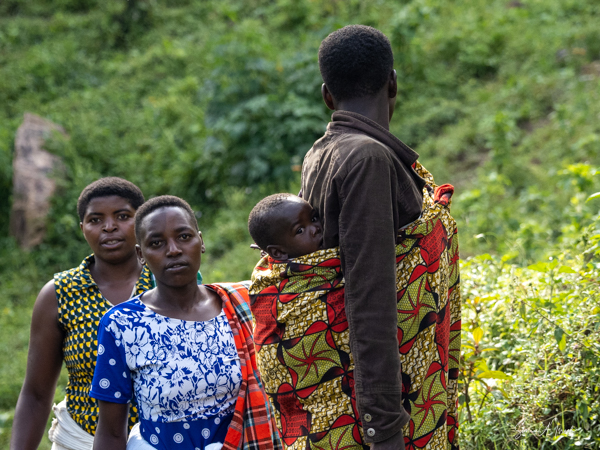
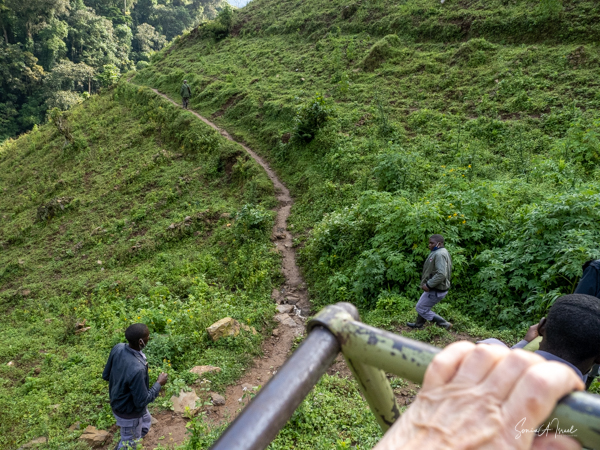
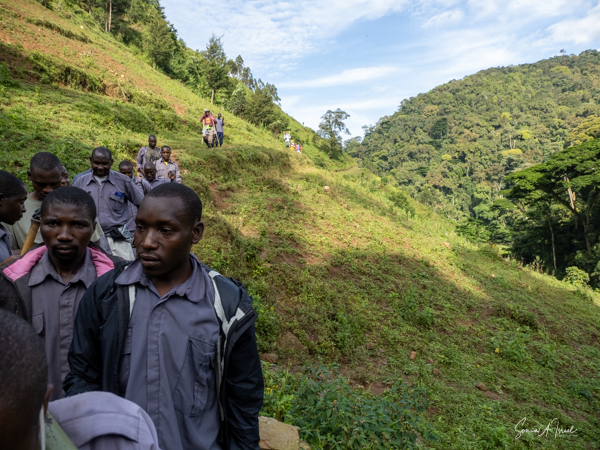

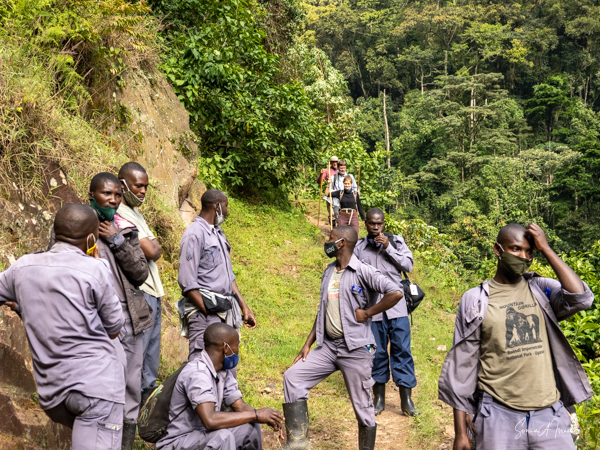
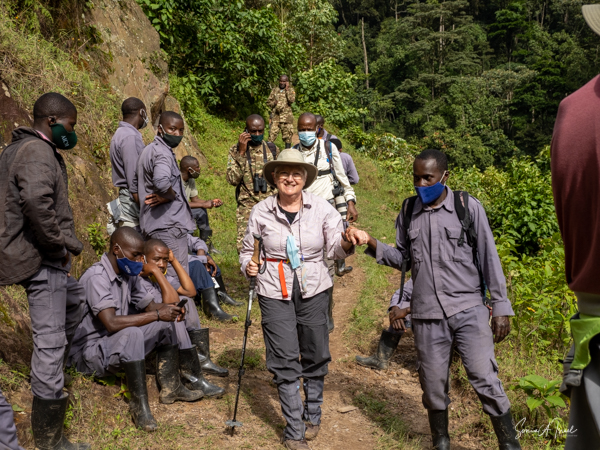
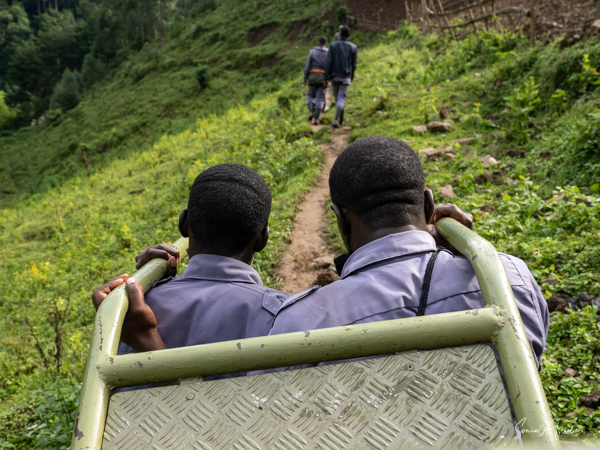
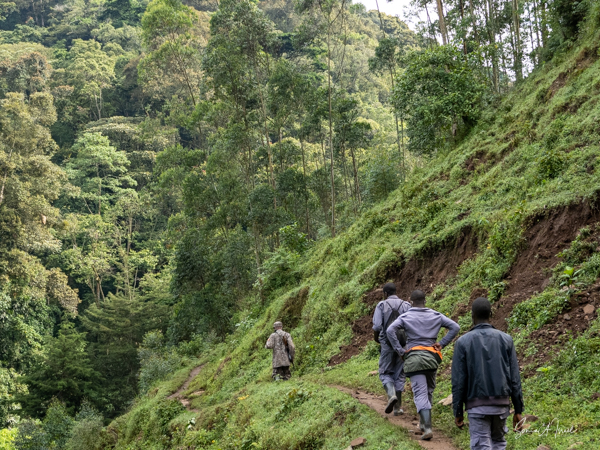
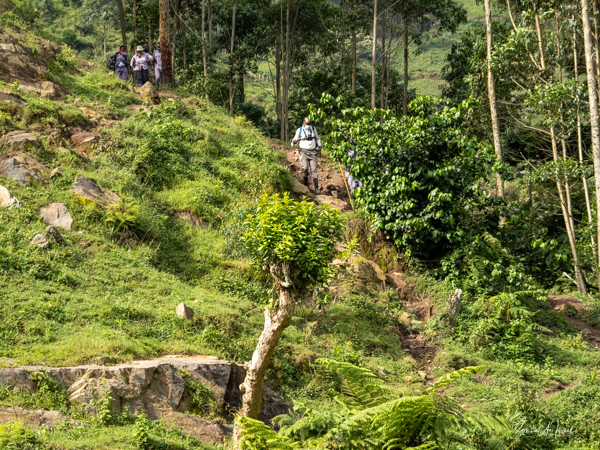
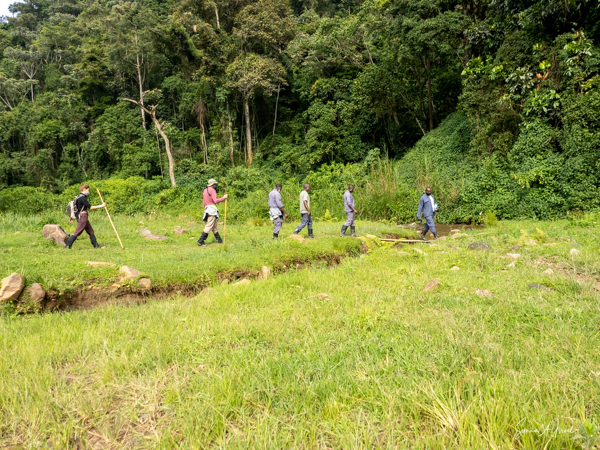
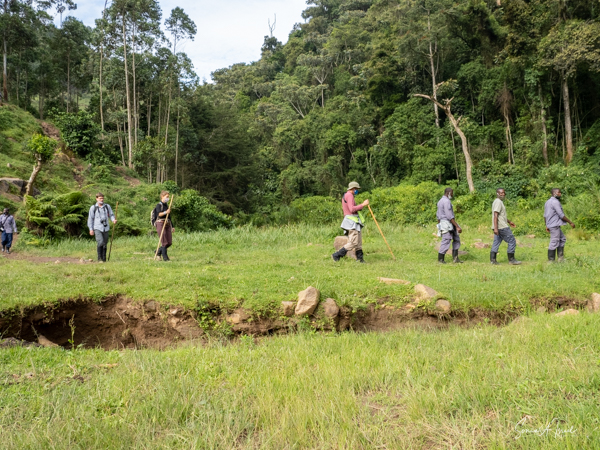
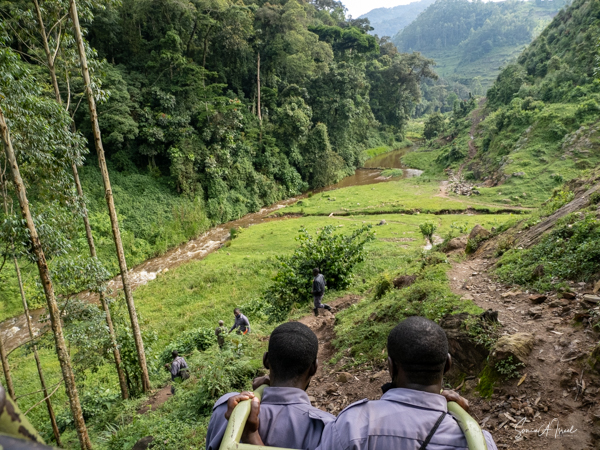
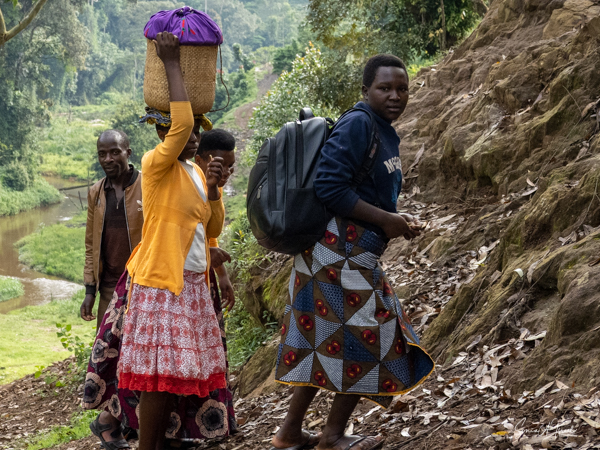
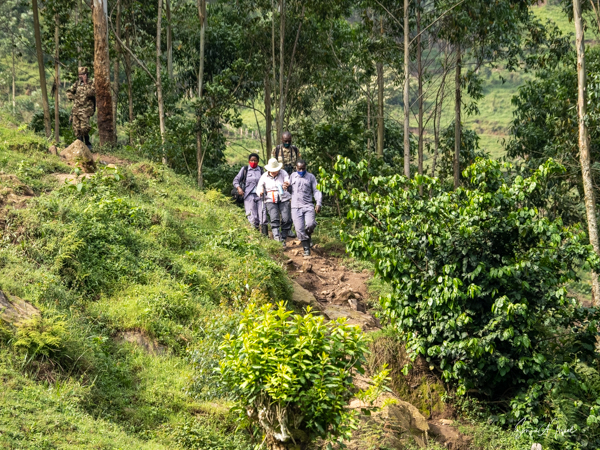
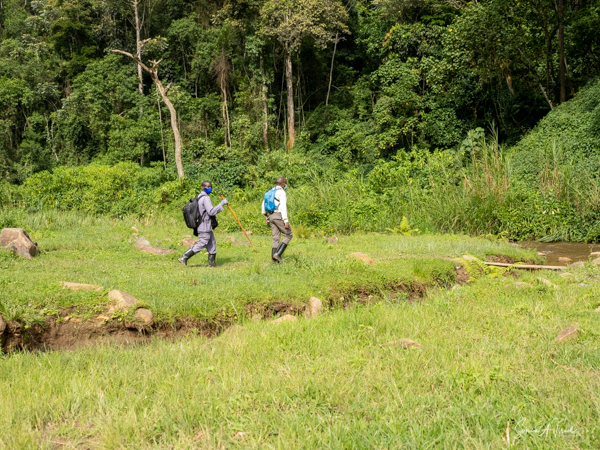
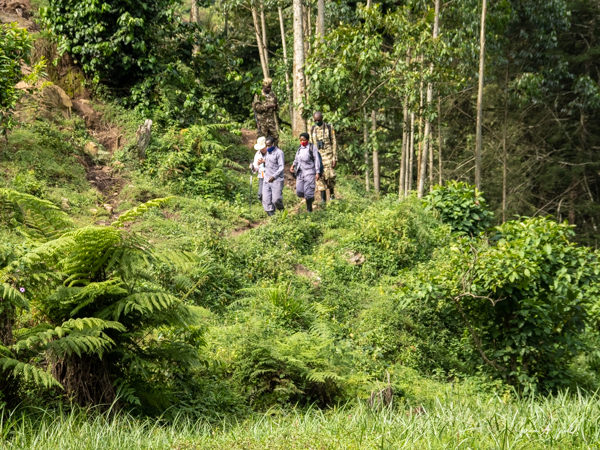
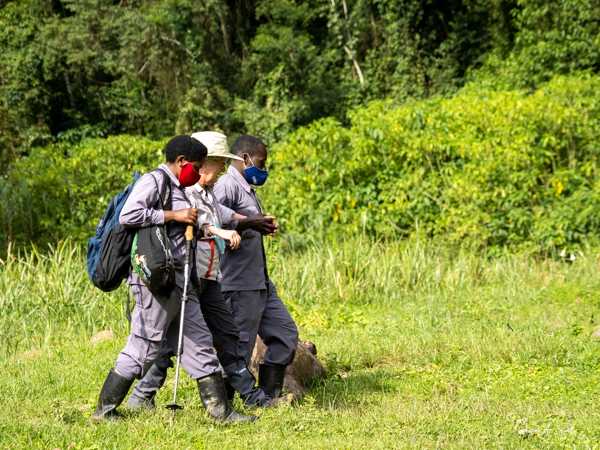
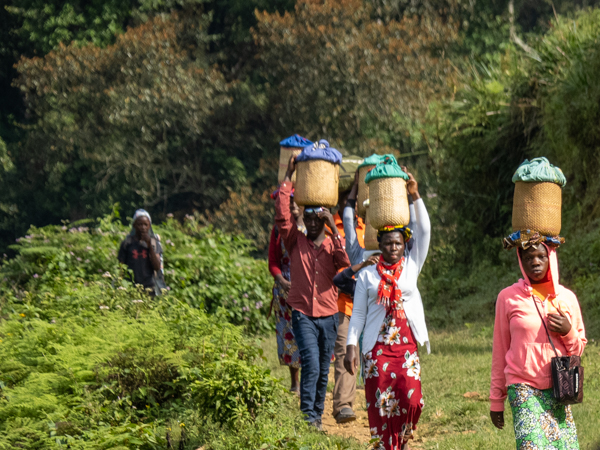
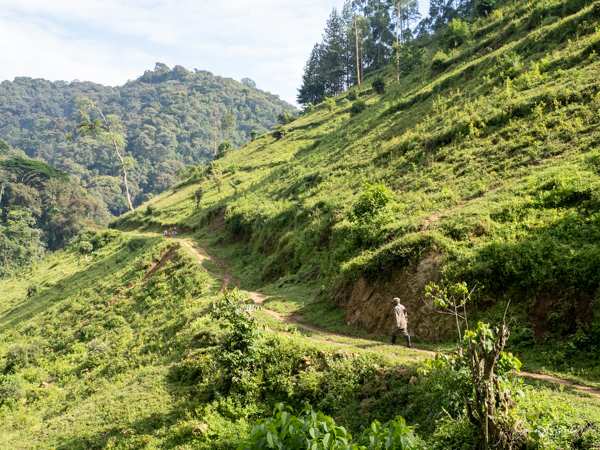
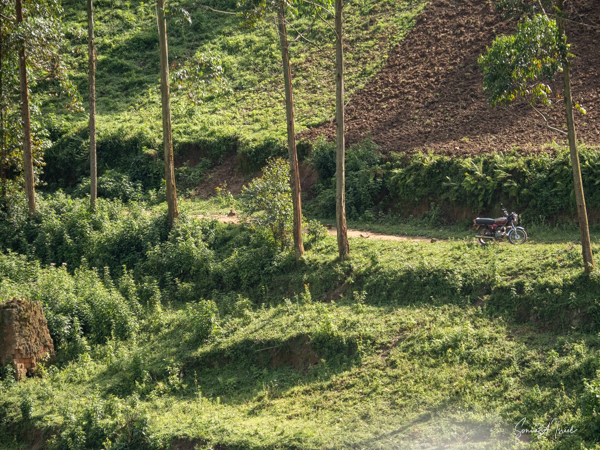
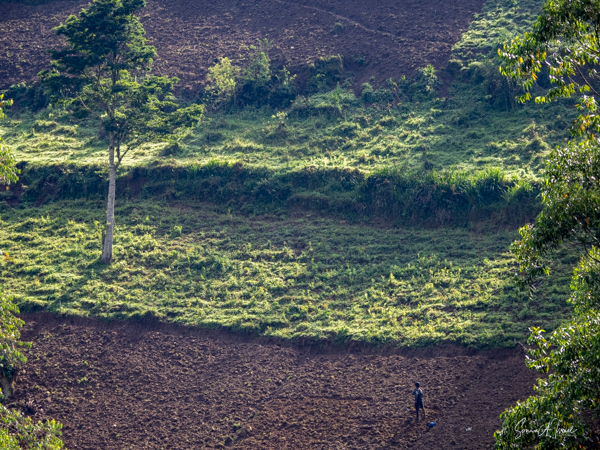
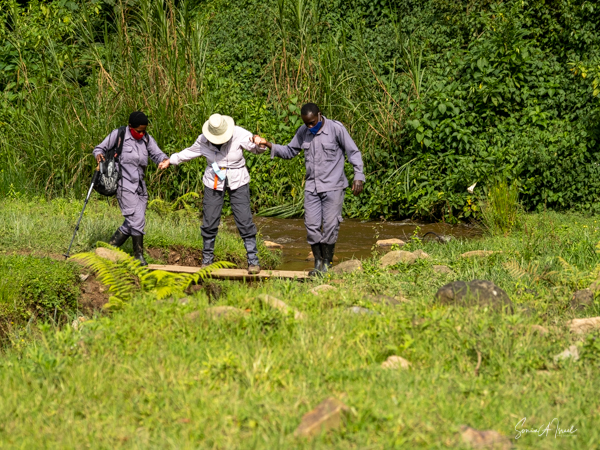
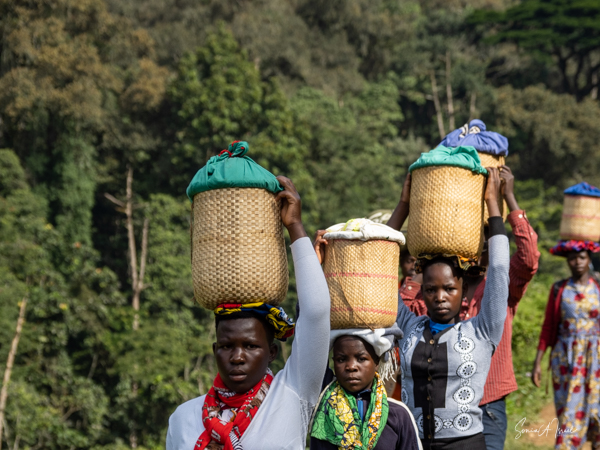
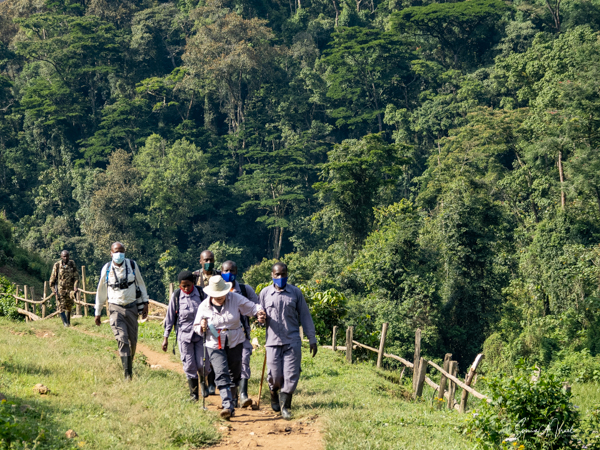
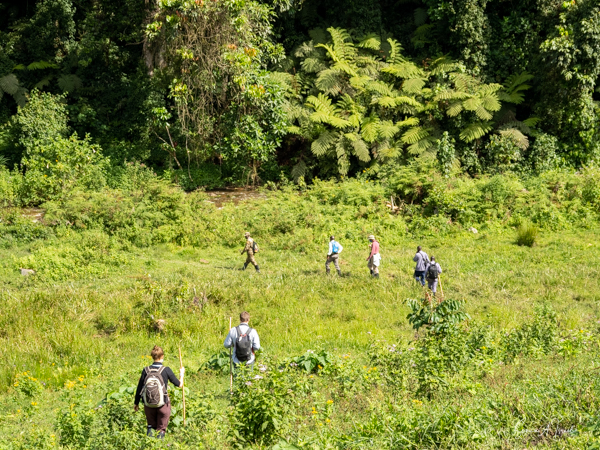
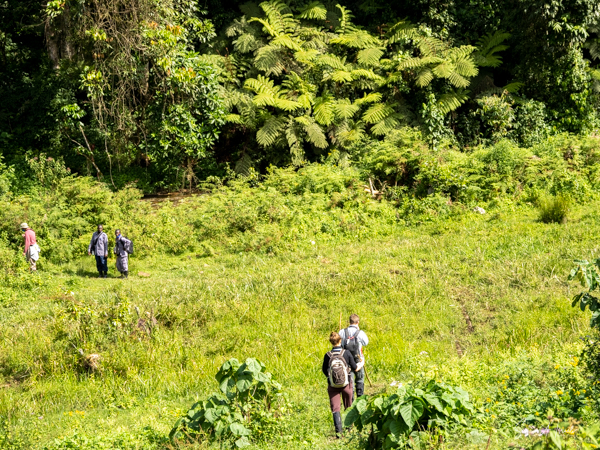
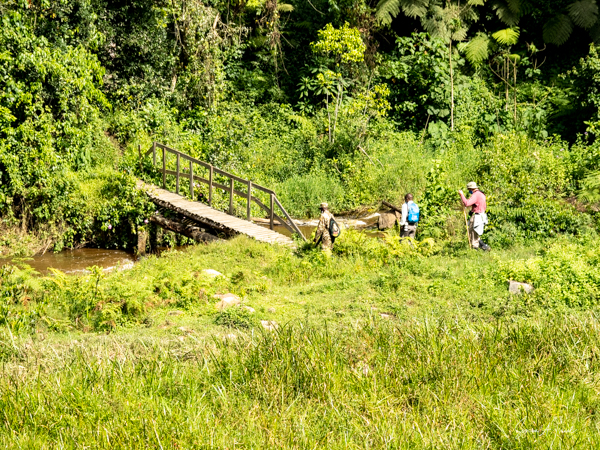
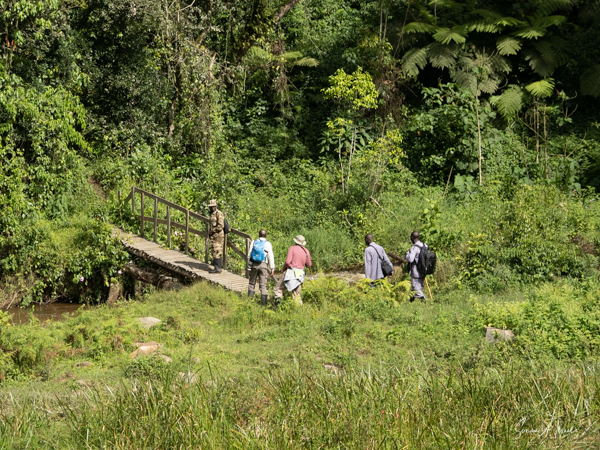
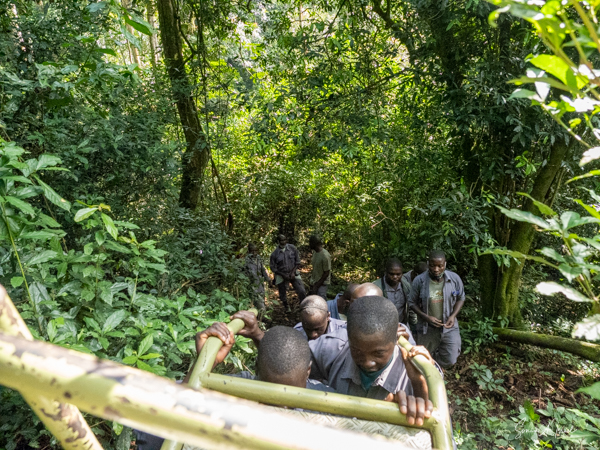
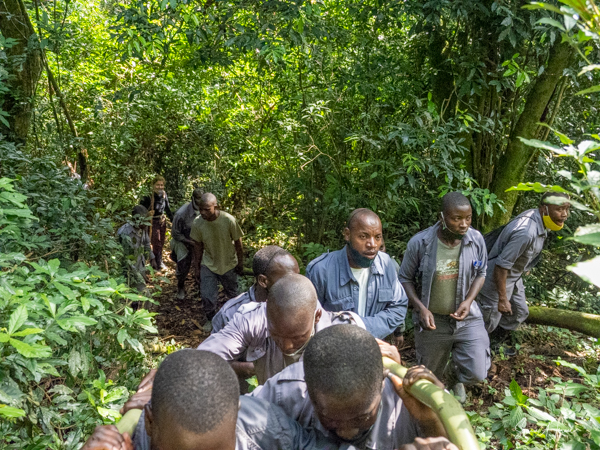



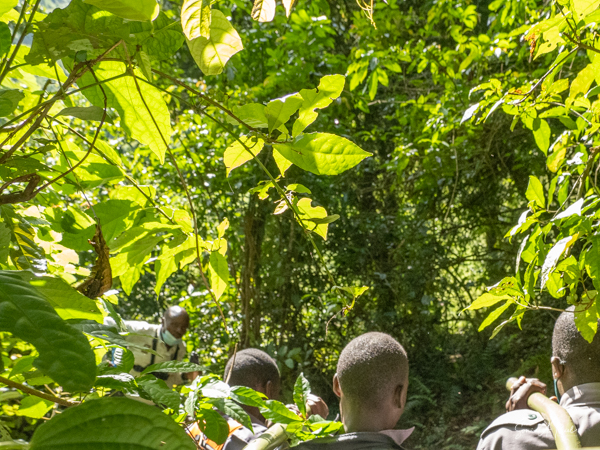

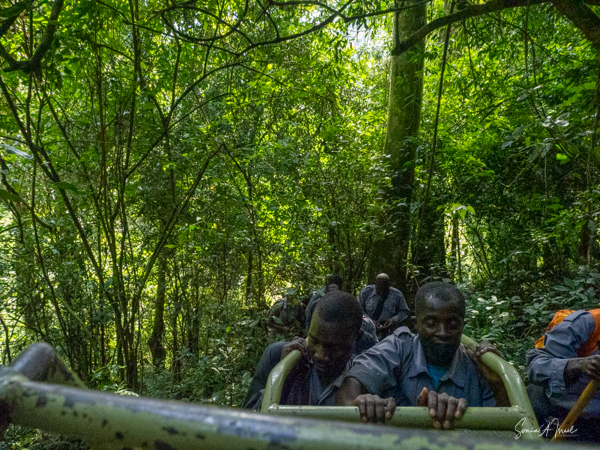
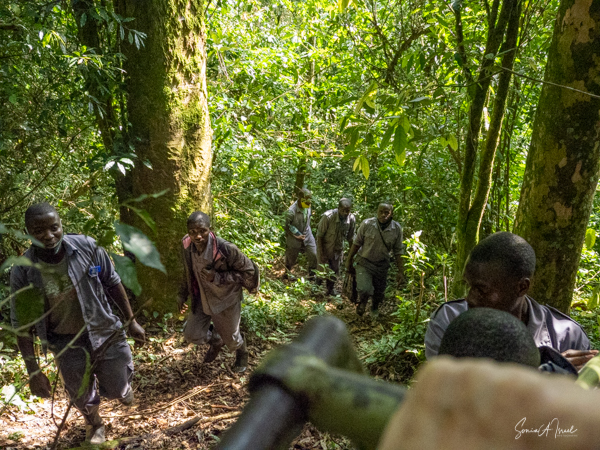
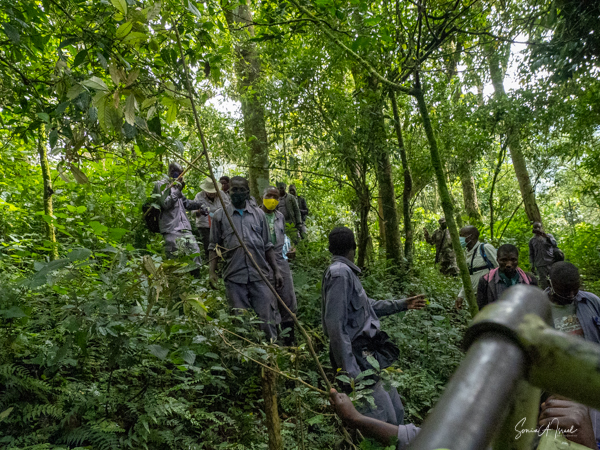
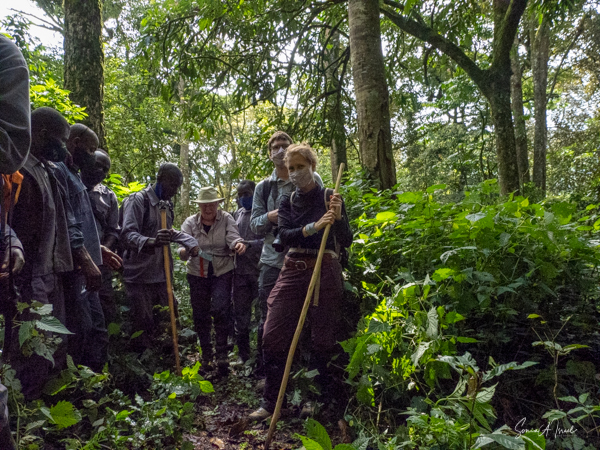
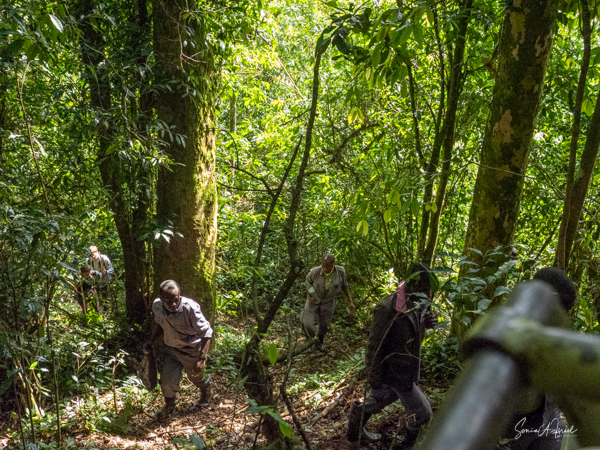
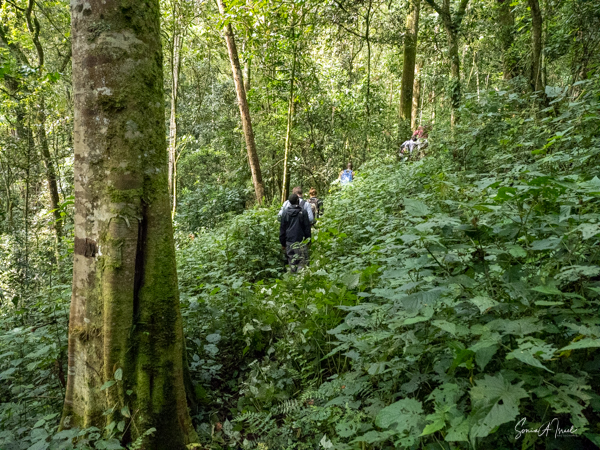
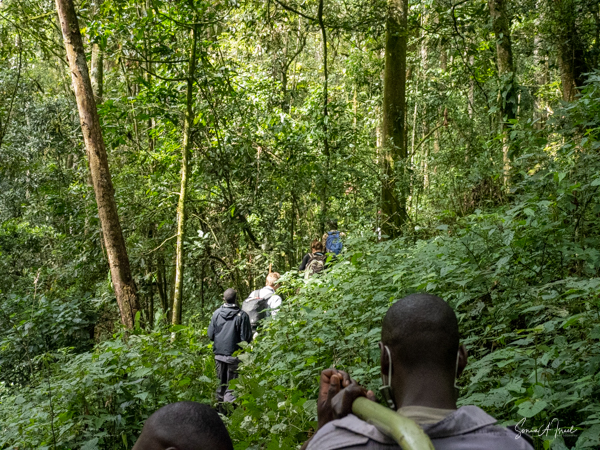

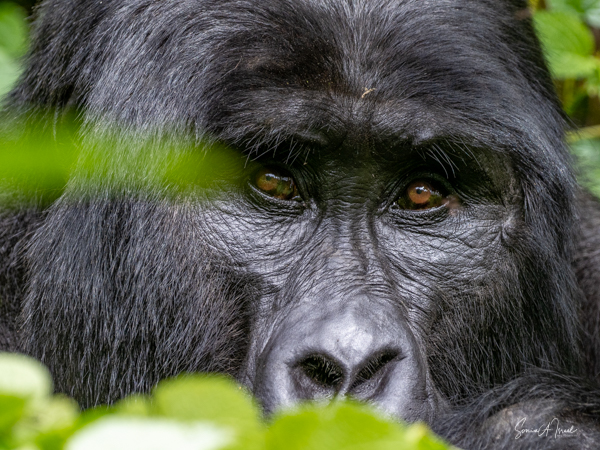
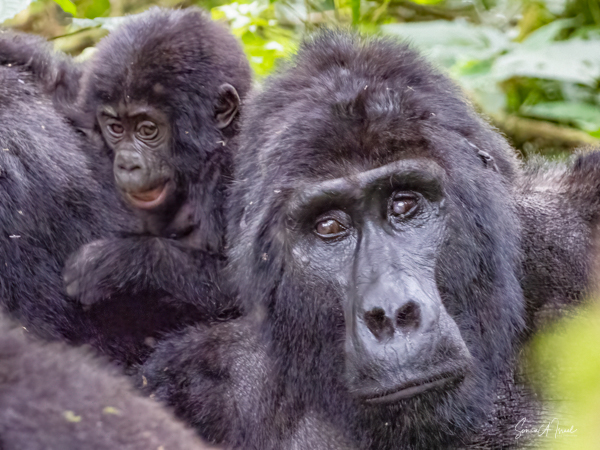
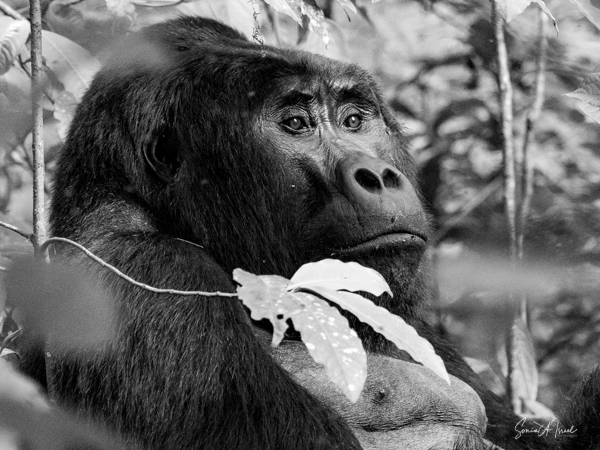
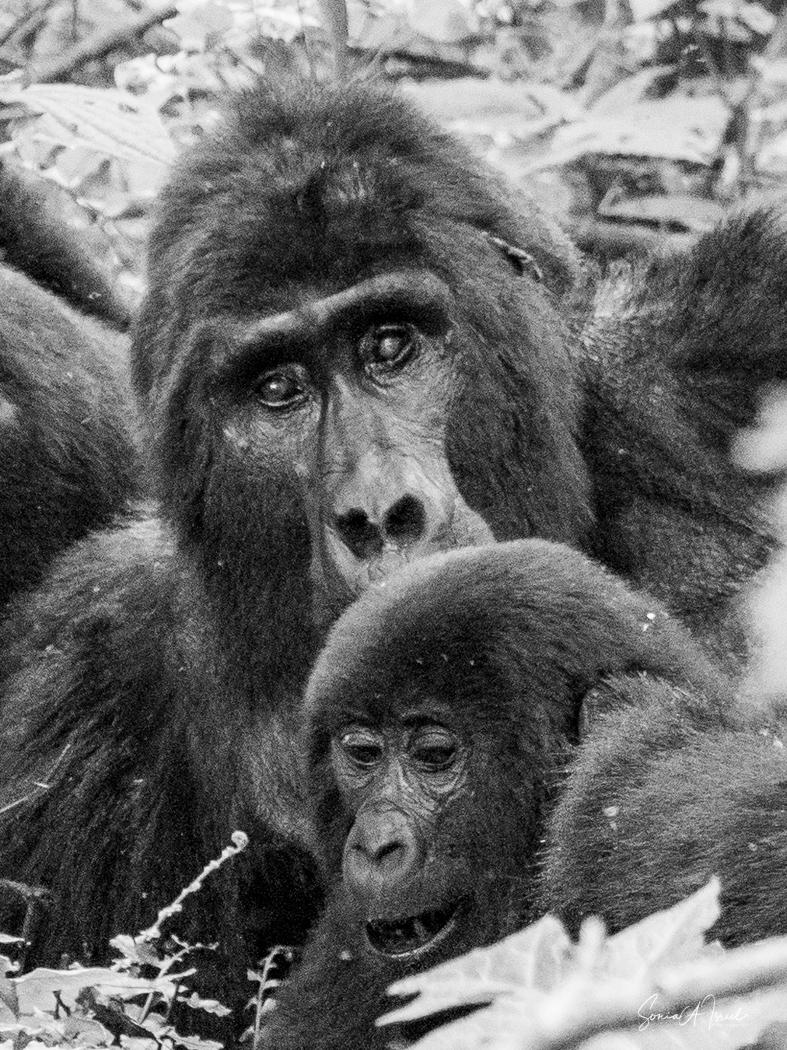
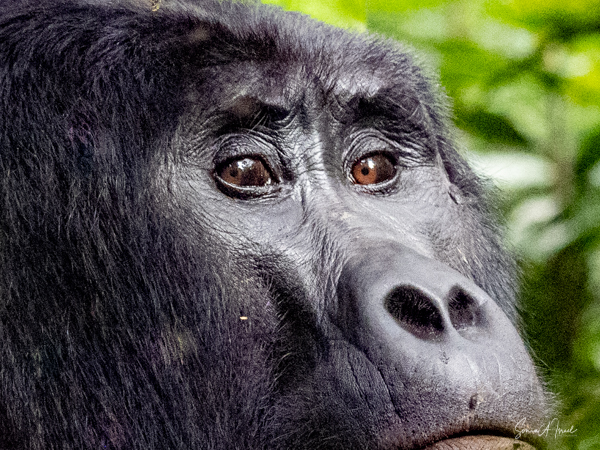
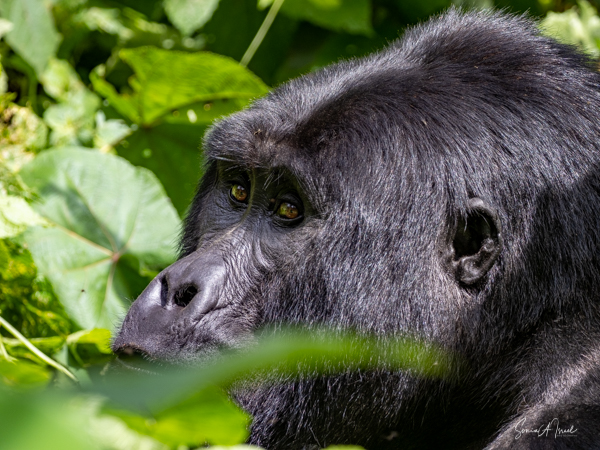
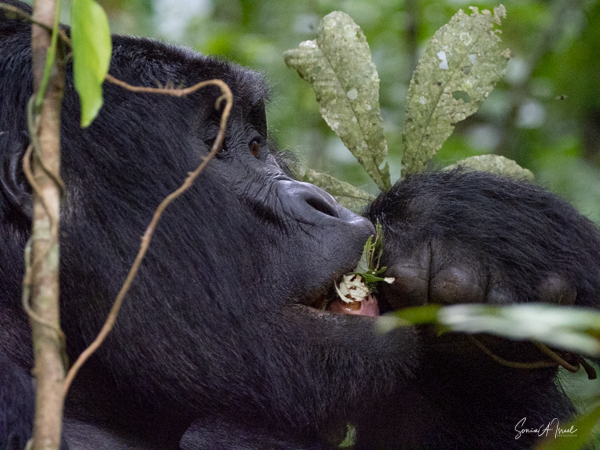
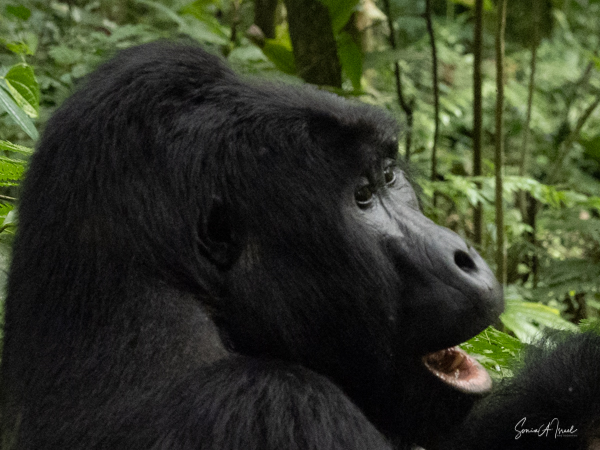
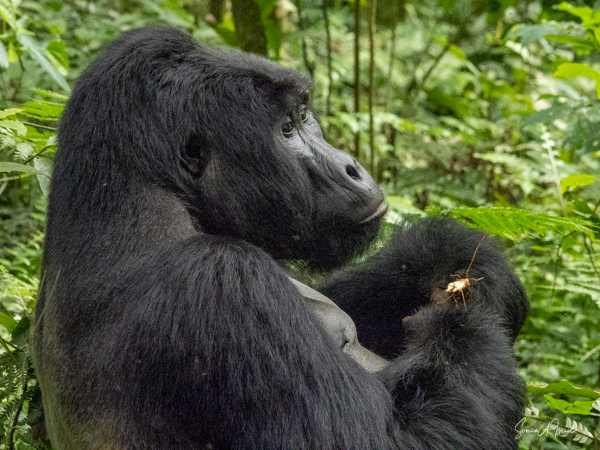
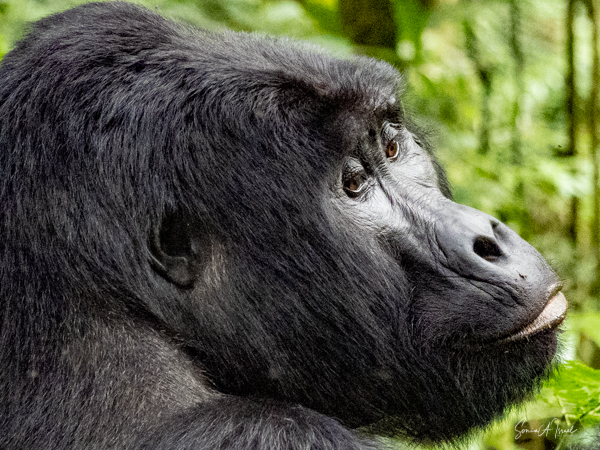
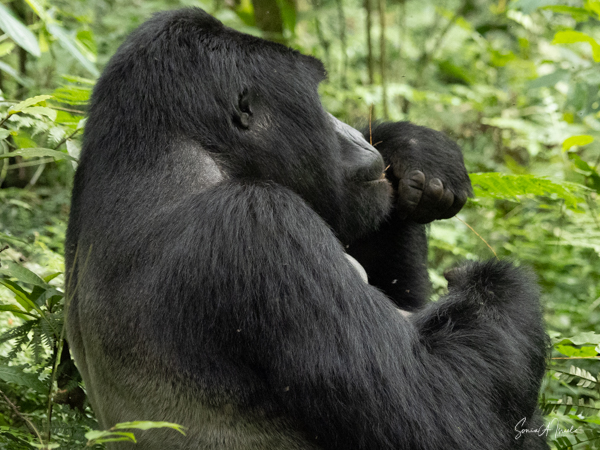
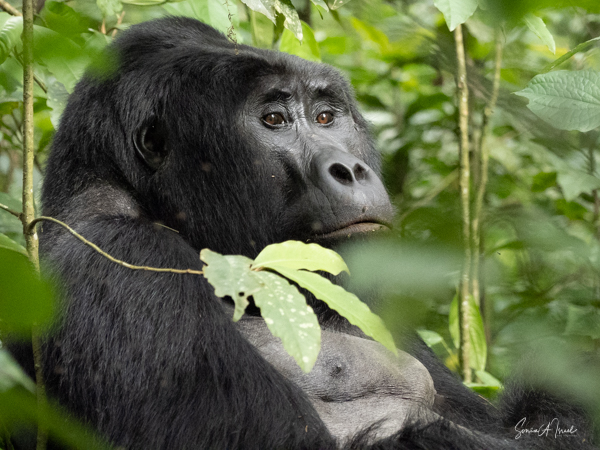

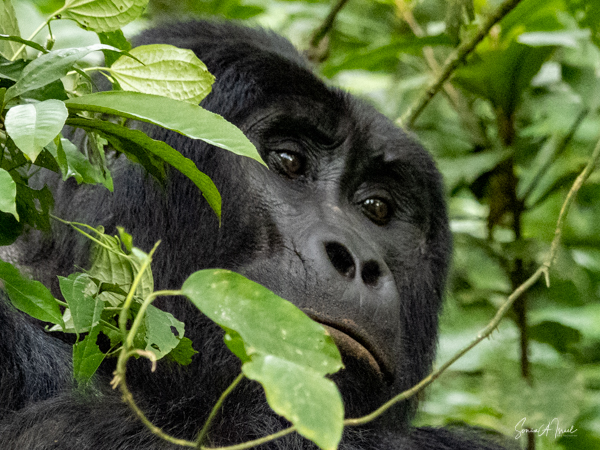
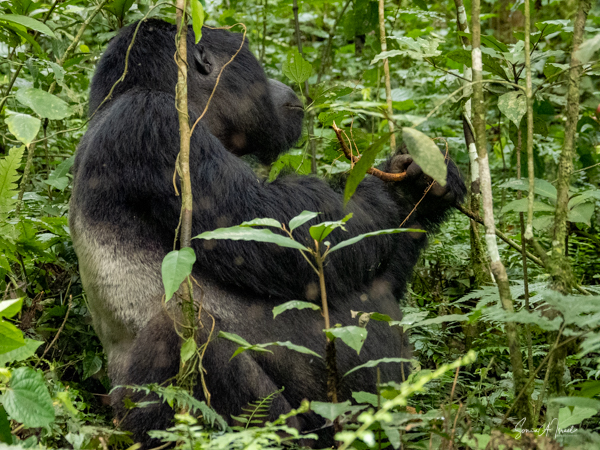


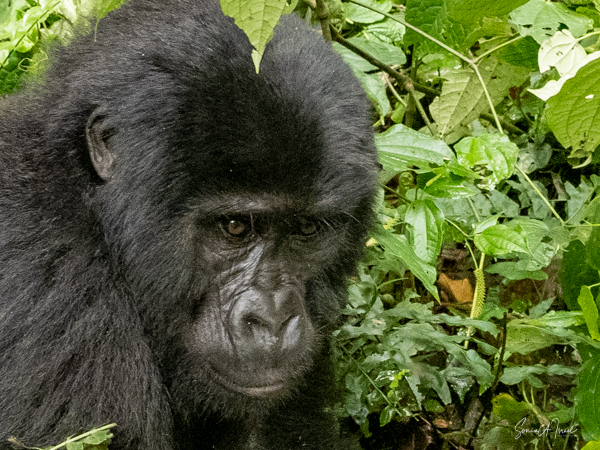

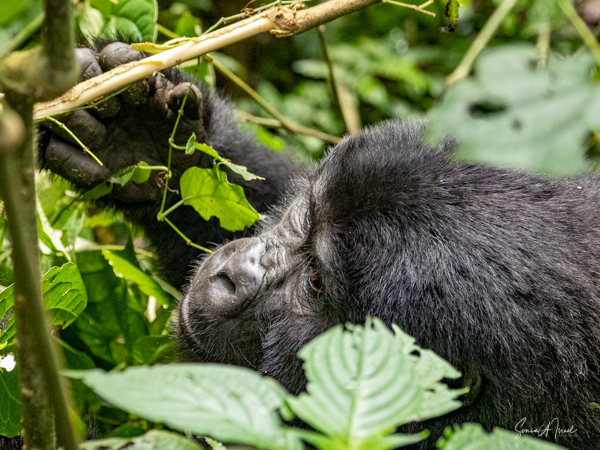
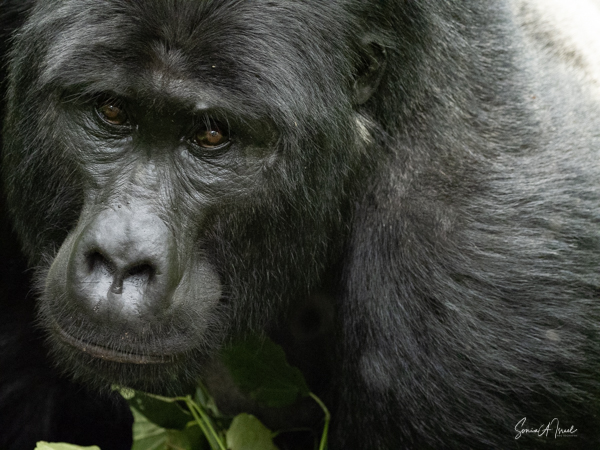
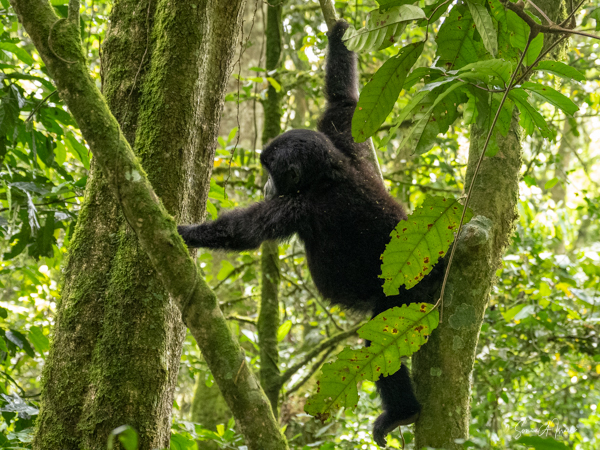
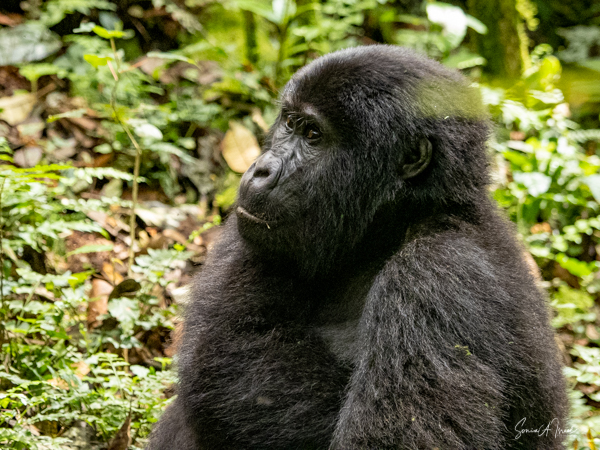
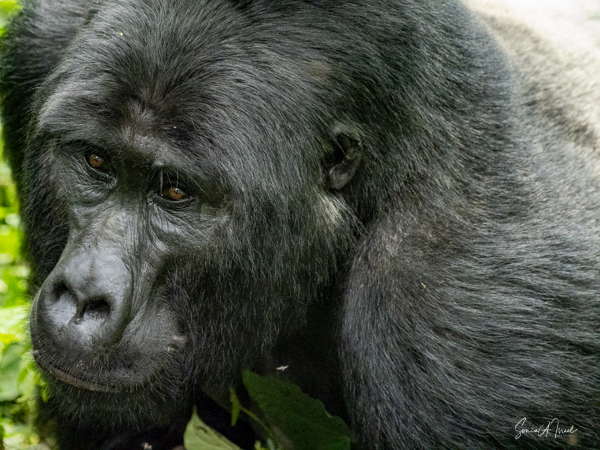
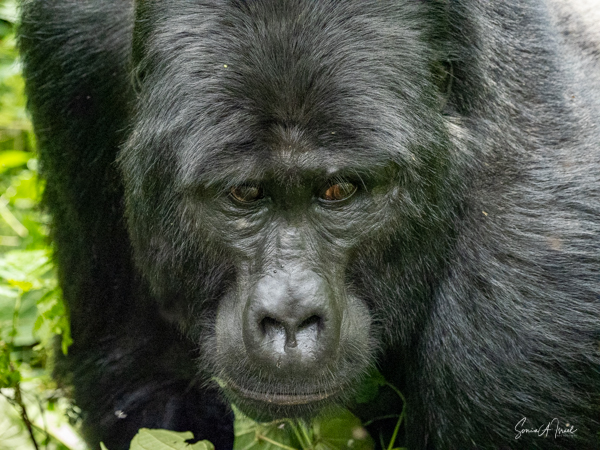

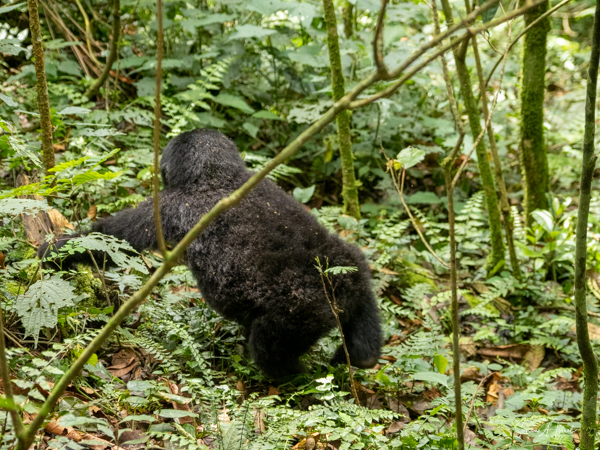
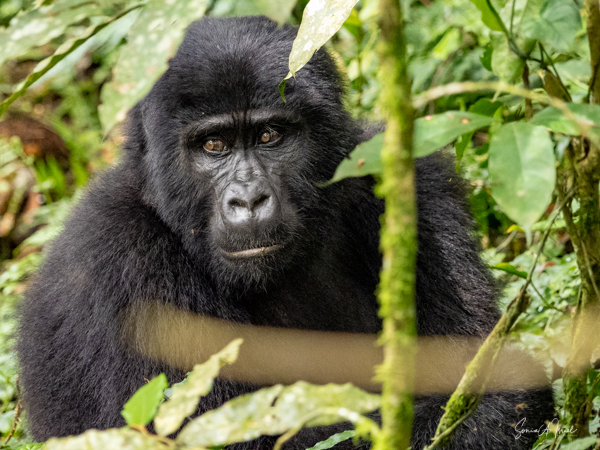
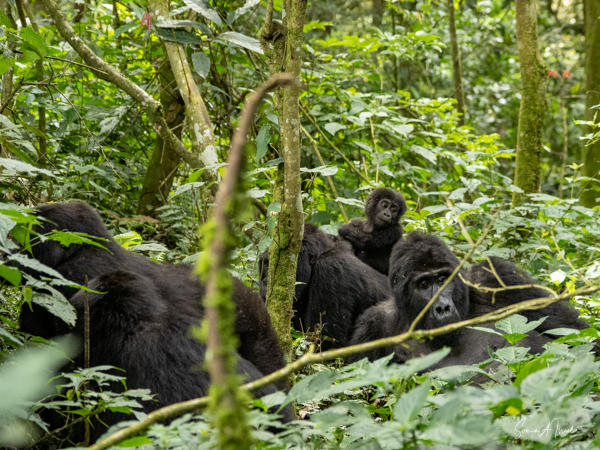
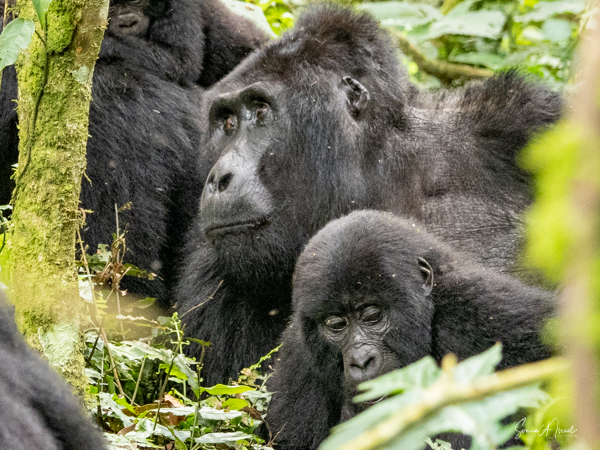
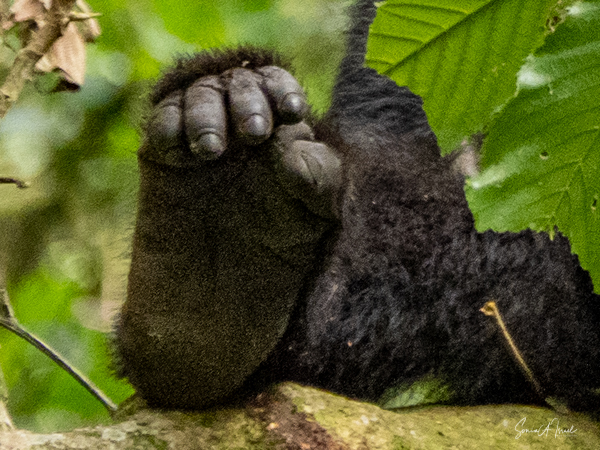
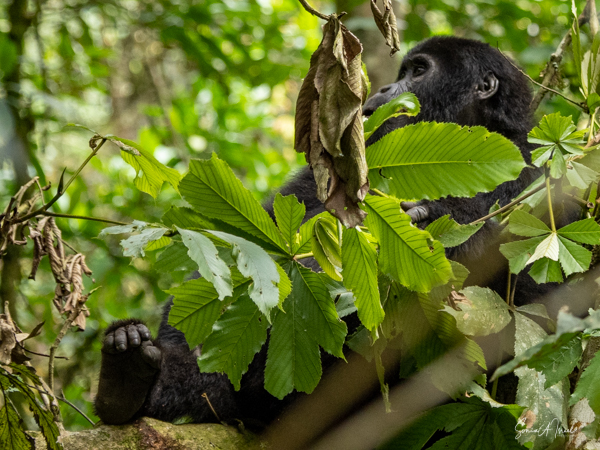
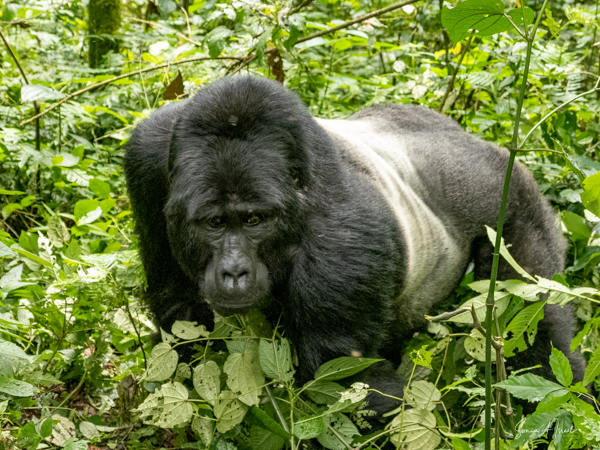
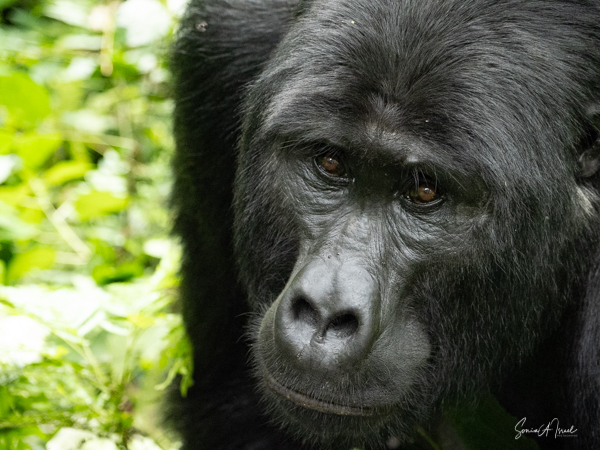

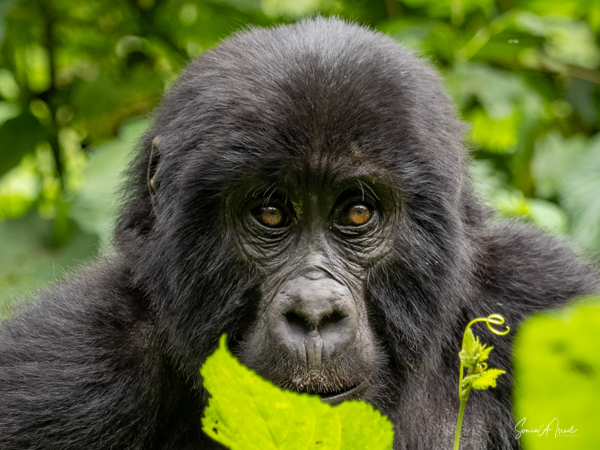
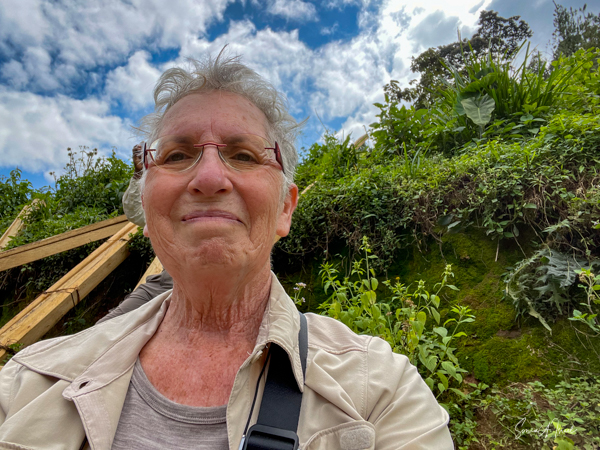
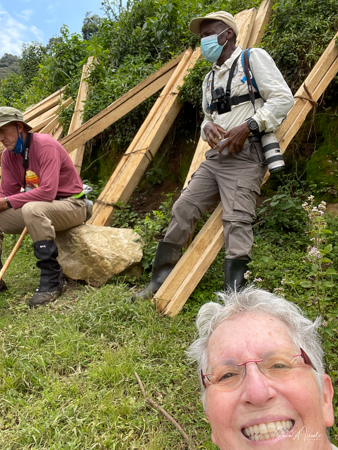
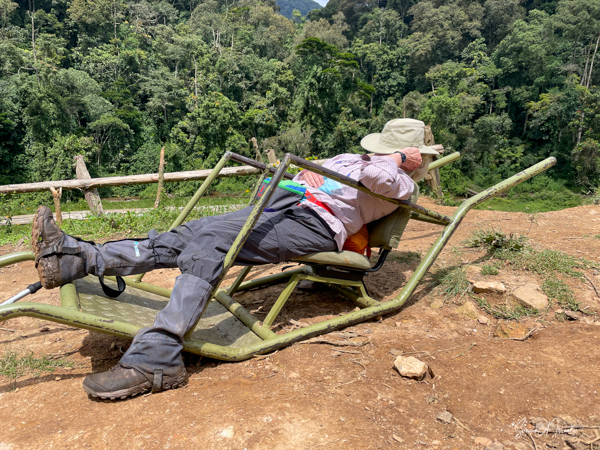
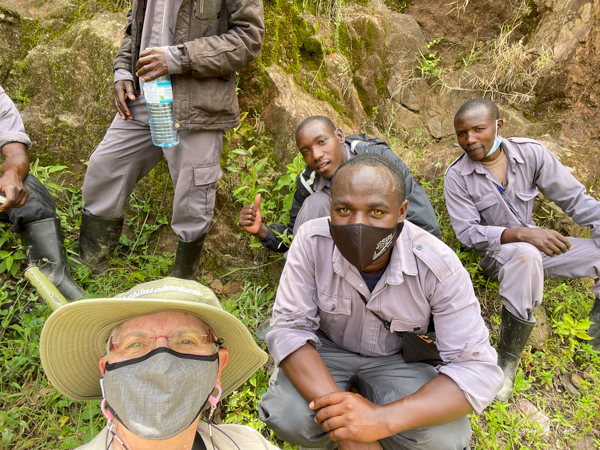
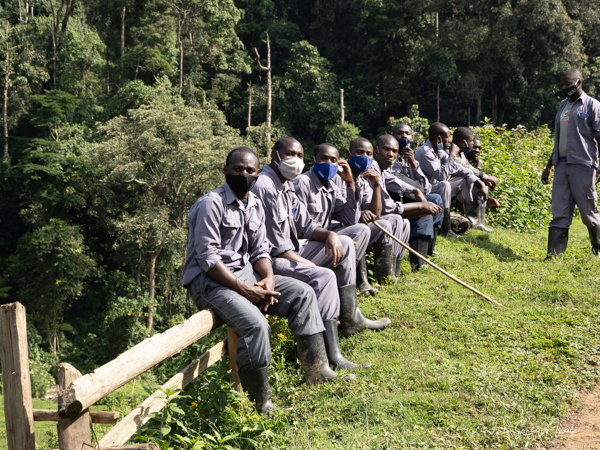
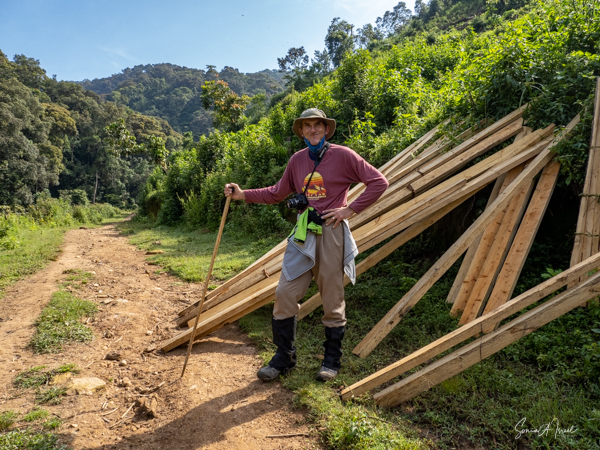
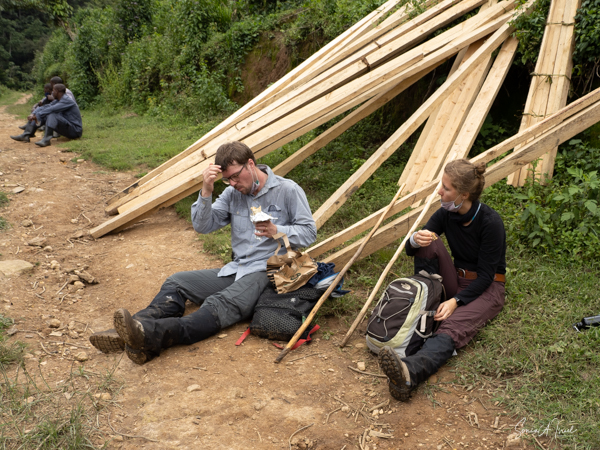
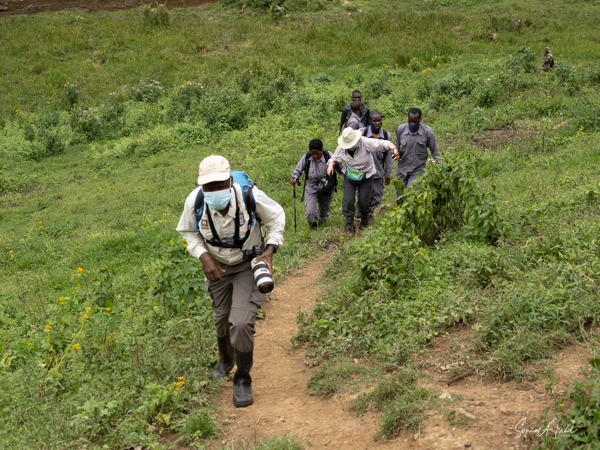
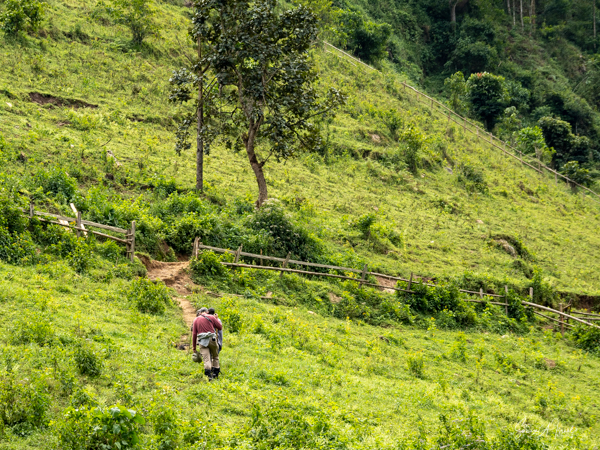
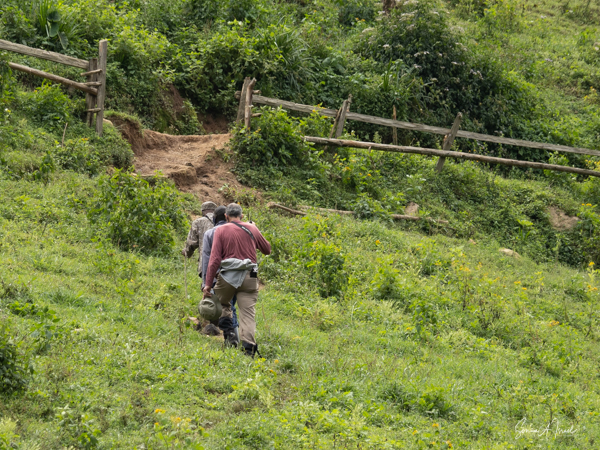
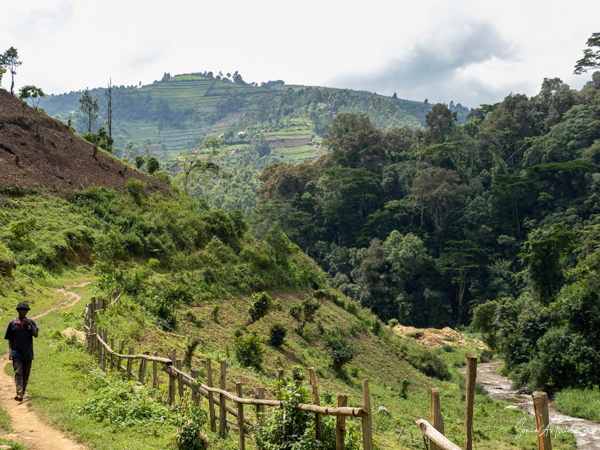
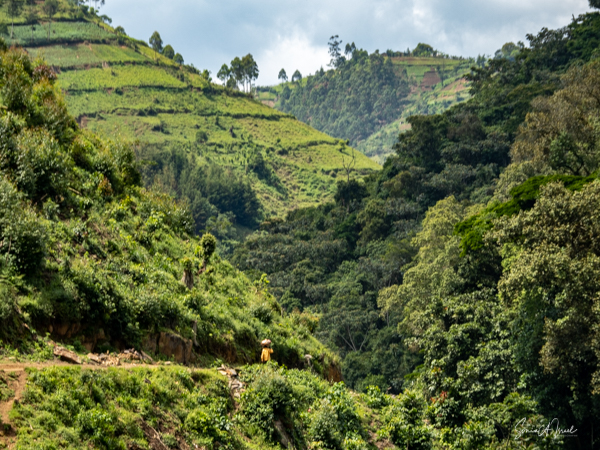
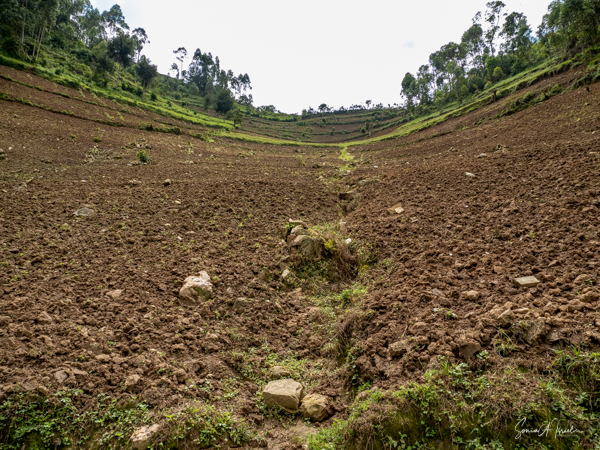
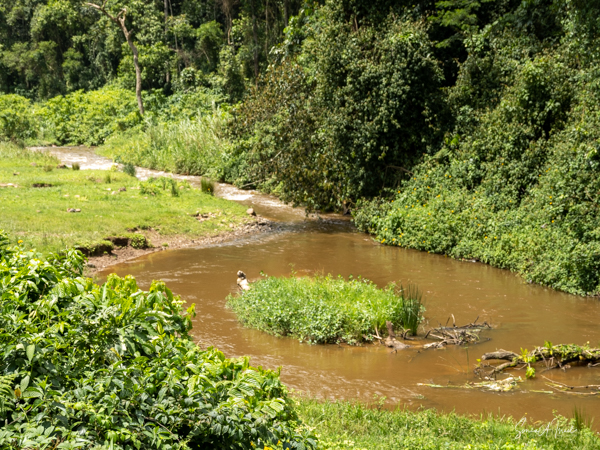
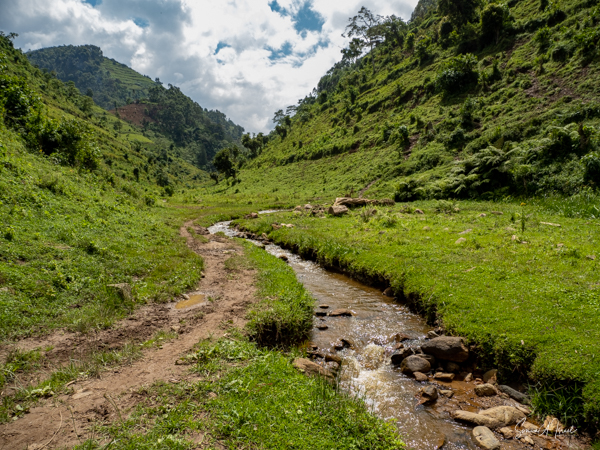
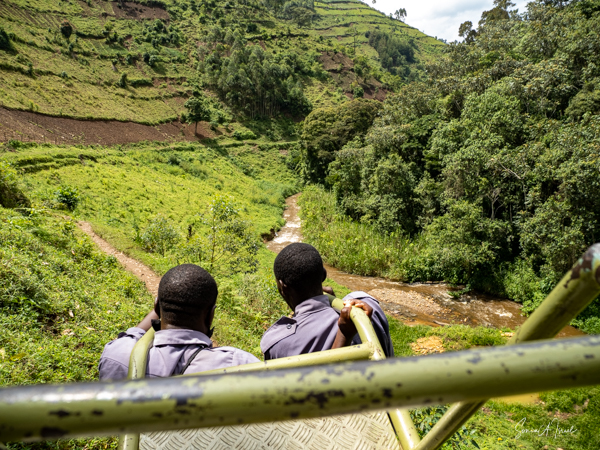
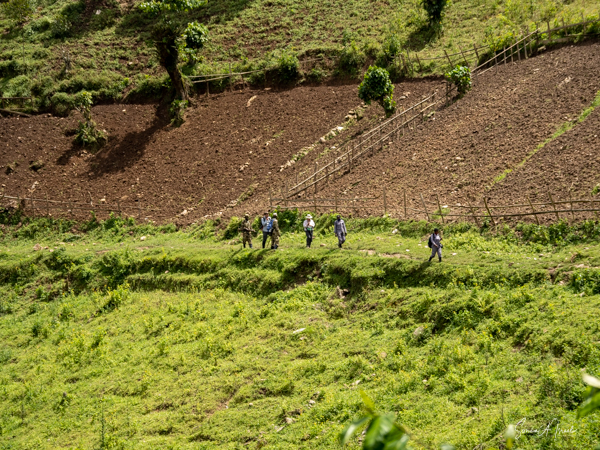
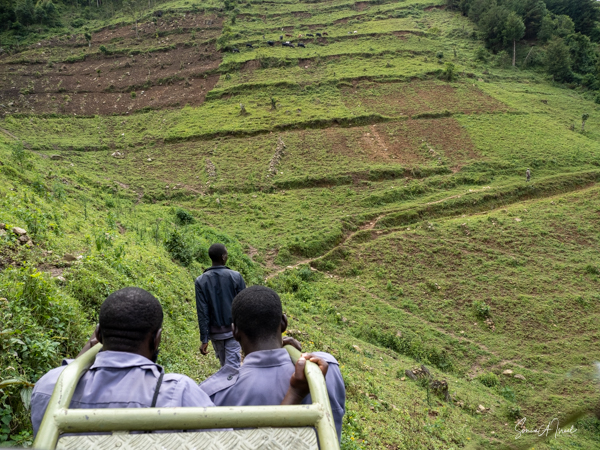
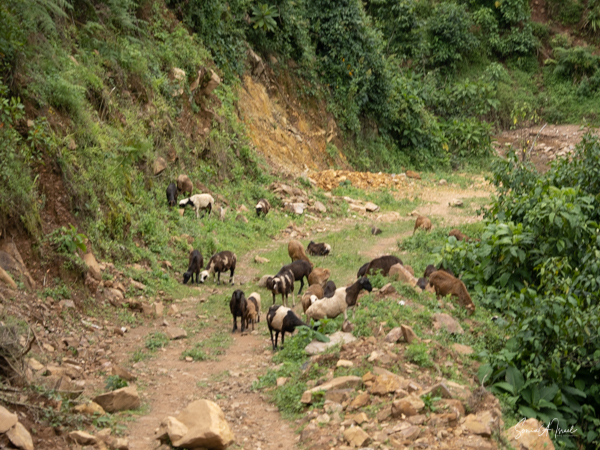
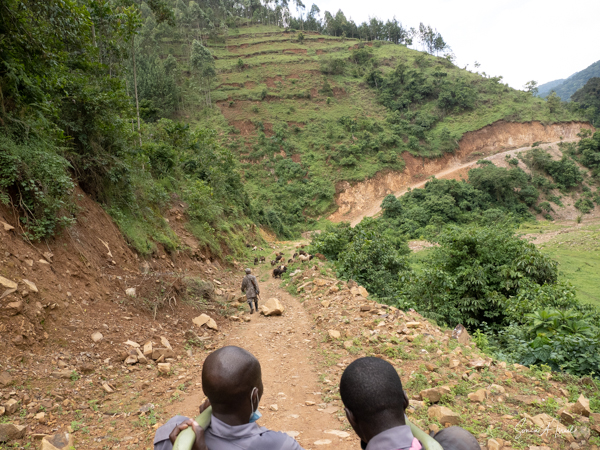
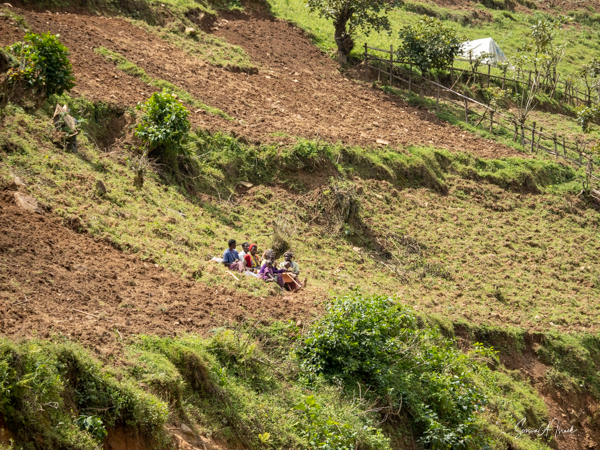
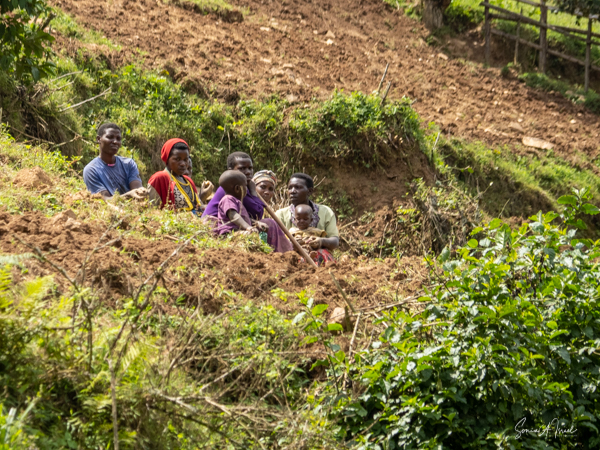
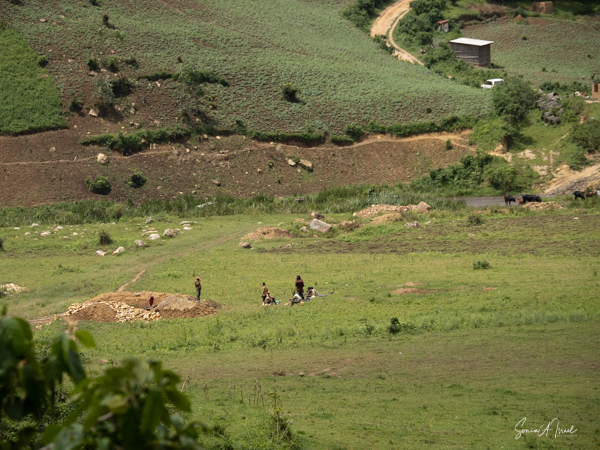
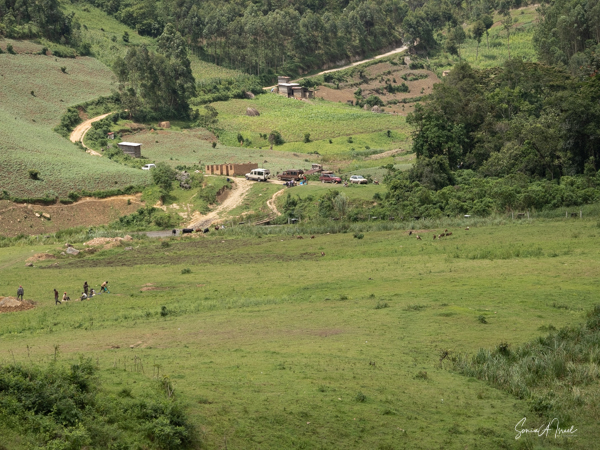
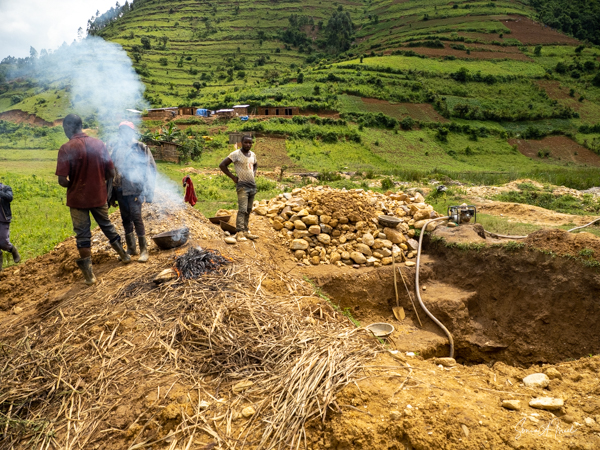
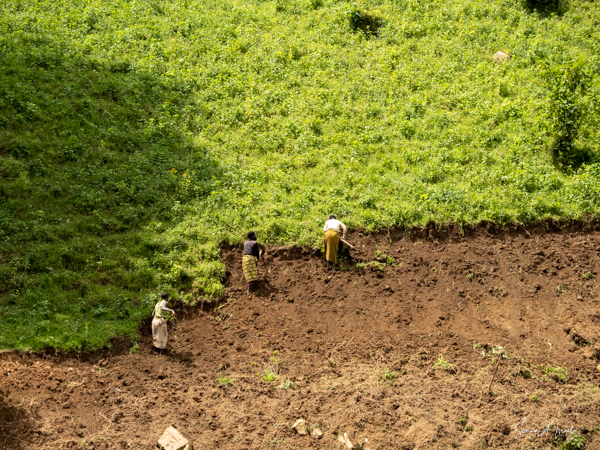
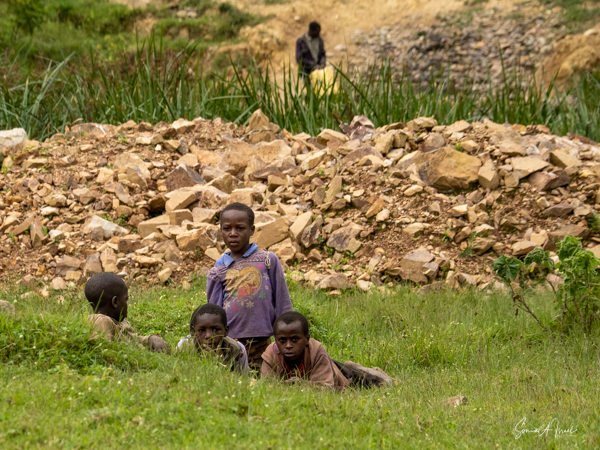



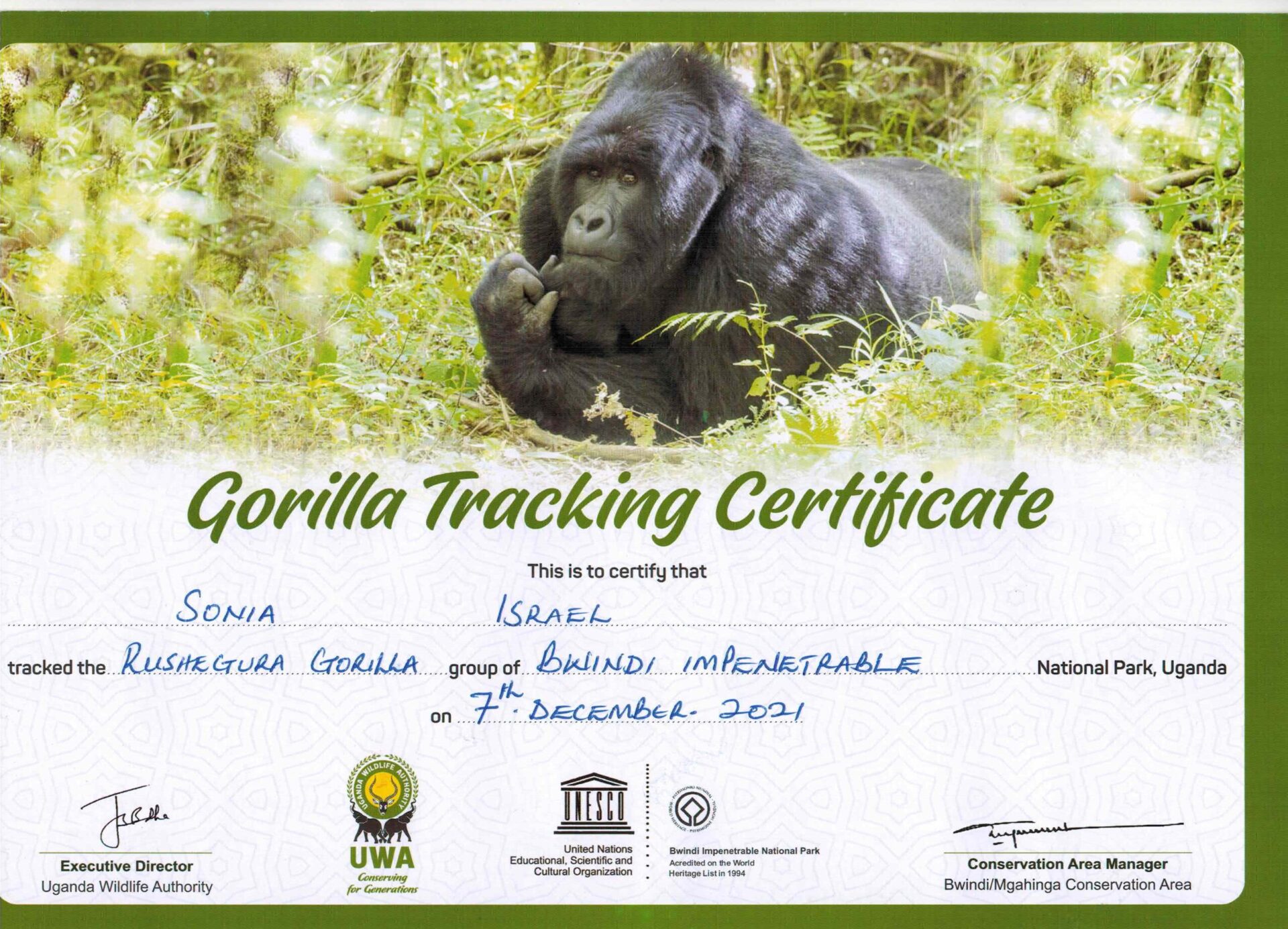
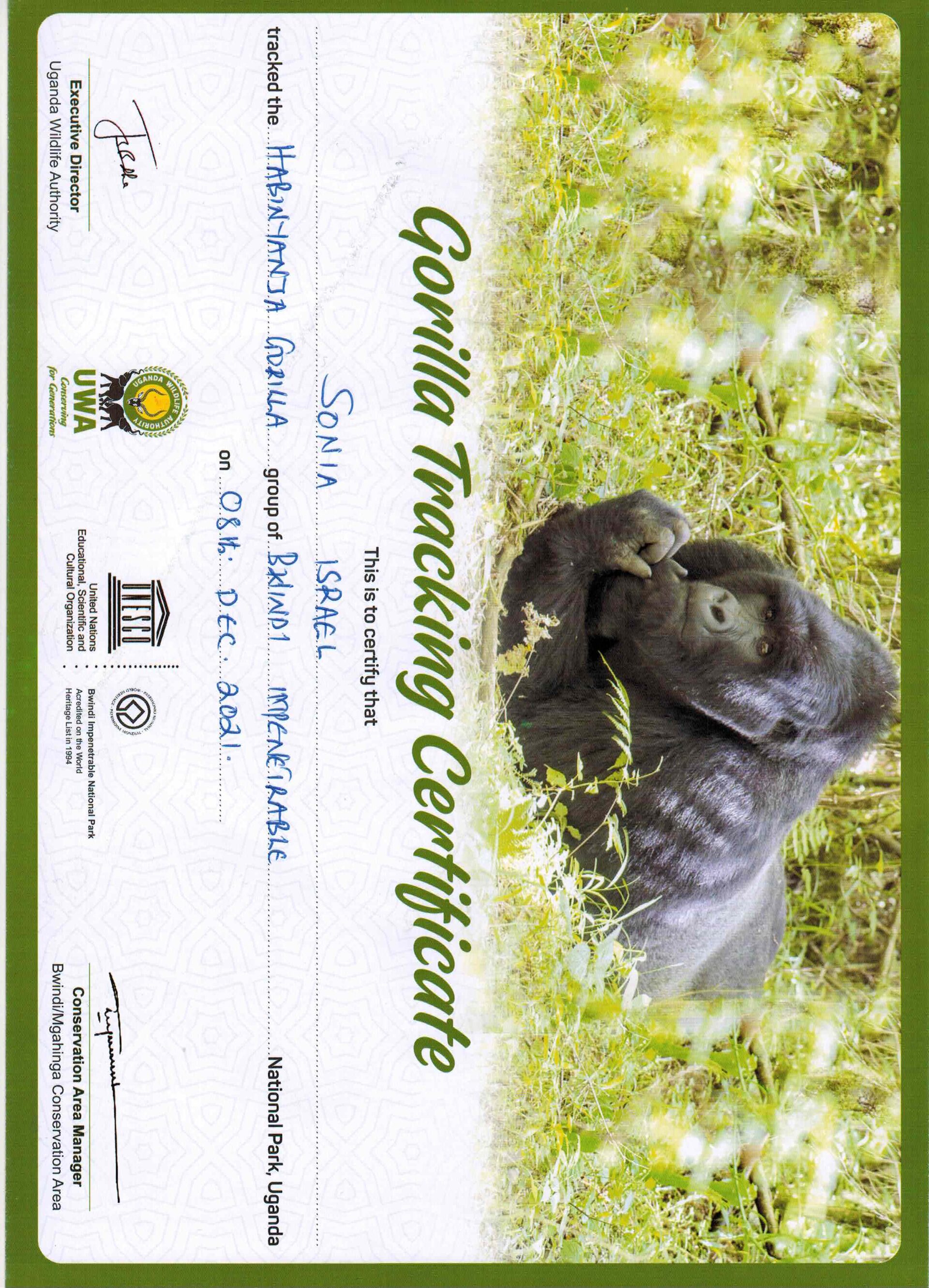
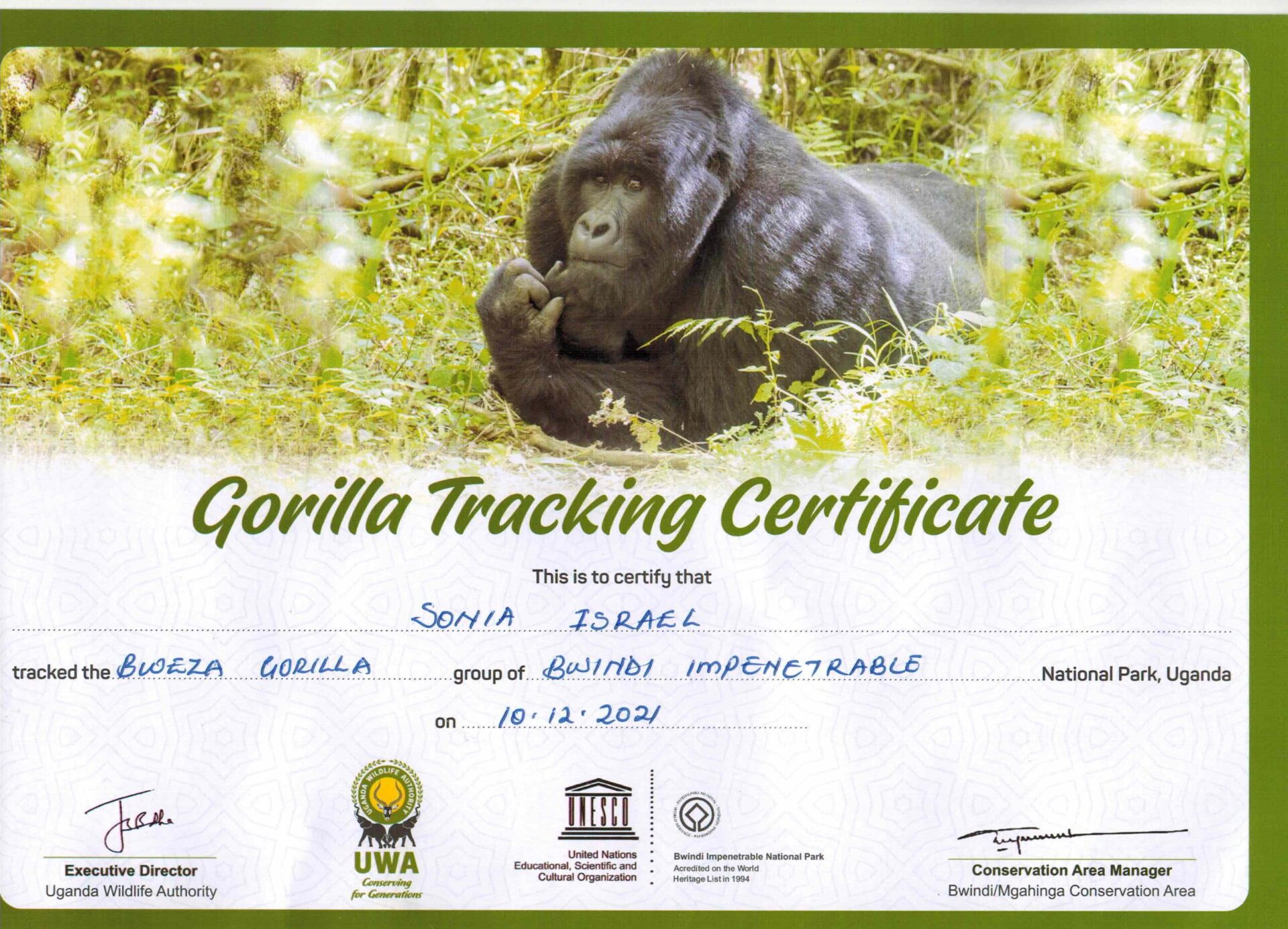
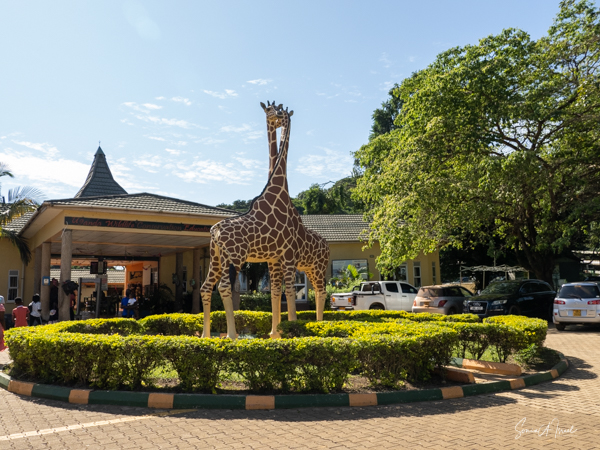
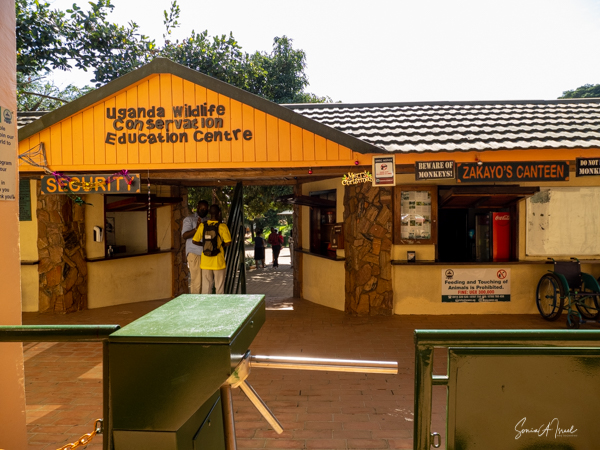
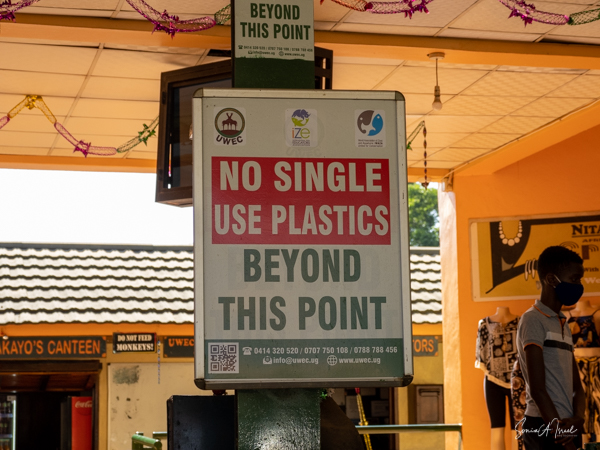
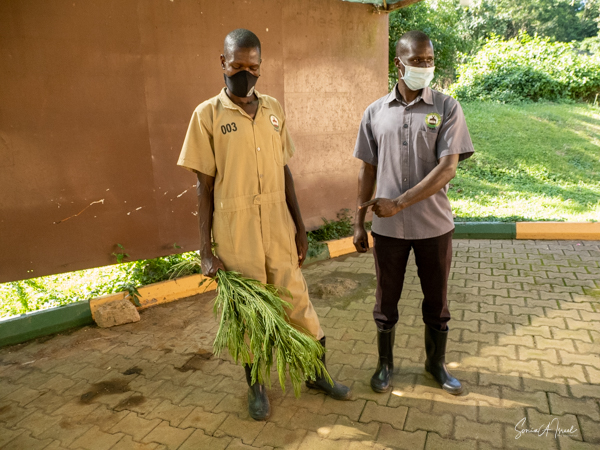
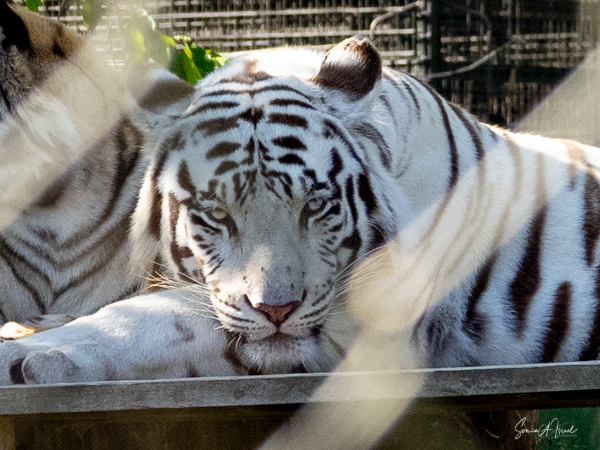
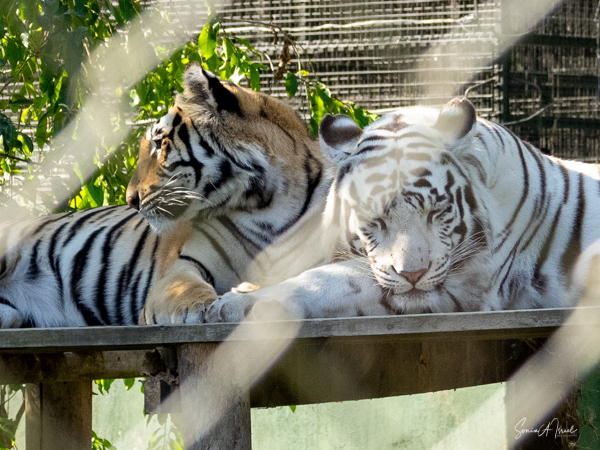
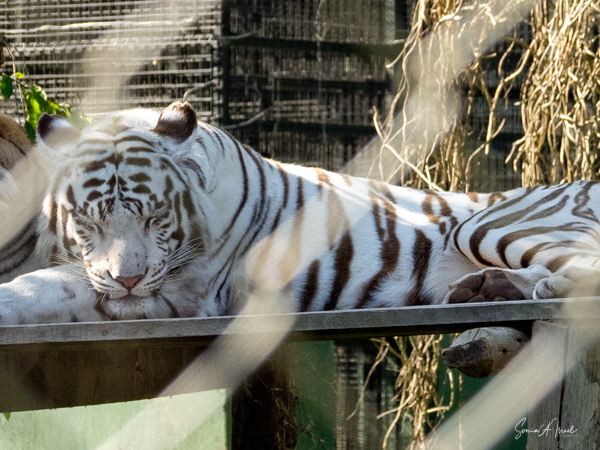
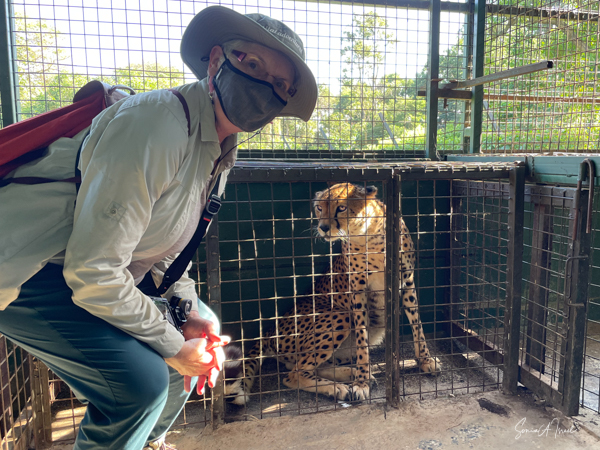
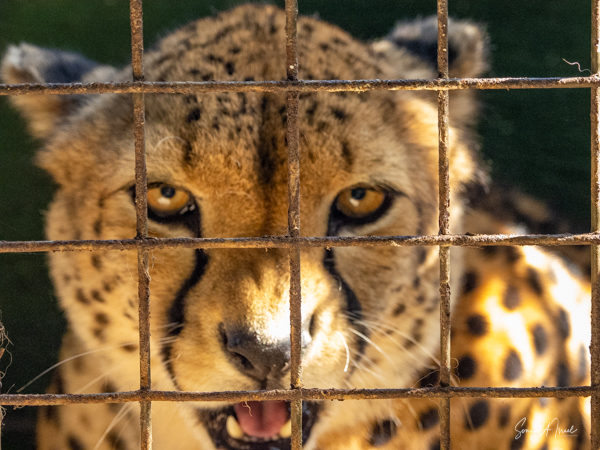
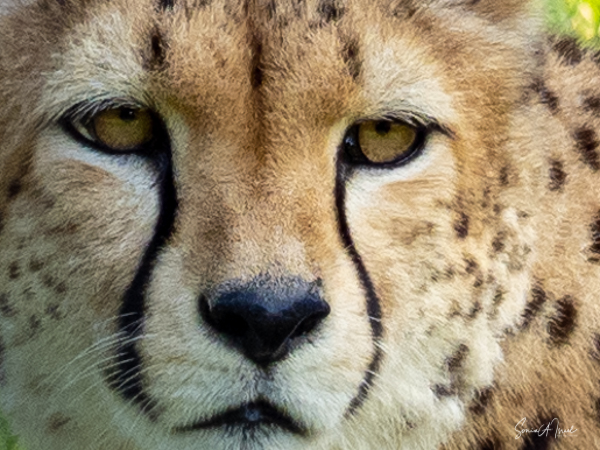
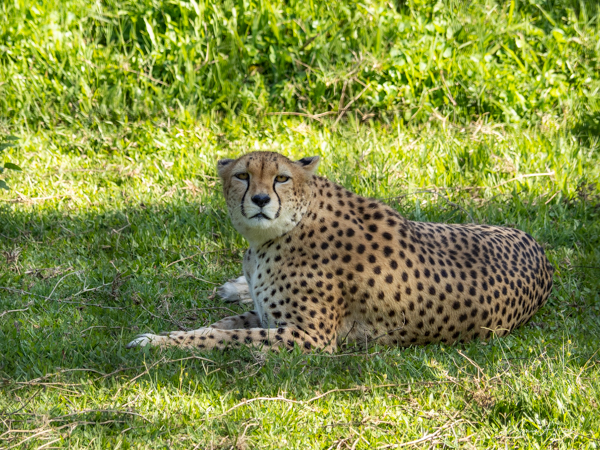
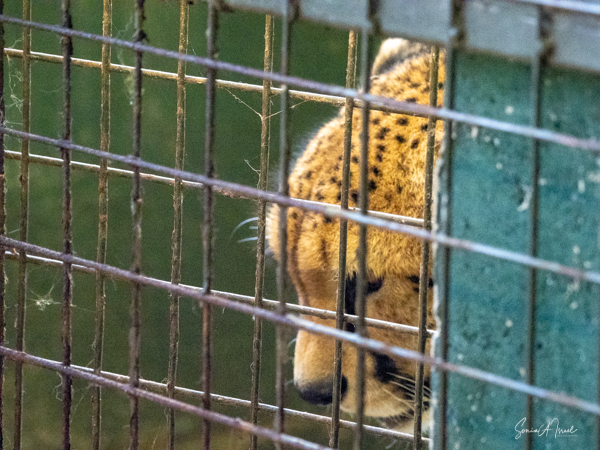
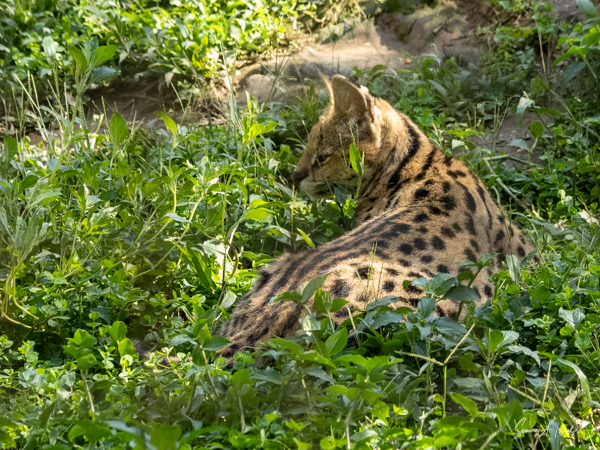
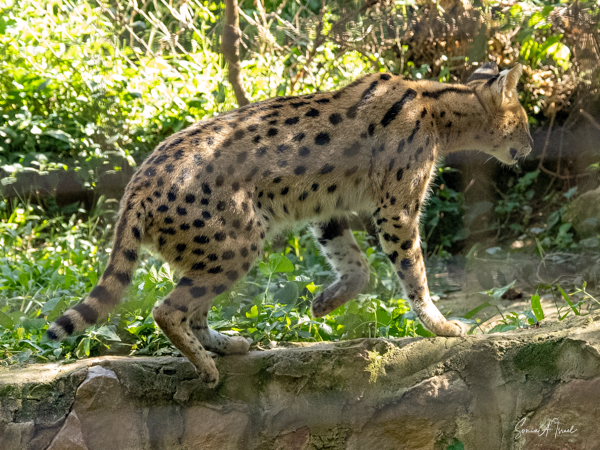
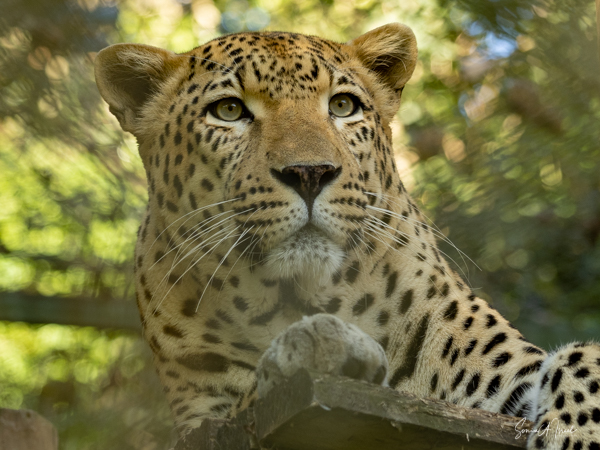

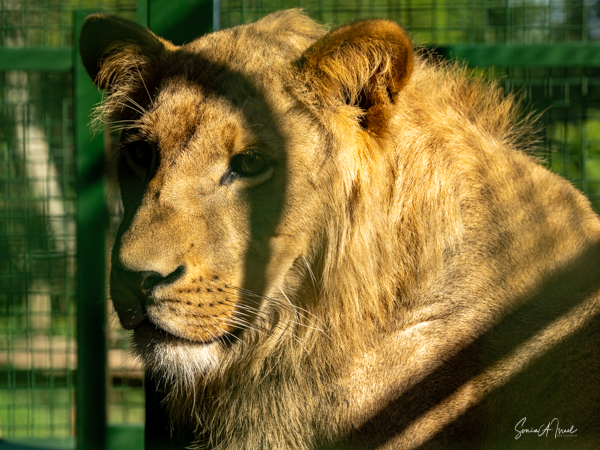

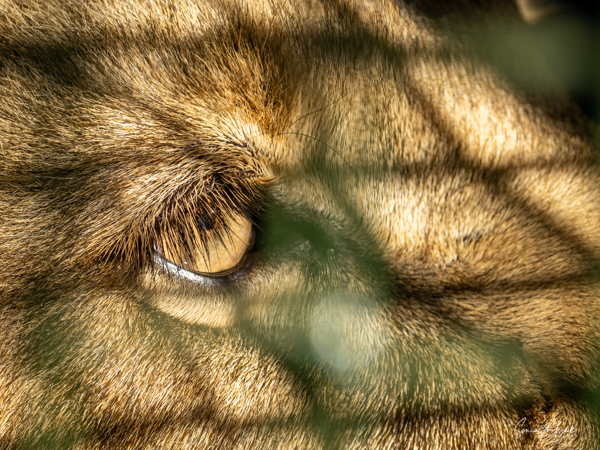
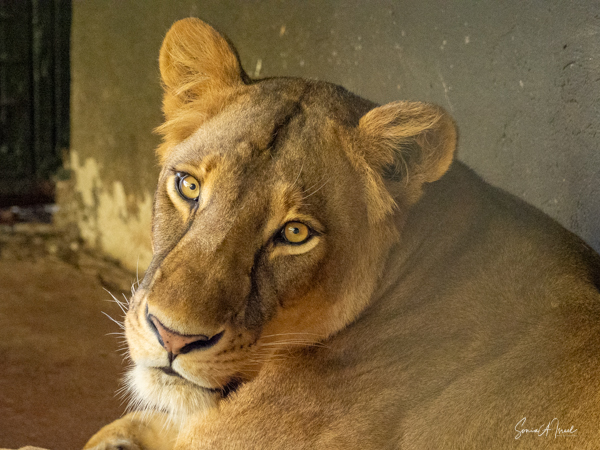
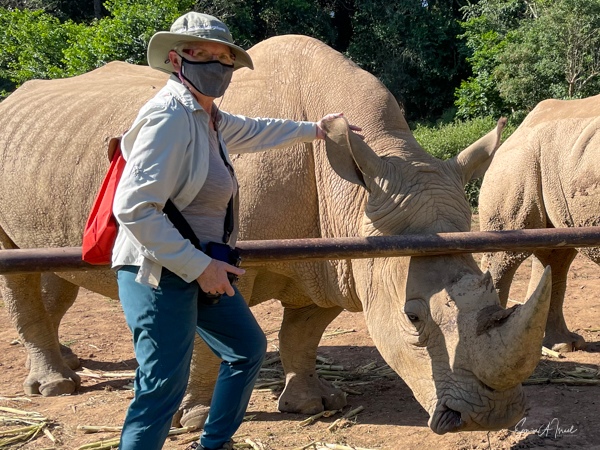



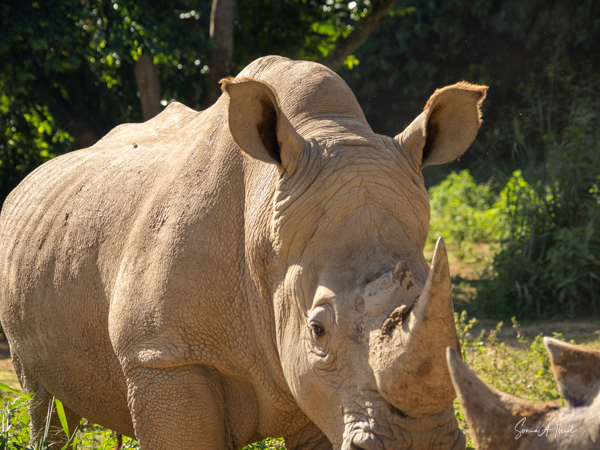
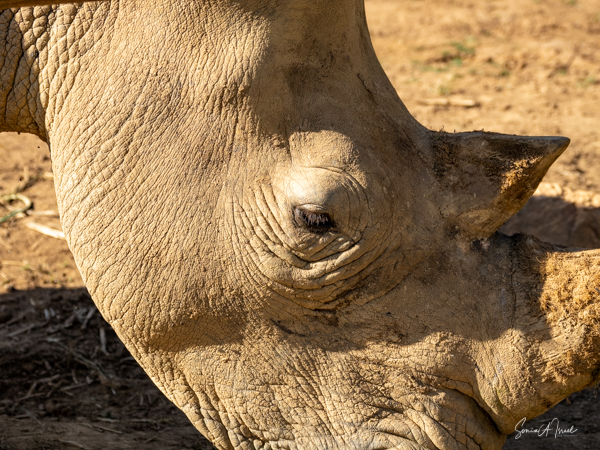
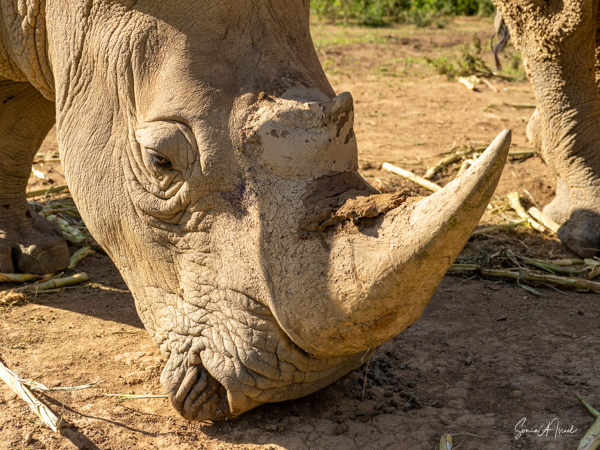
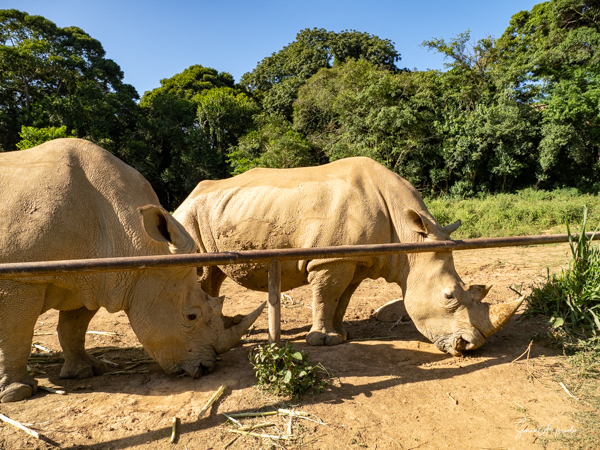
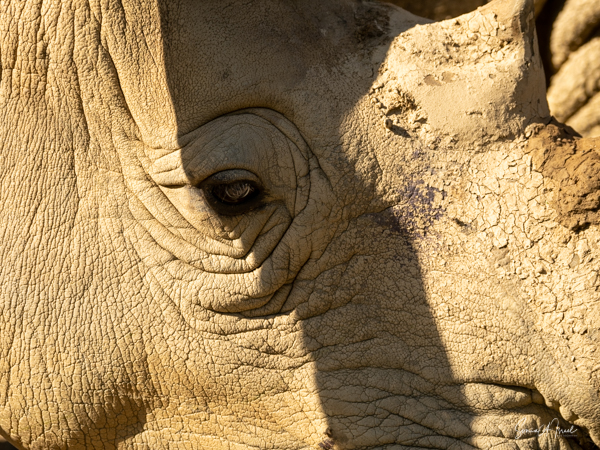
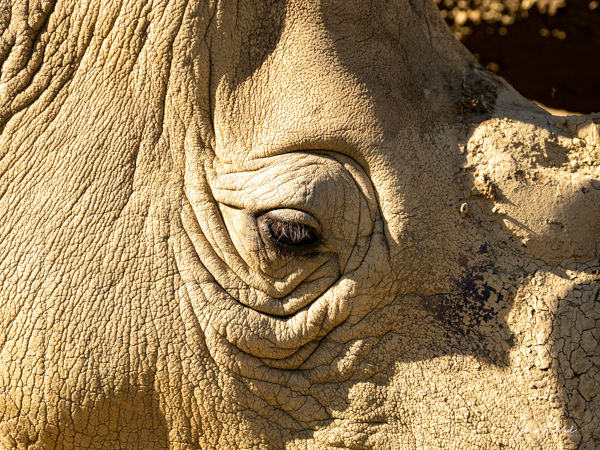
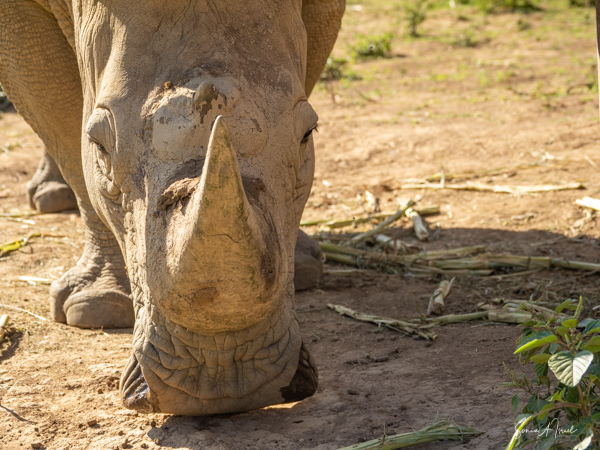
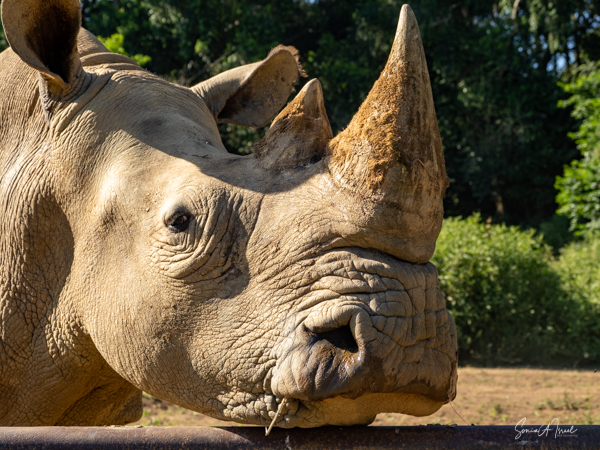

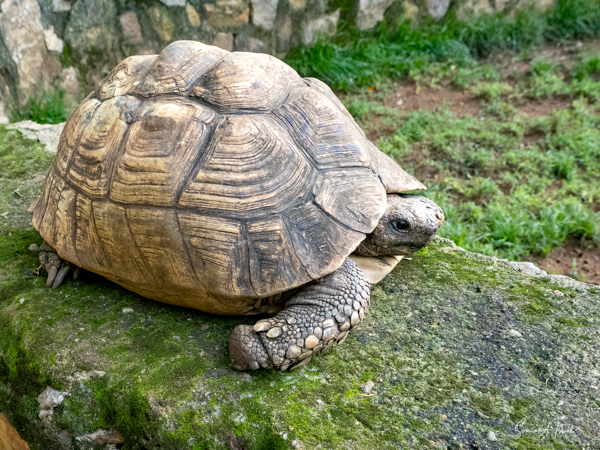
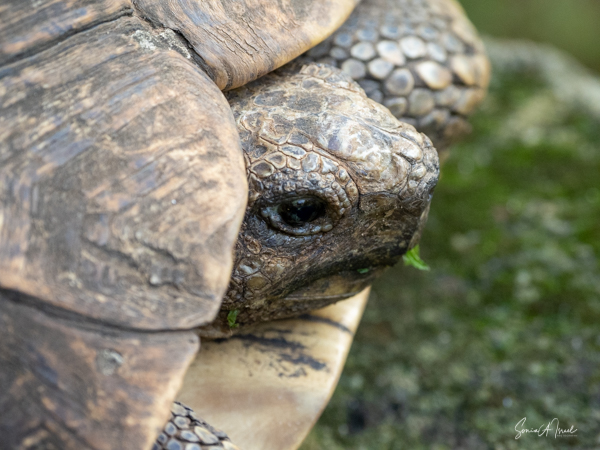
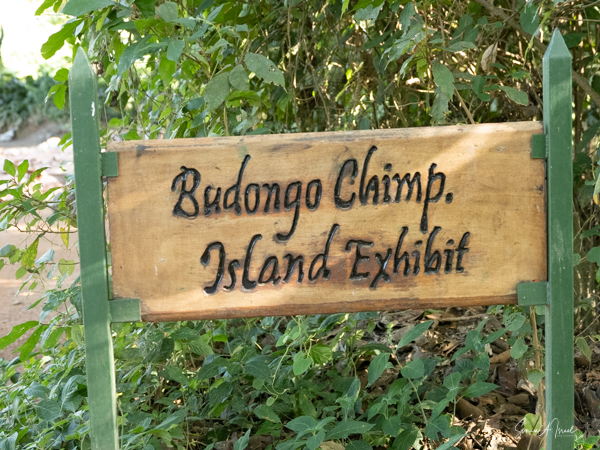
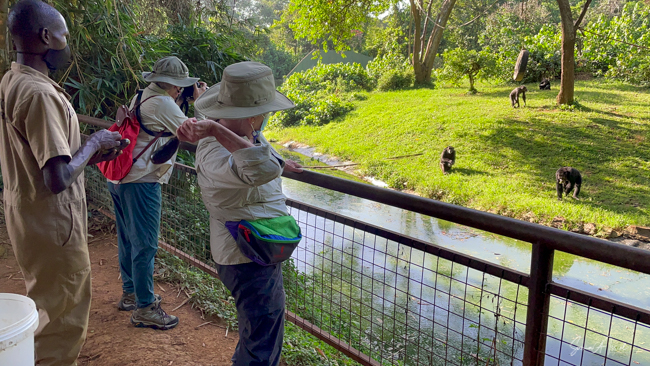
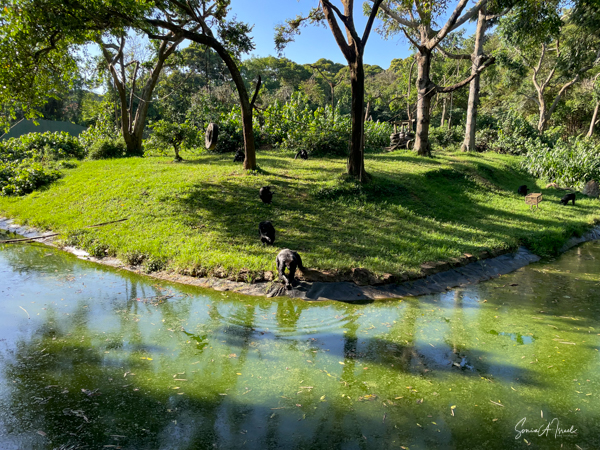
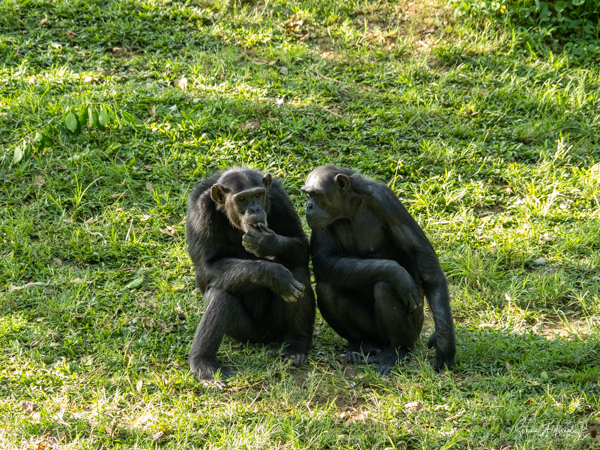
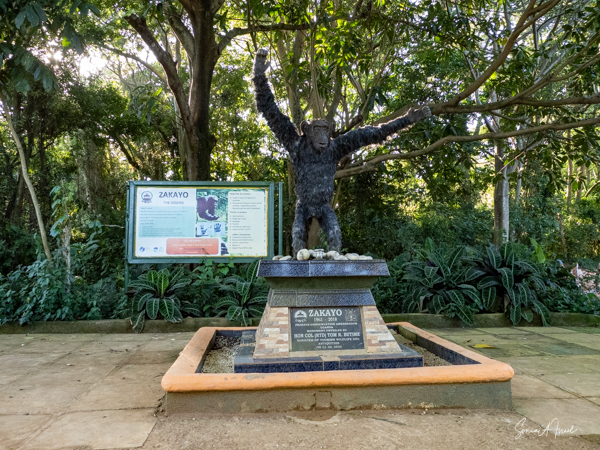
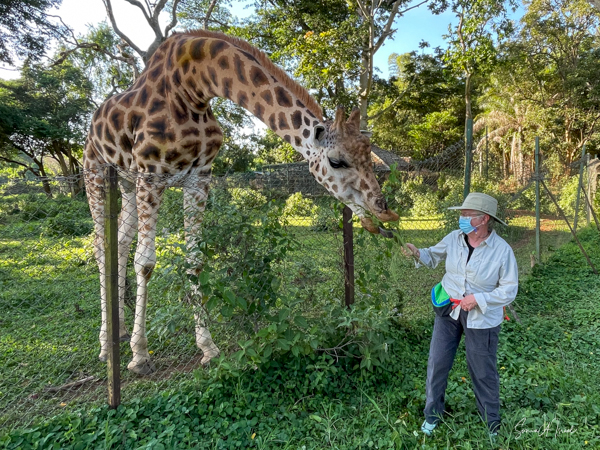
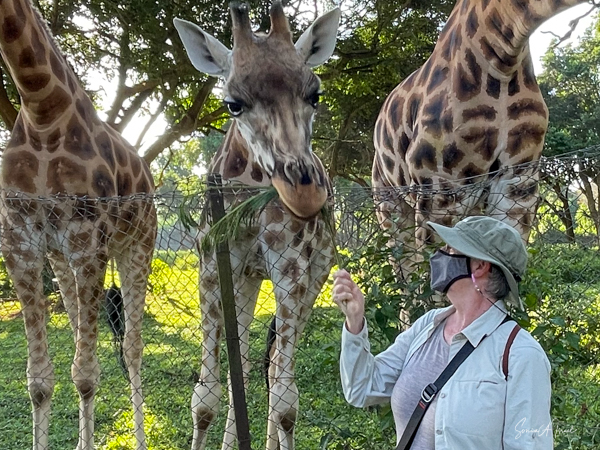
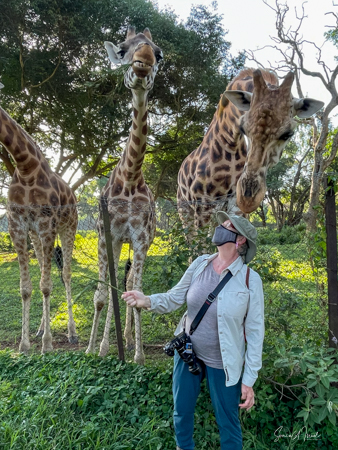

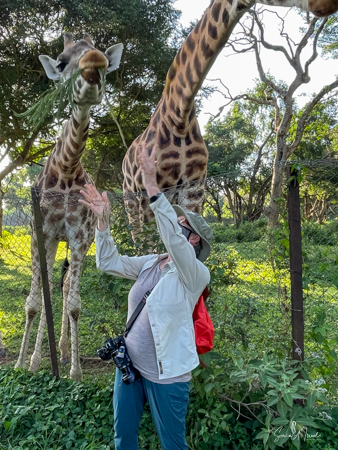
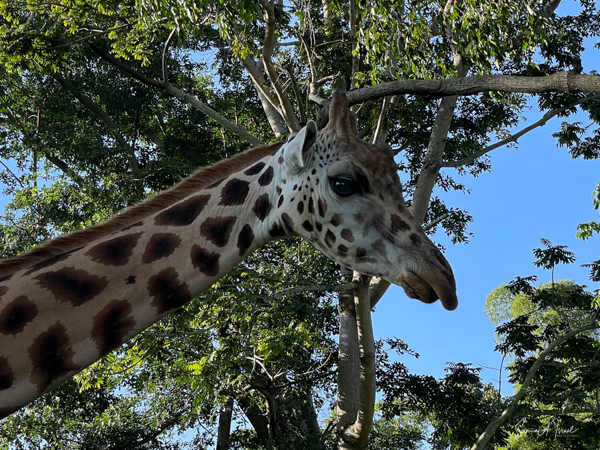
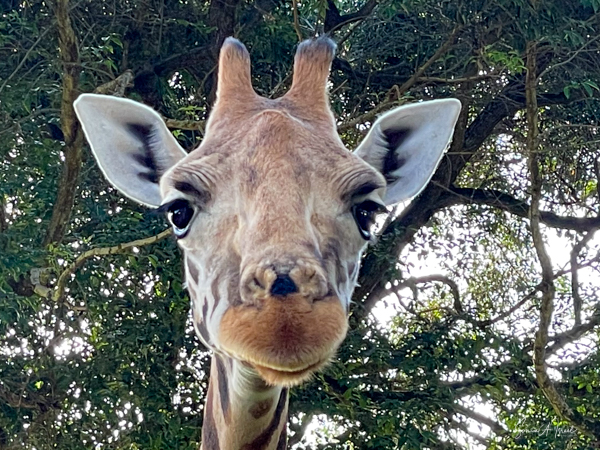
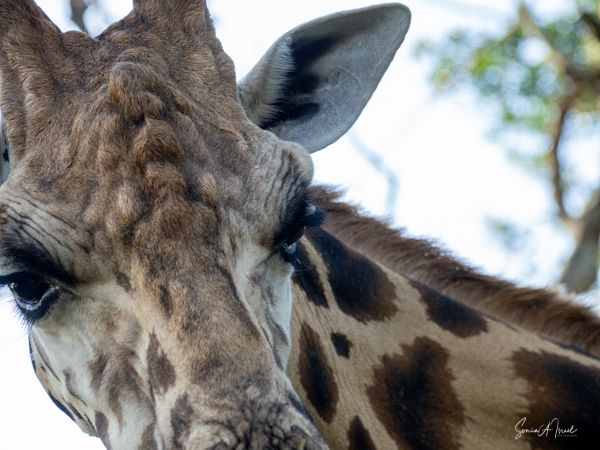
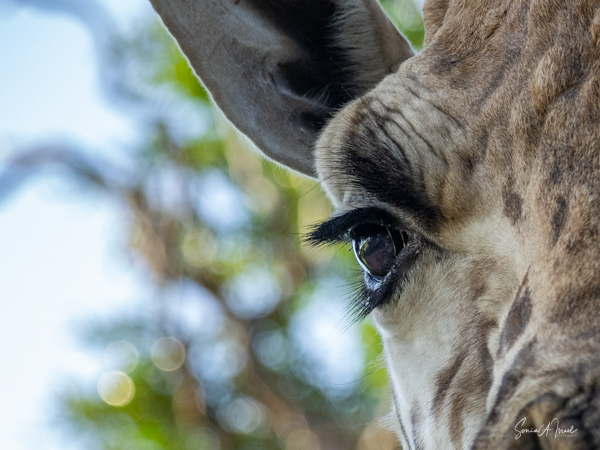
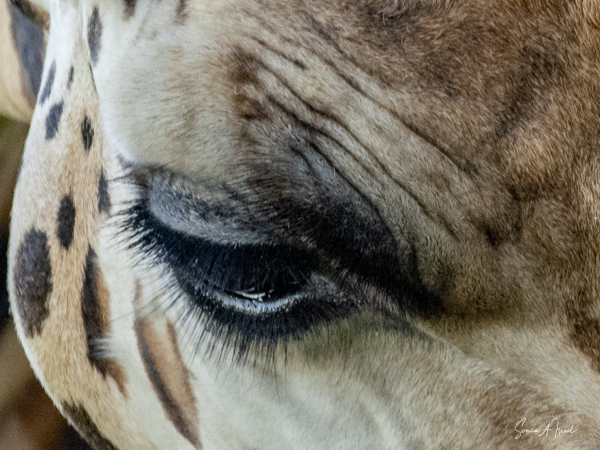
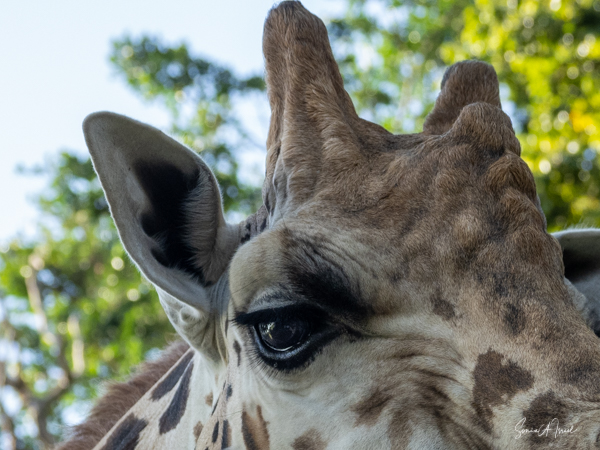
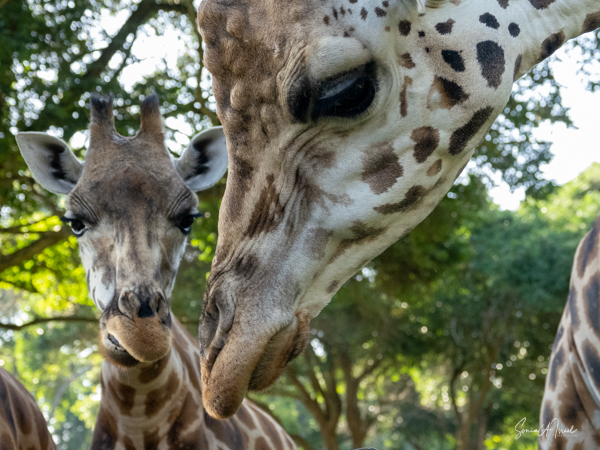

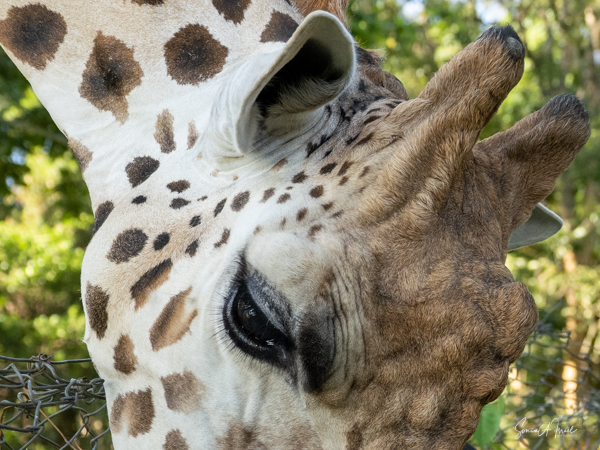
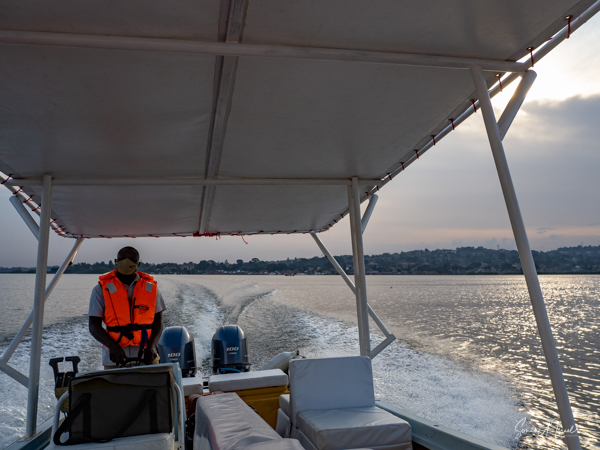
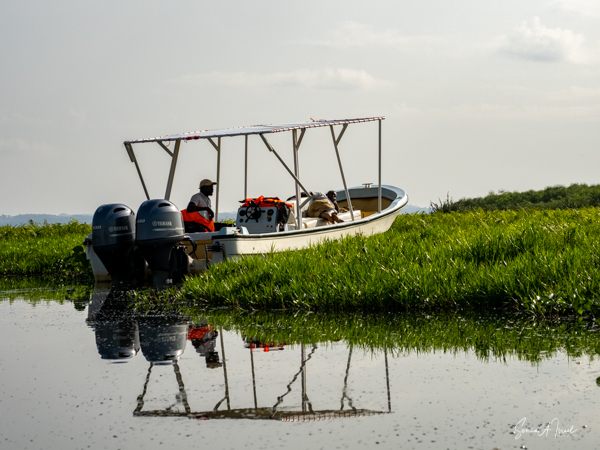

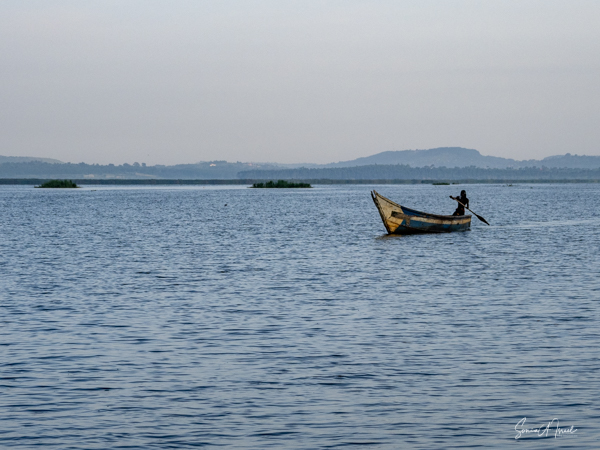
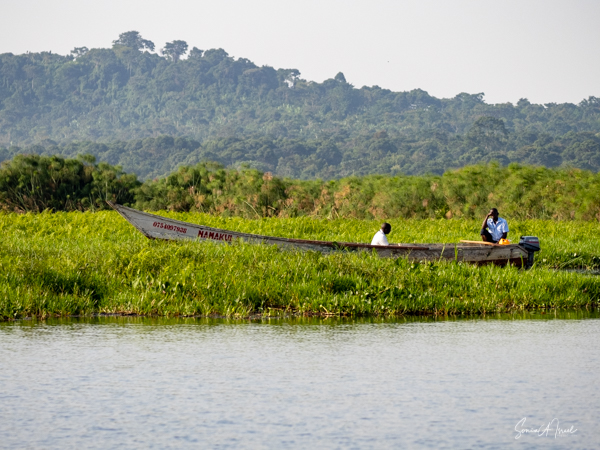
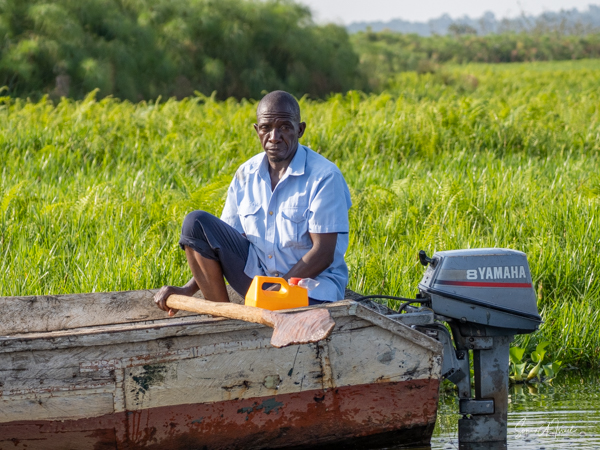

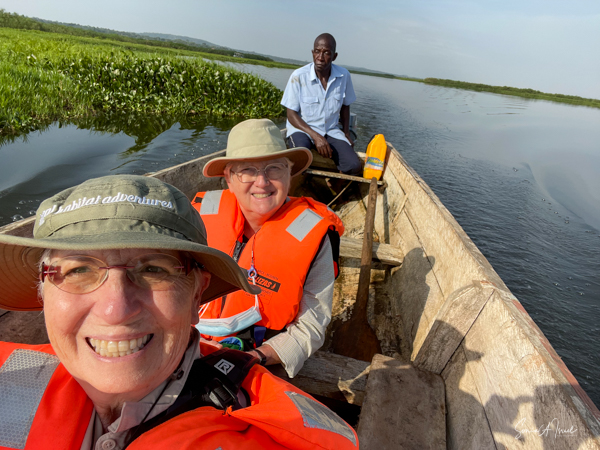
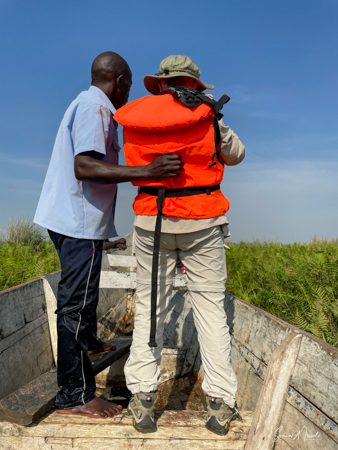
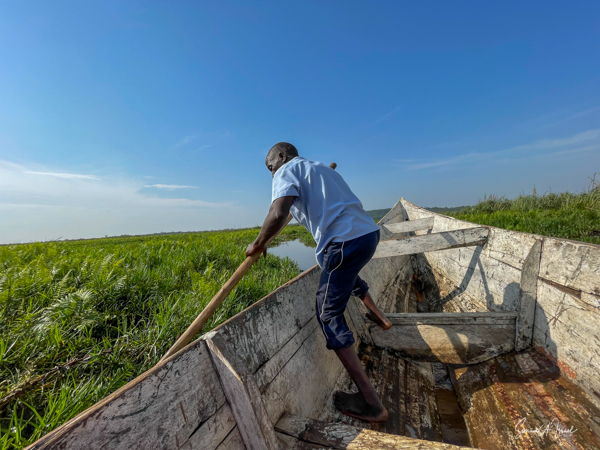
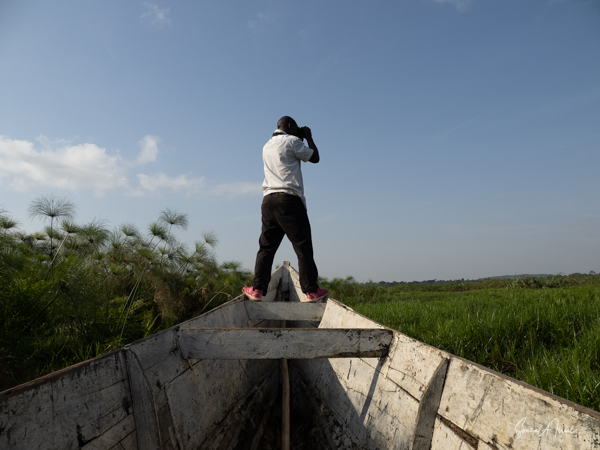
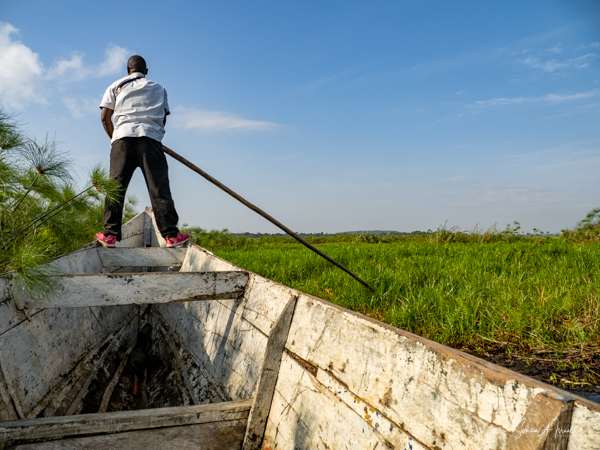
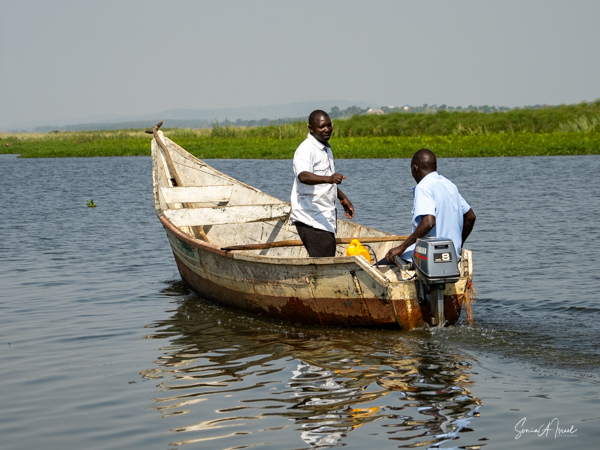
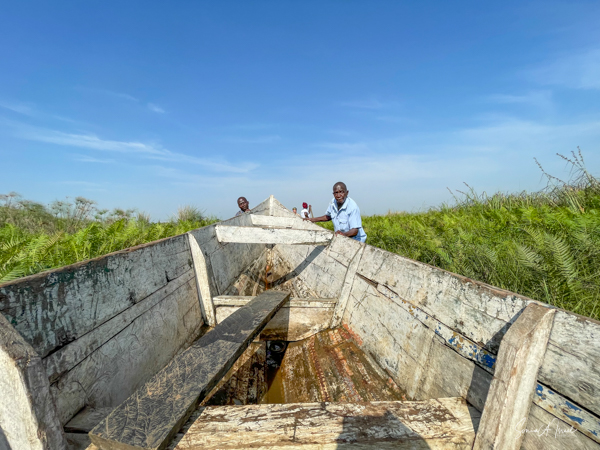
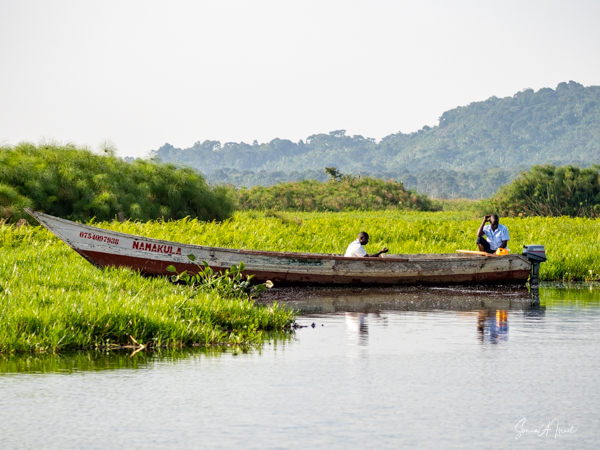
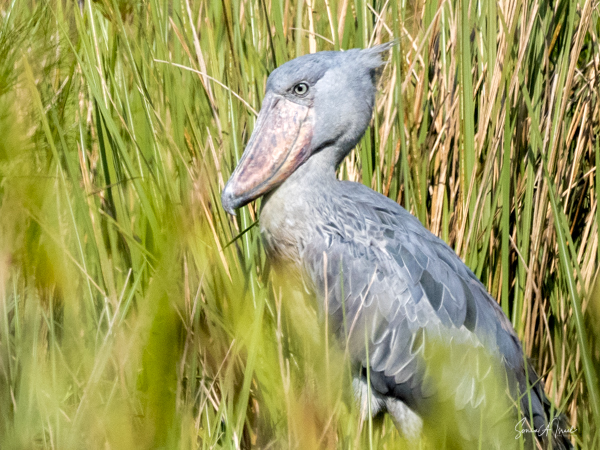
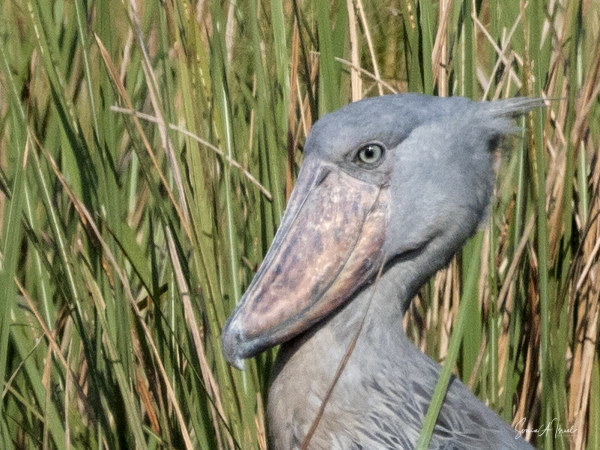
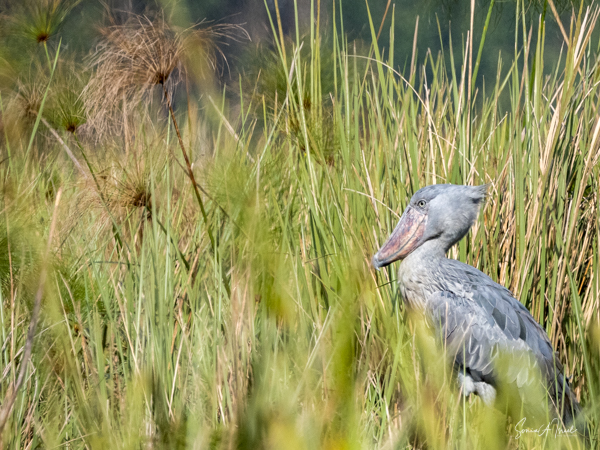
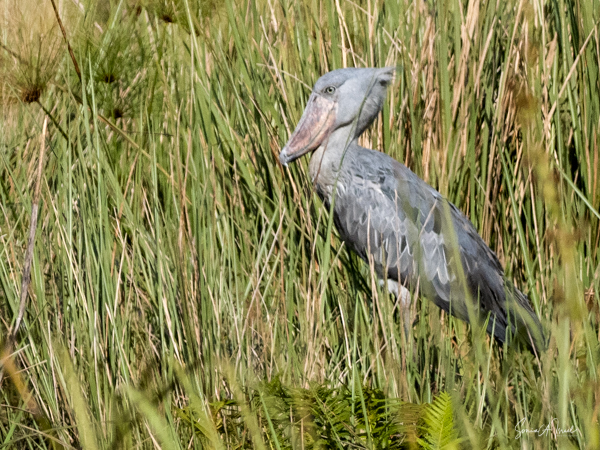
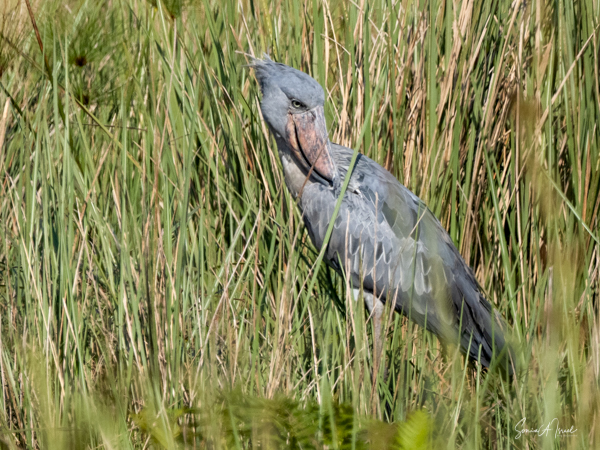
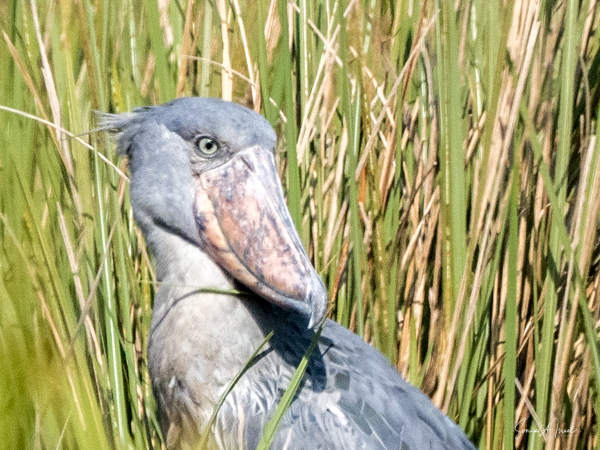
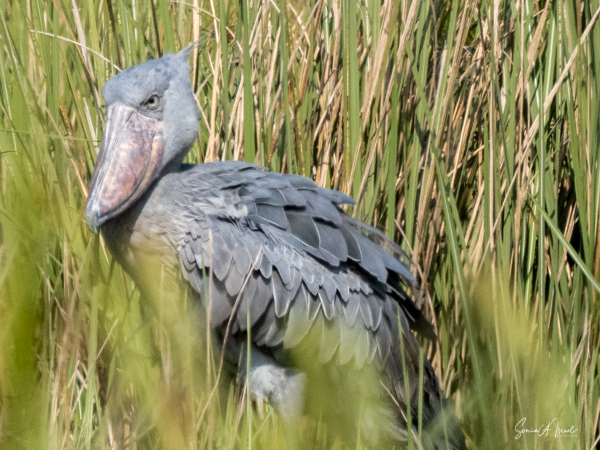
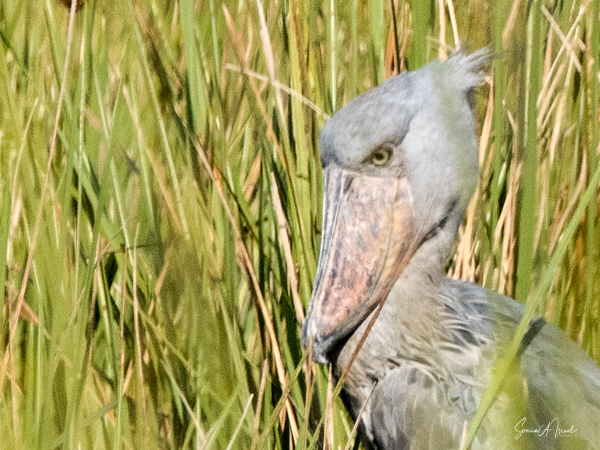
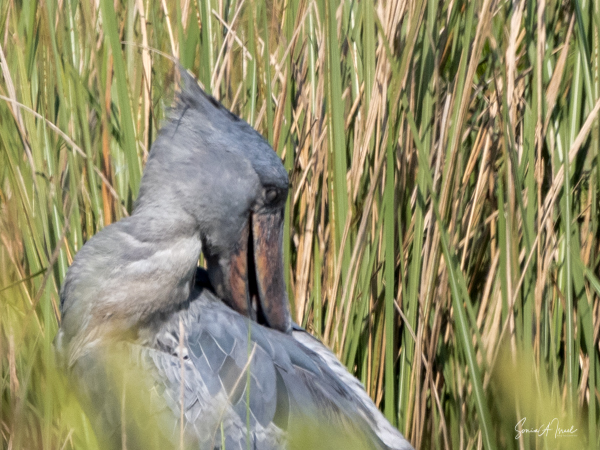
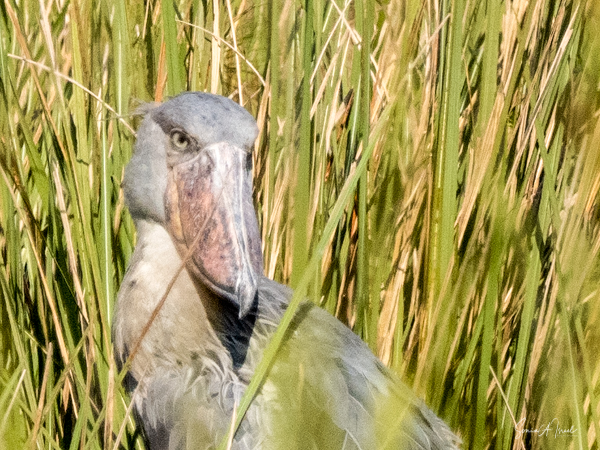
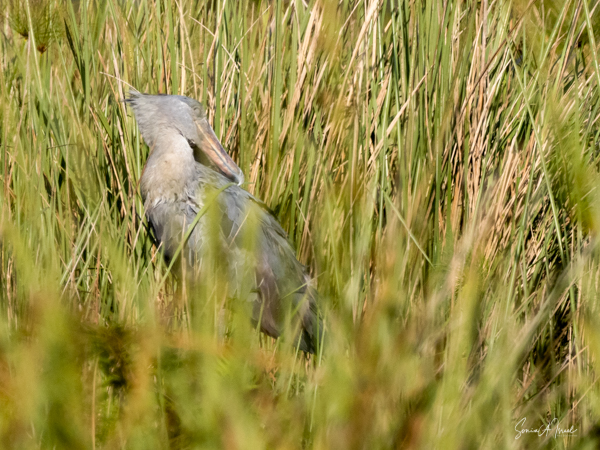
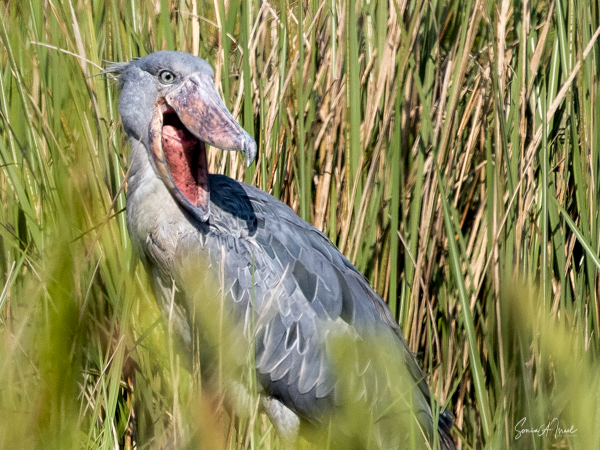
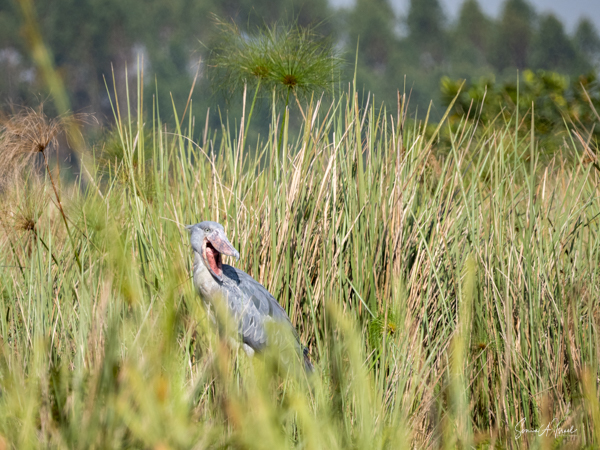
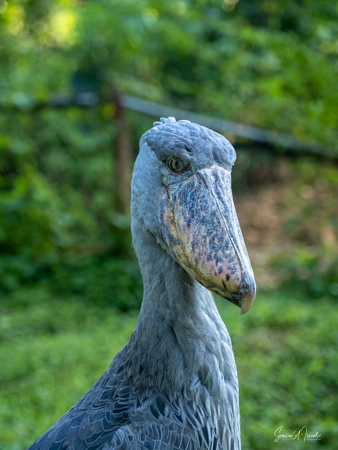
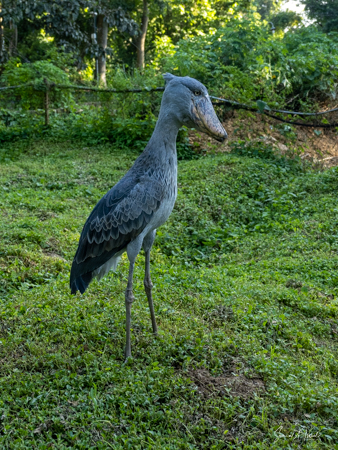

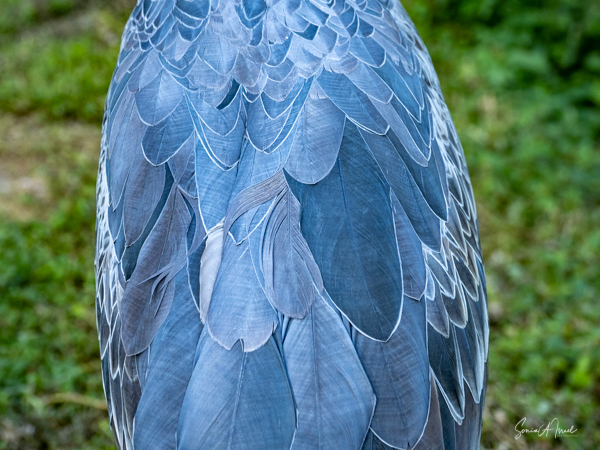
Kimberly Gourley
Wonderful read! I’m so excited I leave in 20 days. We are also going into Rwanda and seeing the golden monkeys.
Shari Schenk
Sonia, I always enjoy your travel blog, and this was the best one ever! Thank you for bringing Uganda, and especially the chimpanzees and the gorillas, to us. I enjoyed every single photo, and felt like I was there on those treks with you. And oh how I wish I was! That photo of the gorilla with the piercing brown & green eyes is unforgettable. You need to enter it into a contest–you would for sure be a gold medal winner!
Susan Baxter
What a wonderful way to start my day, reading this blog entry! What a journey you took. The kingfisher photos are breathtaking and the shoebill petting was marvelous. There is a cranky (?) shoebill at the wild animal park in Escondido that I always seek out. We watched him for an hour one morning as a new, young keeper tried to get him to eat. He was not having it from that newbie!
ruthi warburg
Another amazing travel log. Your pictures were outstanding as always and your descriptions brought the sights to life. Thanks so much for sharing!!
Julie Potiker
That was a gorgeous and fascinating adventure to enjoy as I sat under a blanket on my couch! I’m tired just imagining the climbing and slipping – and I know that I’ll never see those places in person so appreciate the opportunity to experience it through your intelligent eyes. Thank you!
Annie Gilbar
I have traveled a bit- sometimes in person, sometimes in my dreams, sometimes through films – and I have been a magazine editor who has published hundreds of photos – never, ever, have I seen anything like these masterpieces. The scenery is spectacular; the animals so alive they seem to touch my hands and my soul. Since I will never make this trip, in person, I feel so lucky to be able to experience these tour de force treasures through these classic gems that are truly jewels. Thank you, Sonia, for sharing these showpieces, these unforgettable eyes to the world.